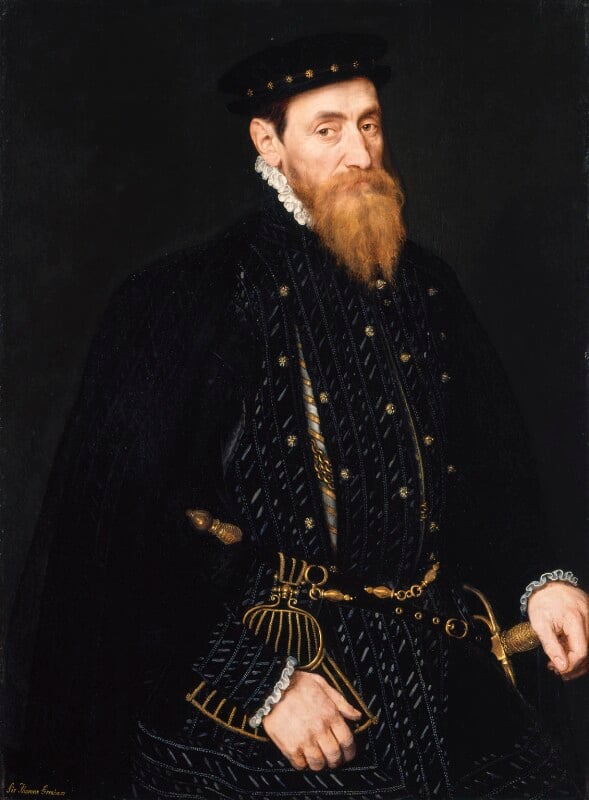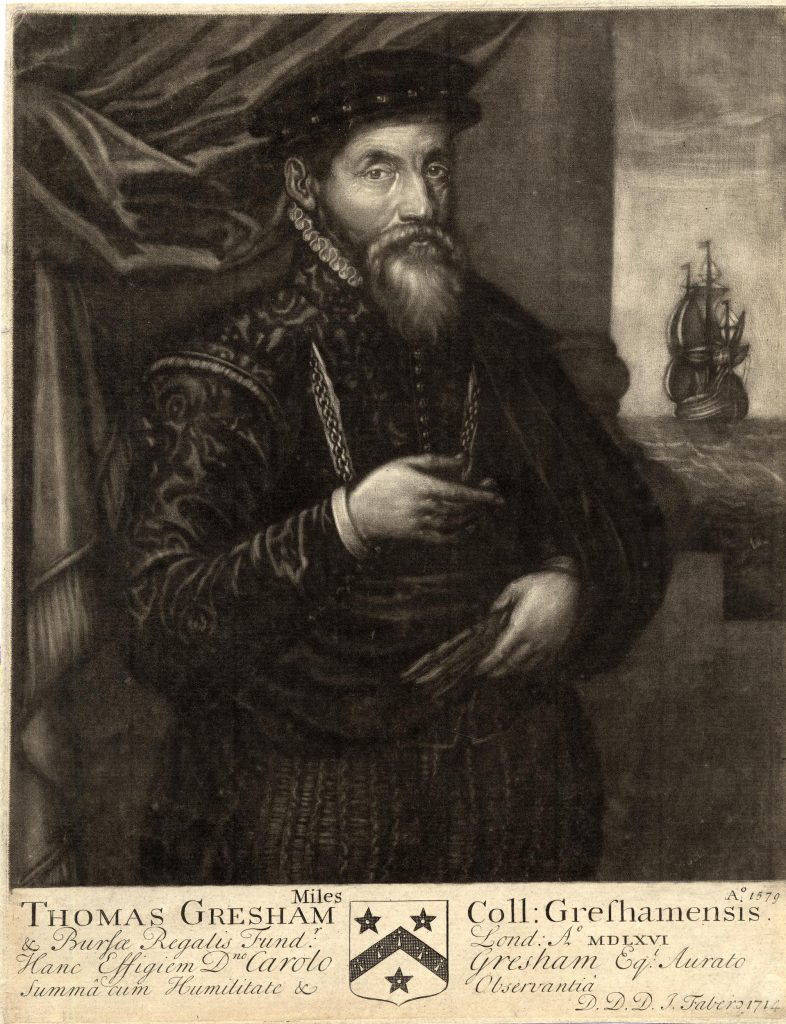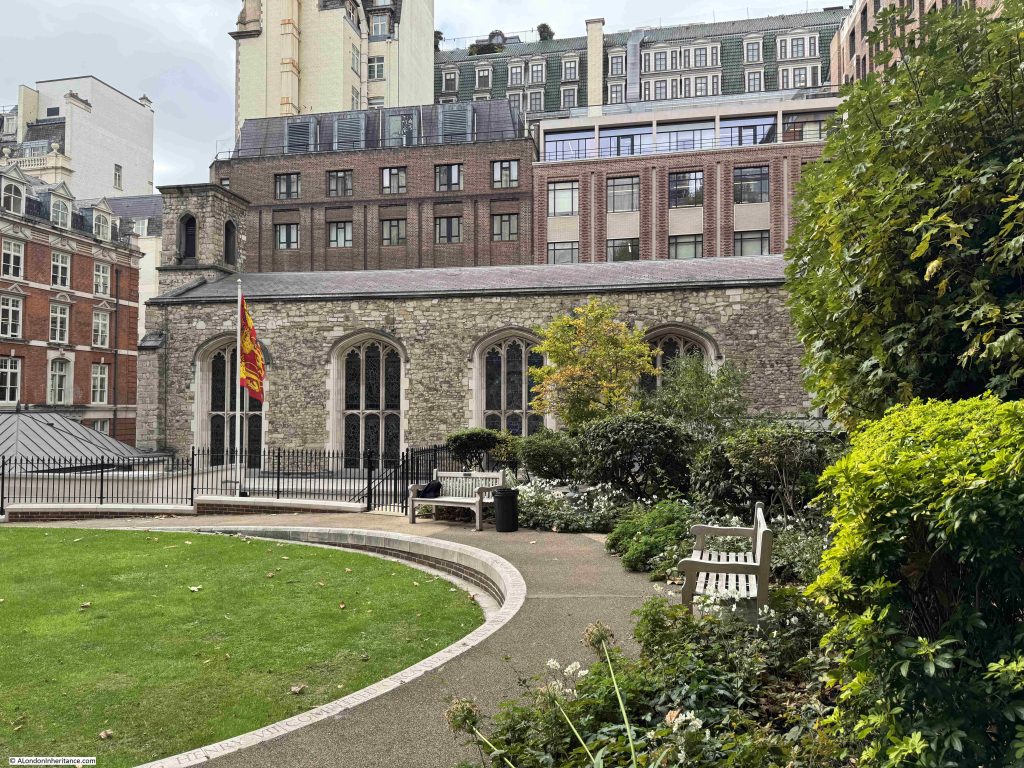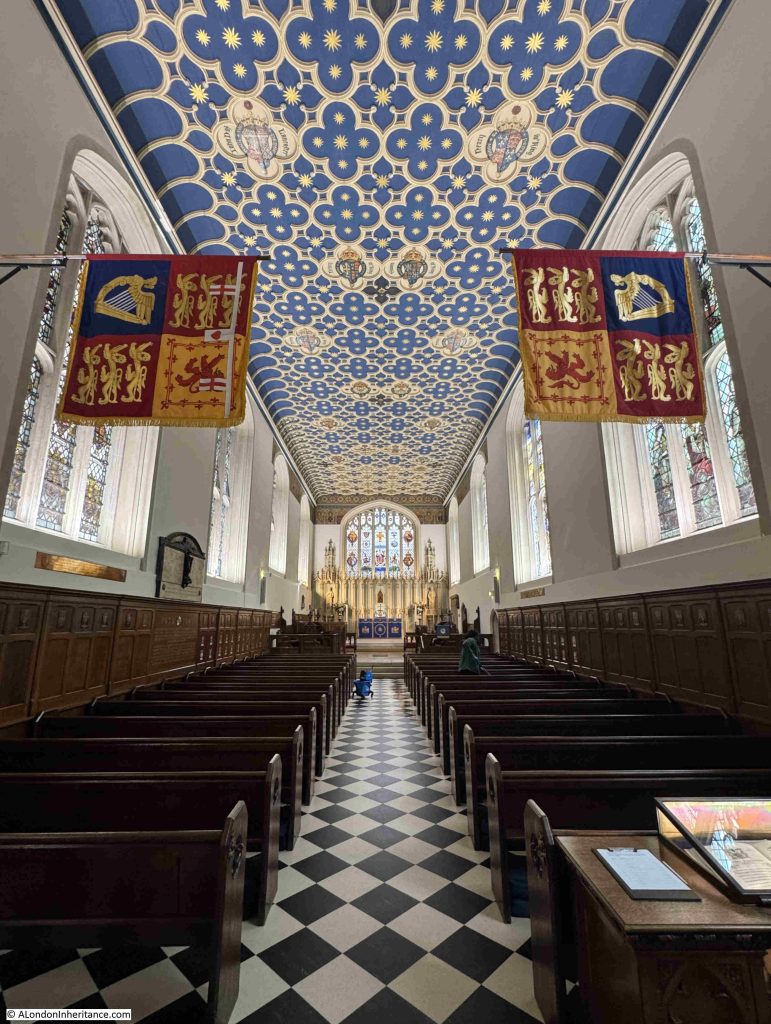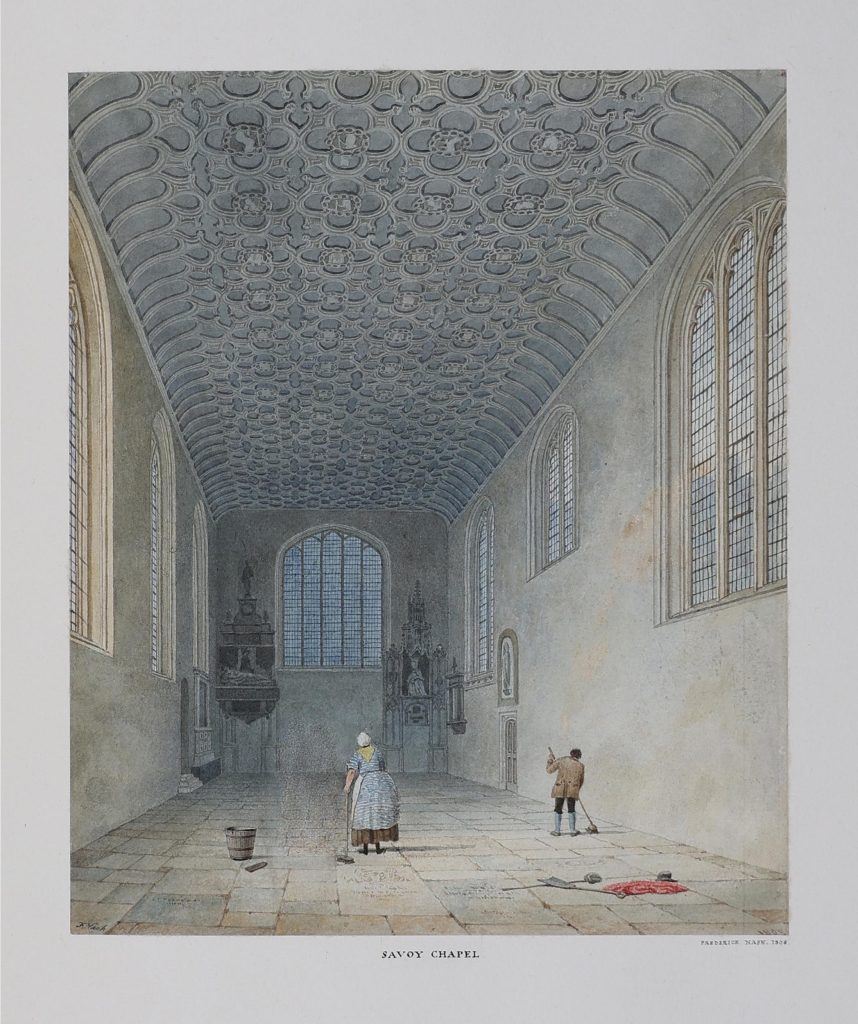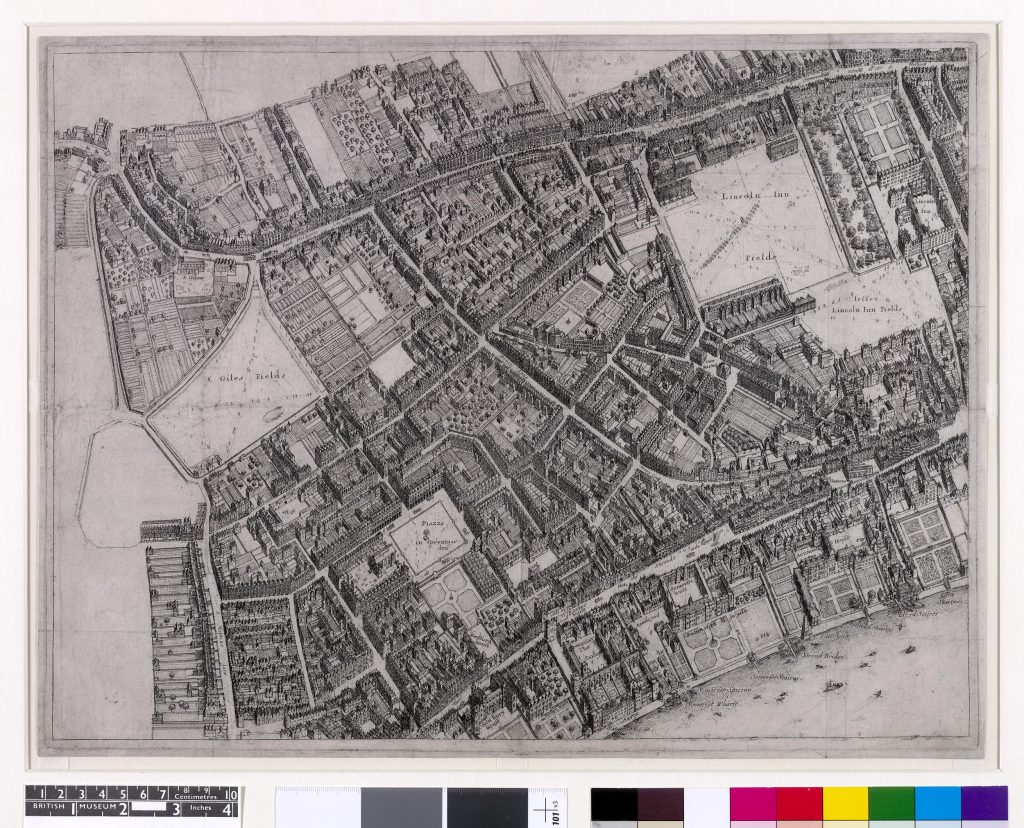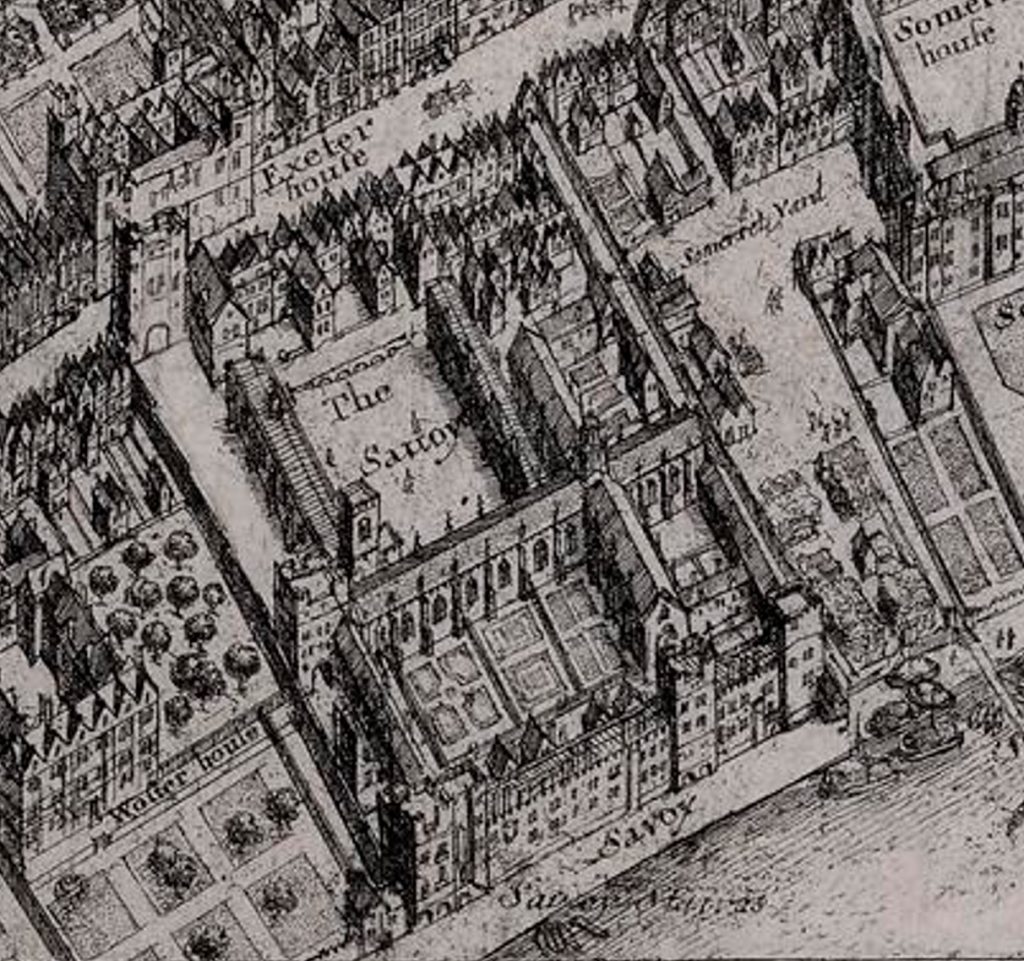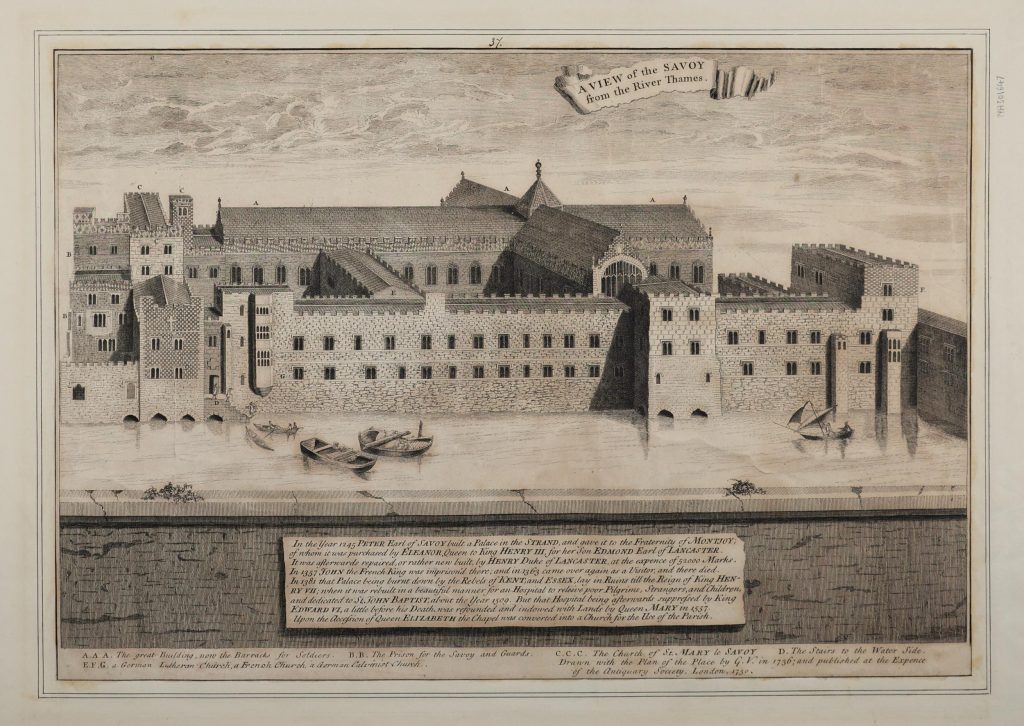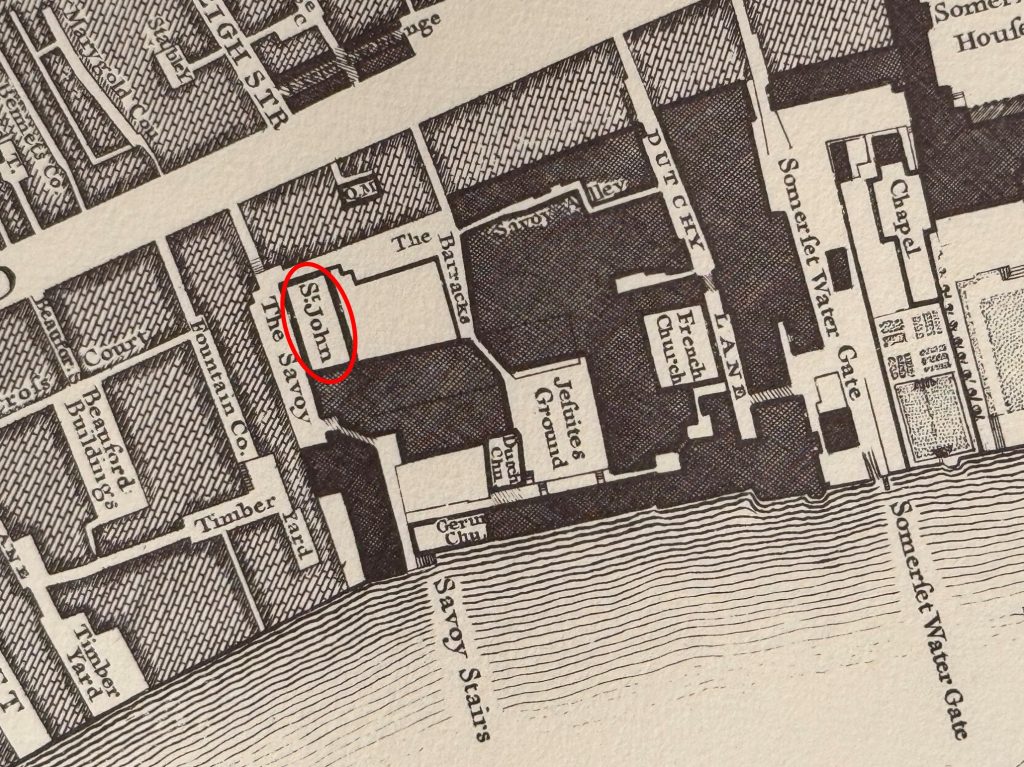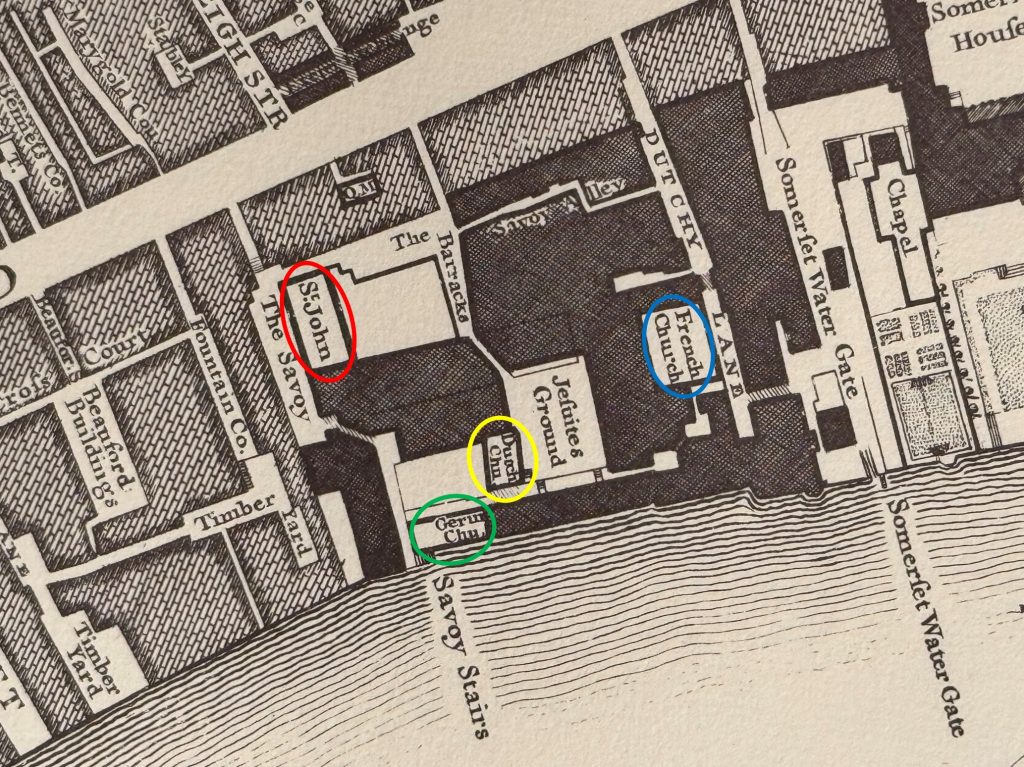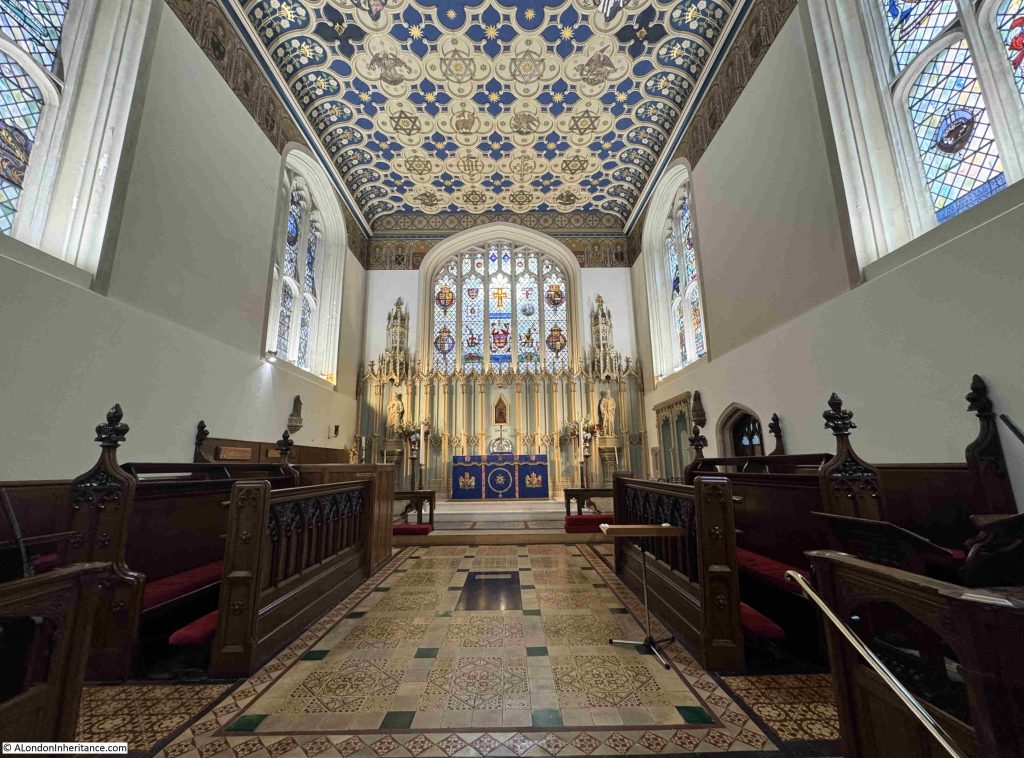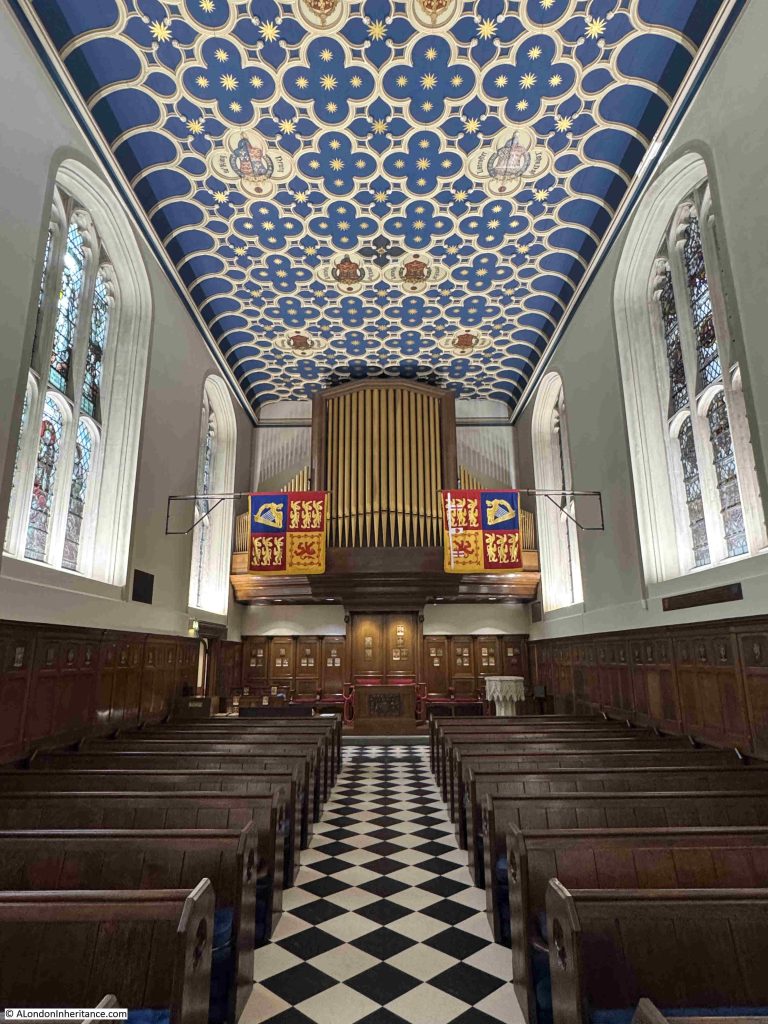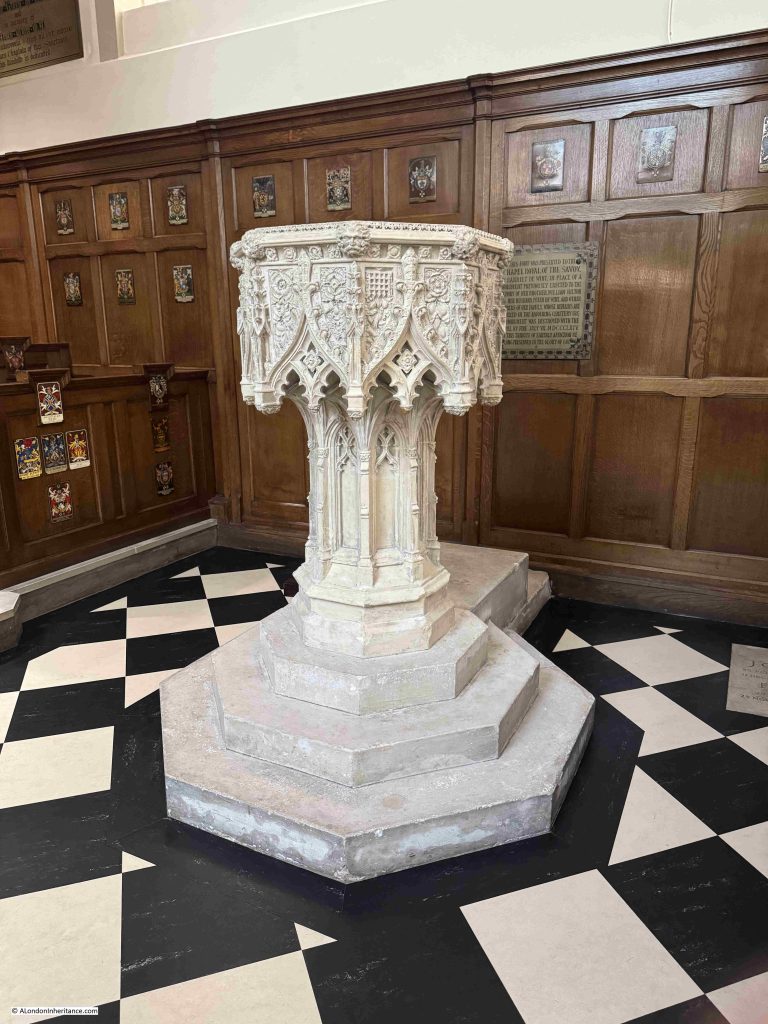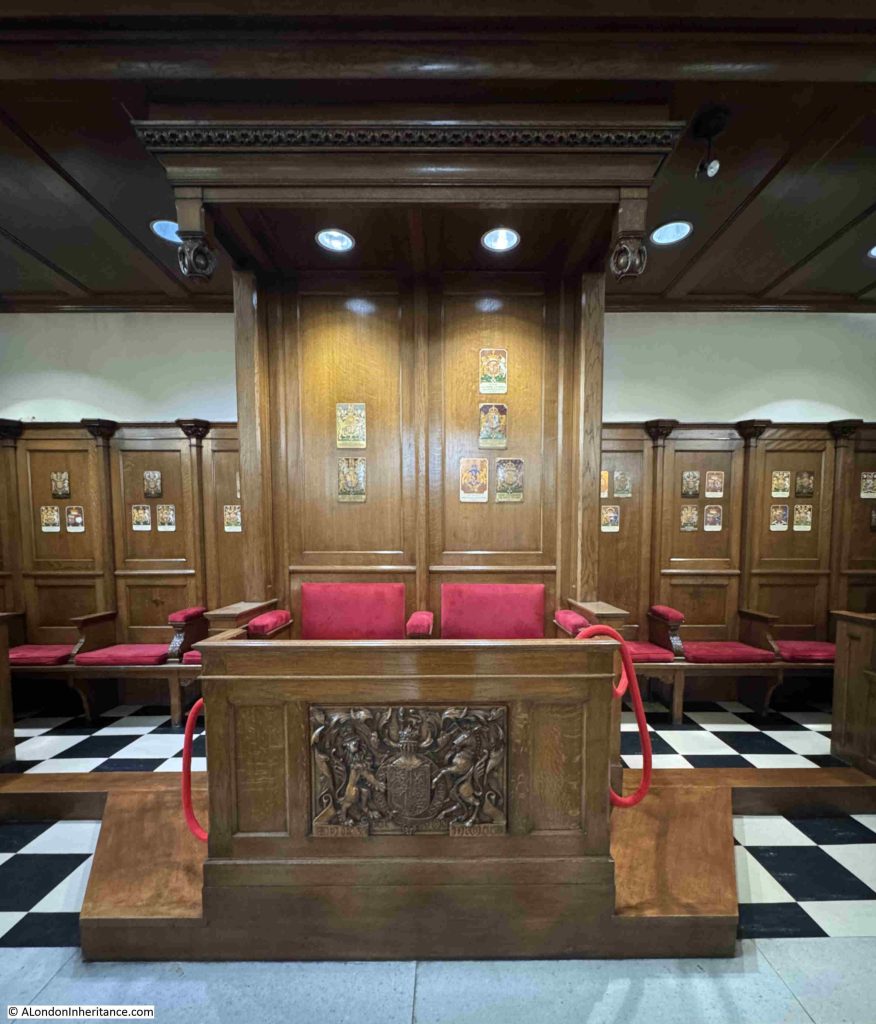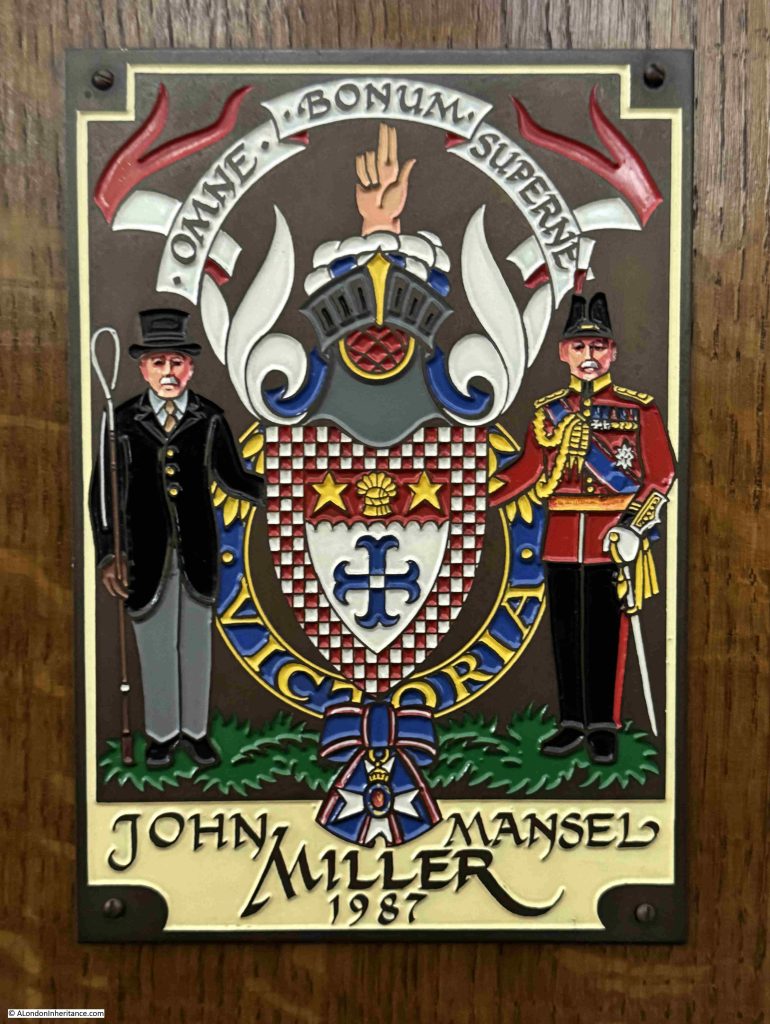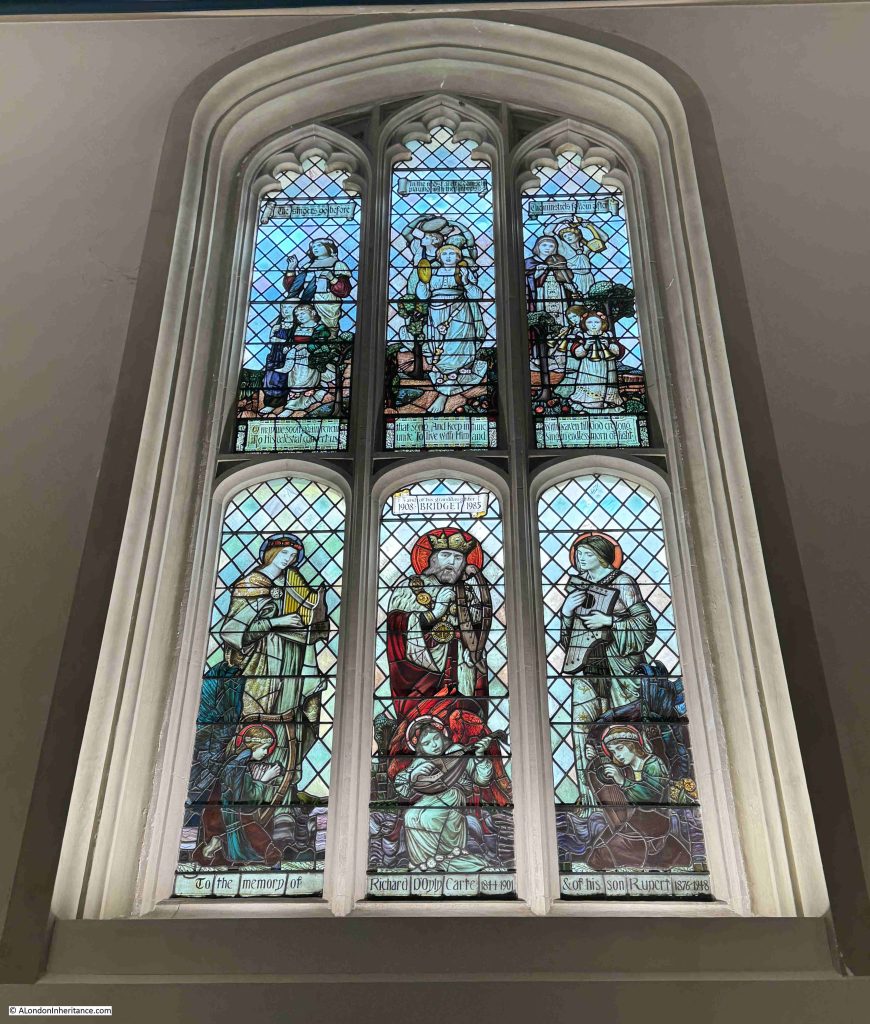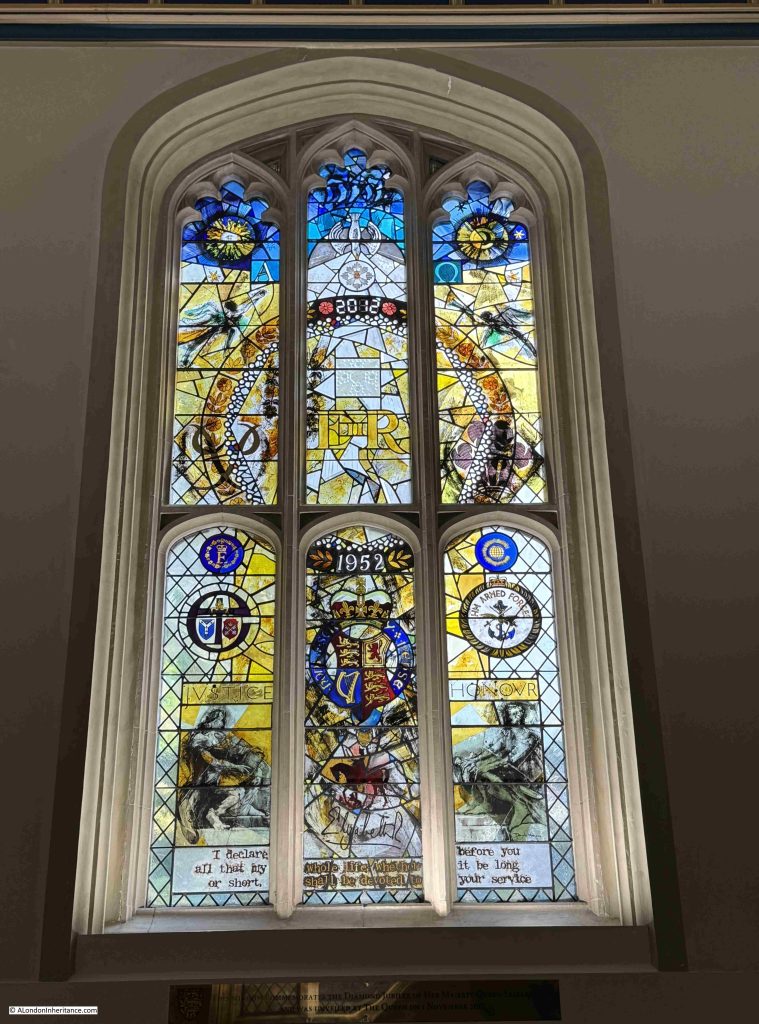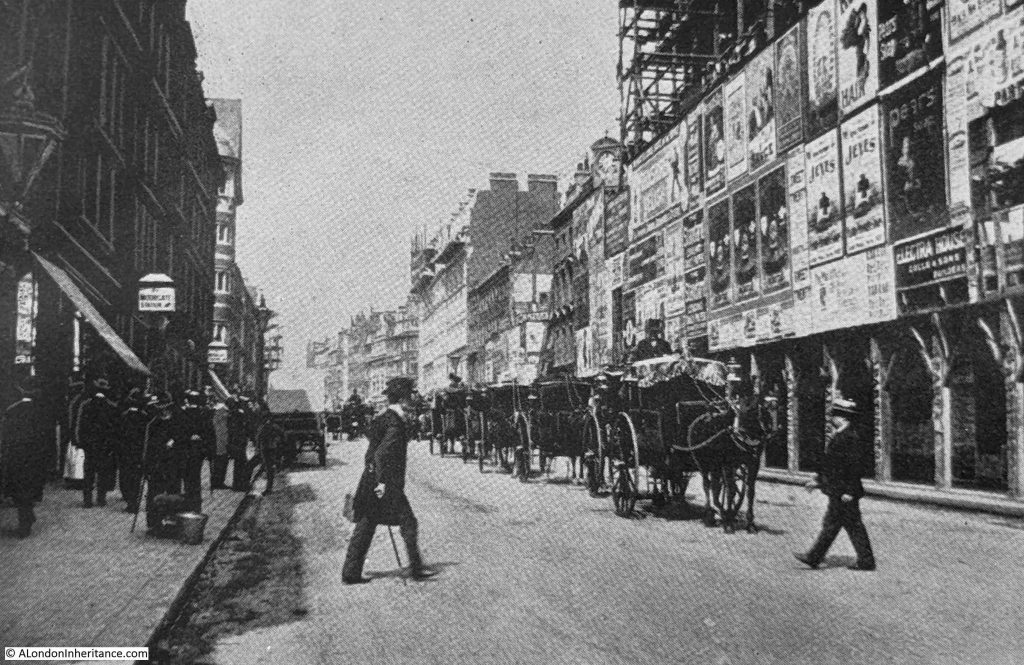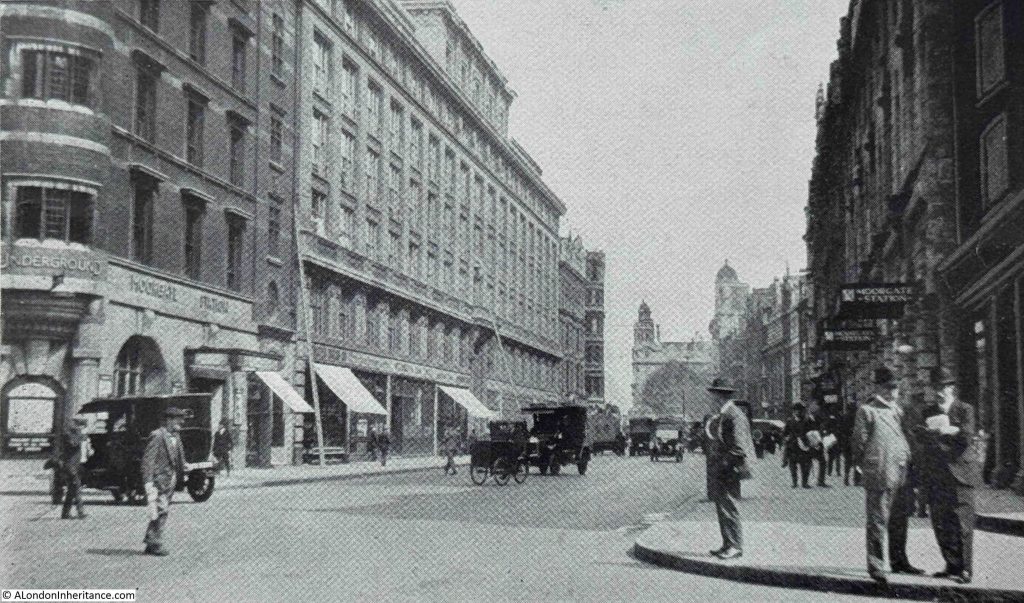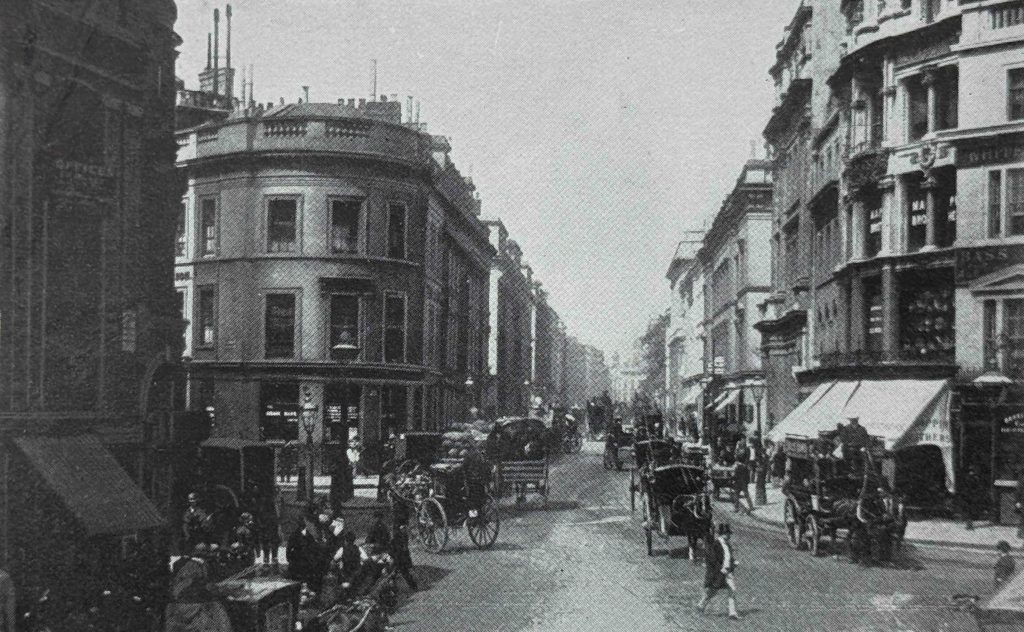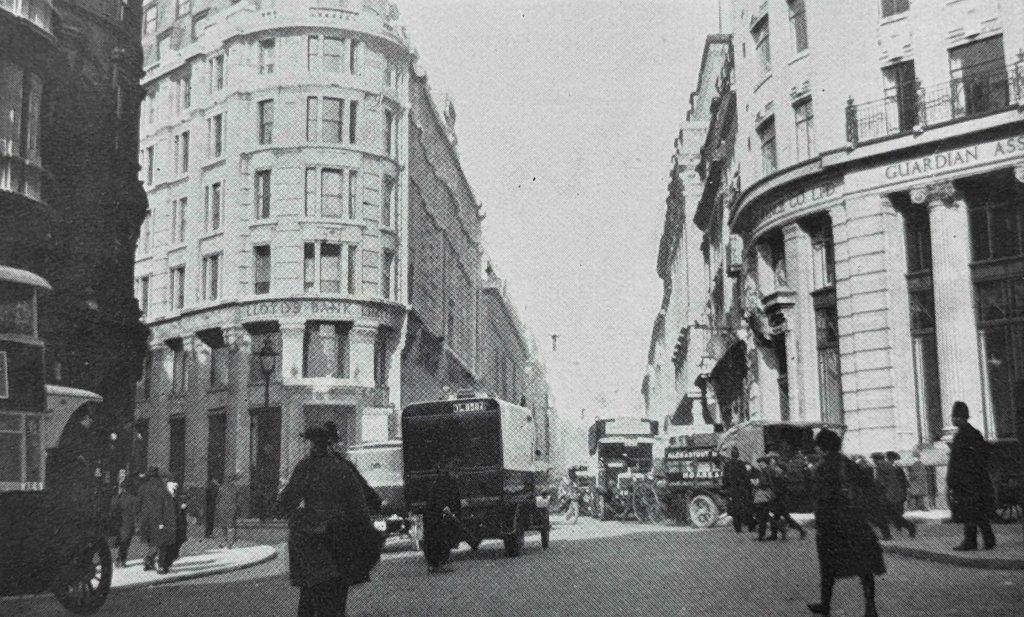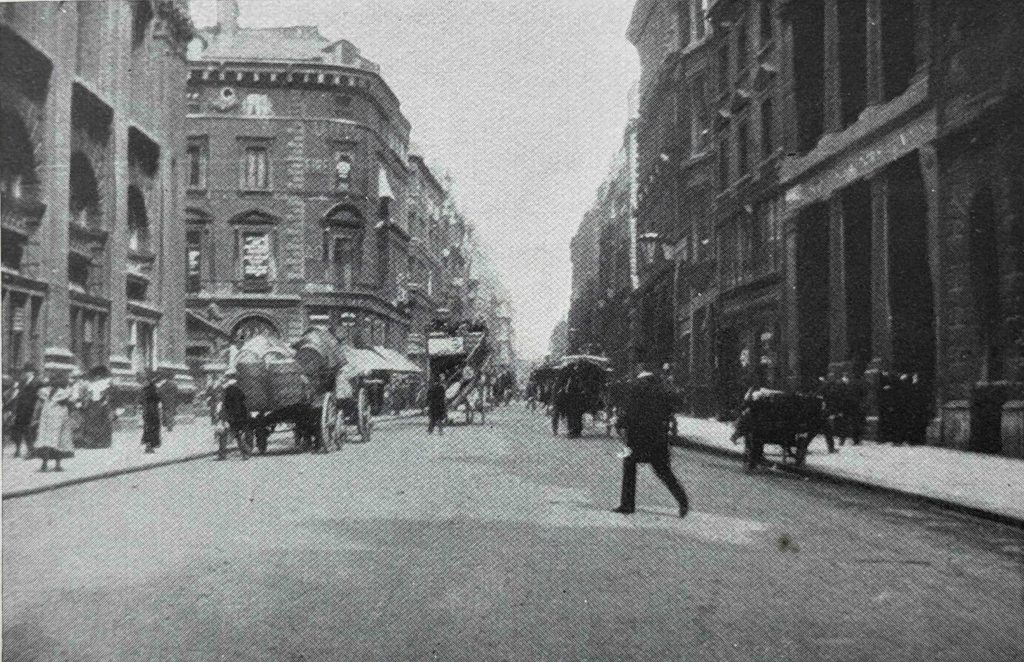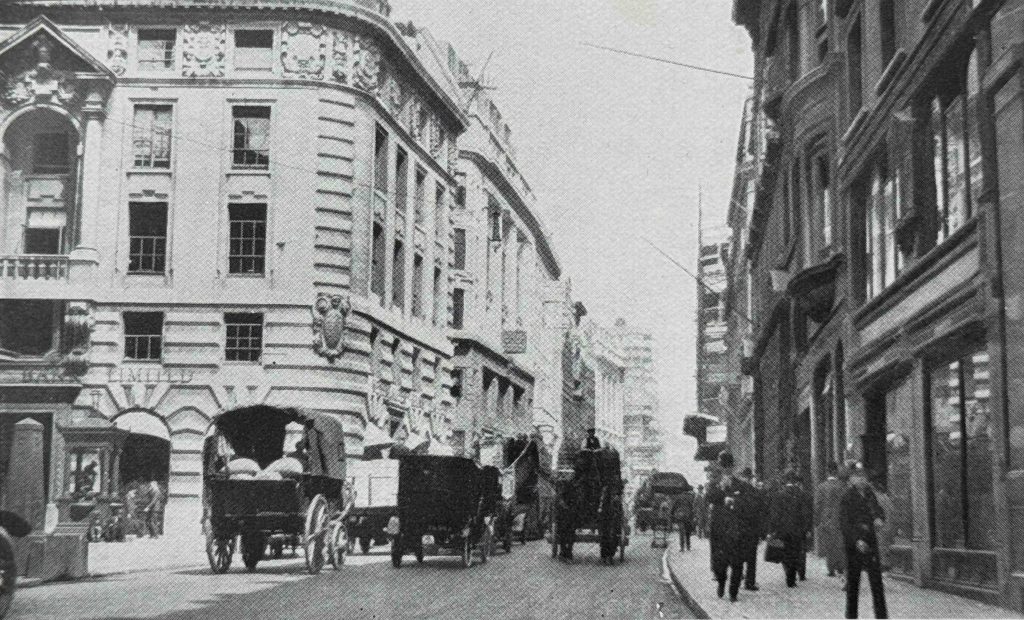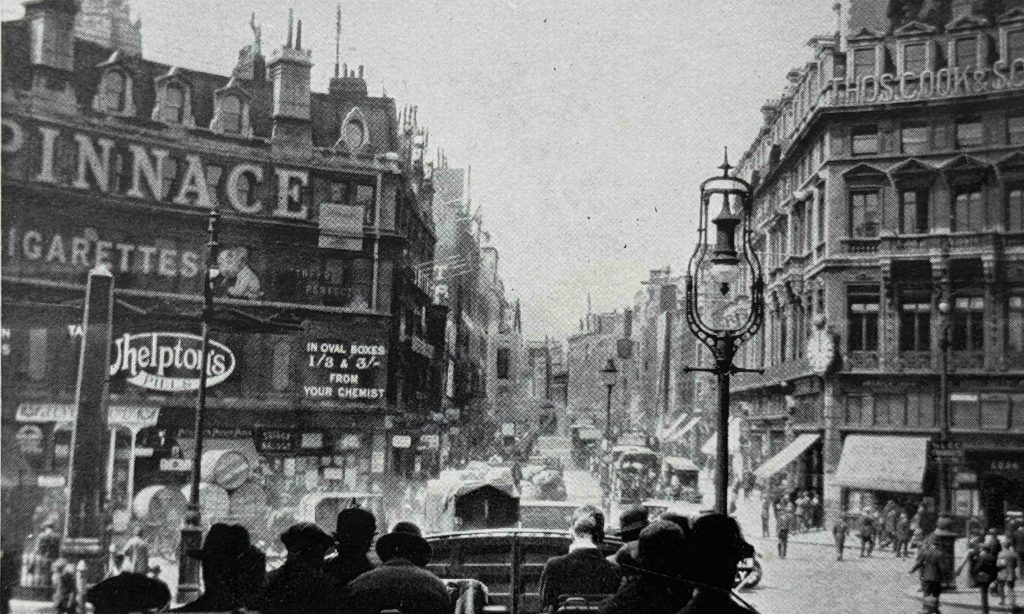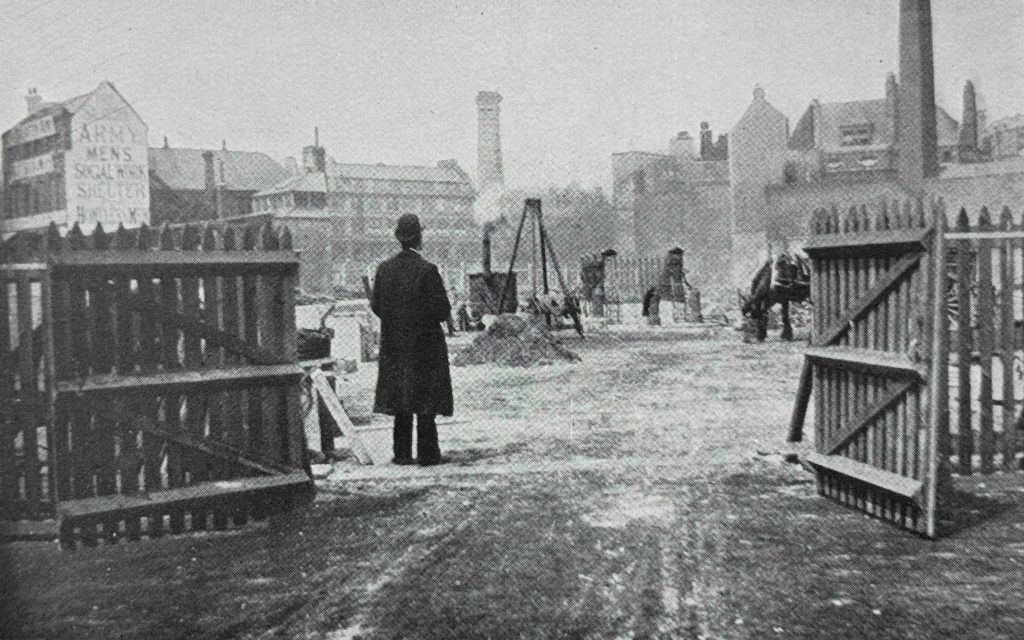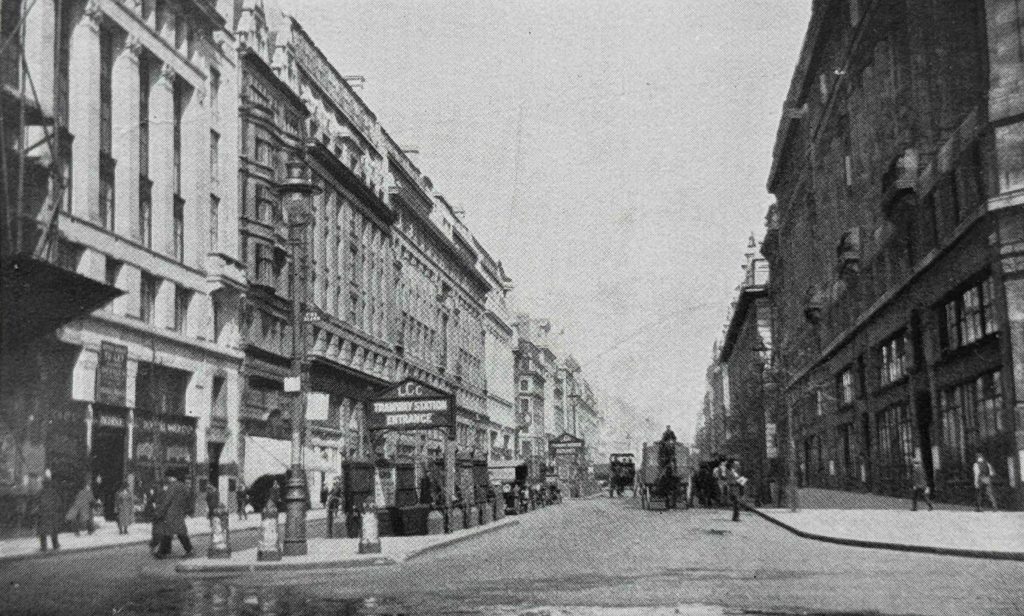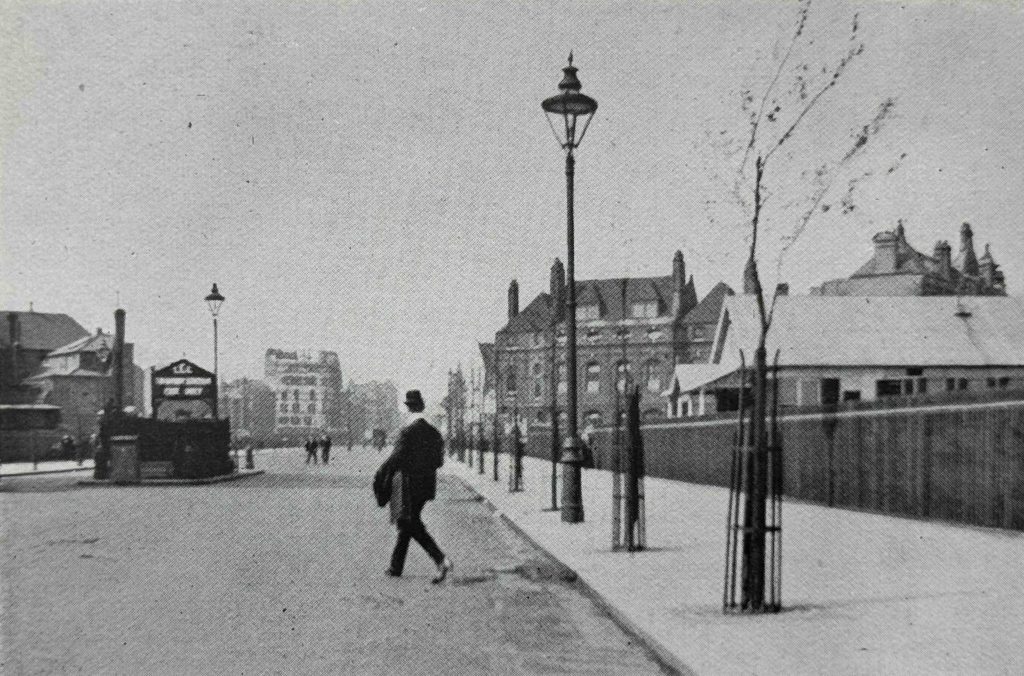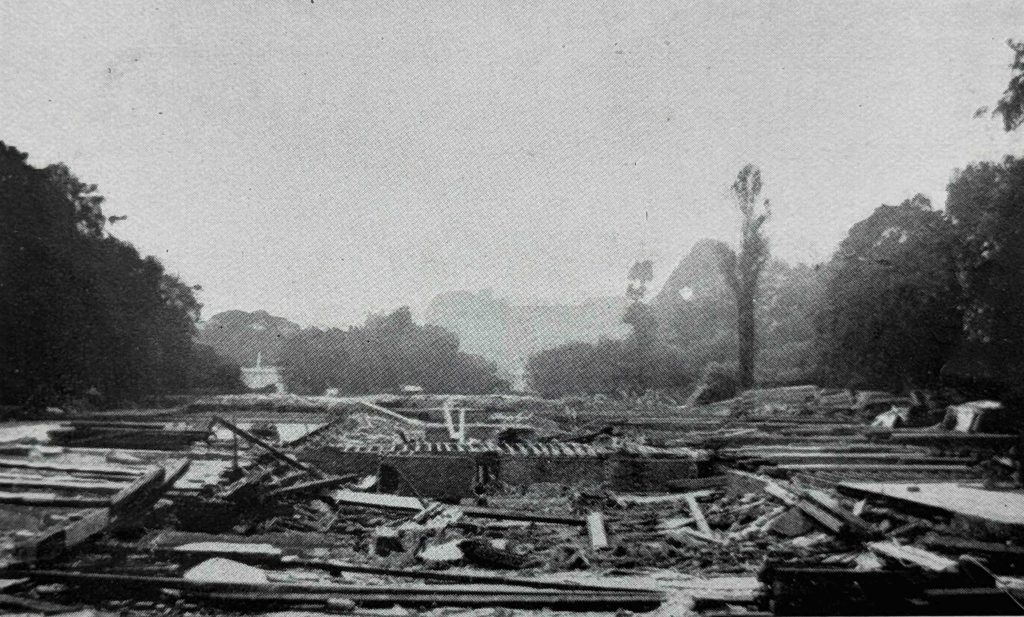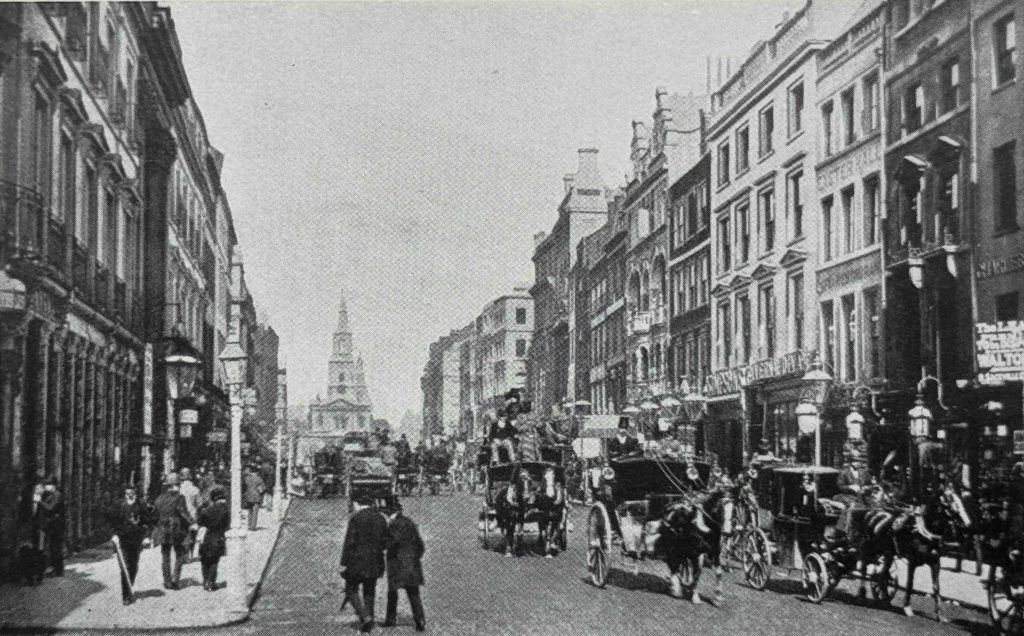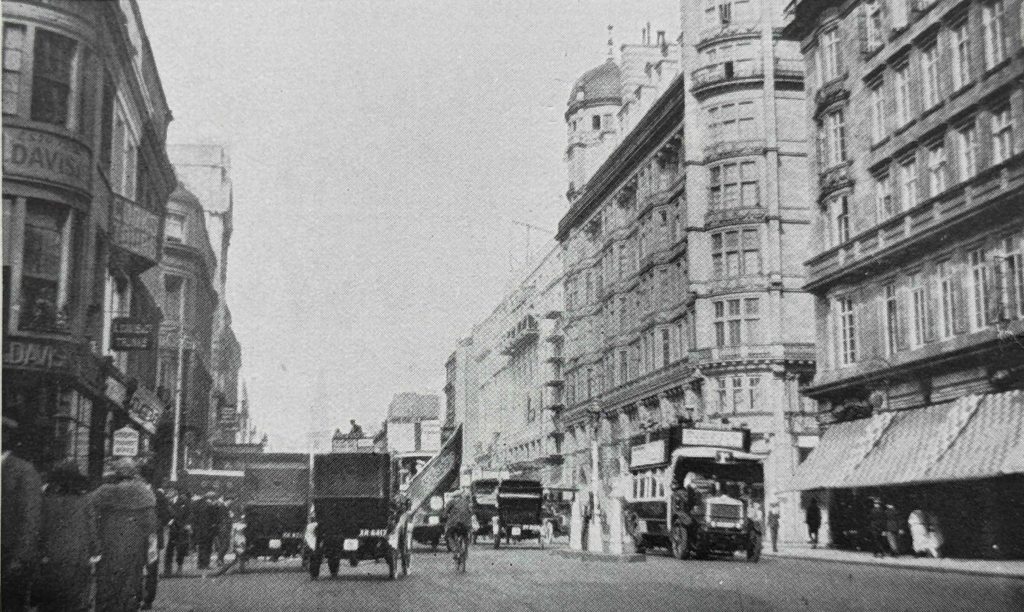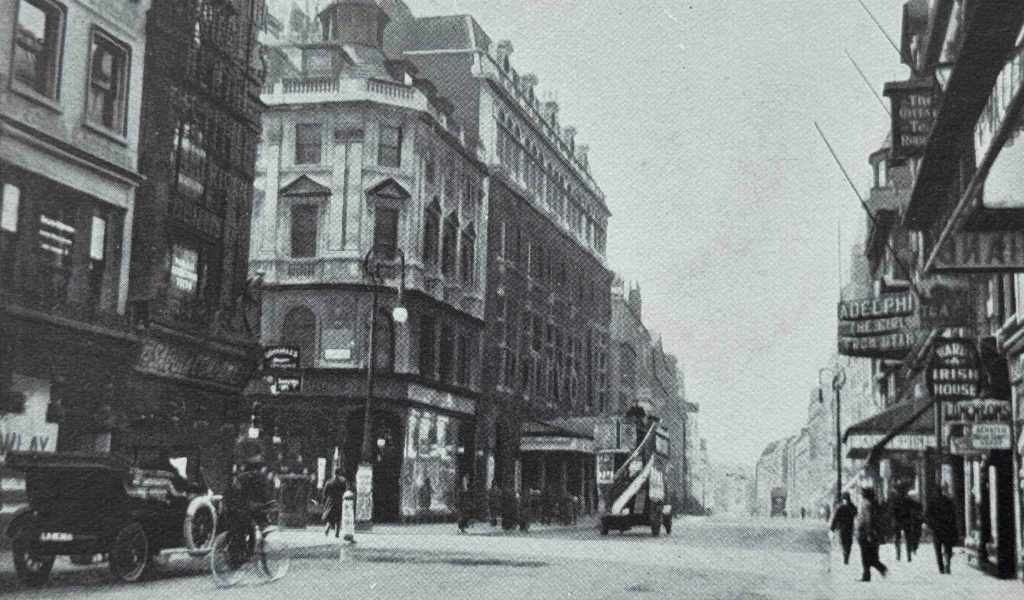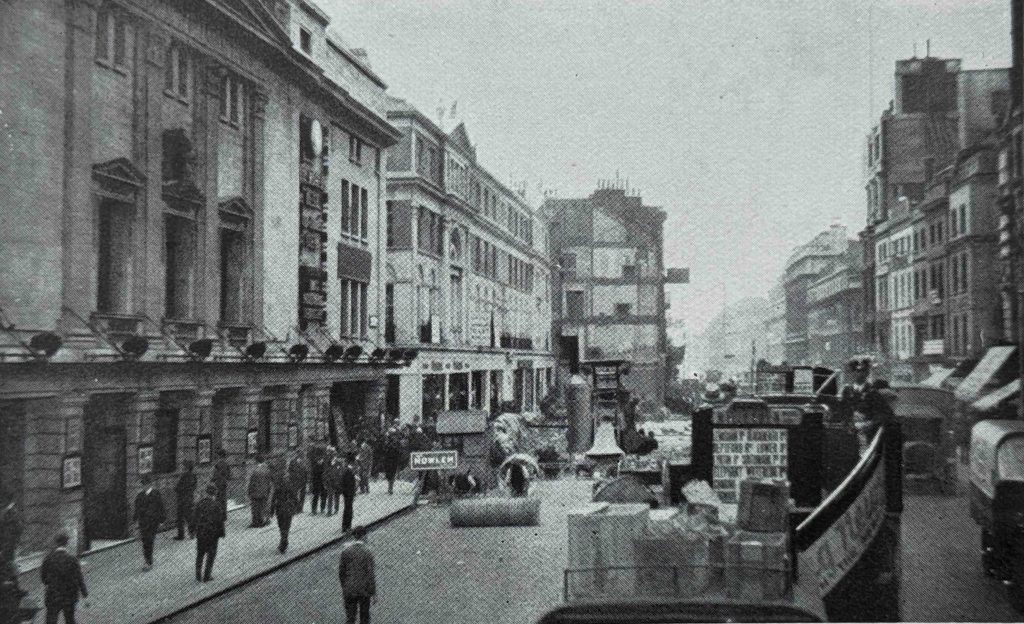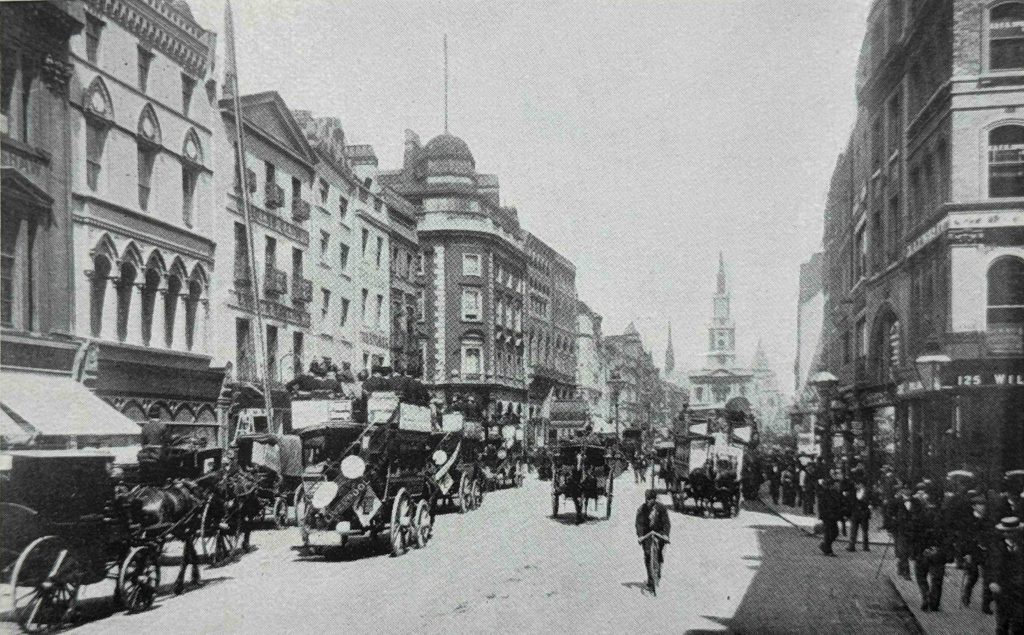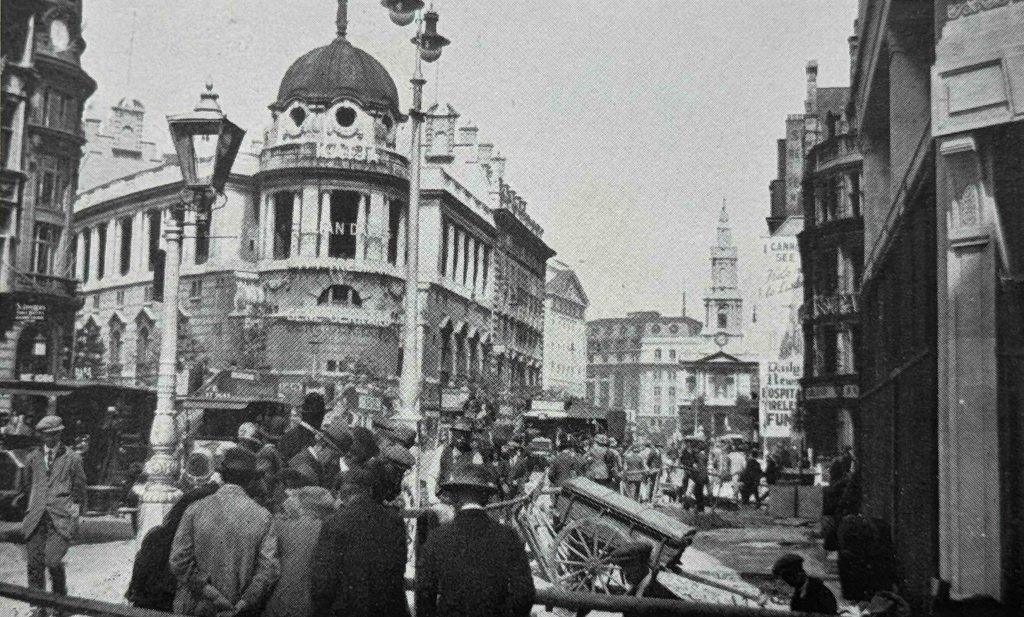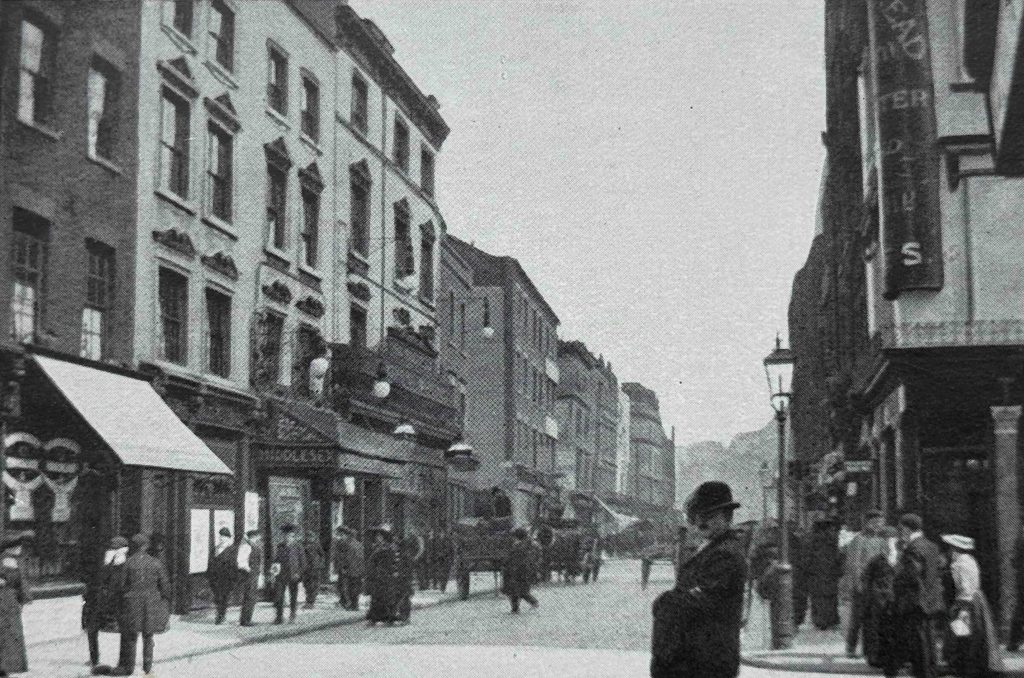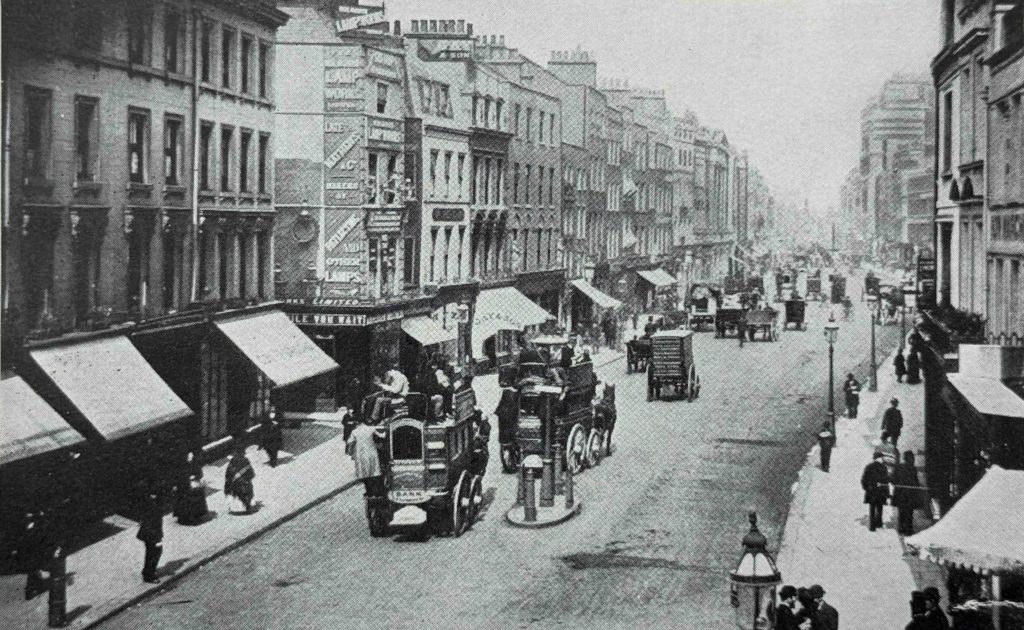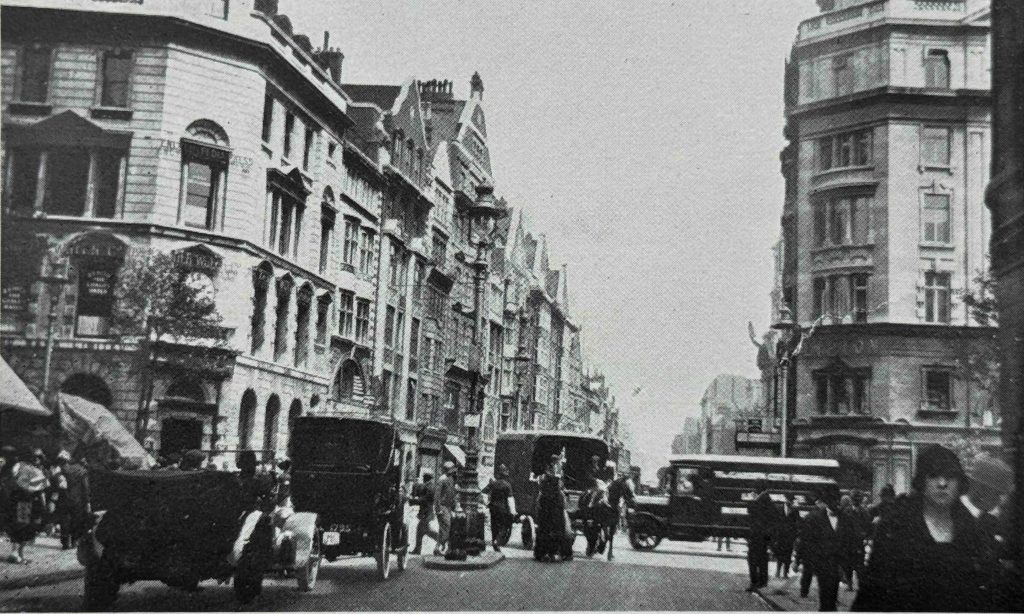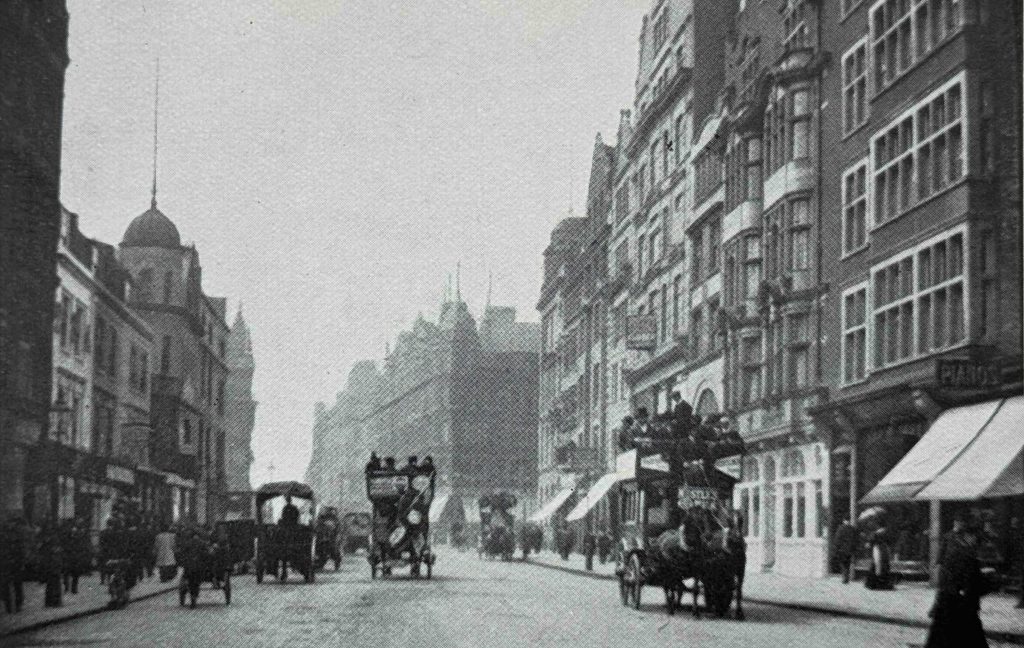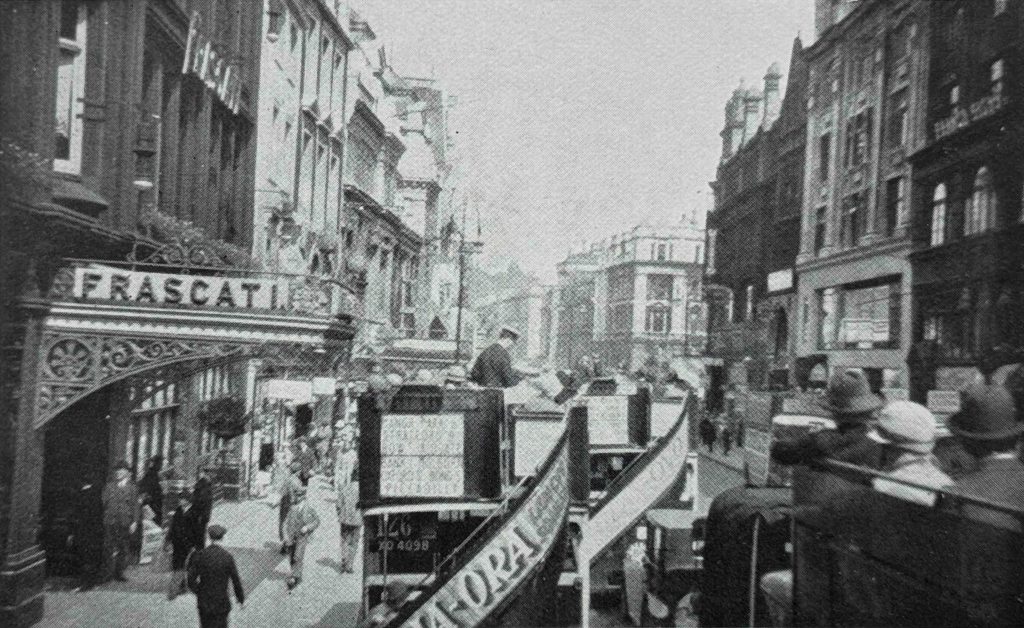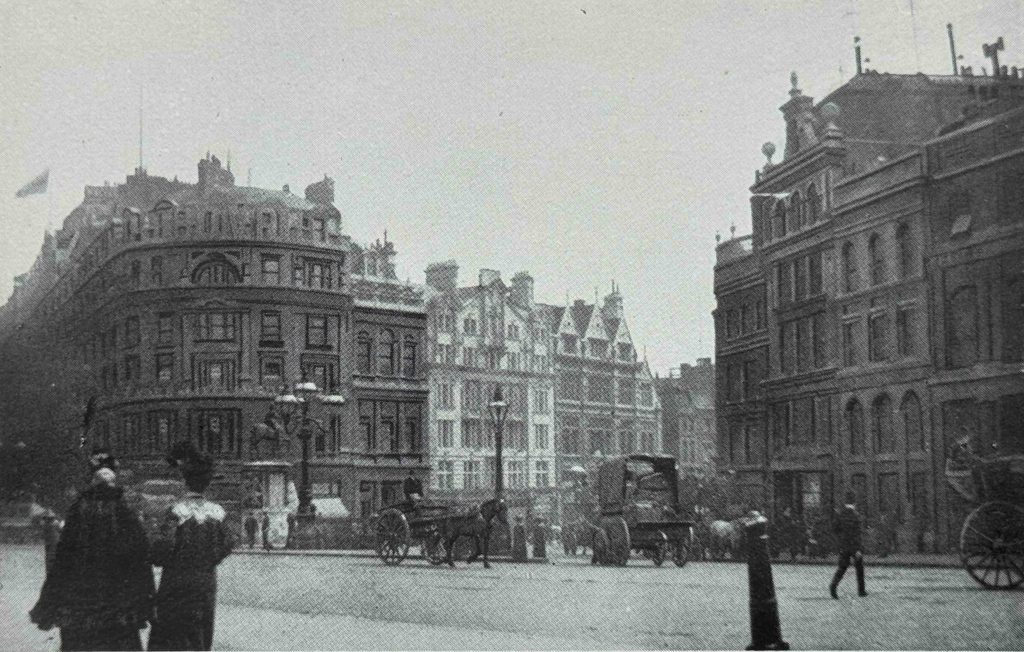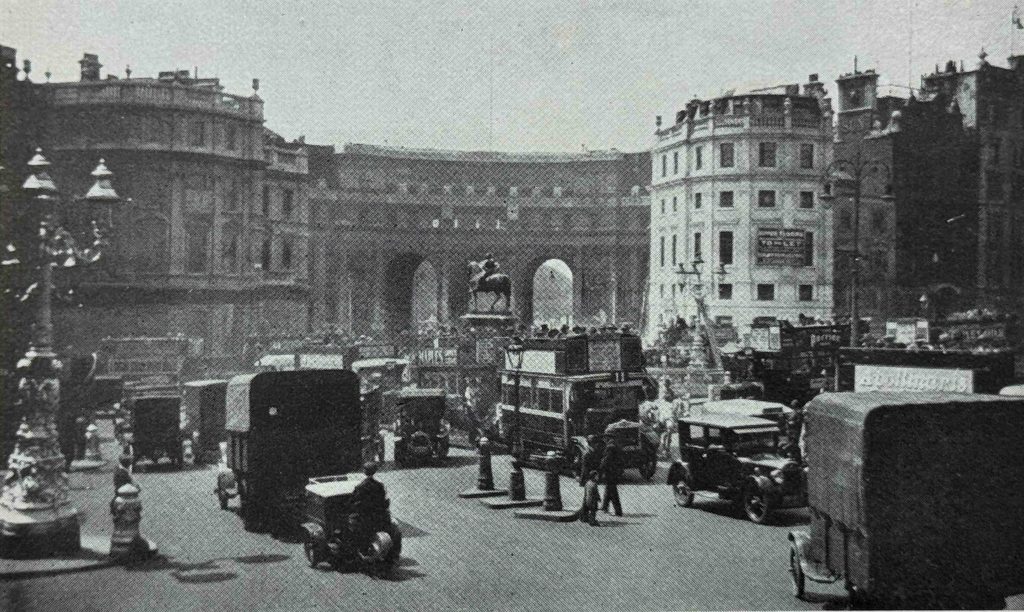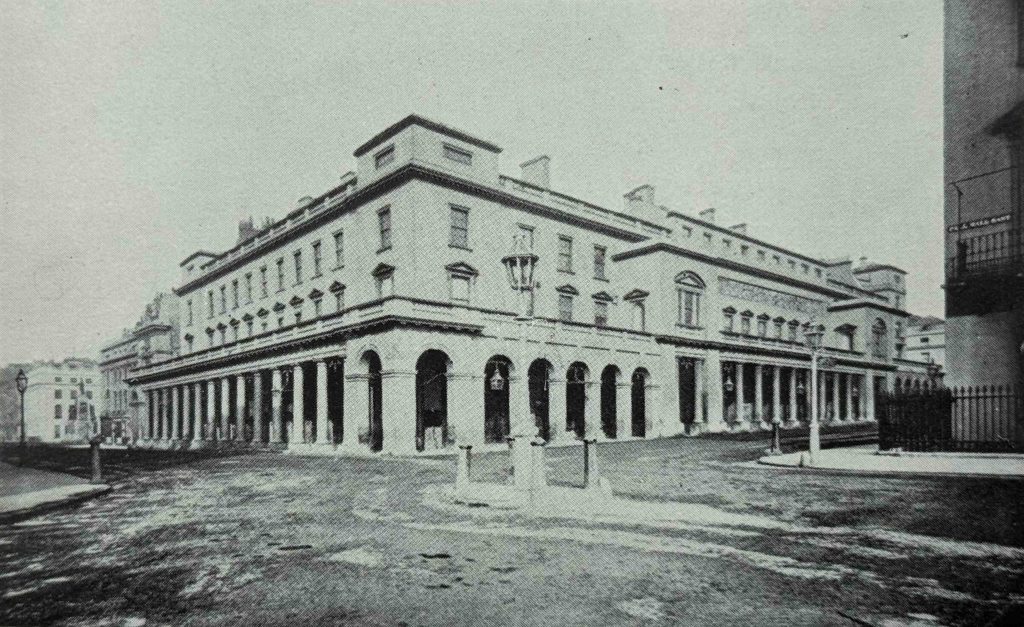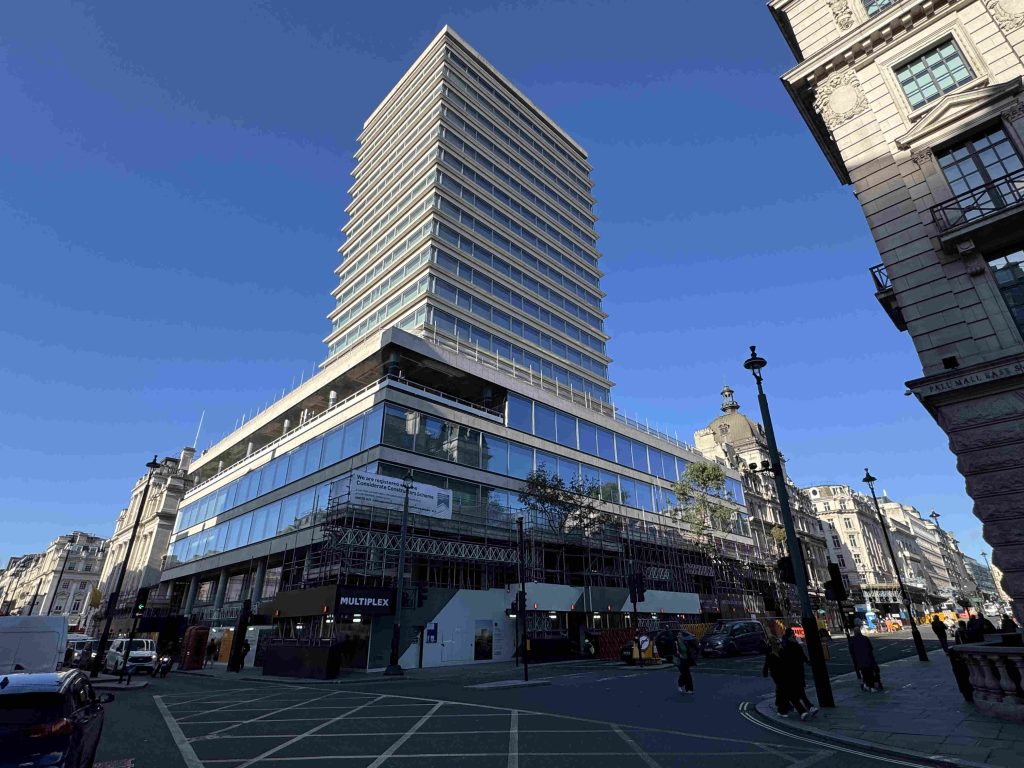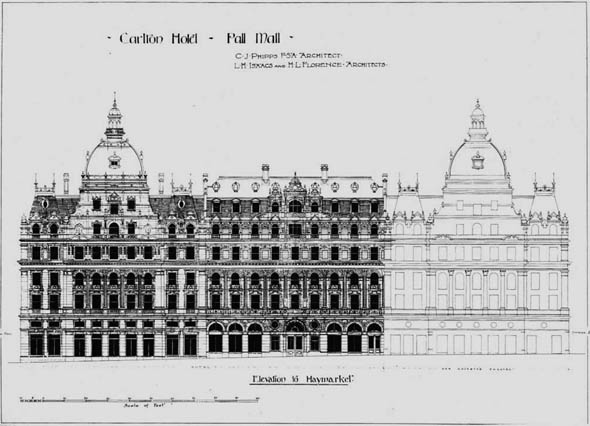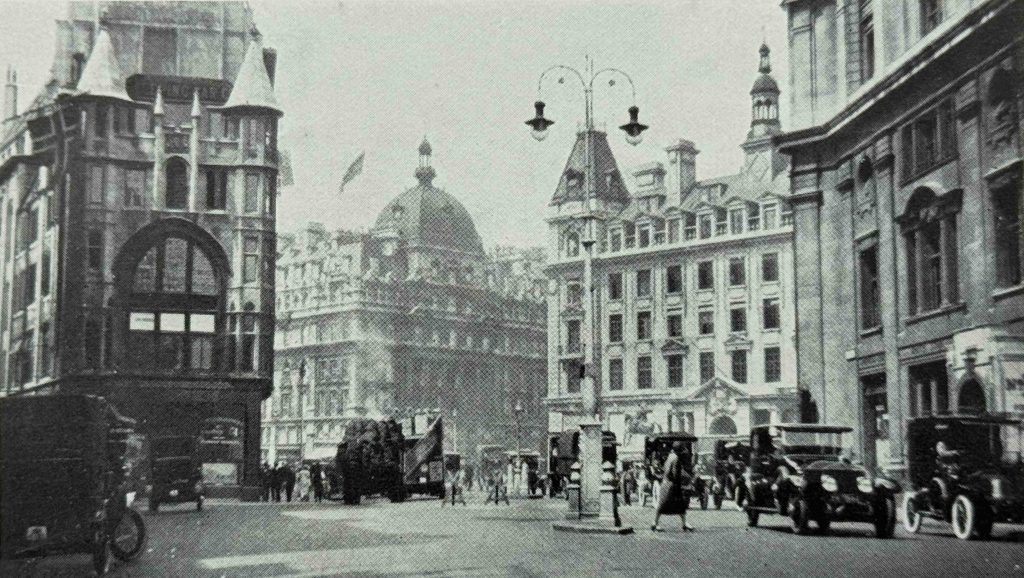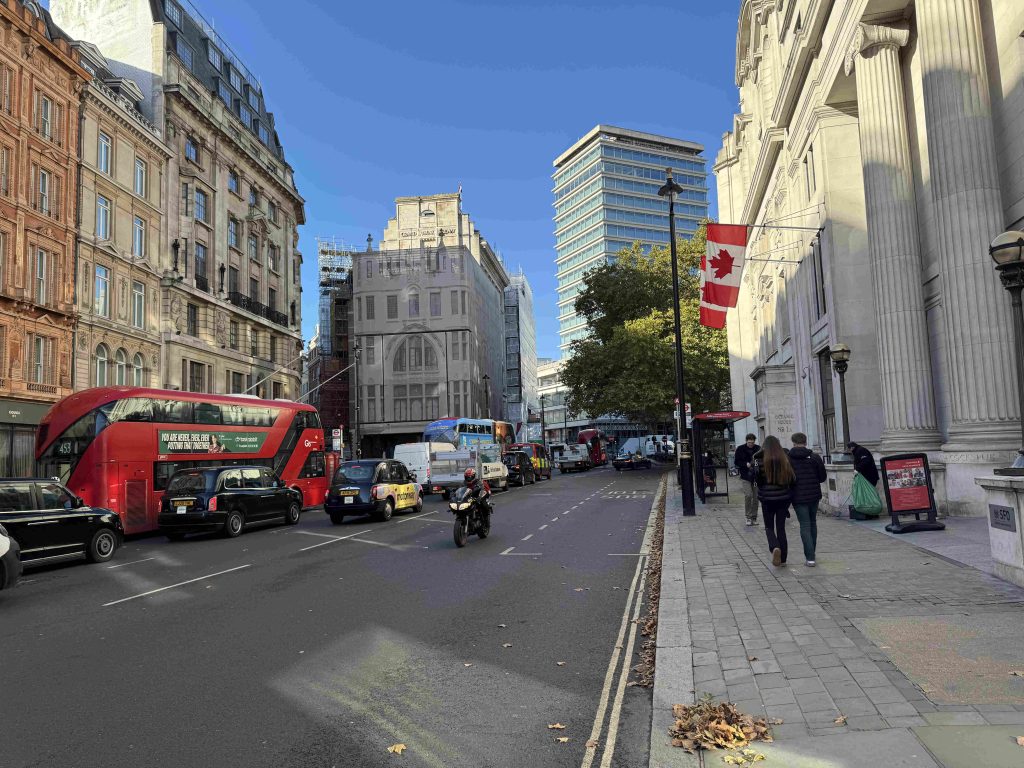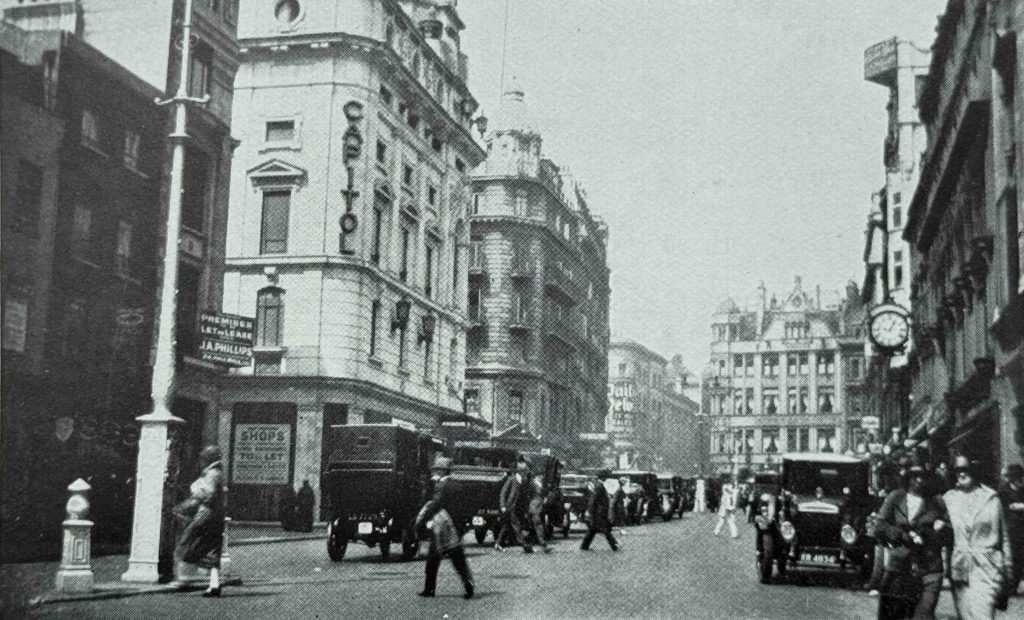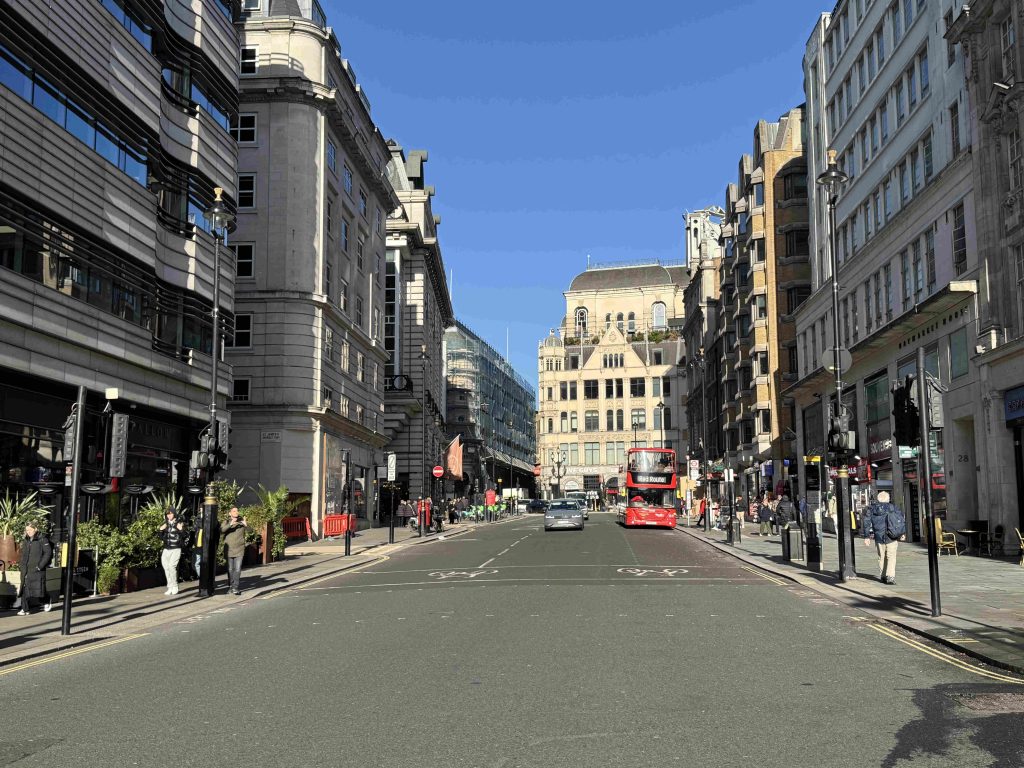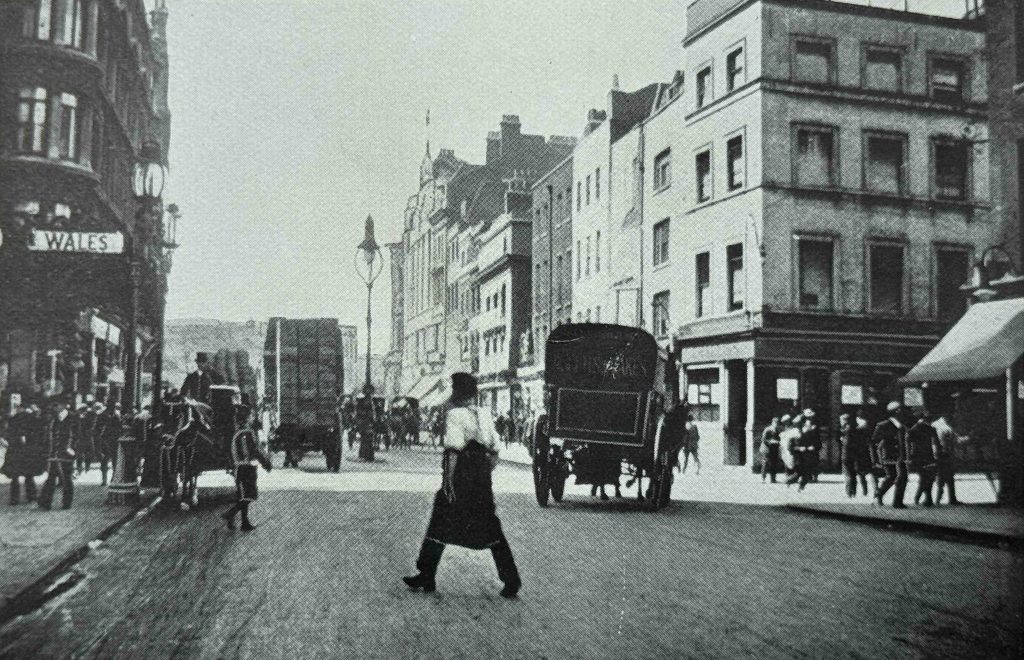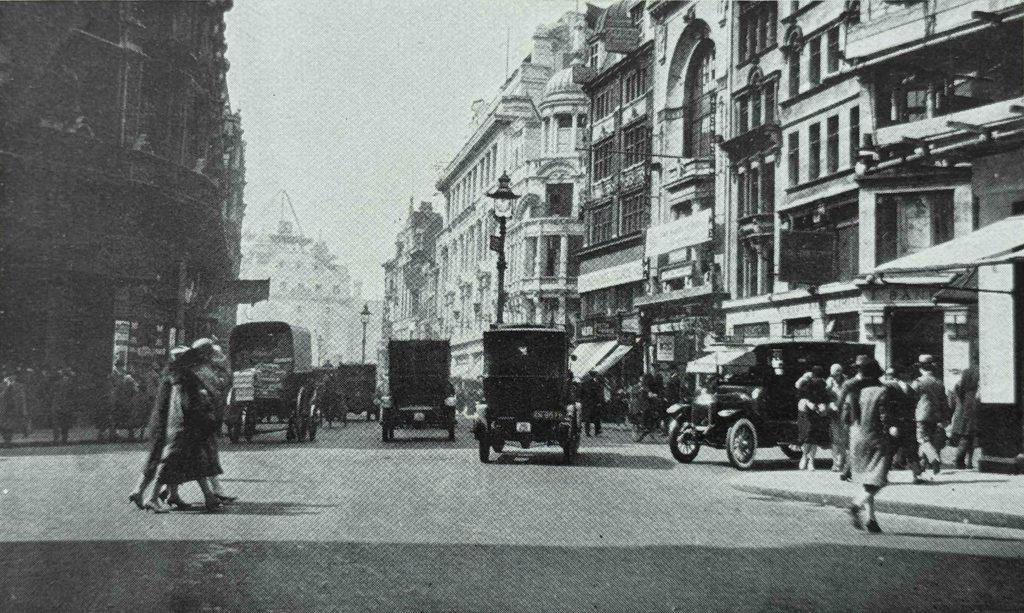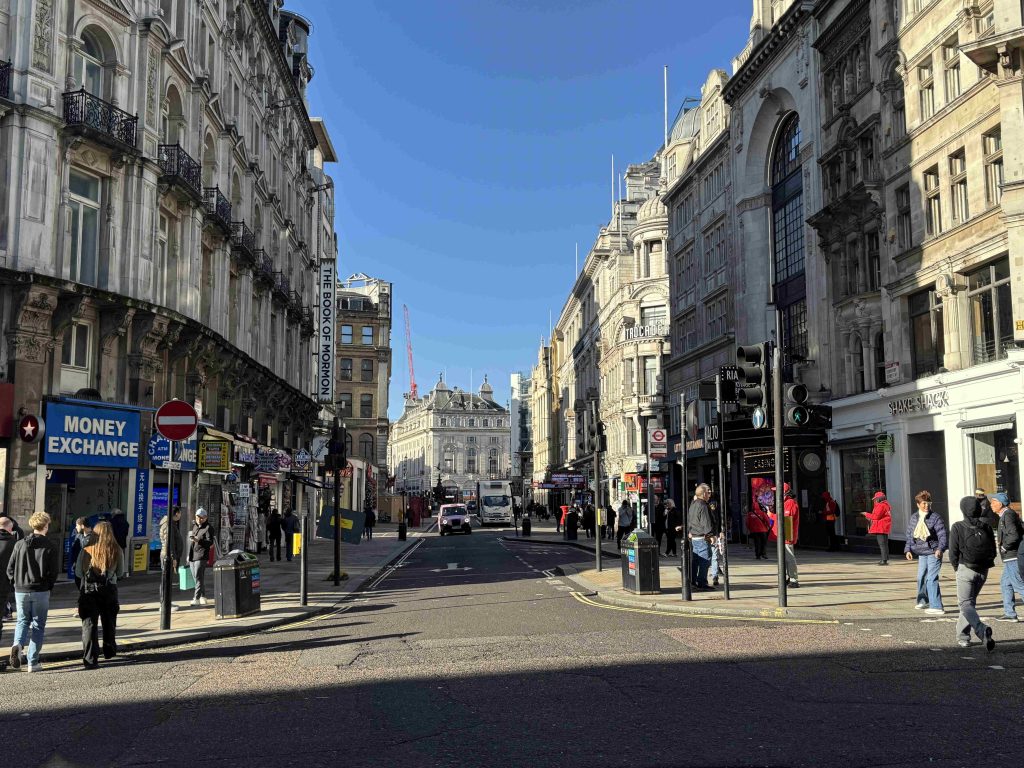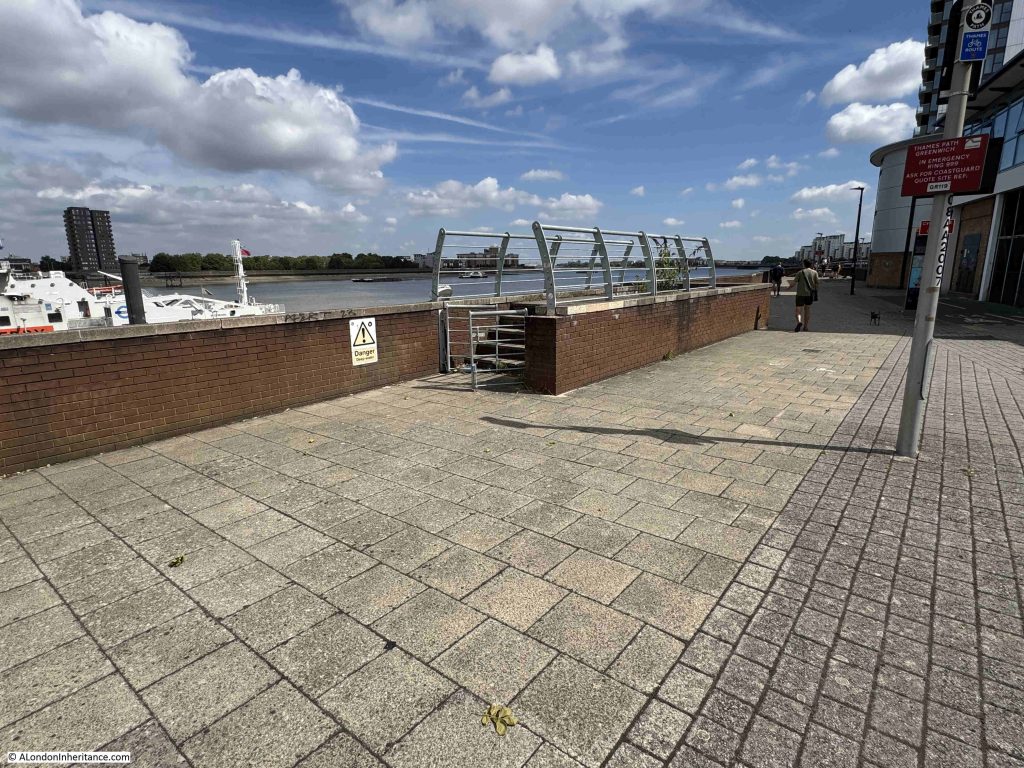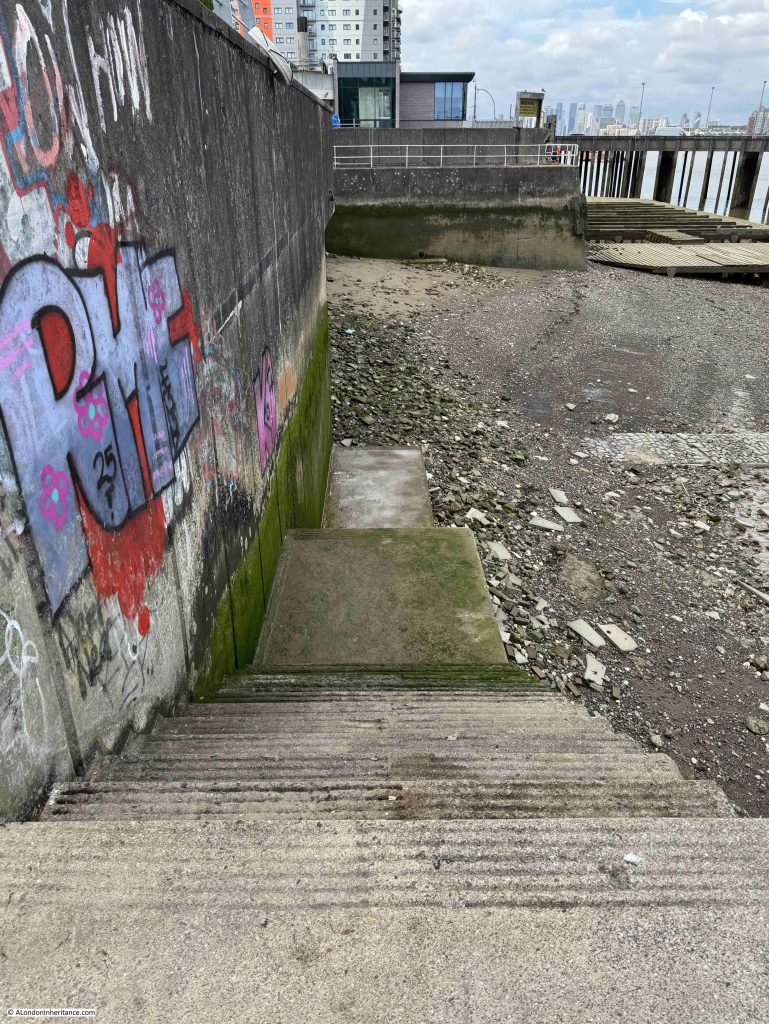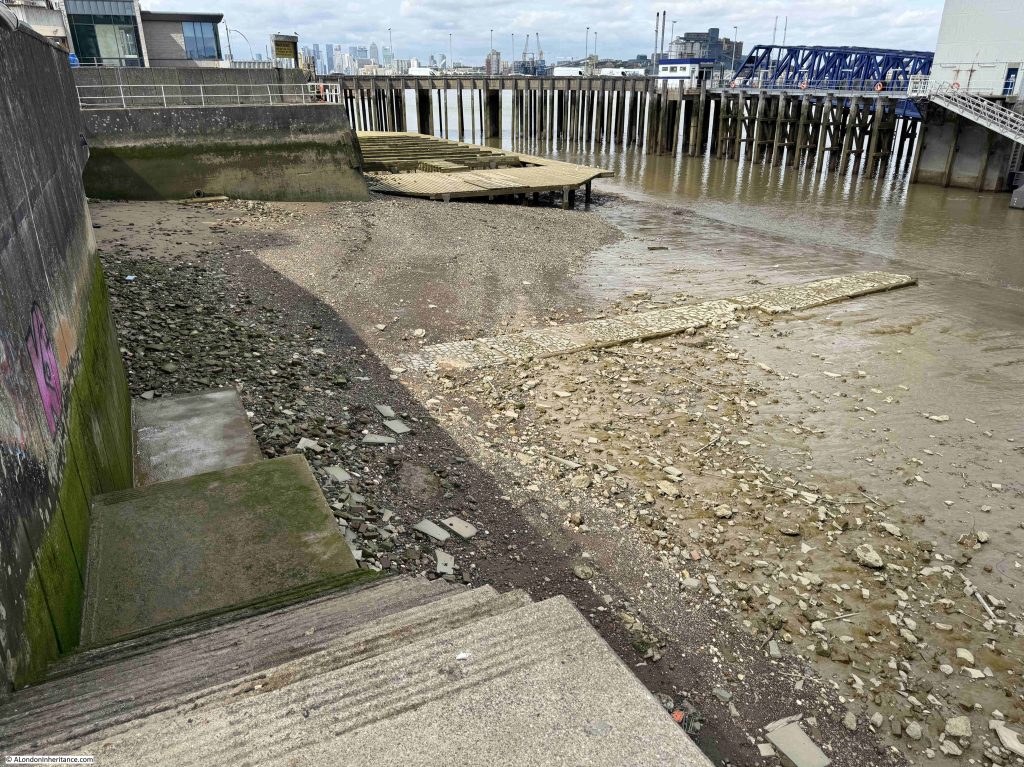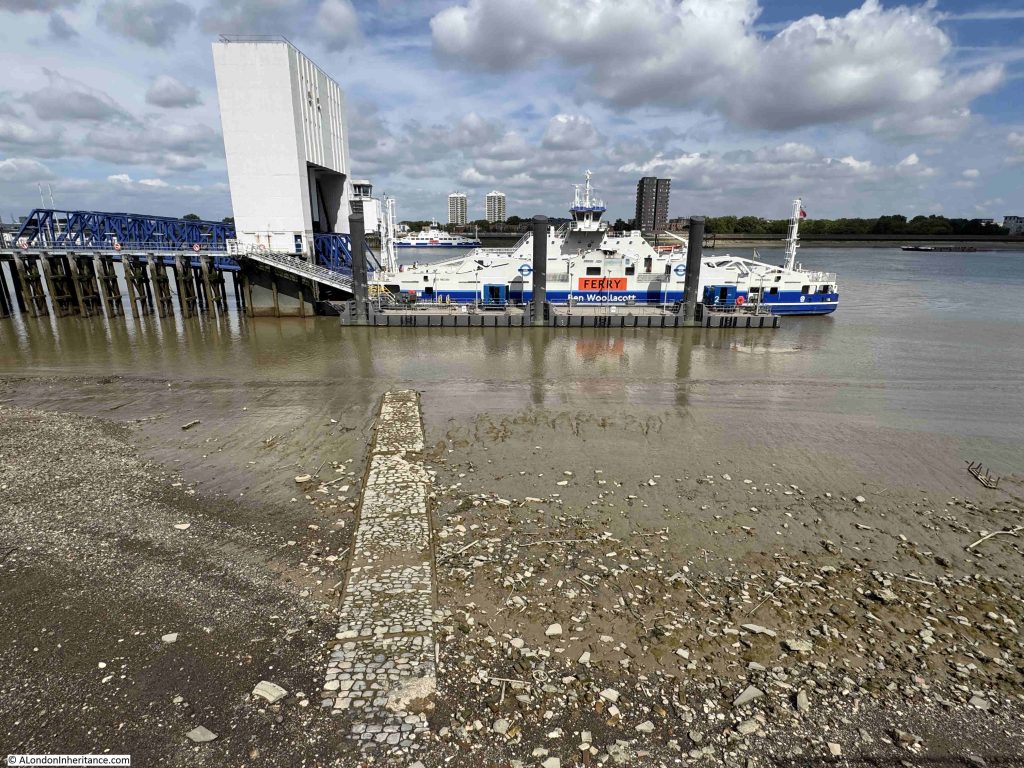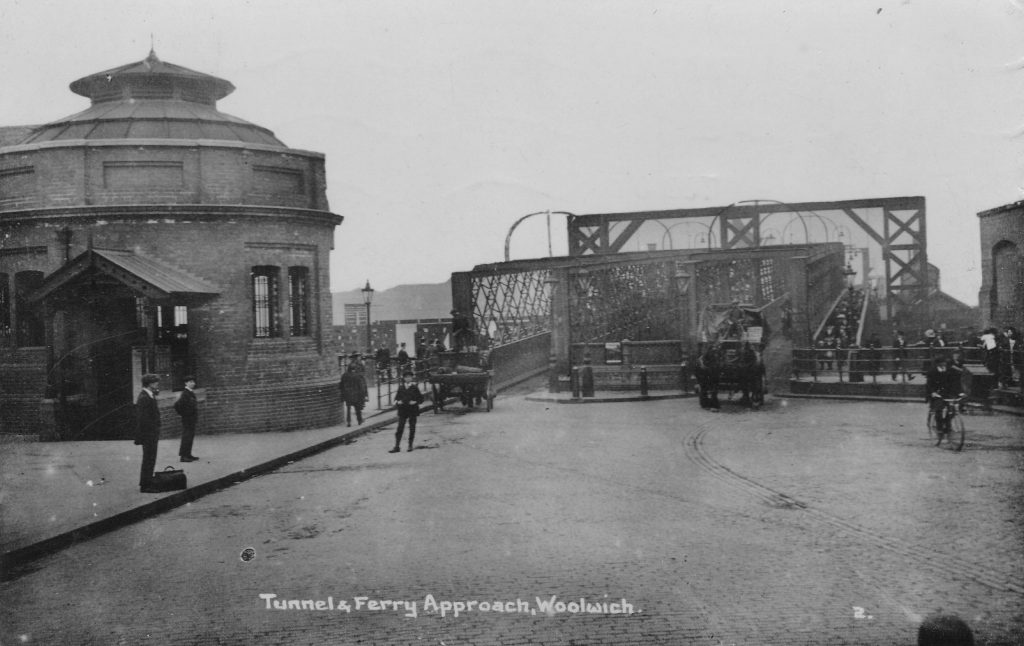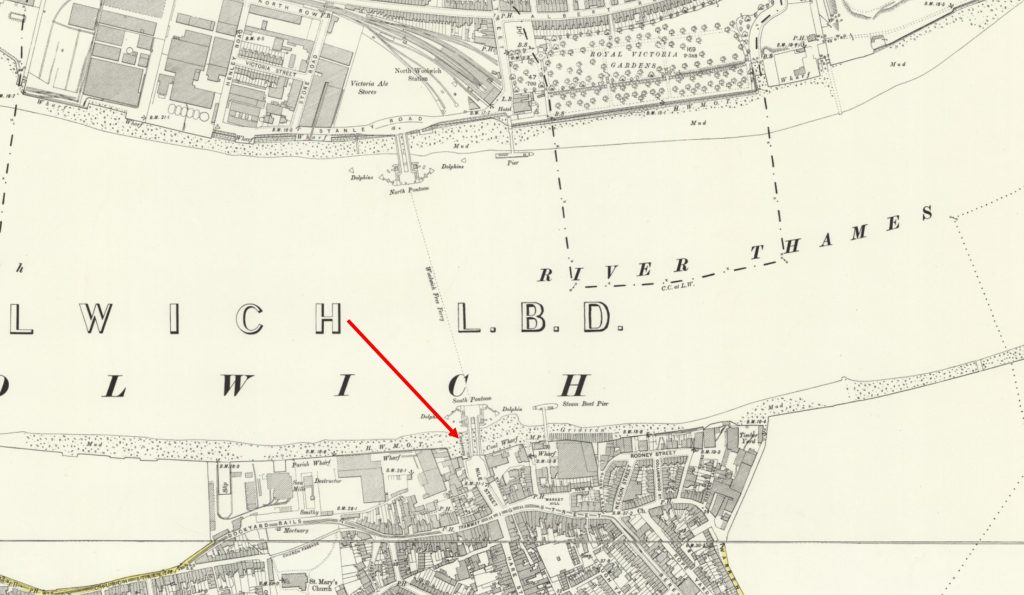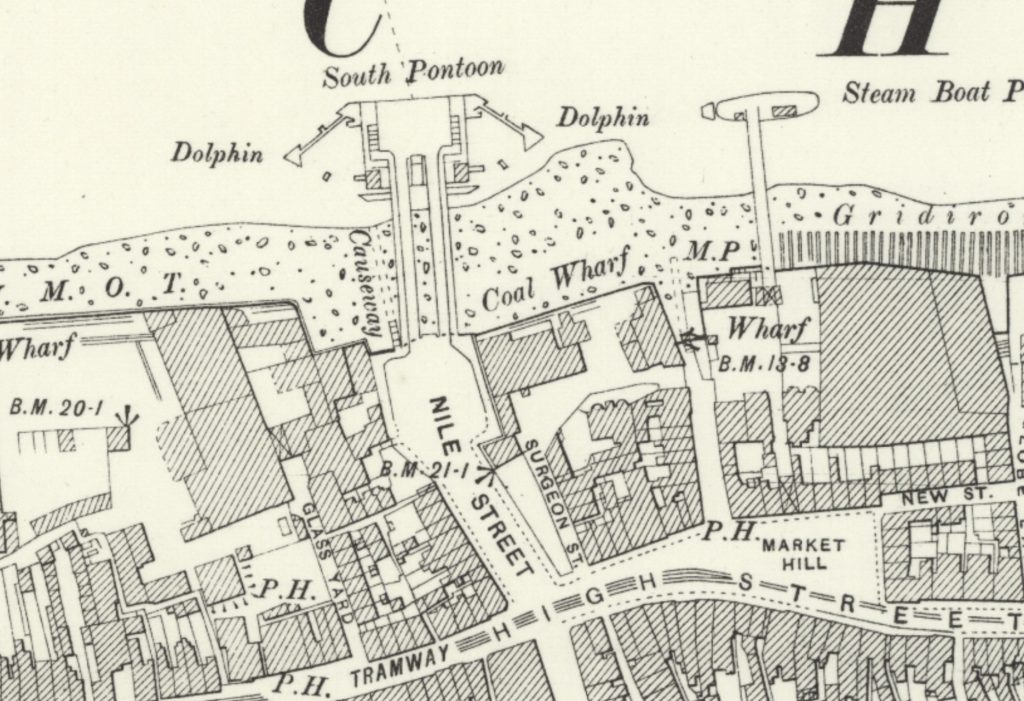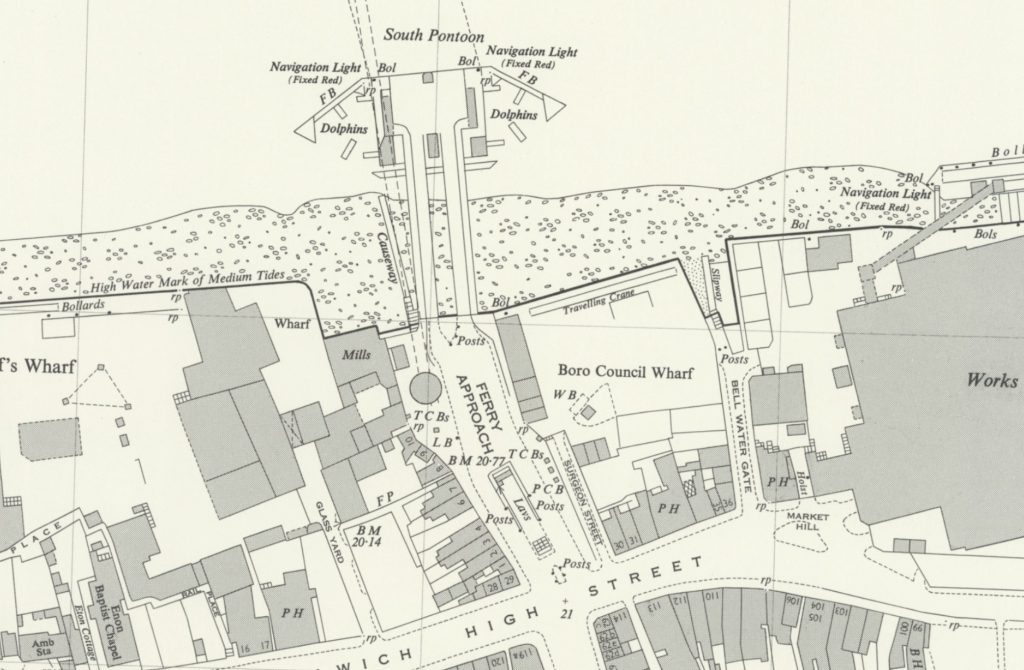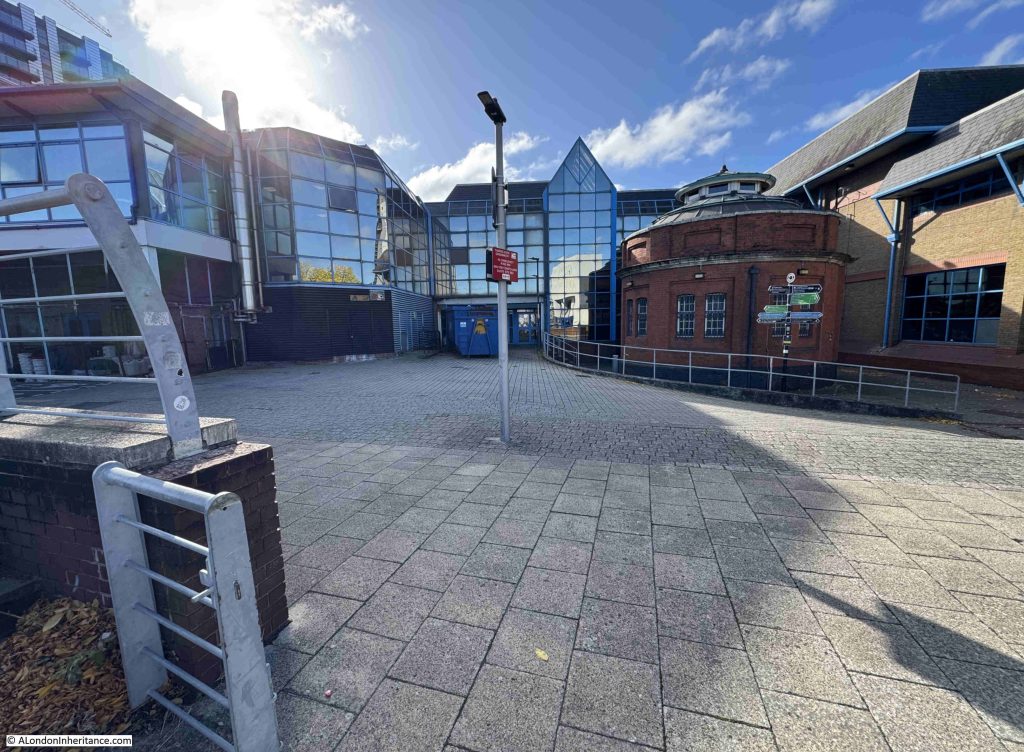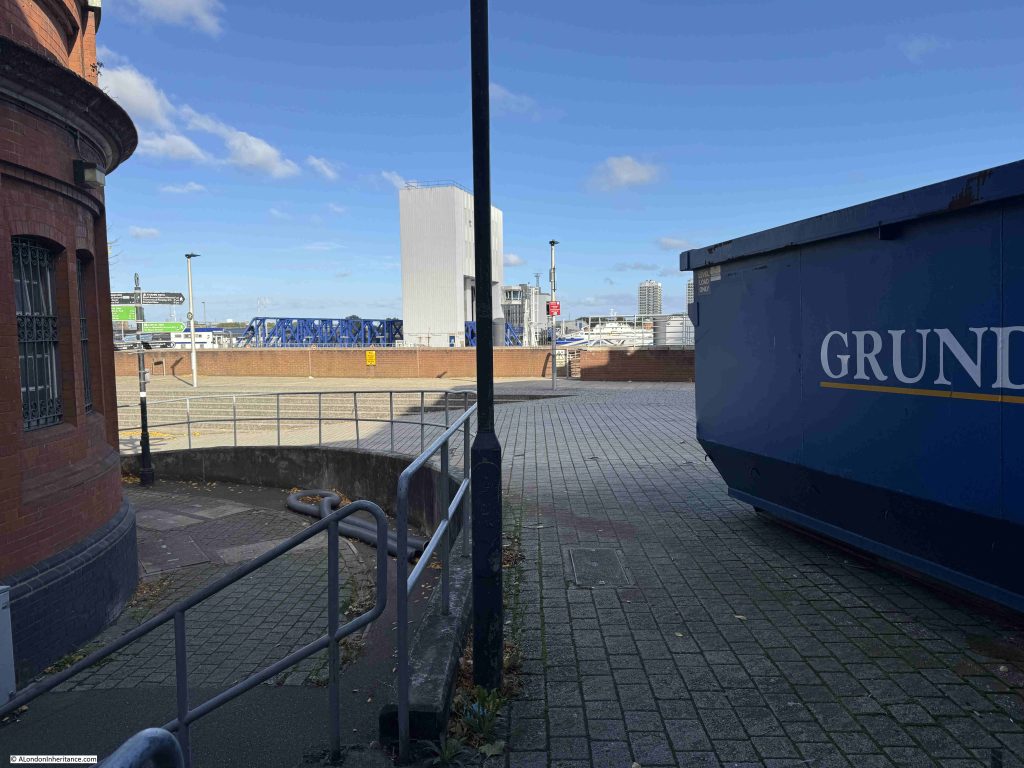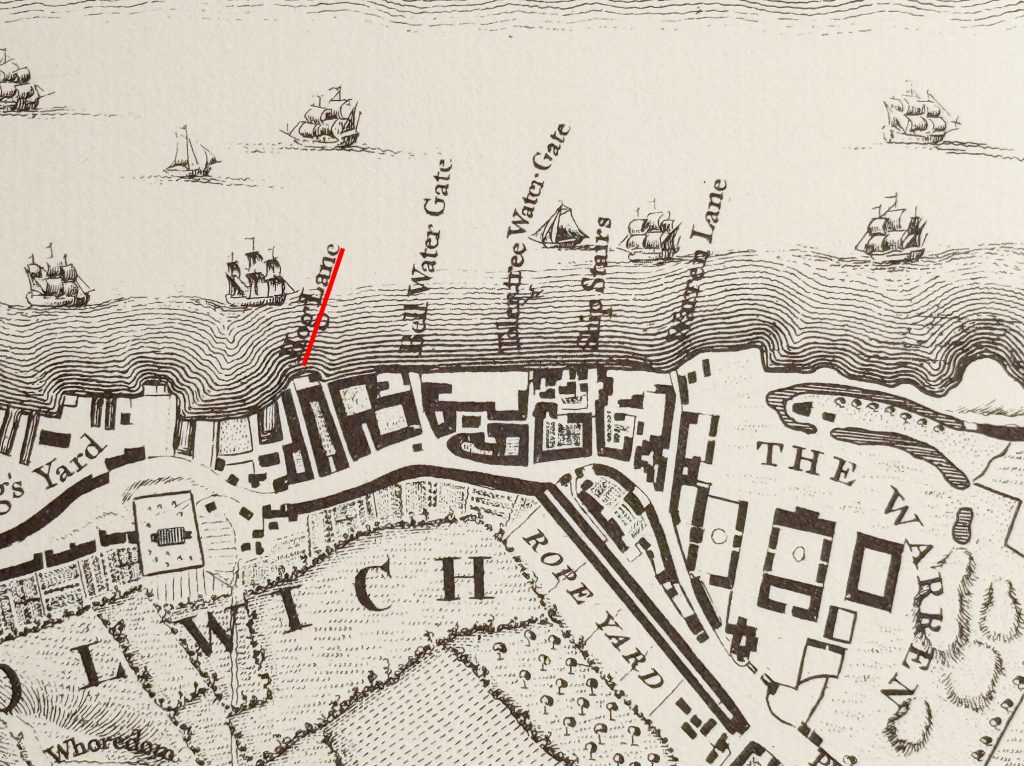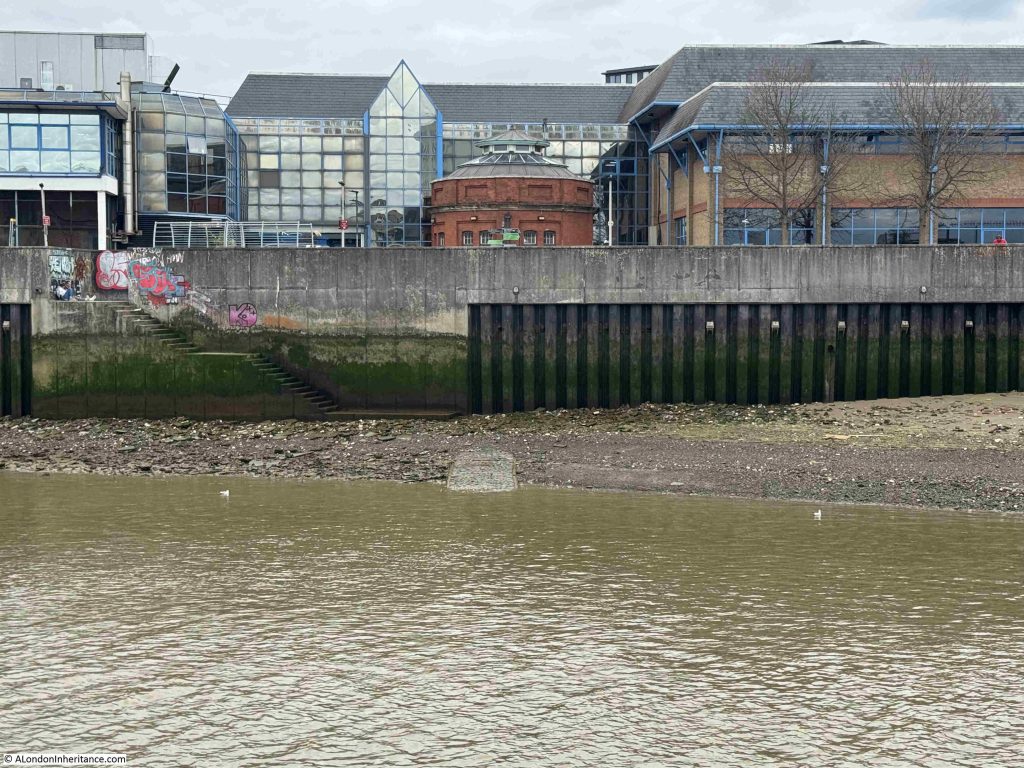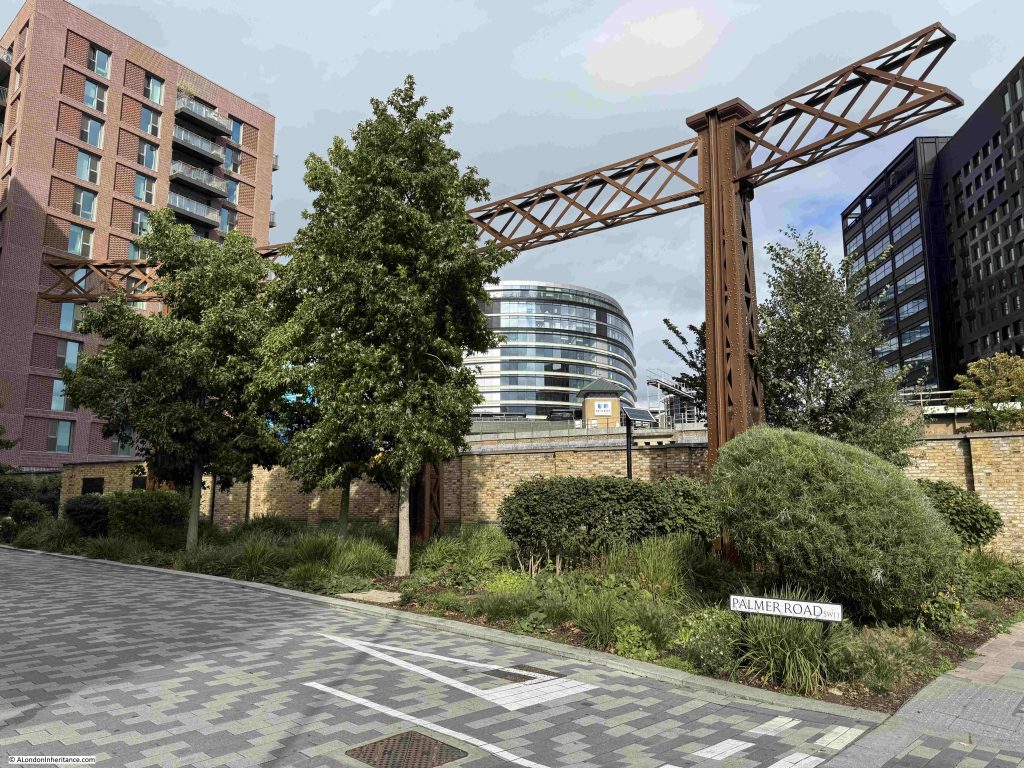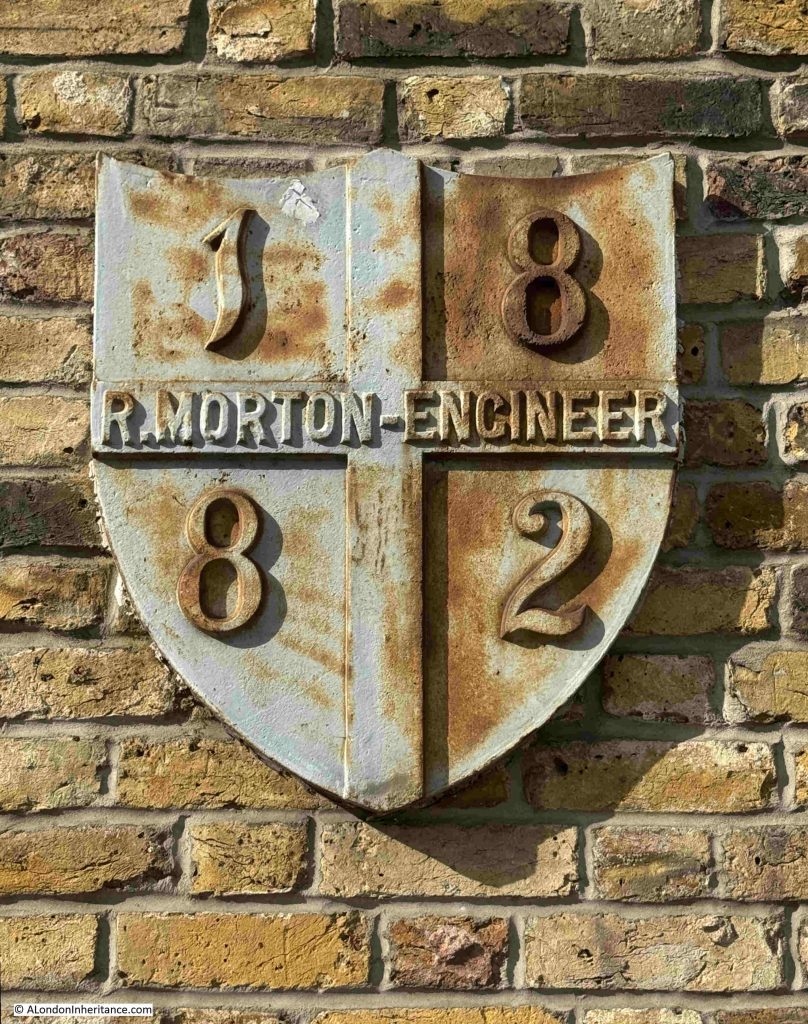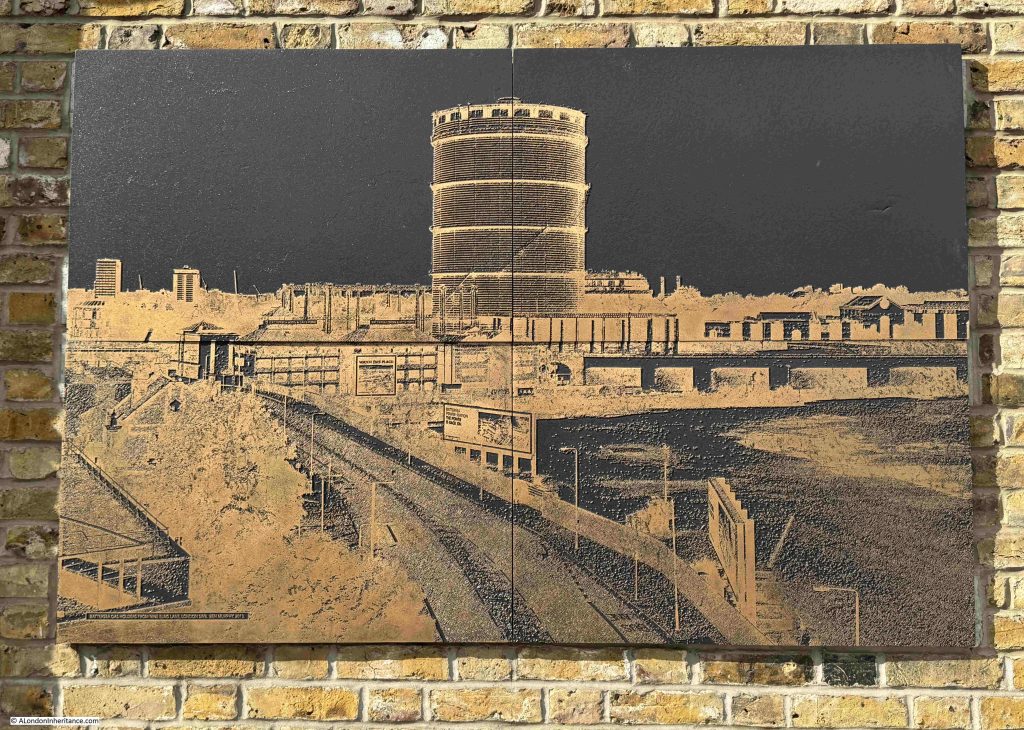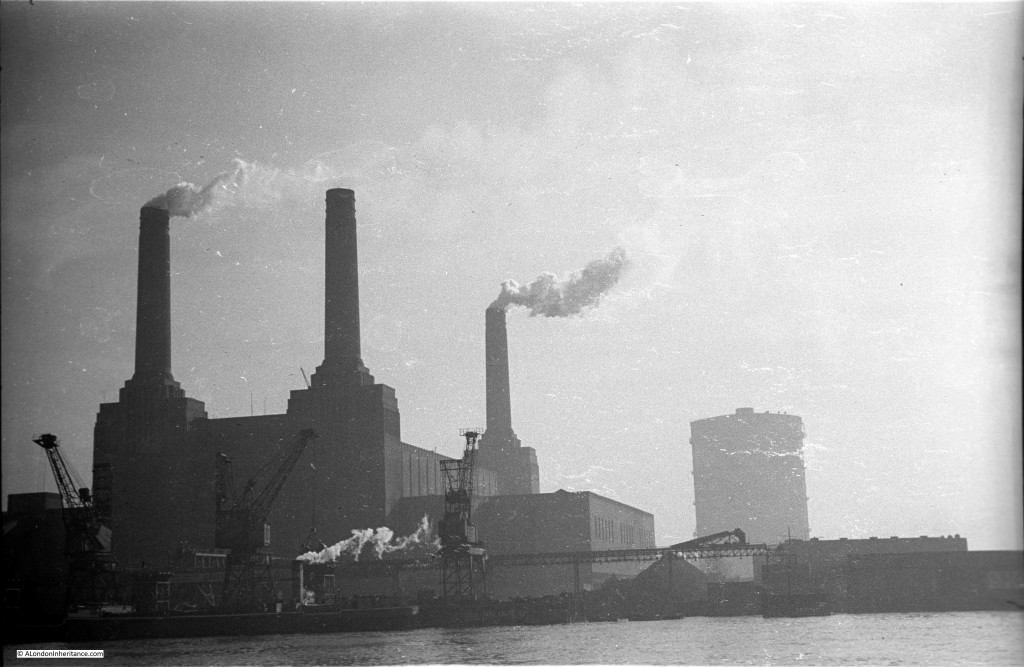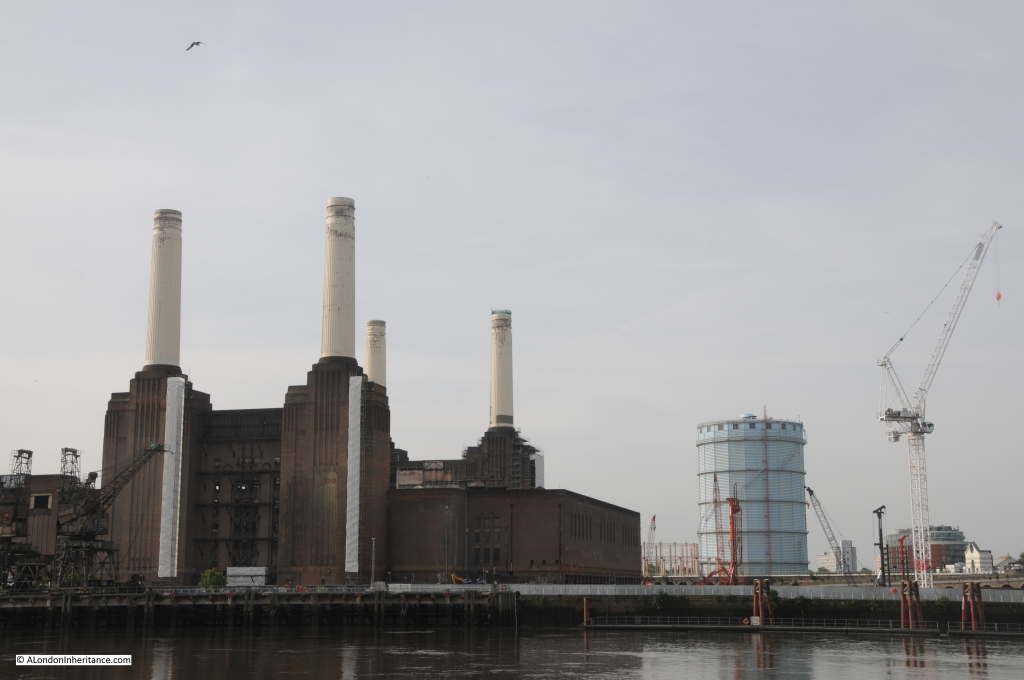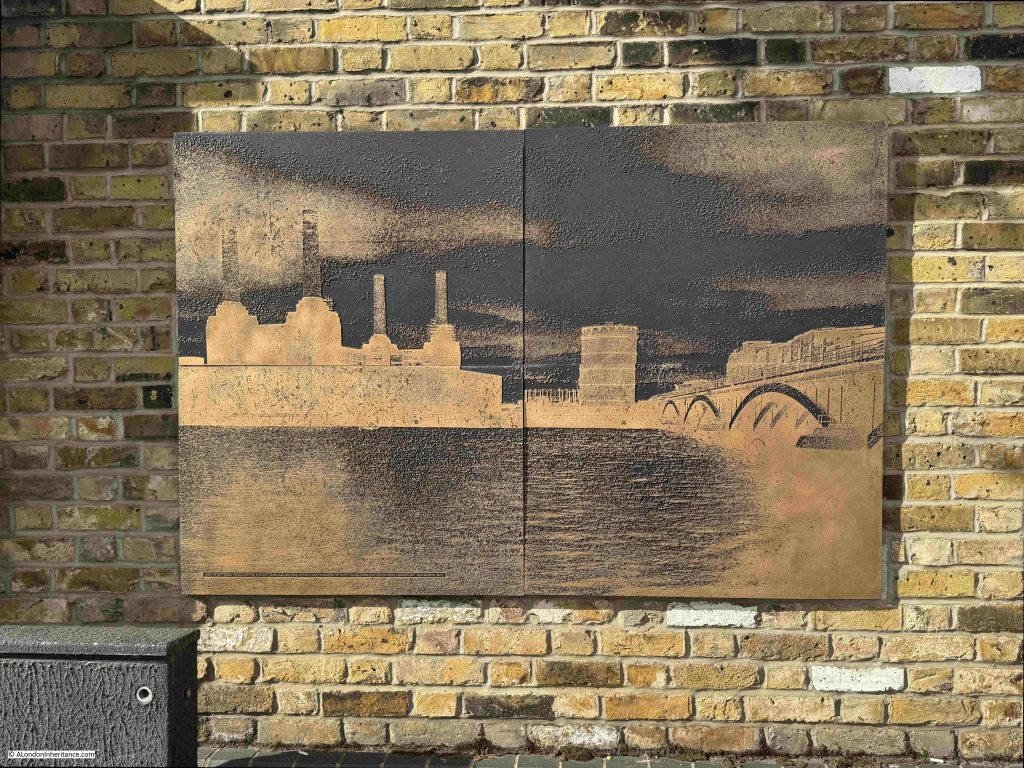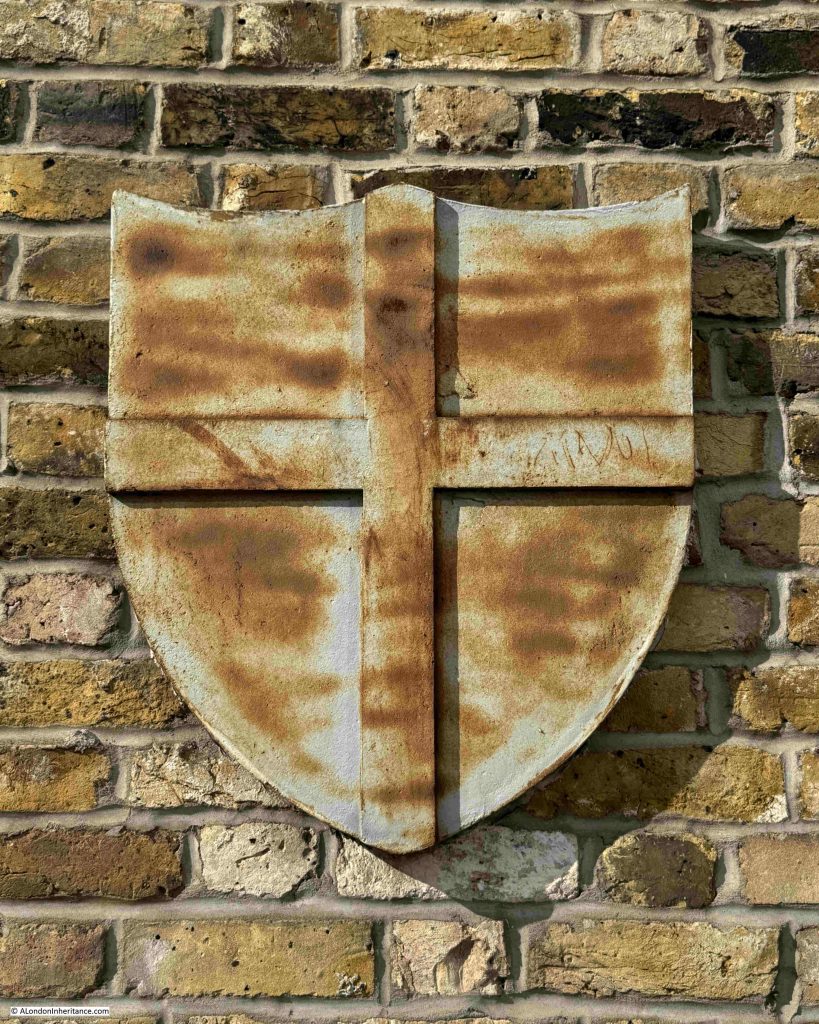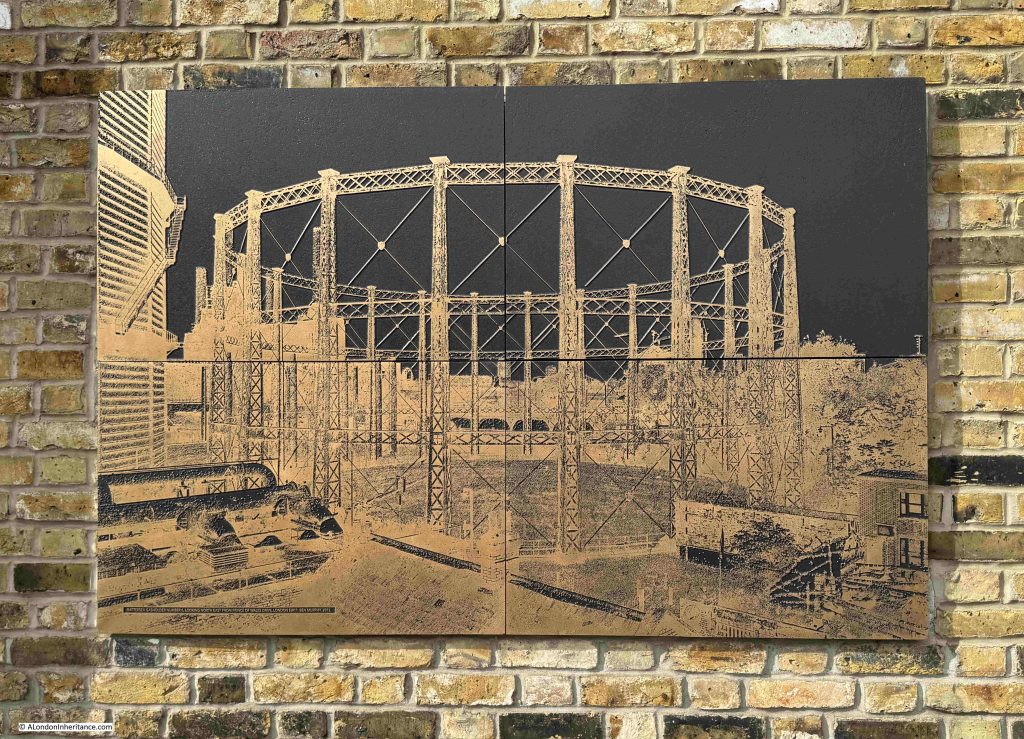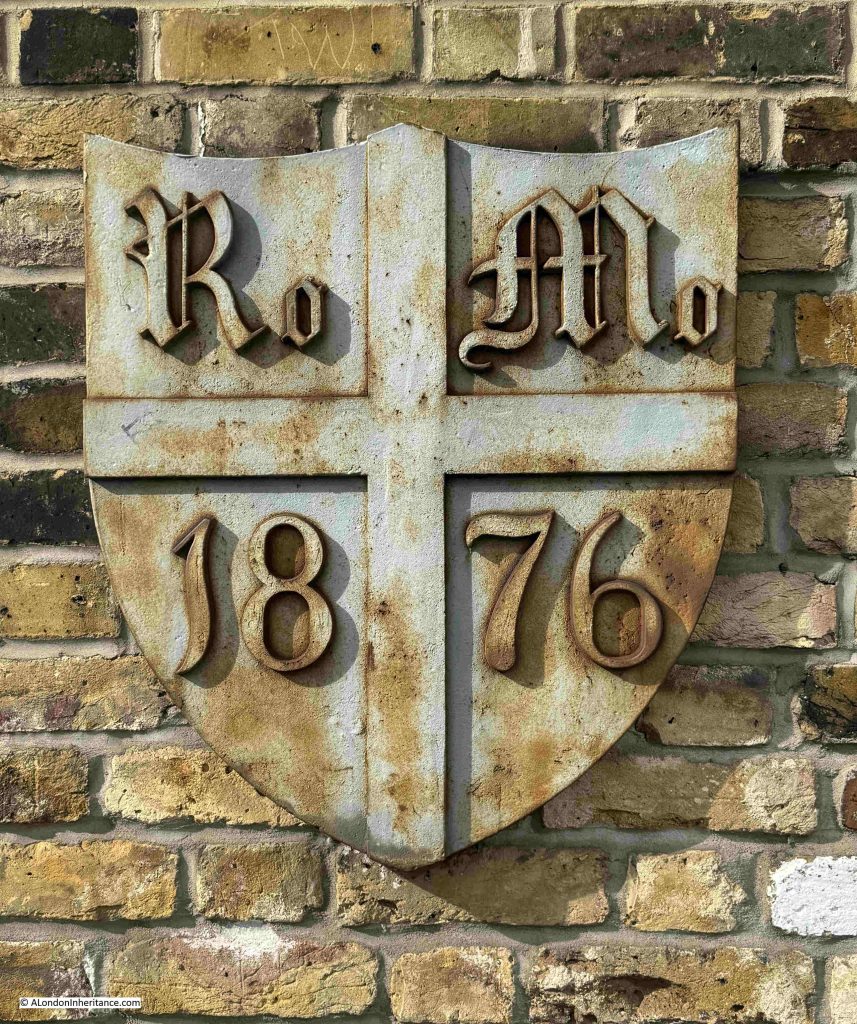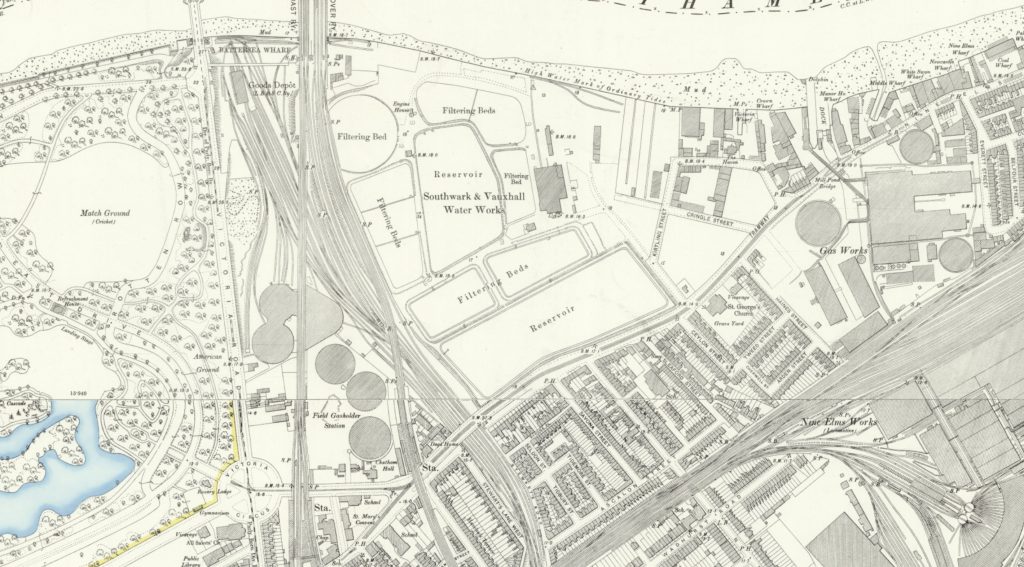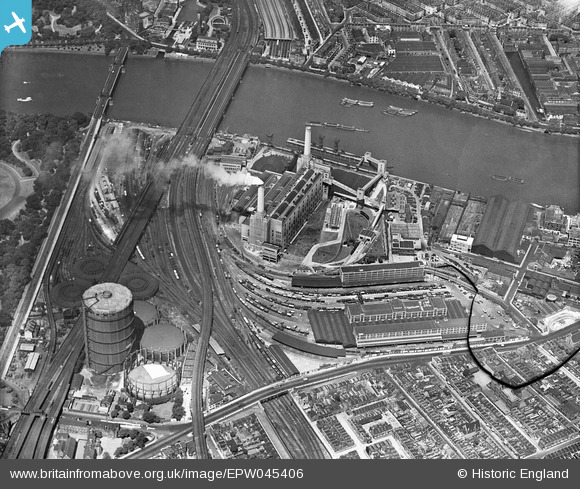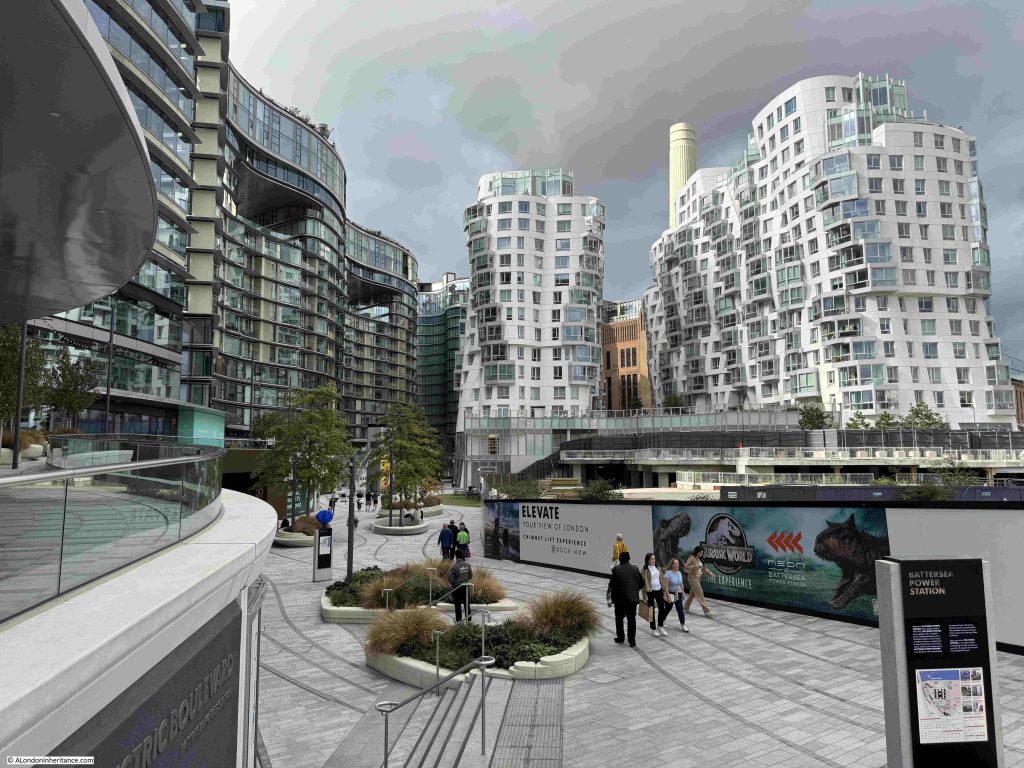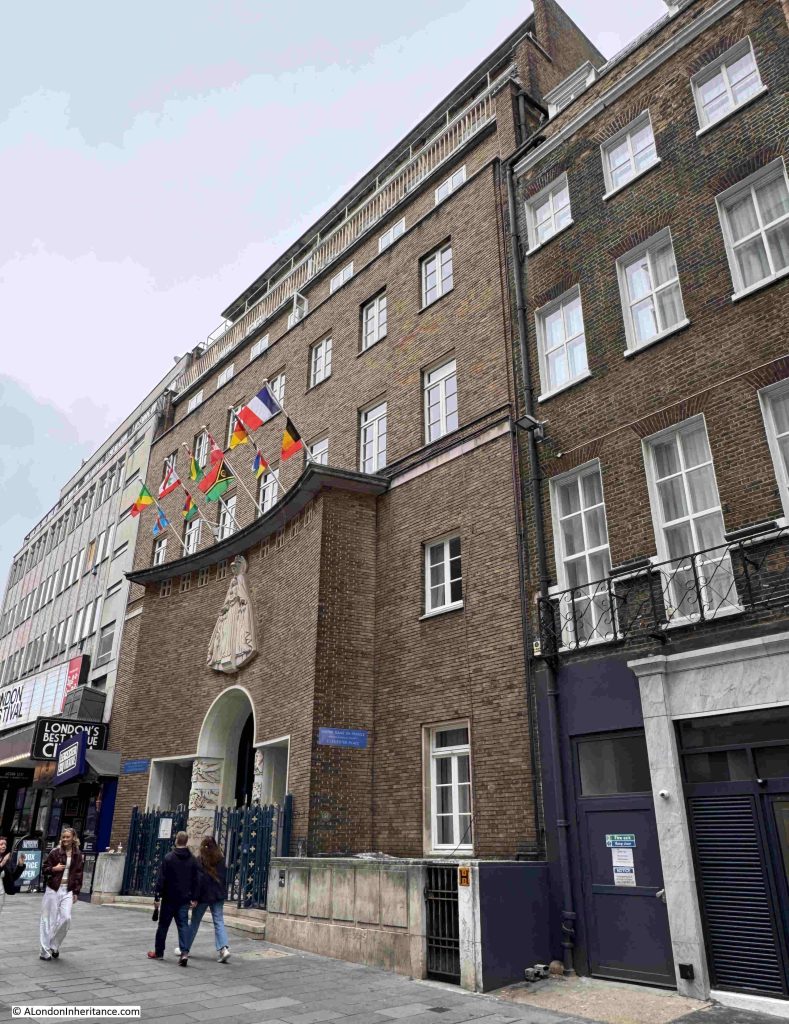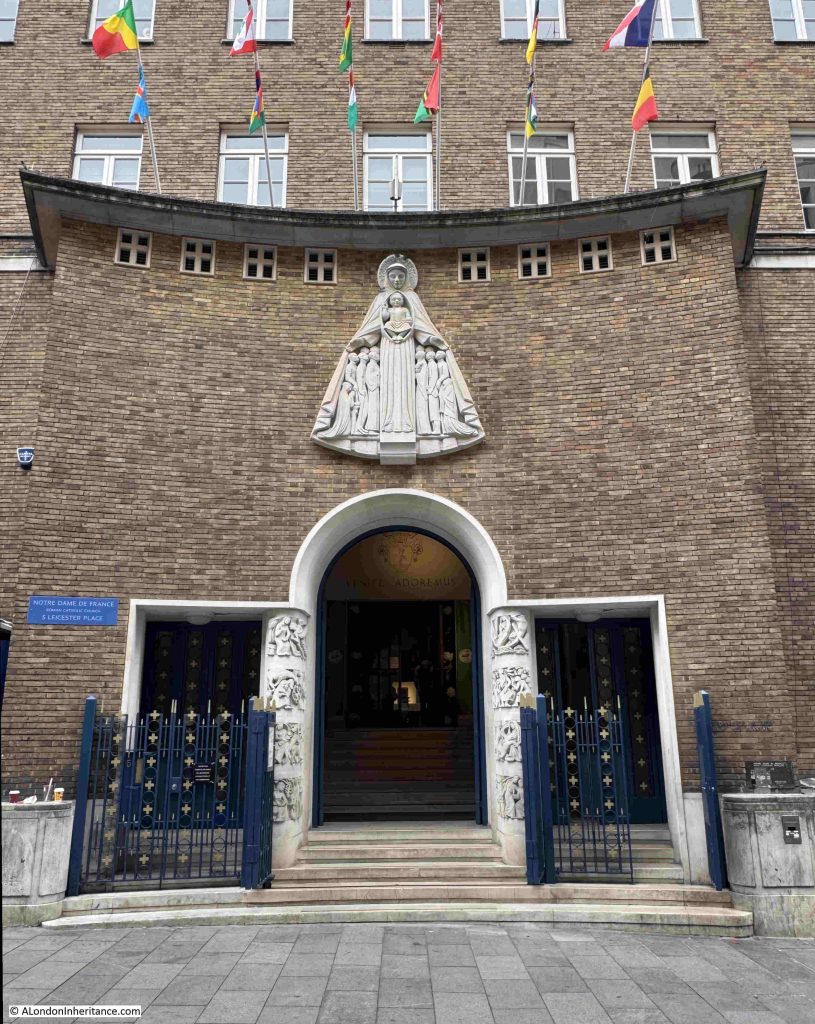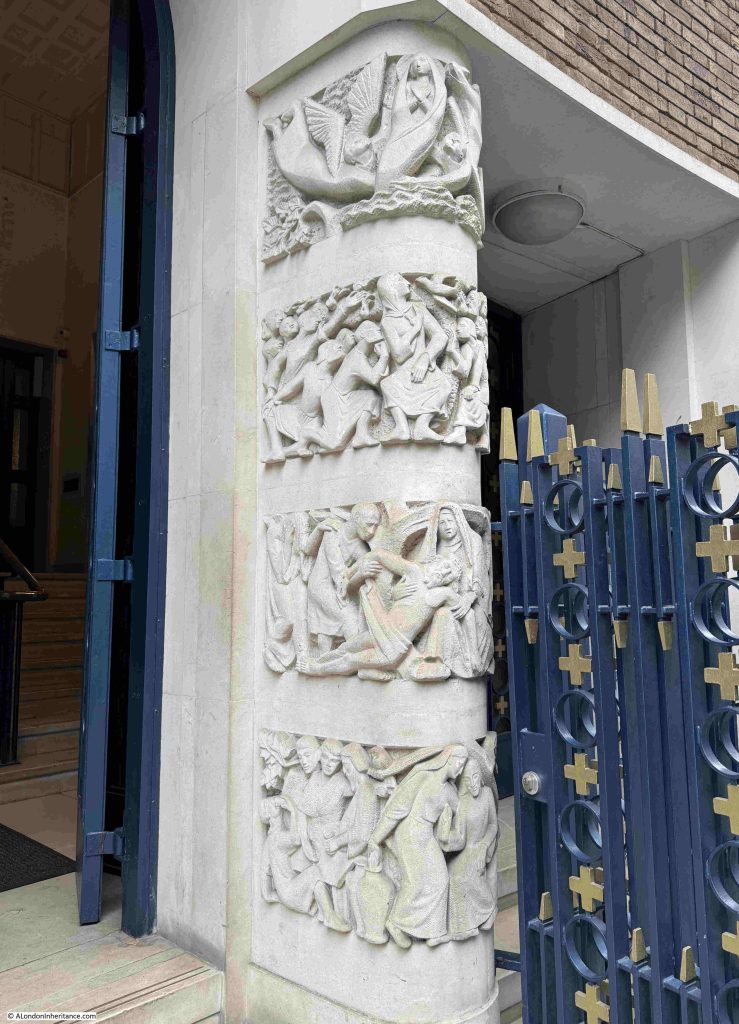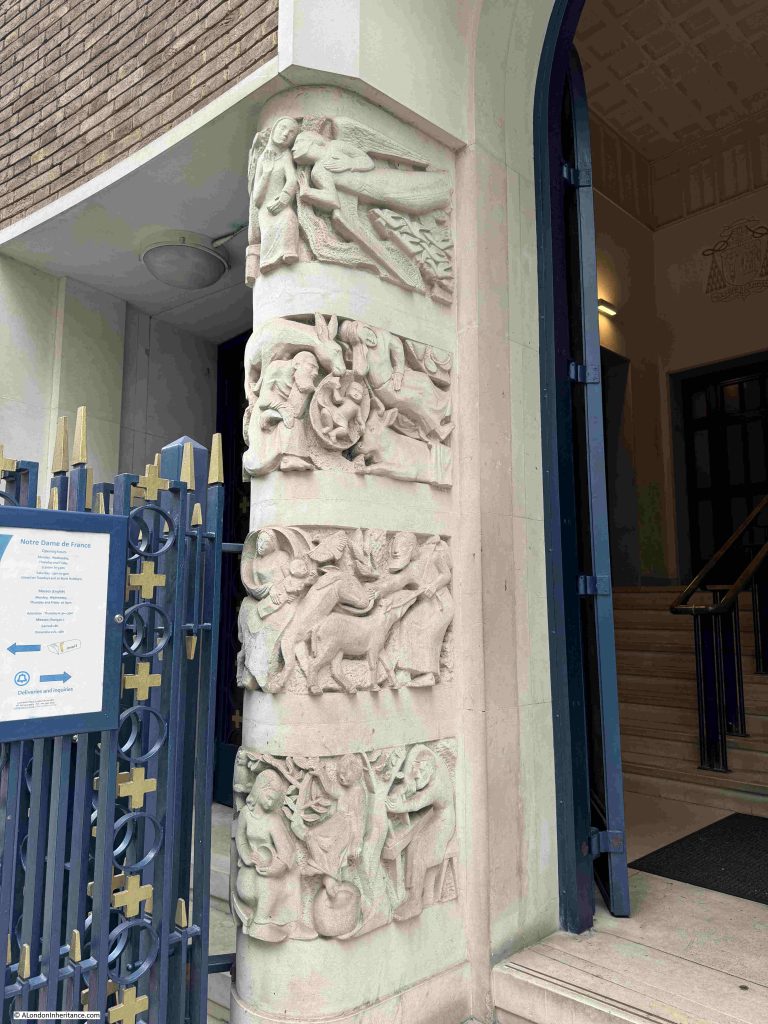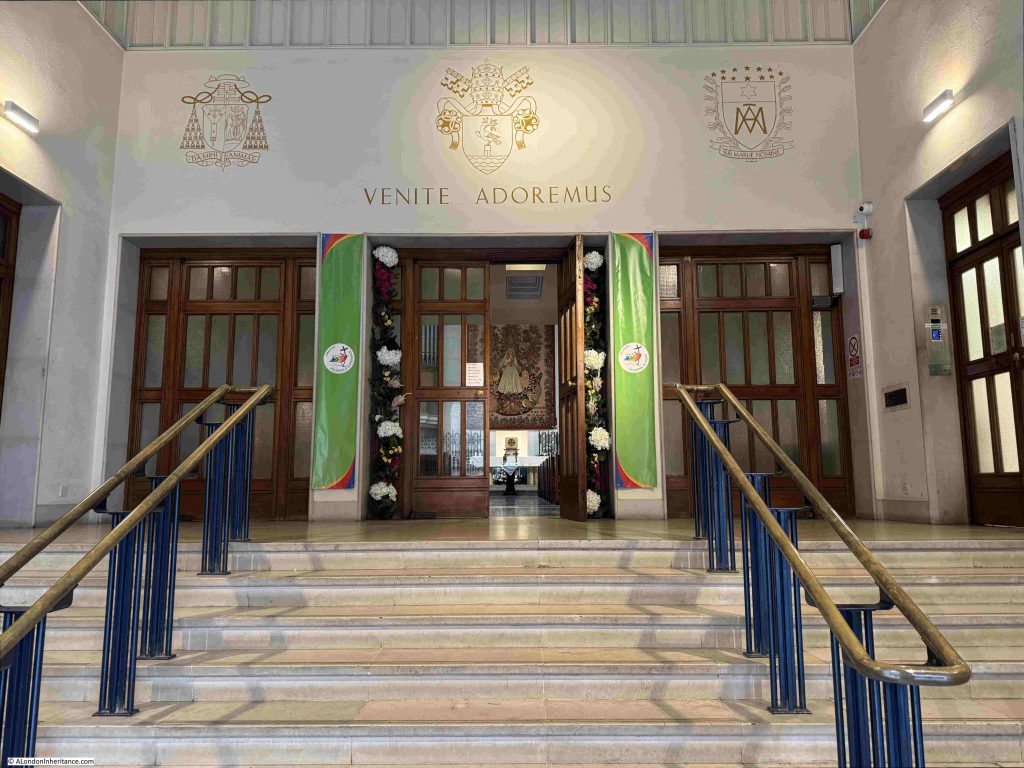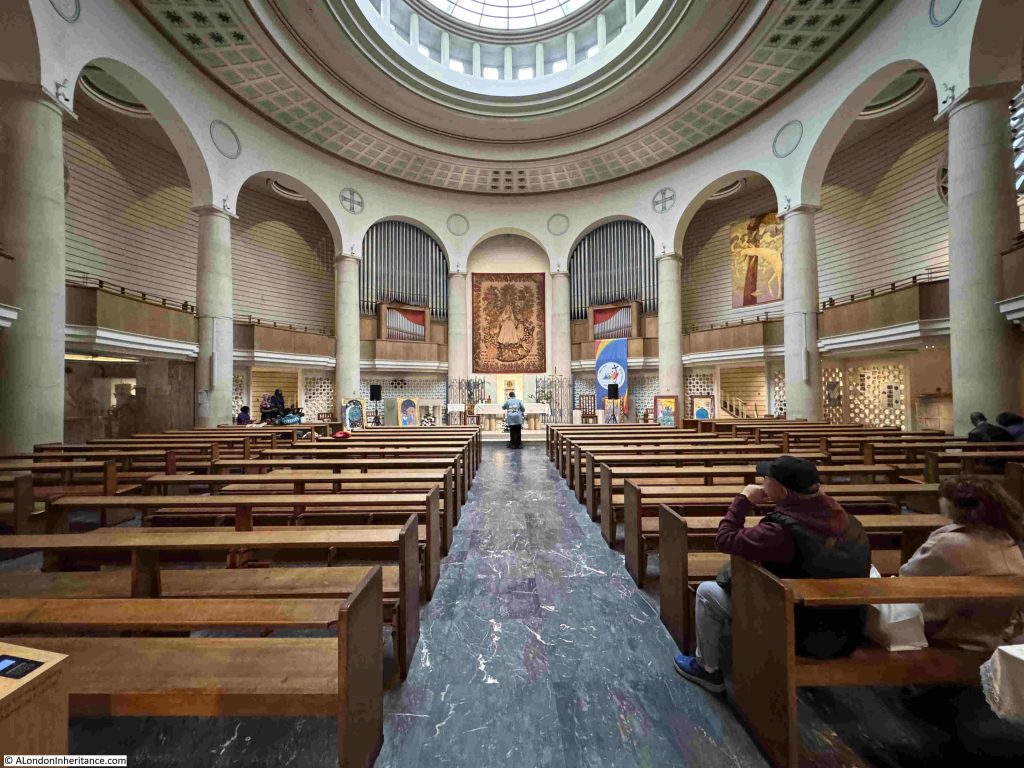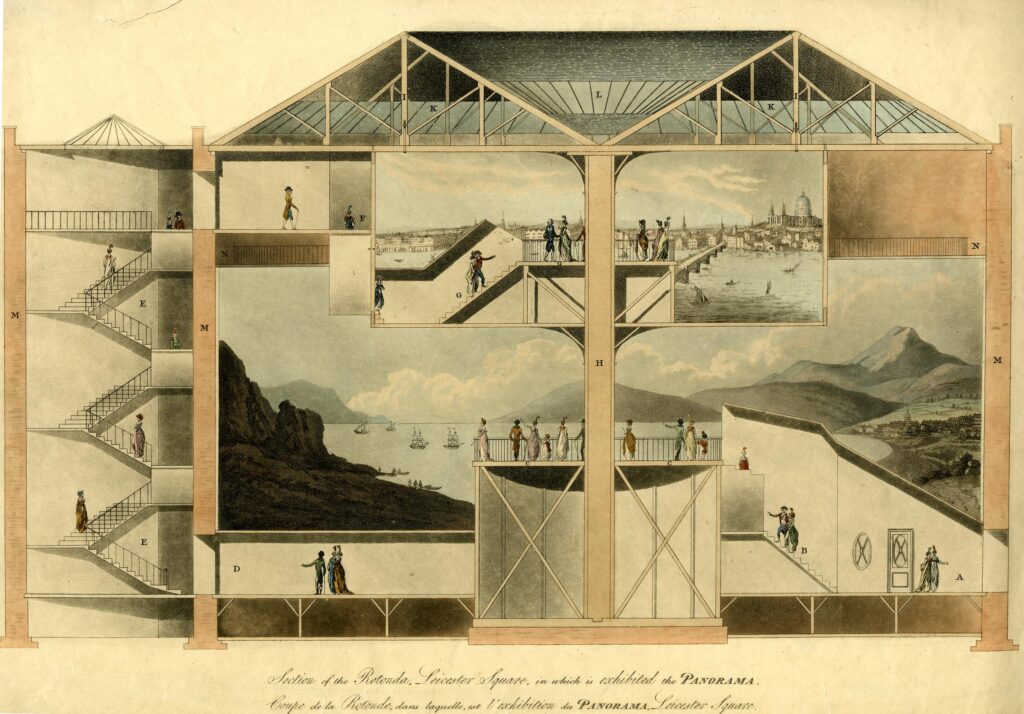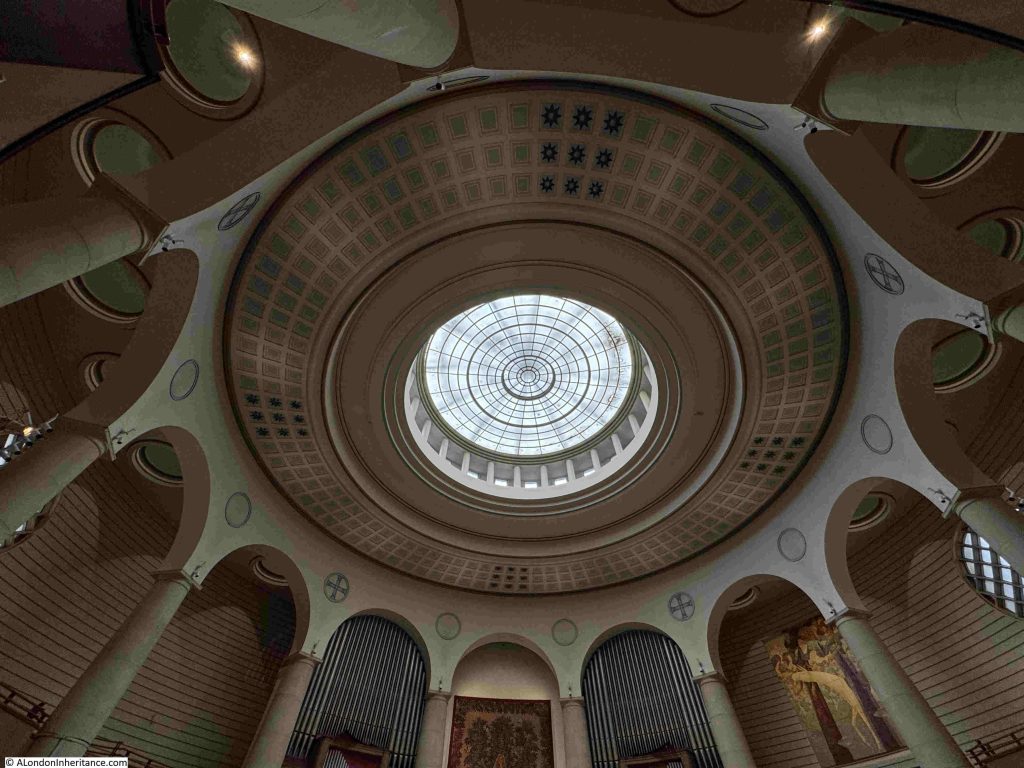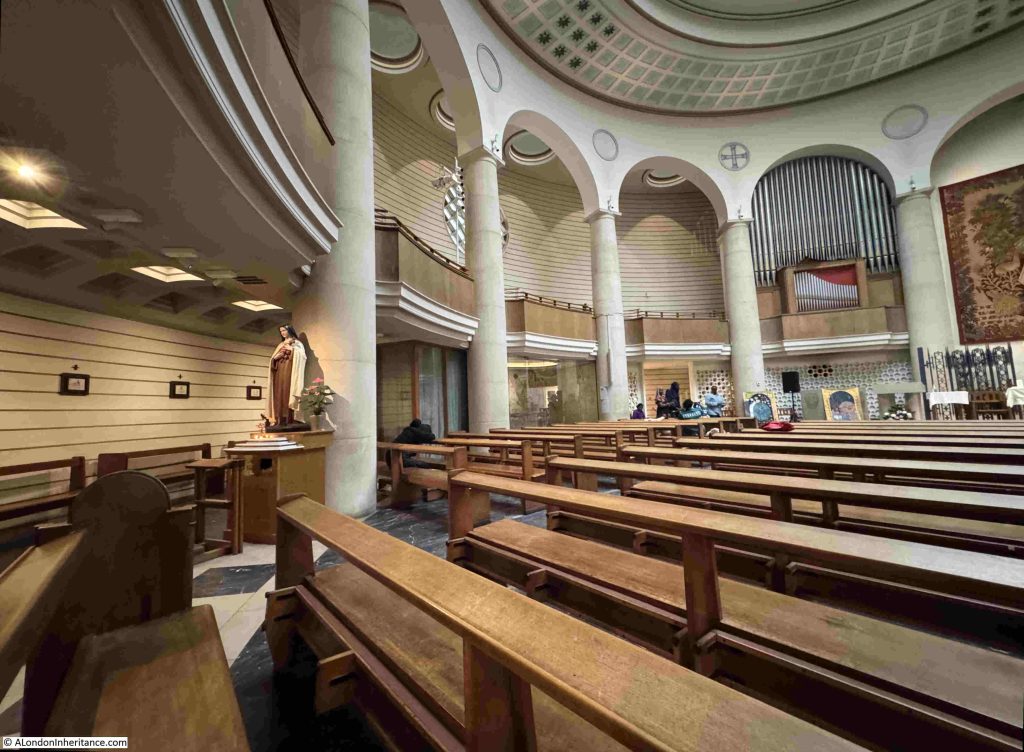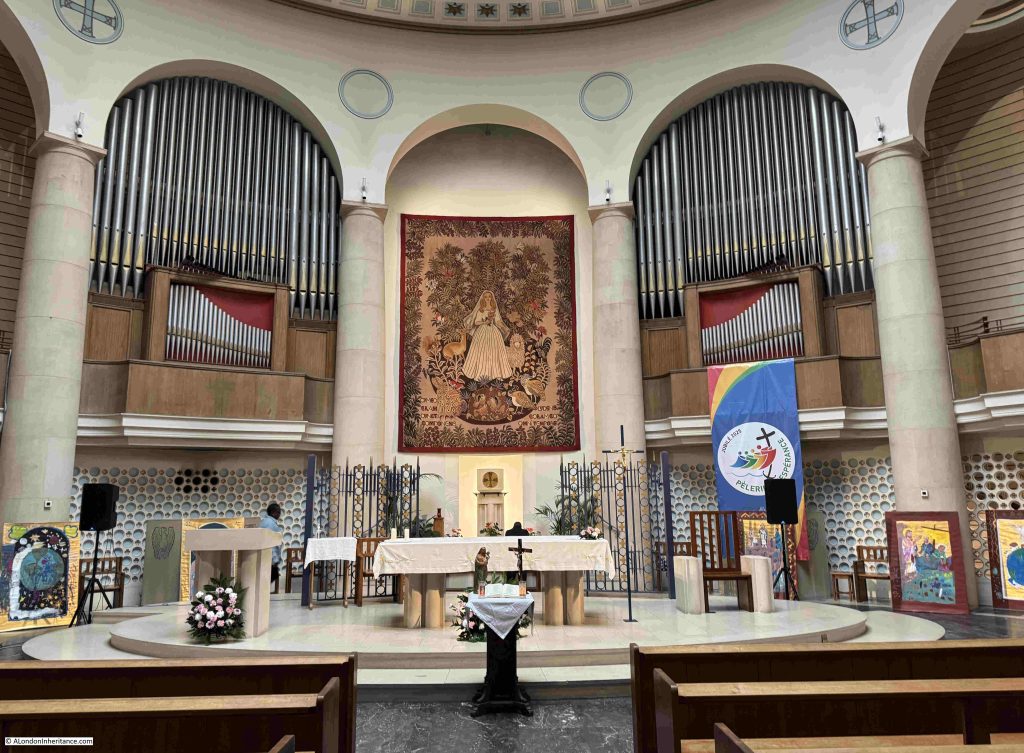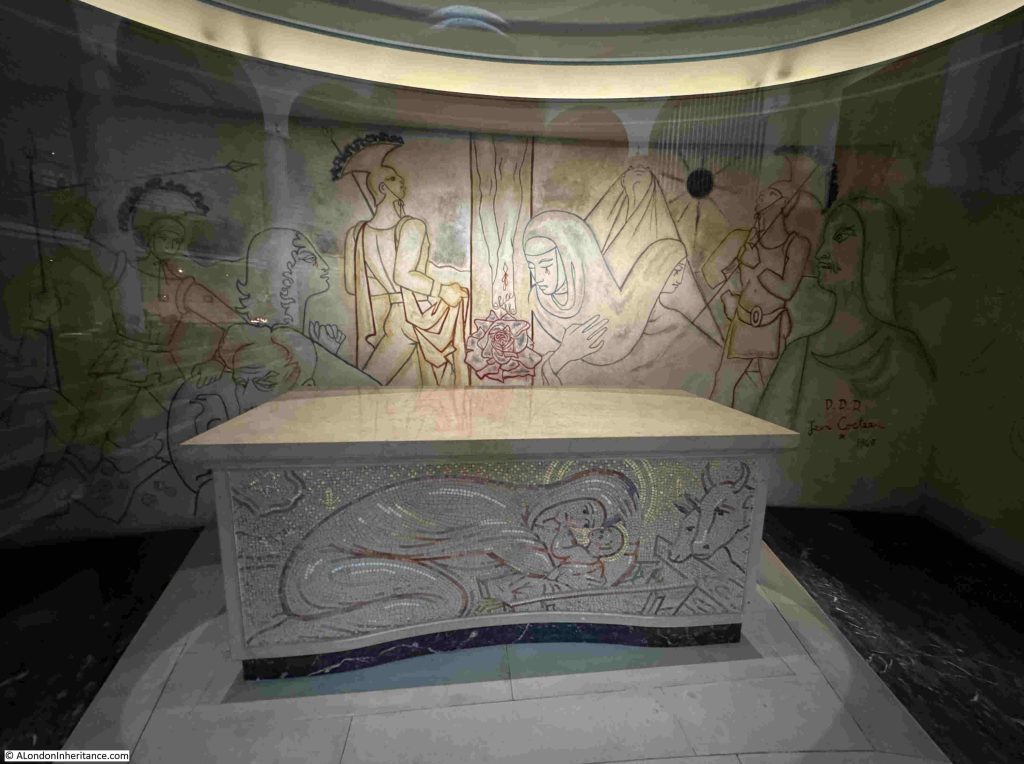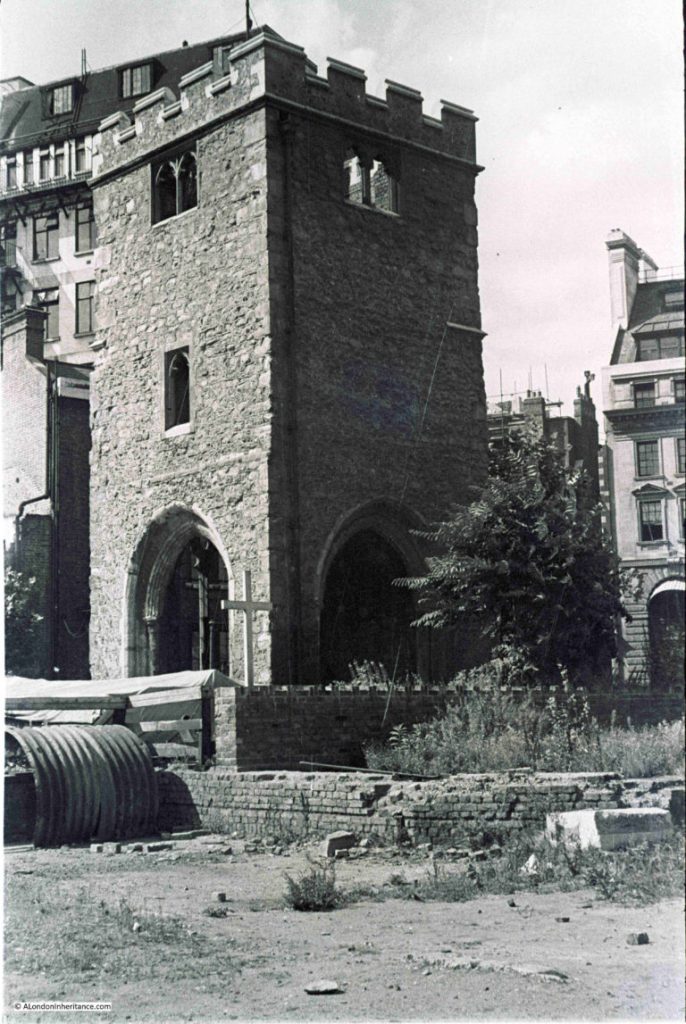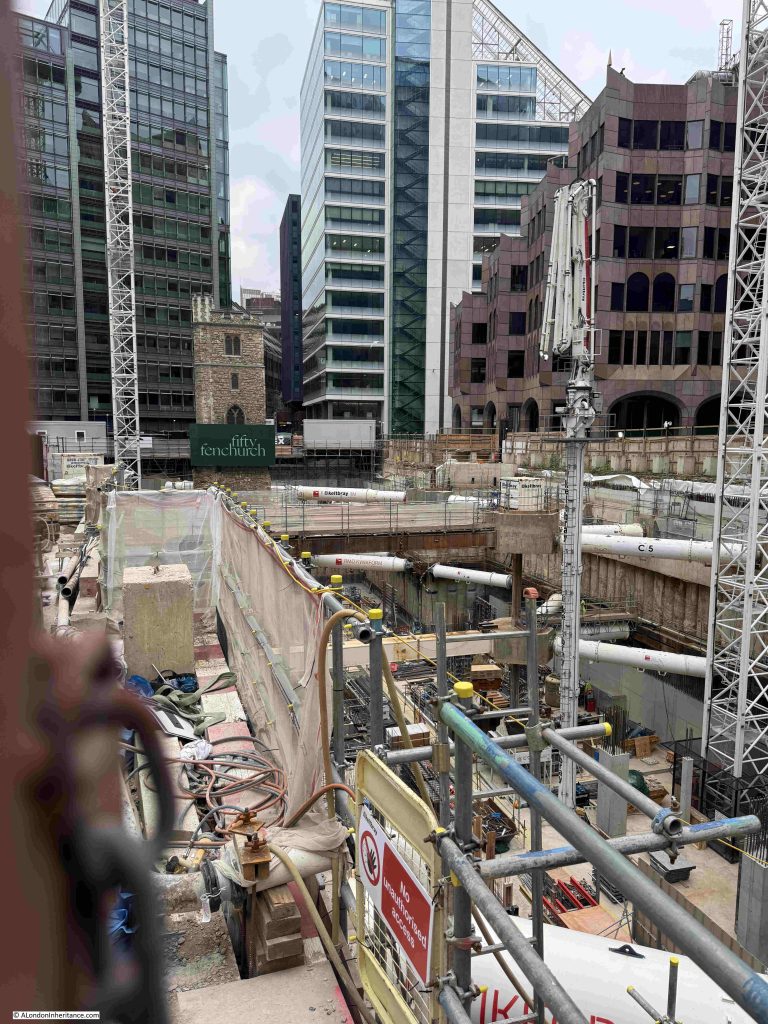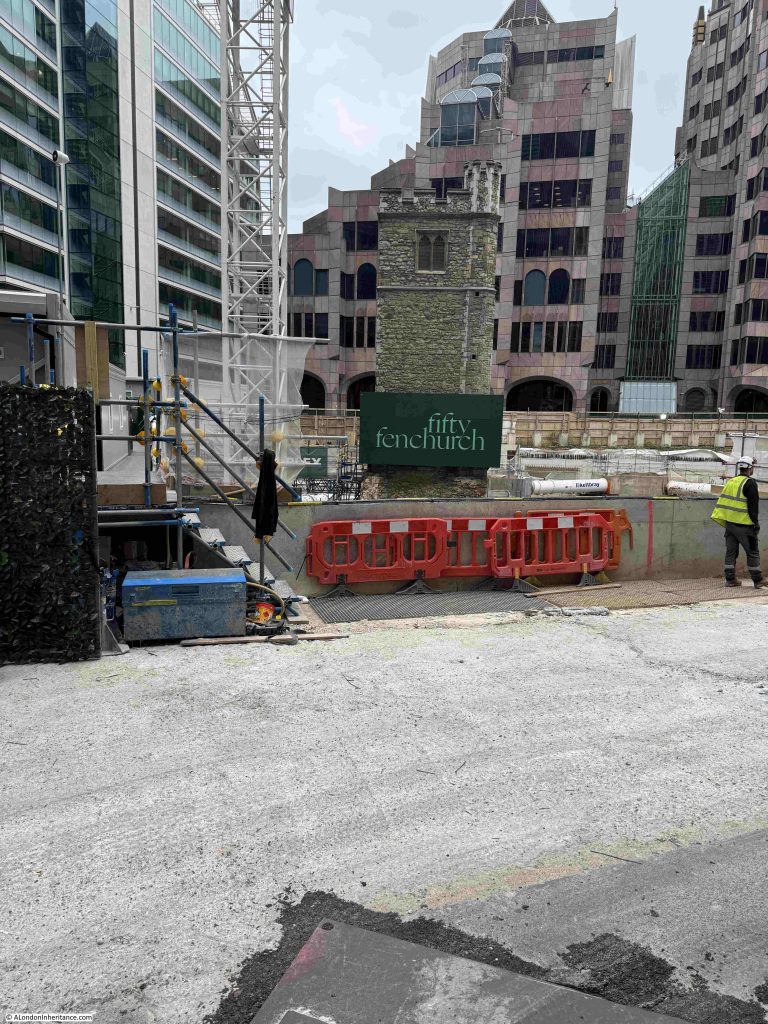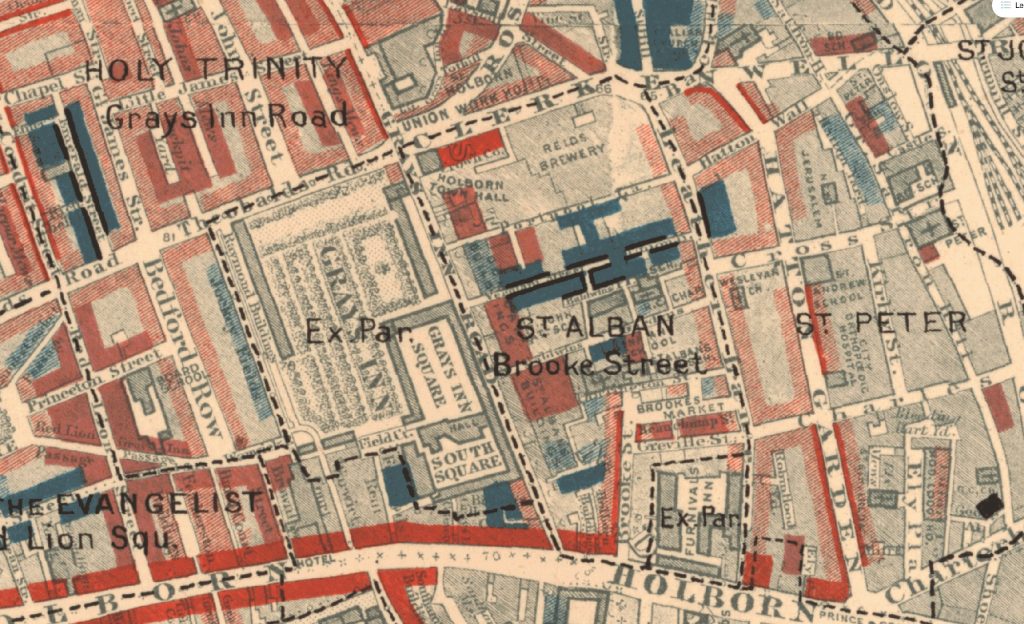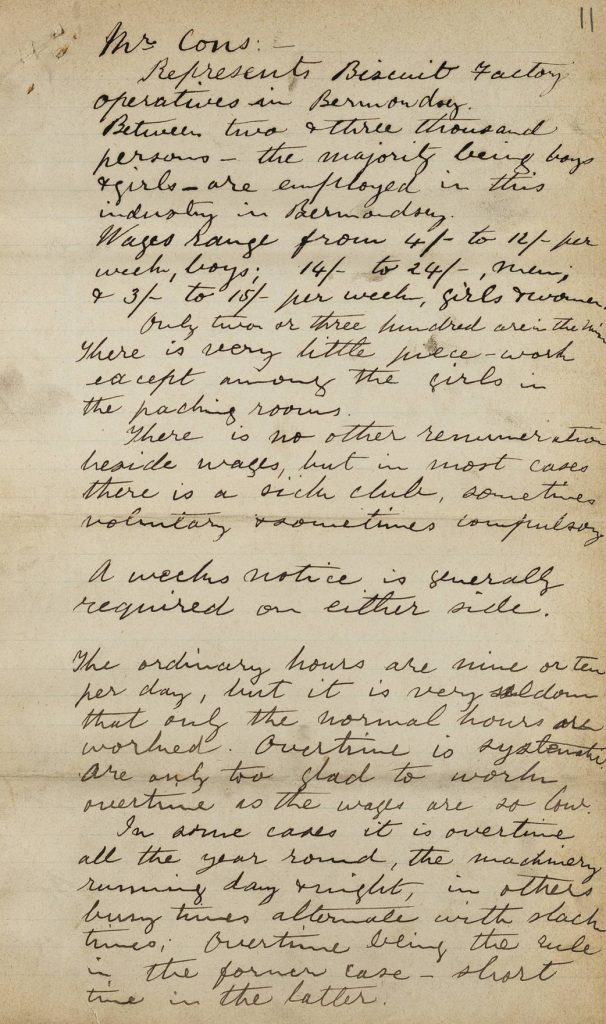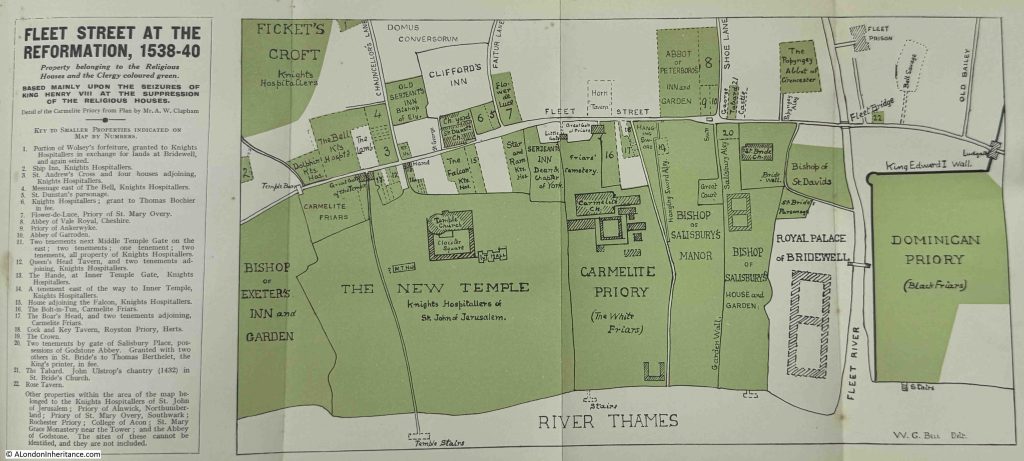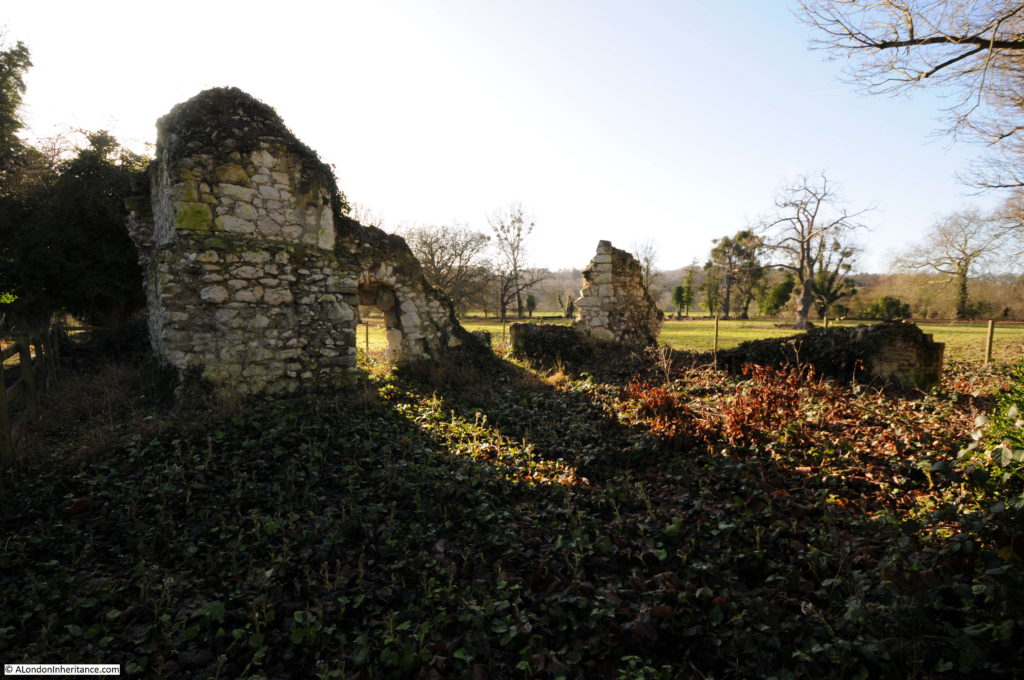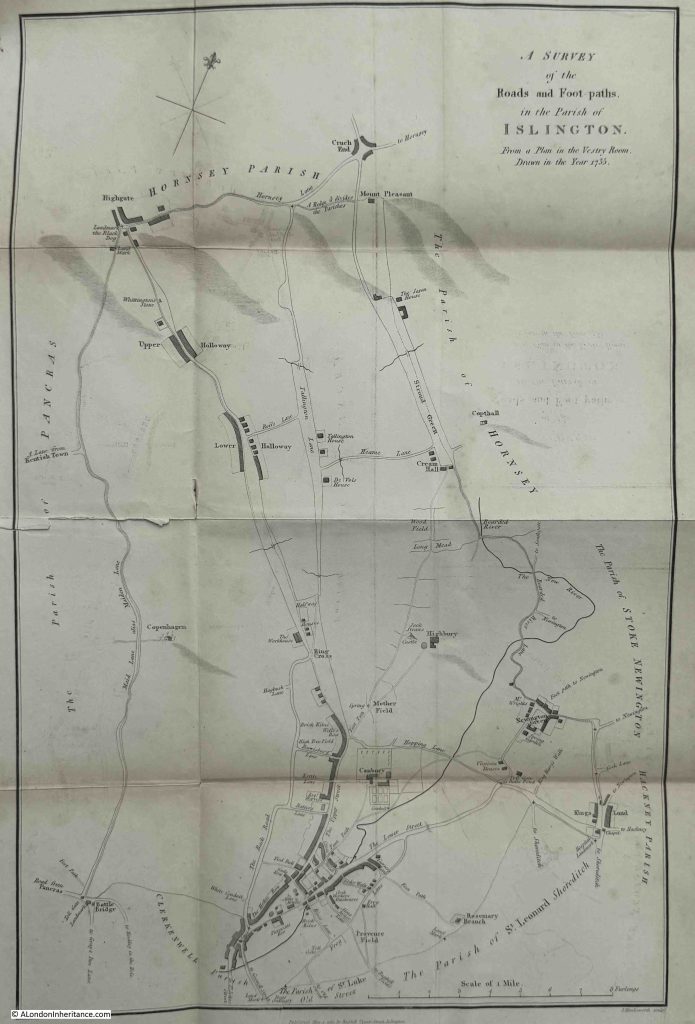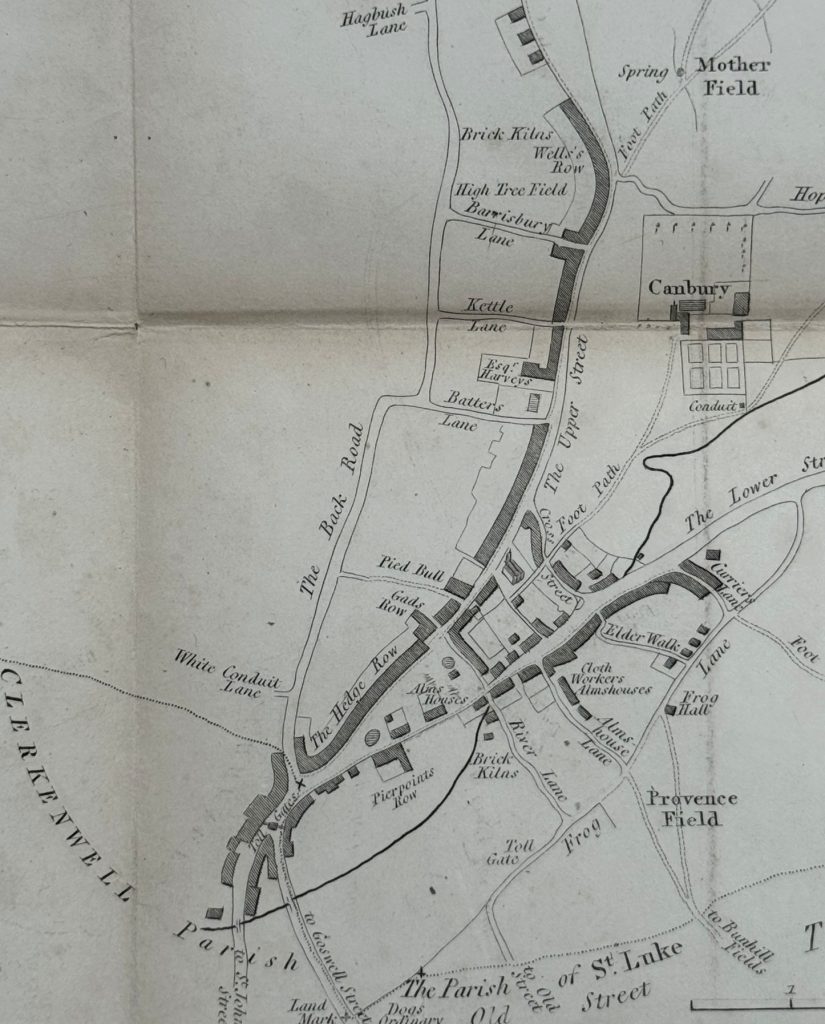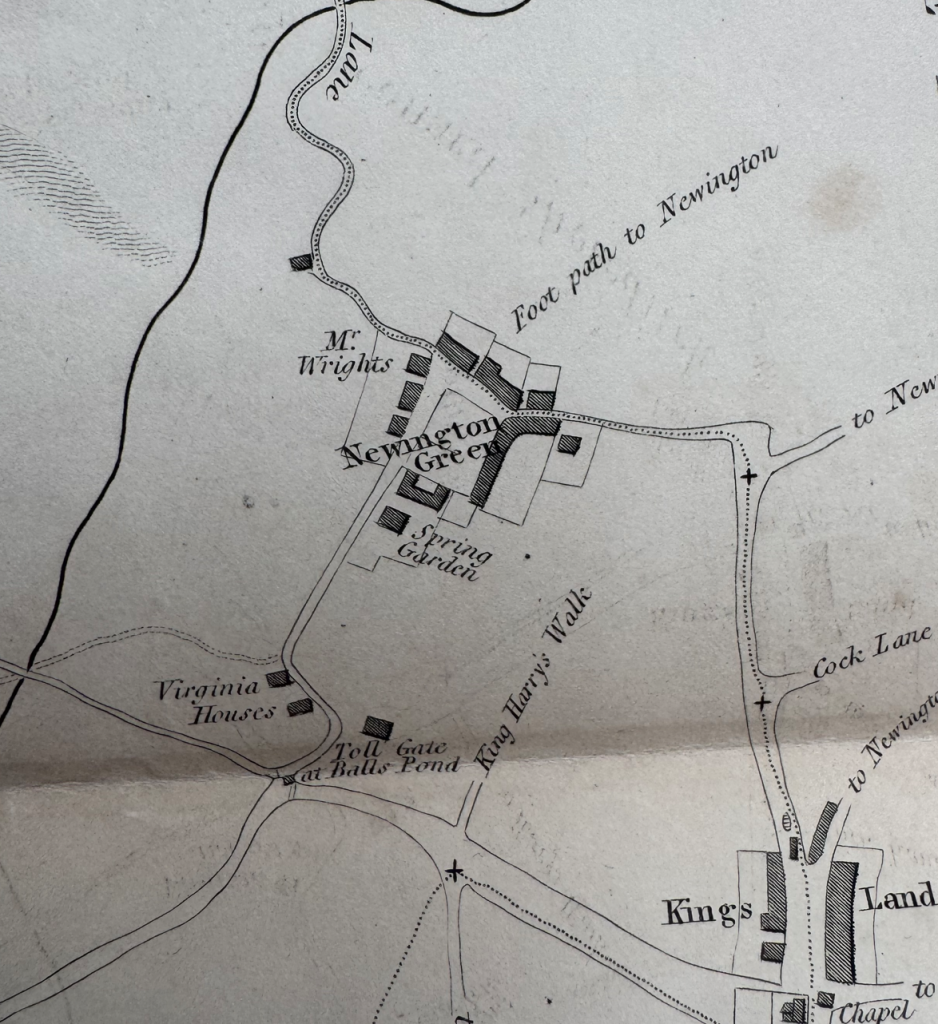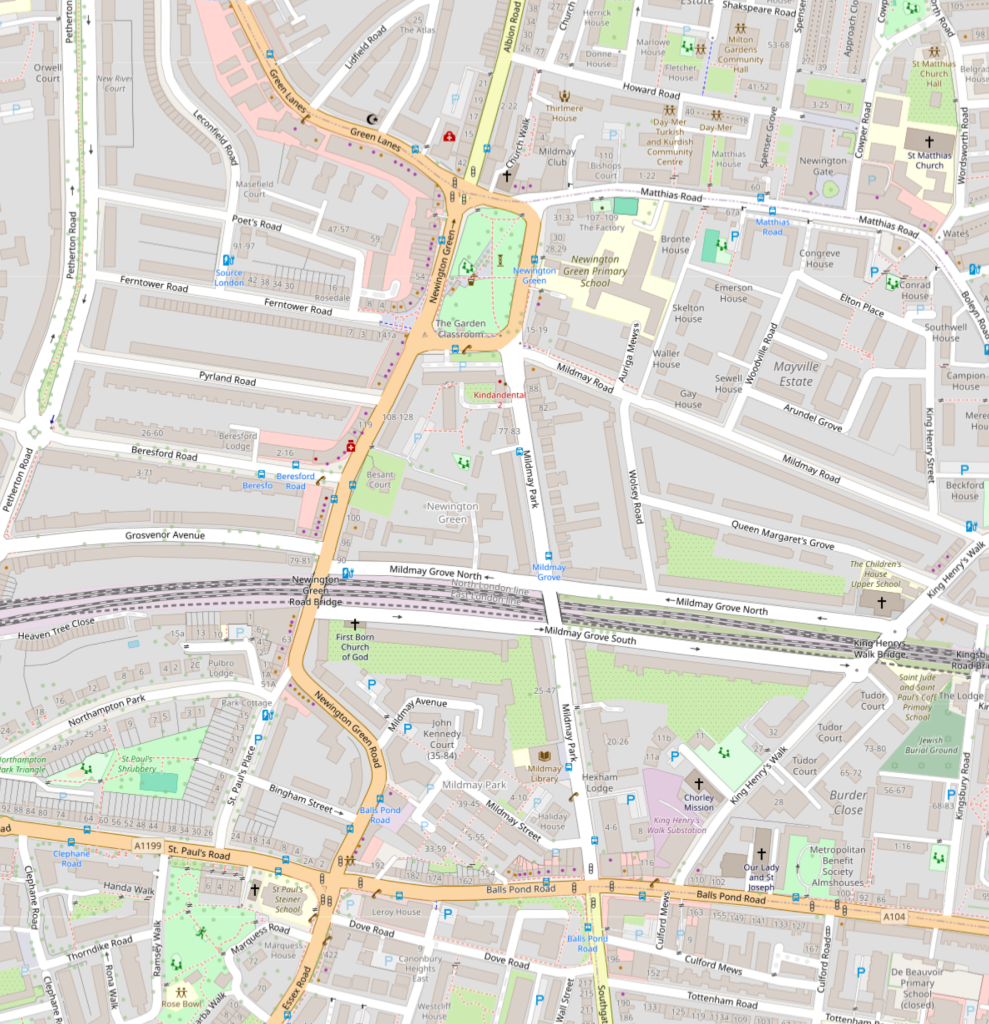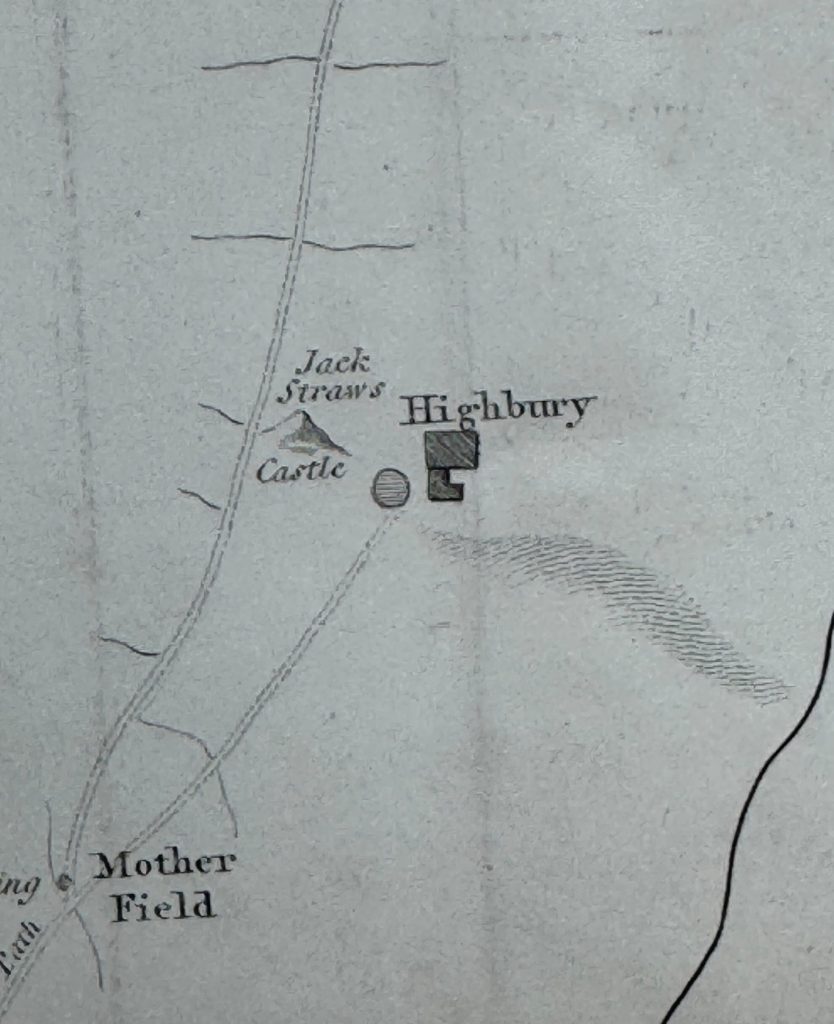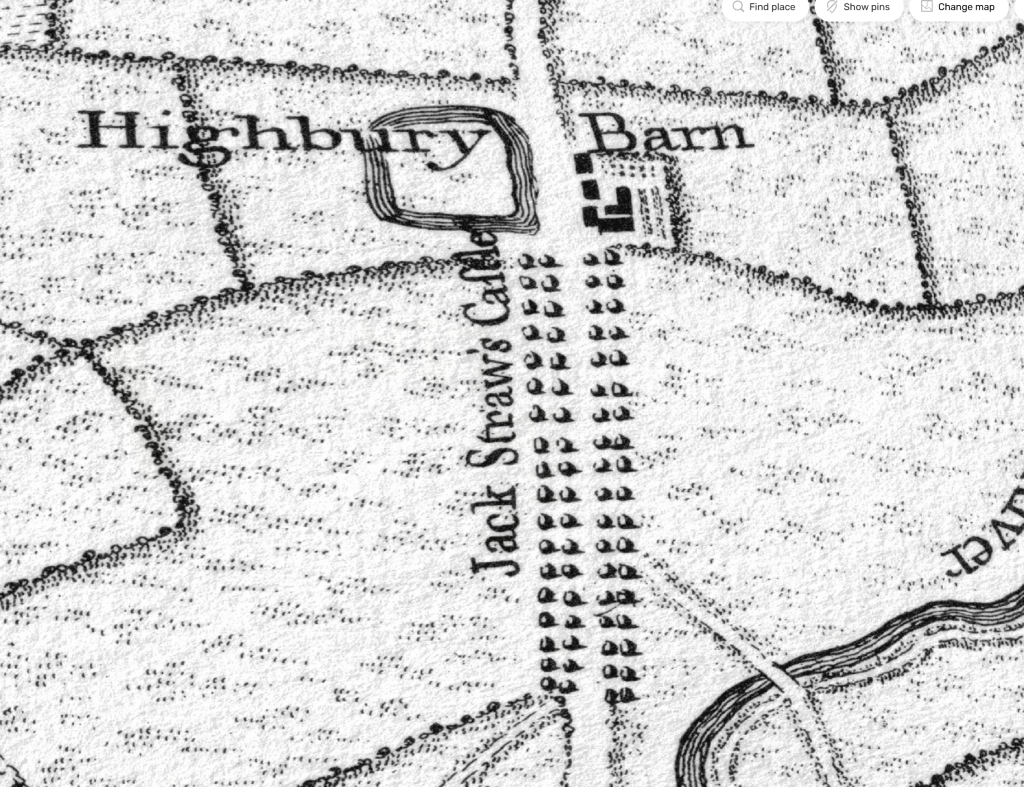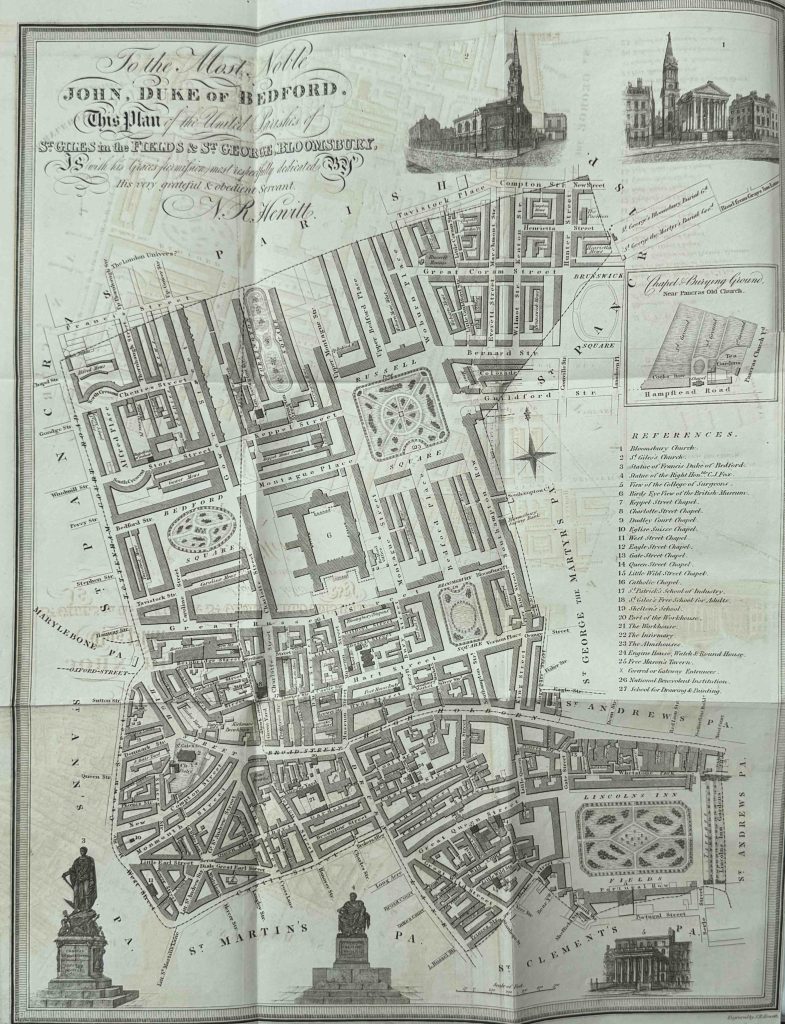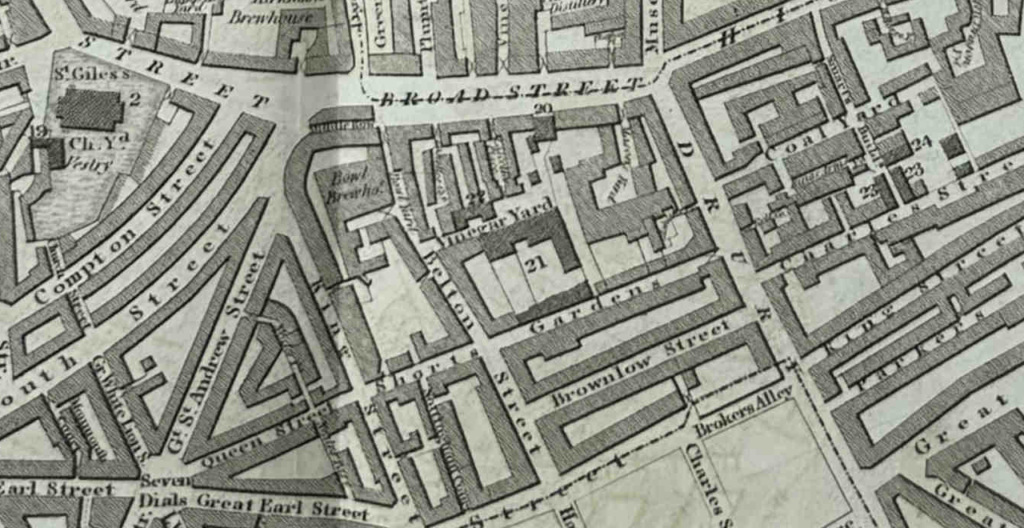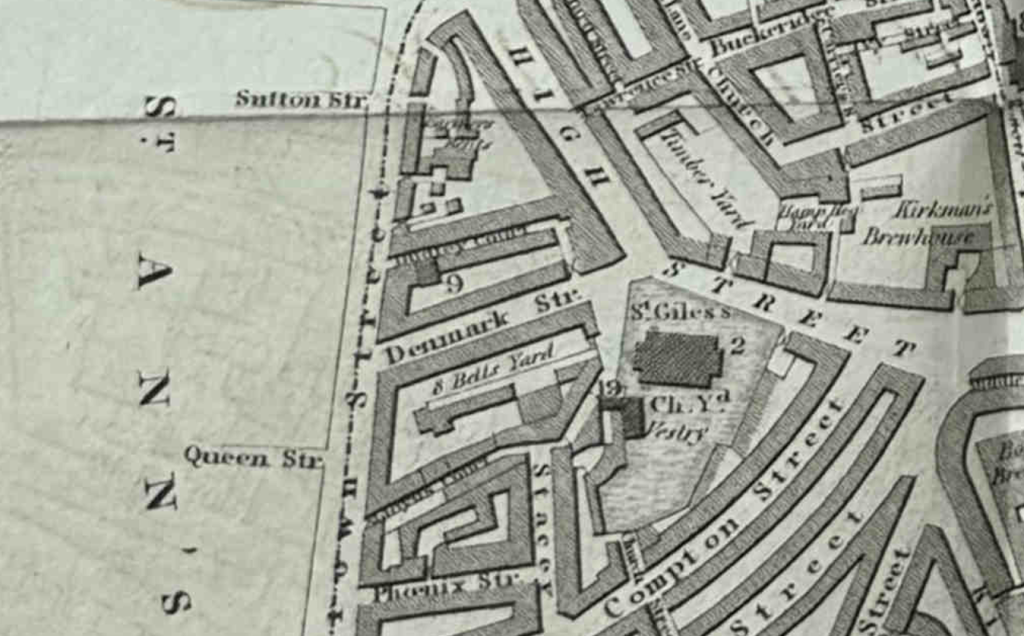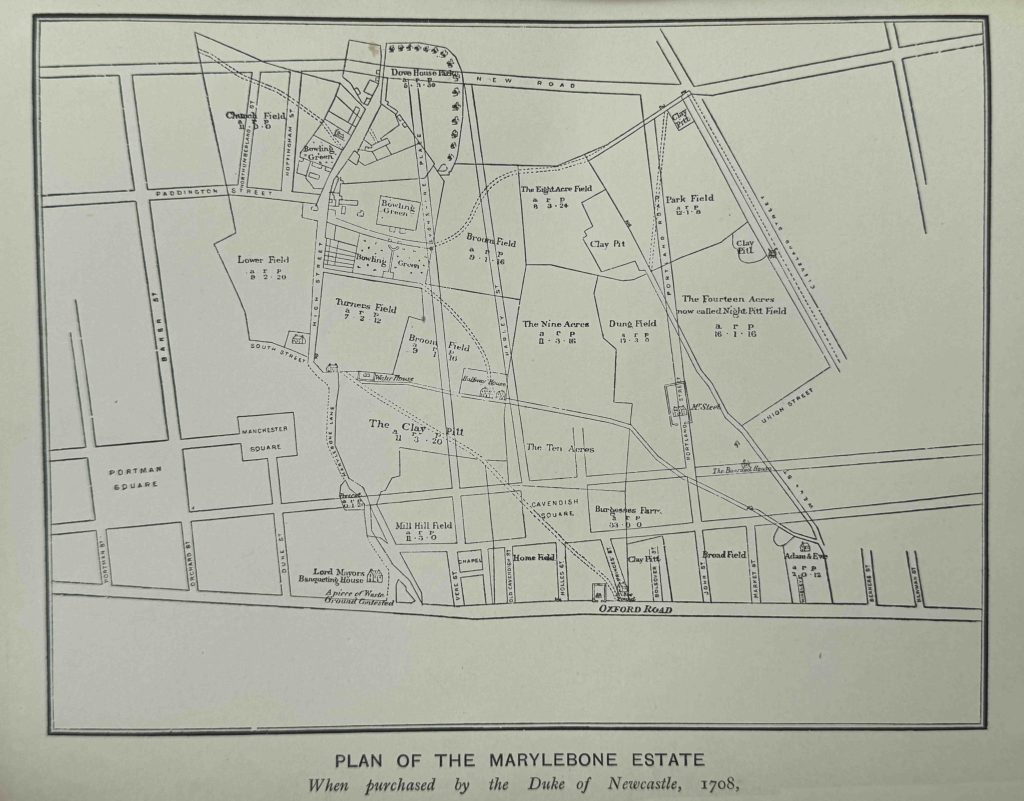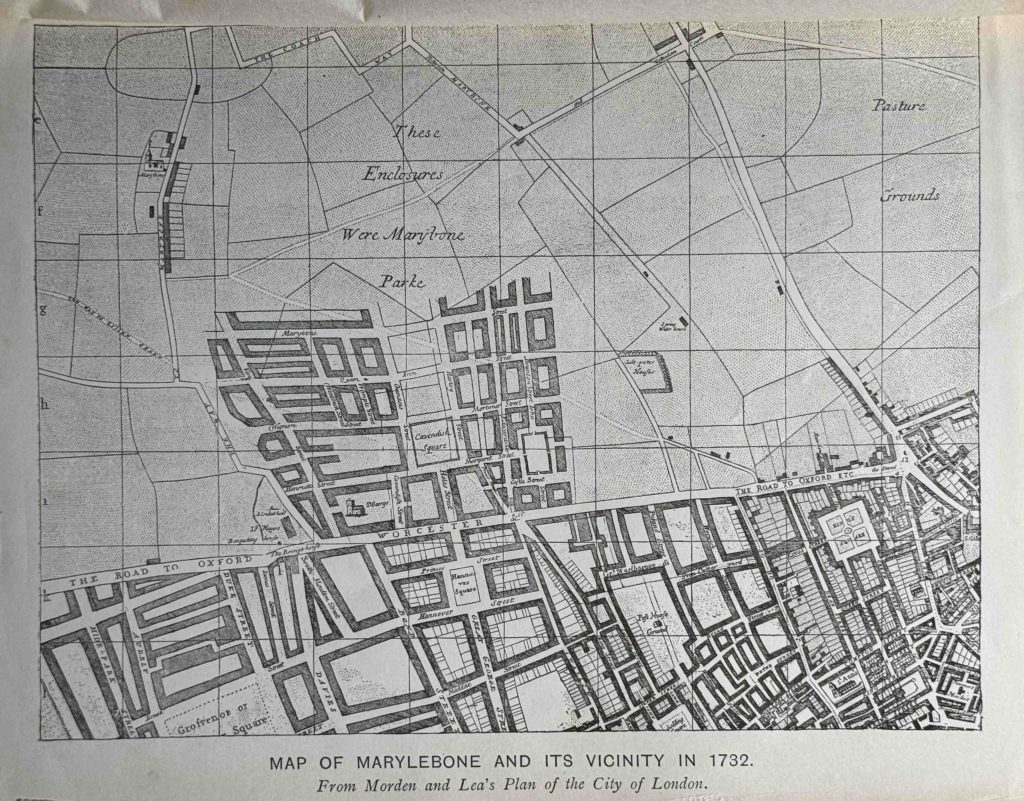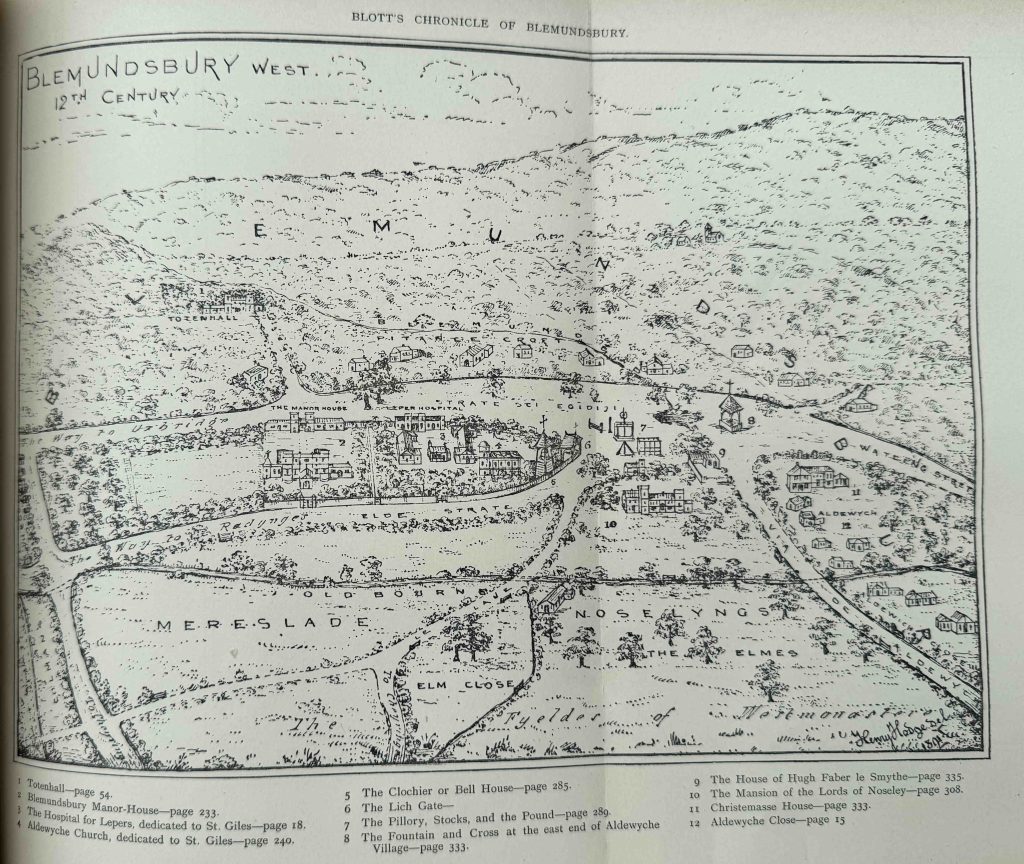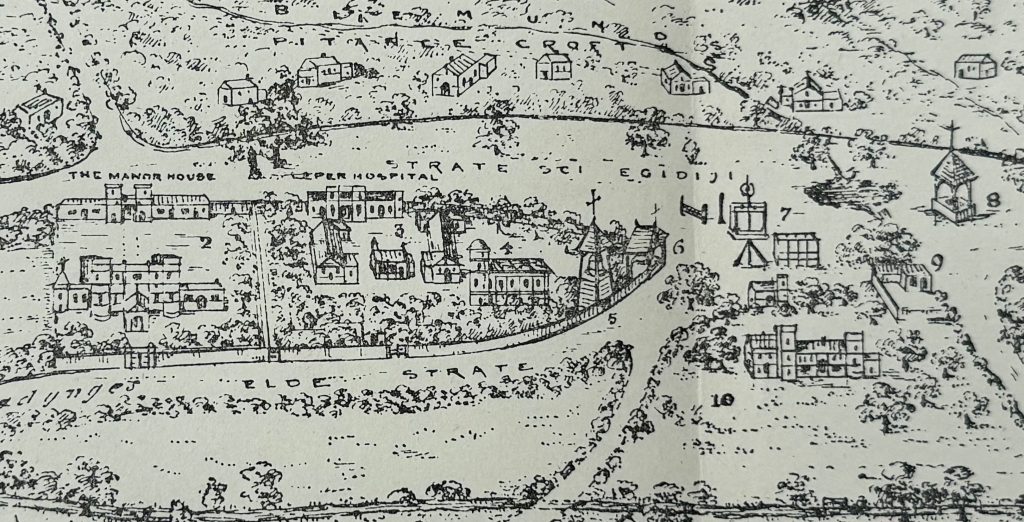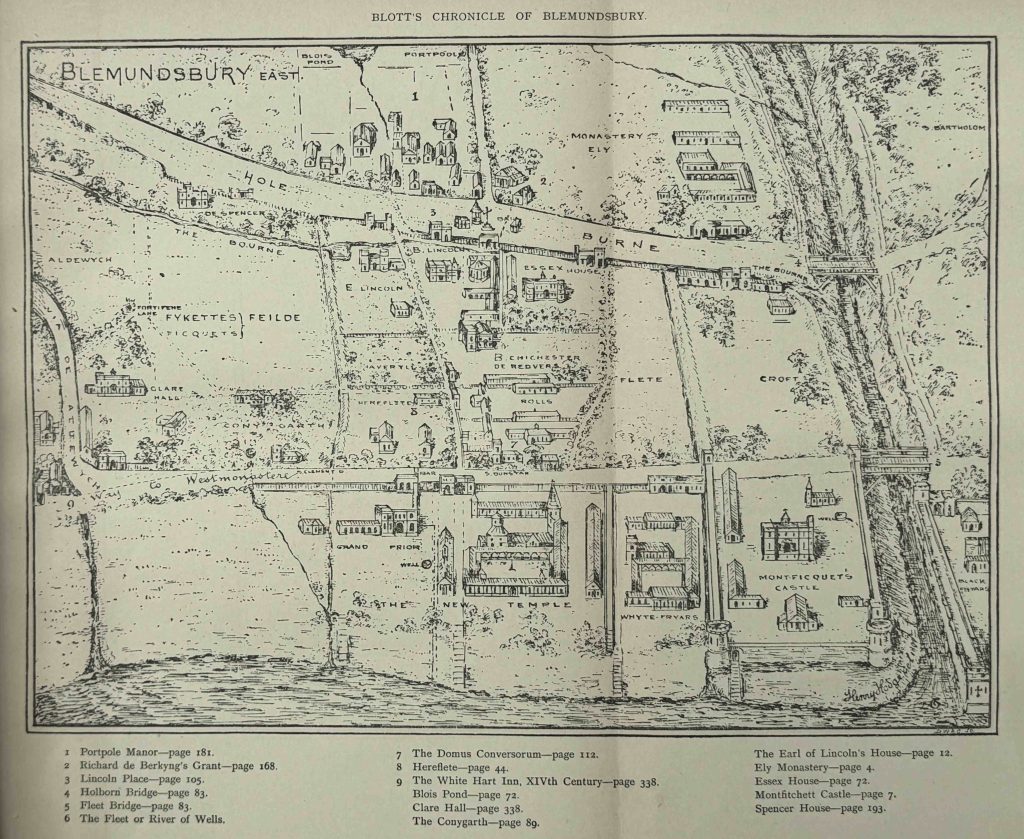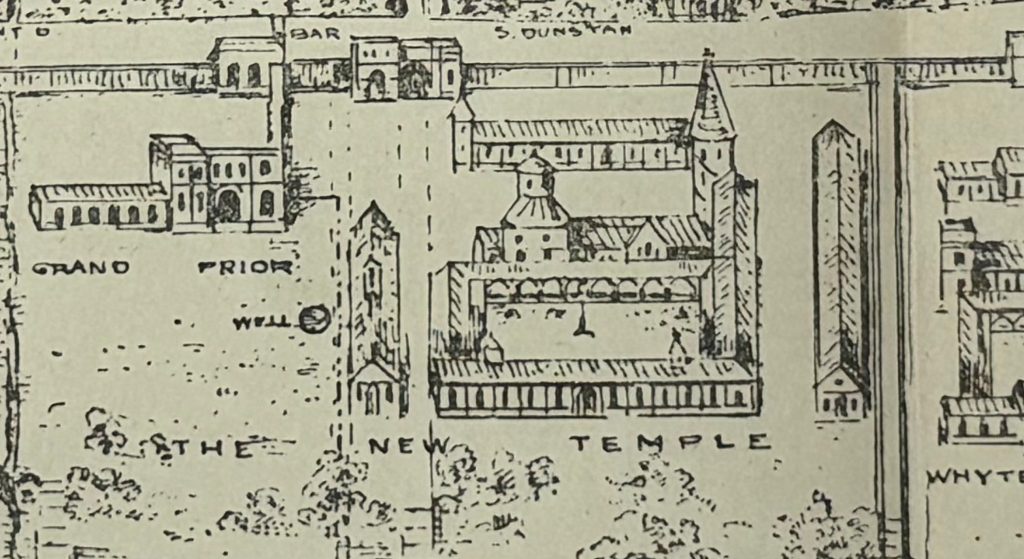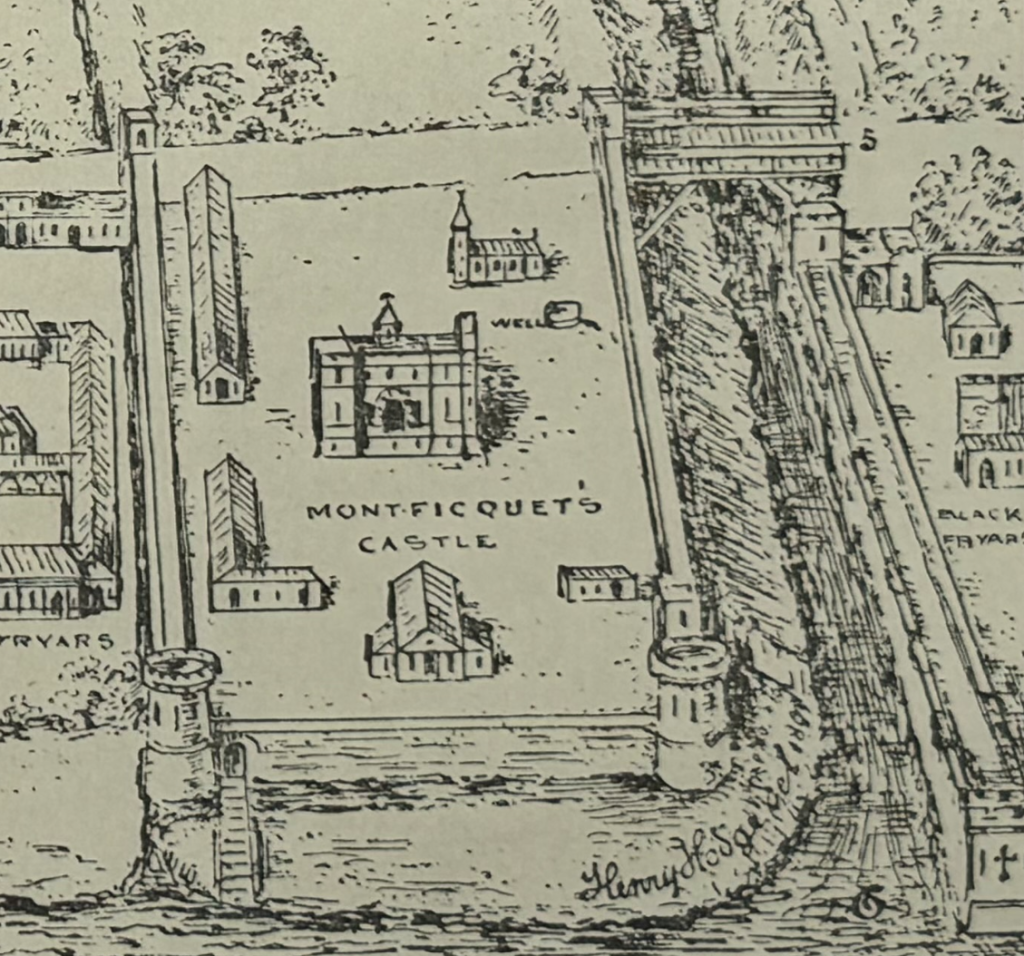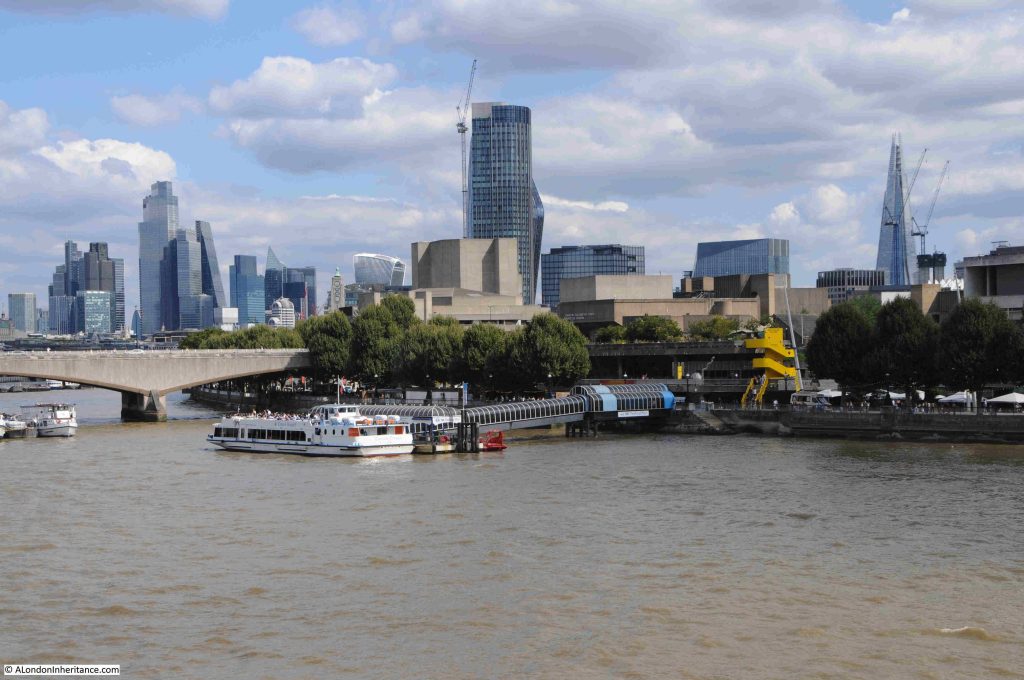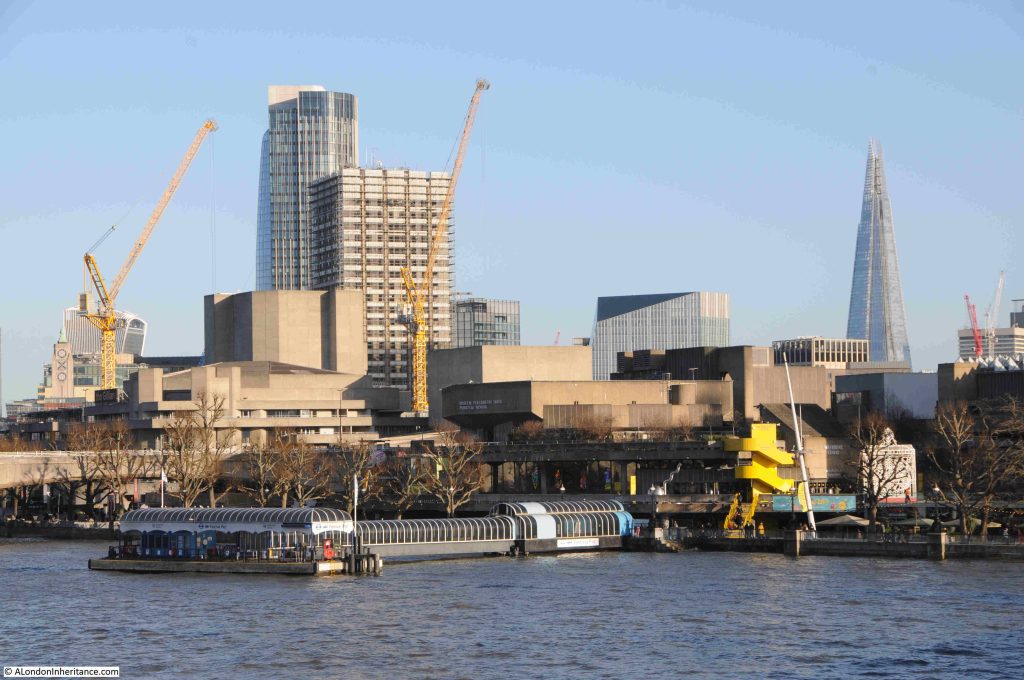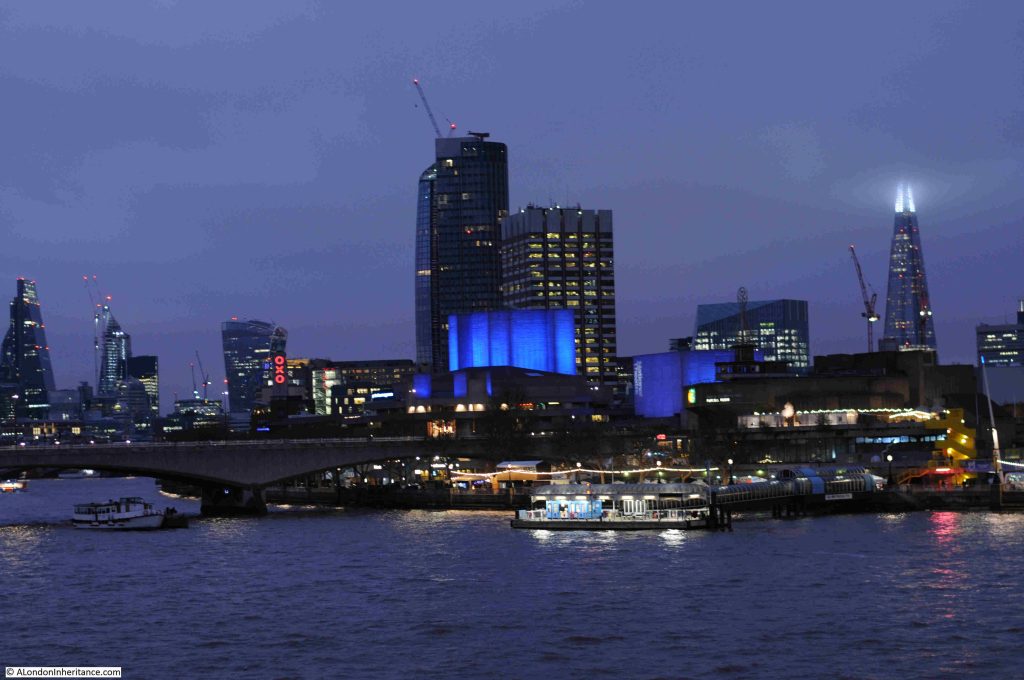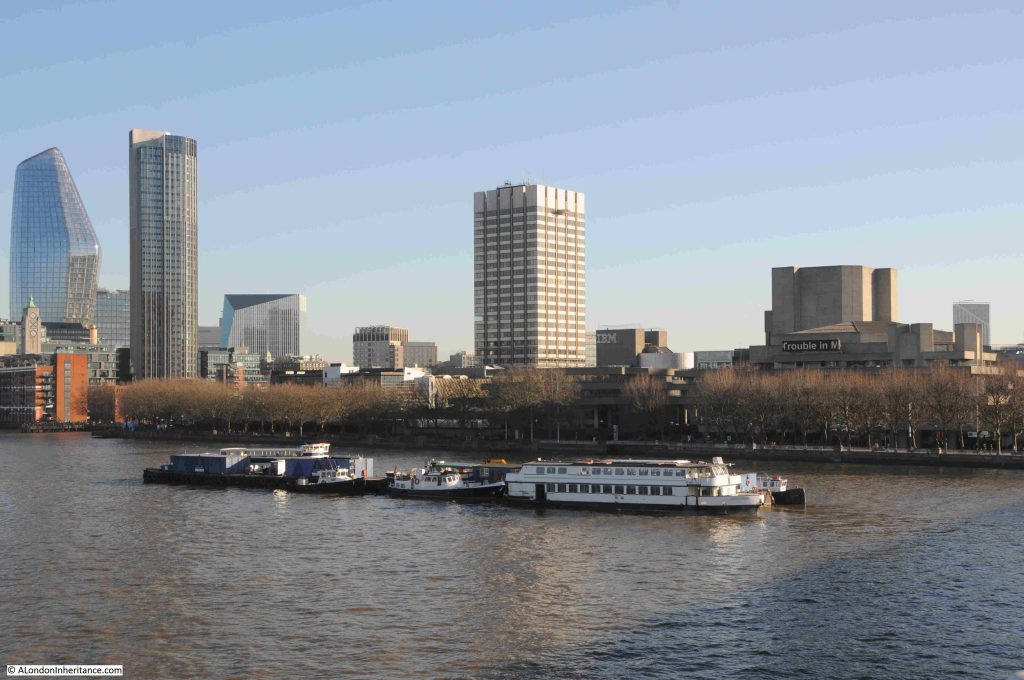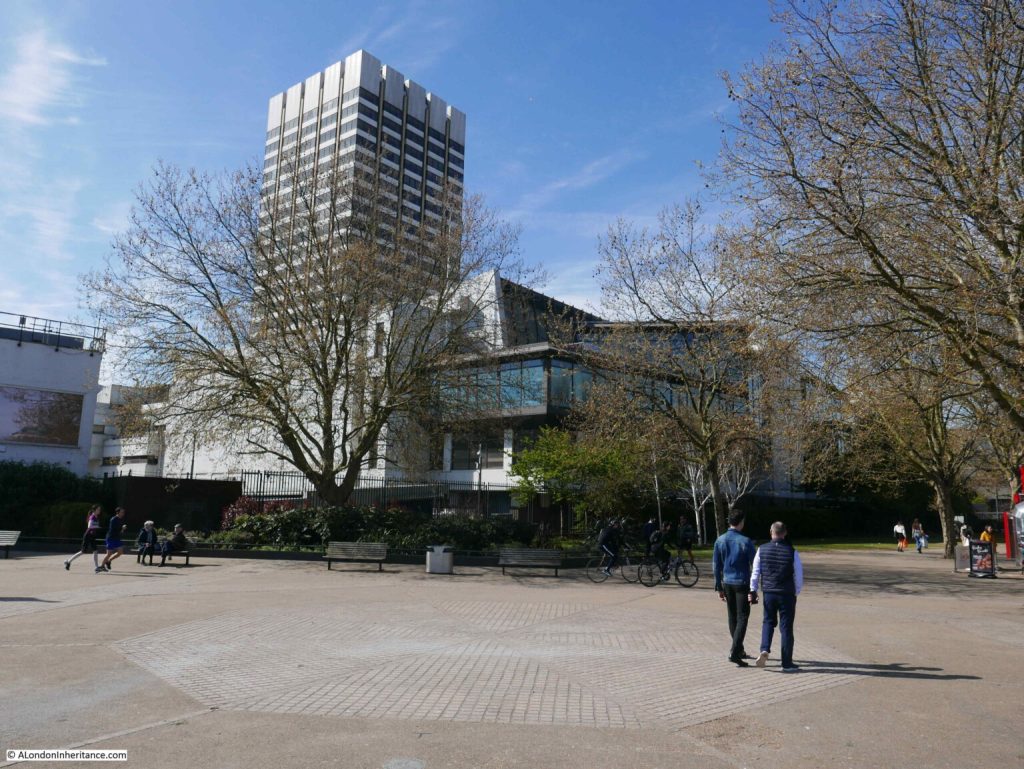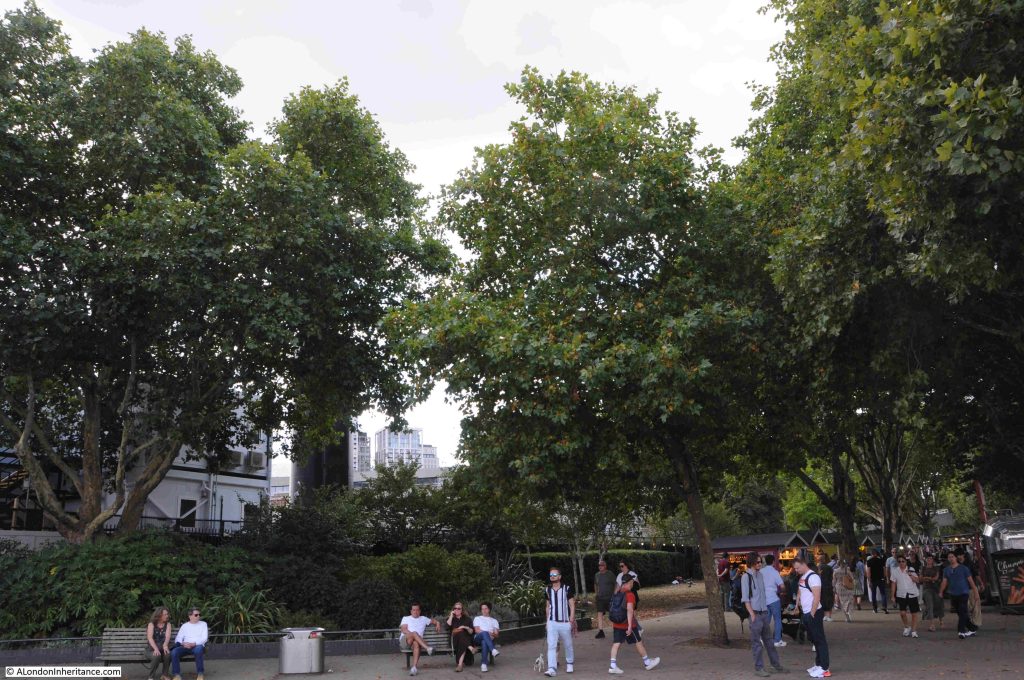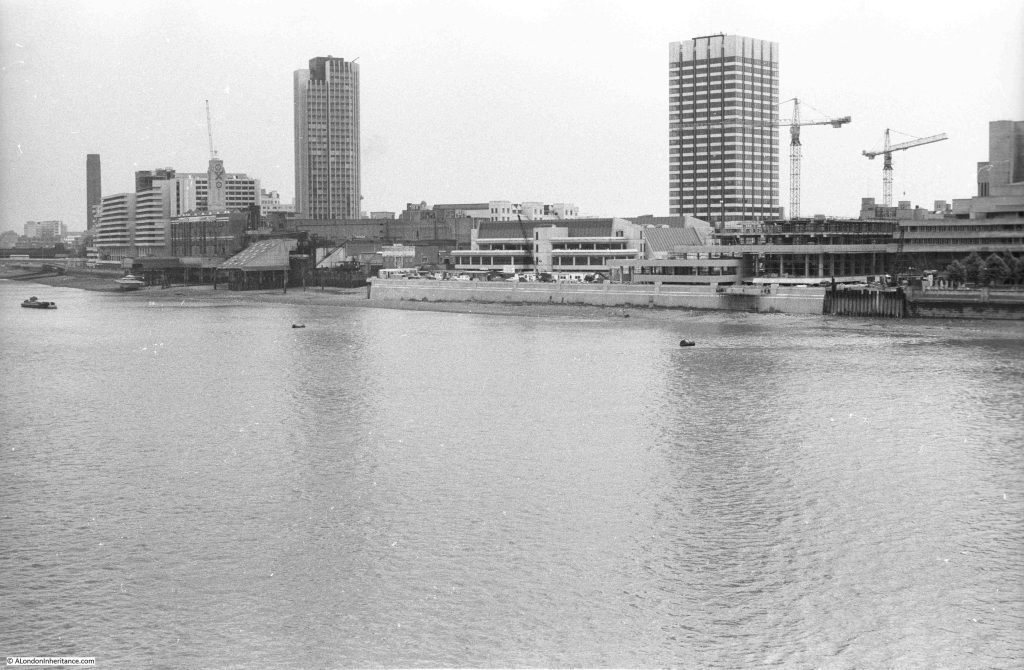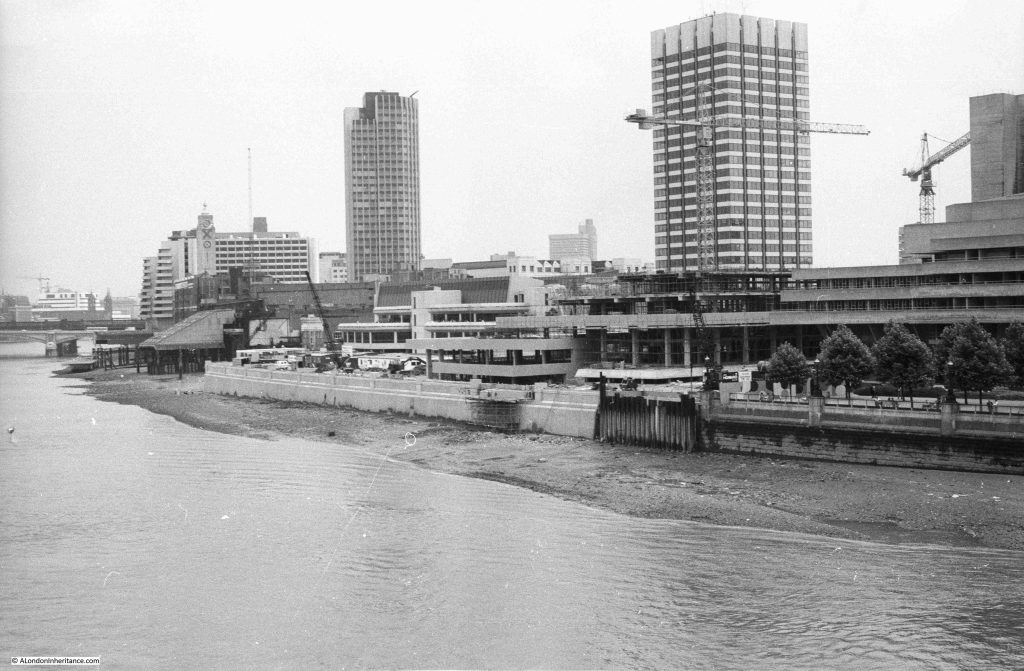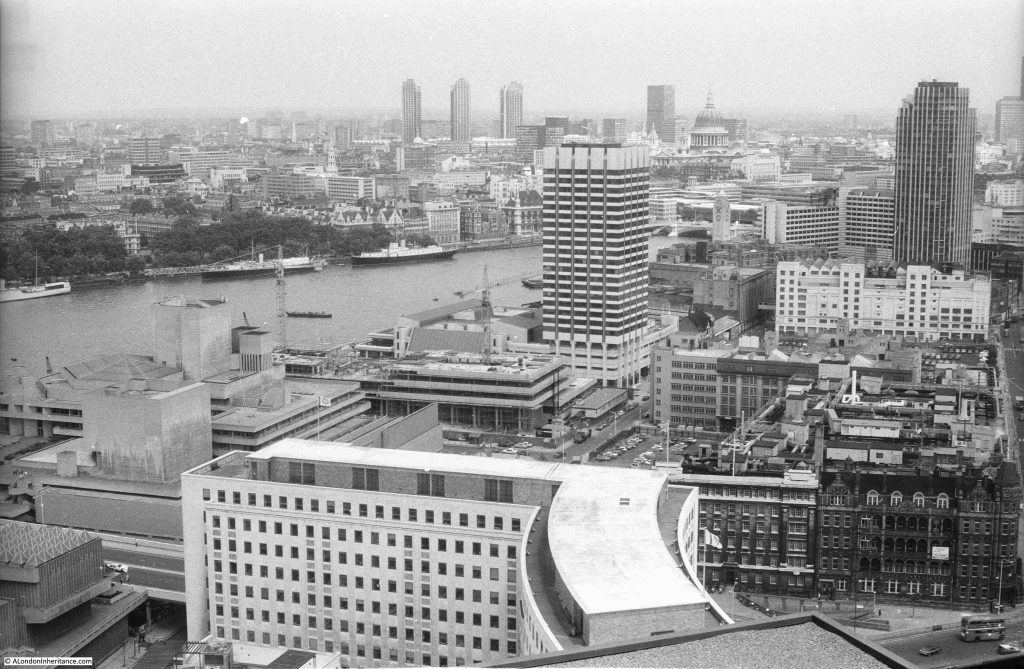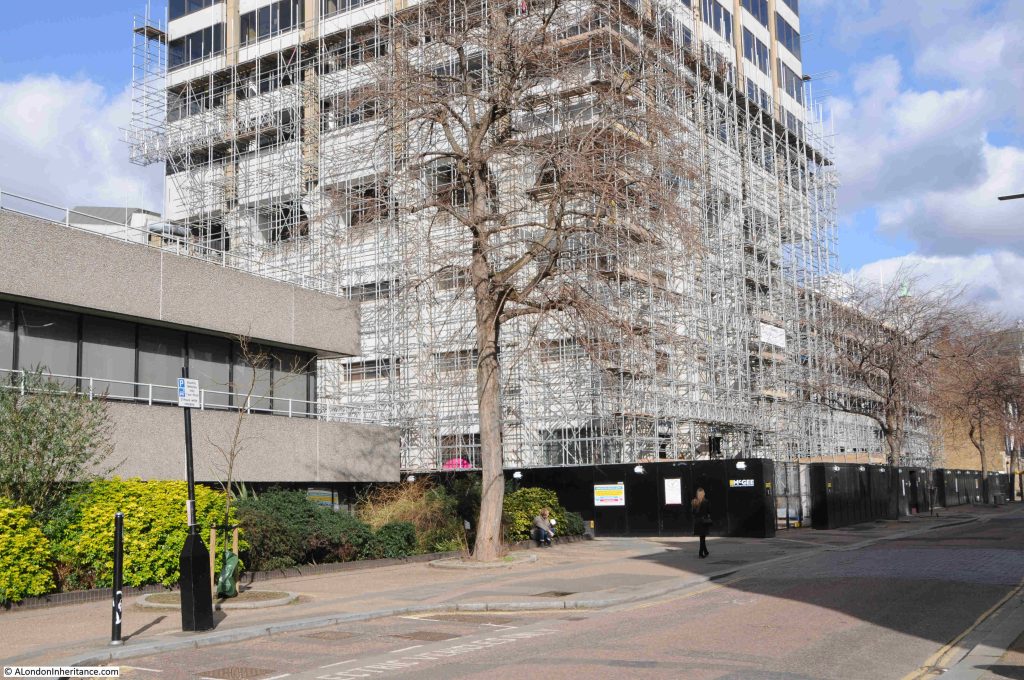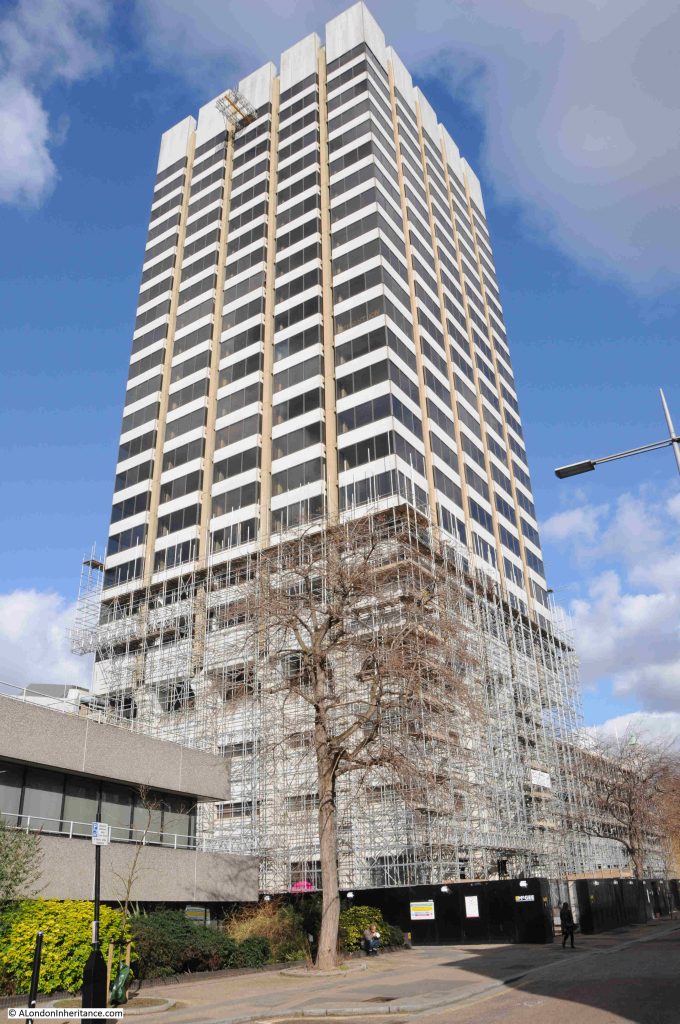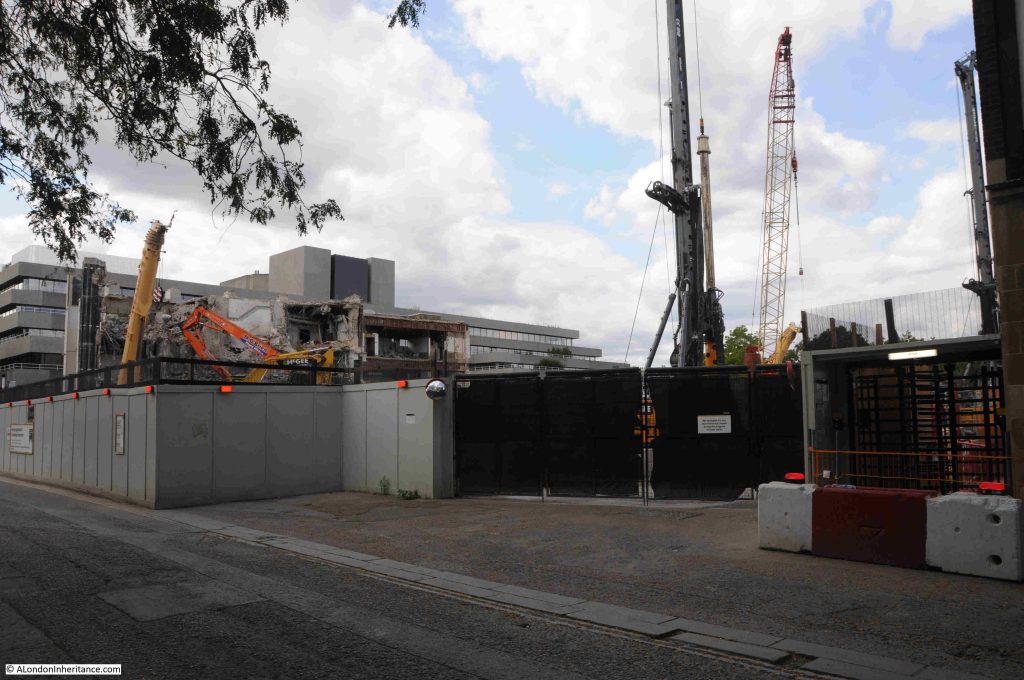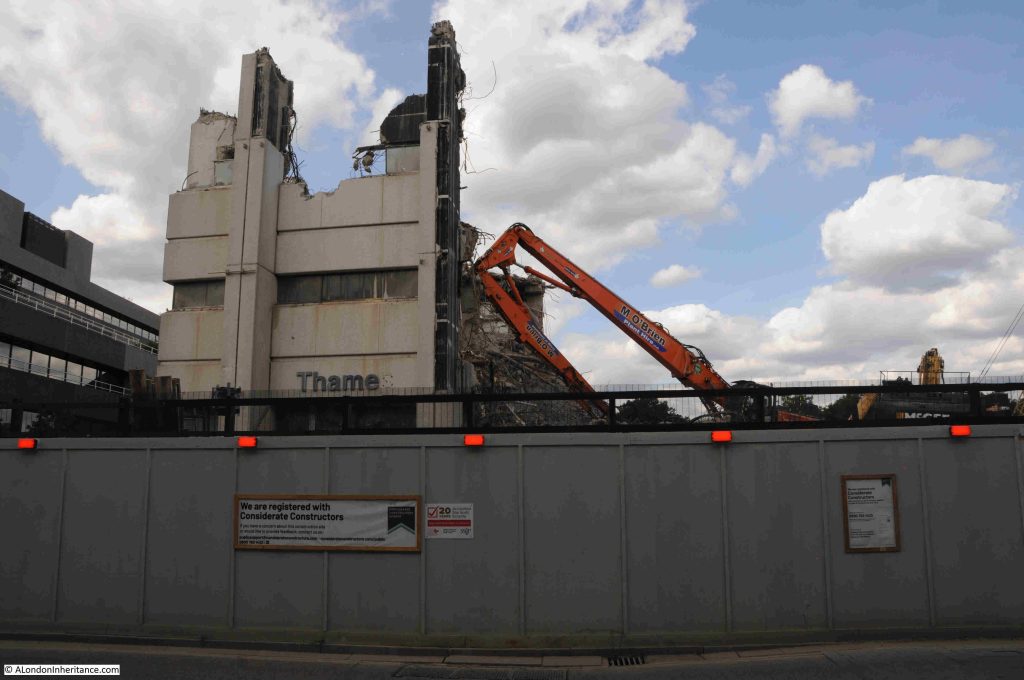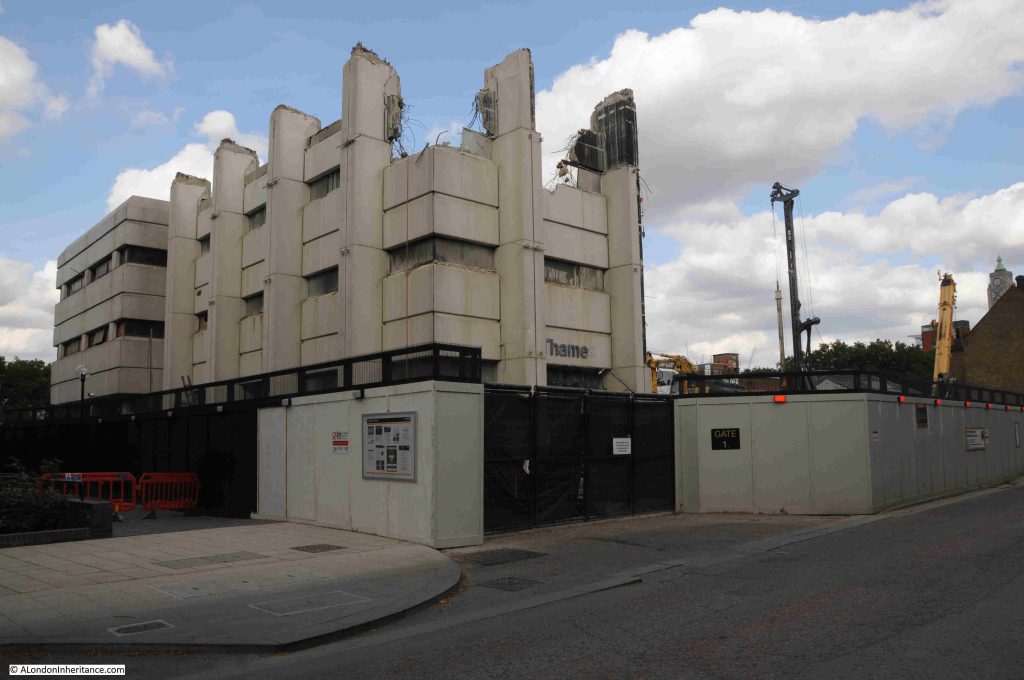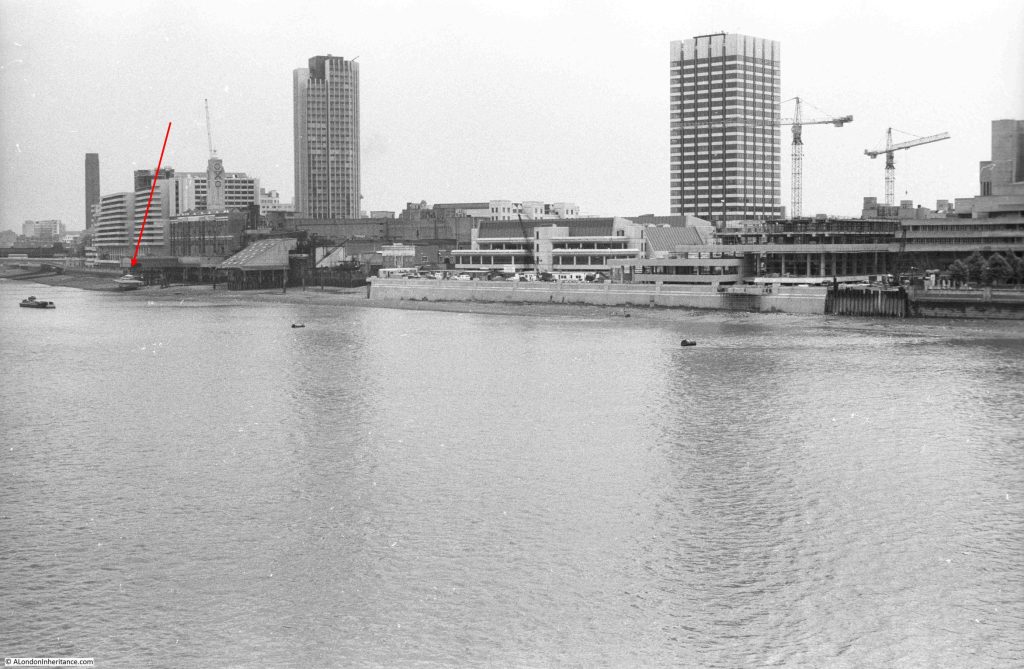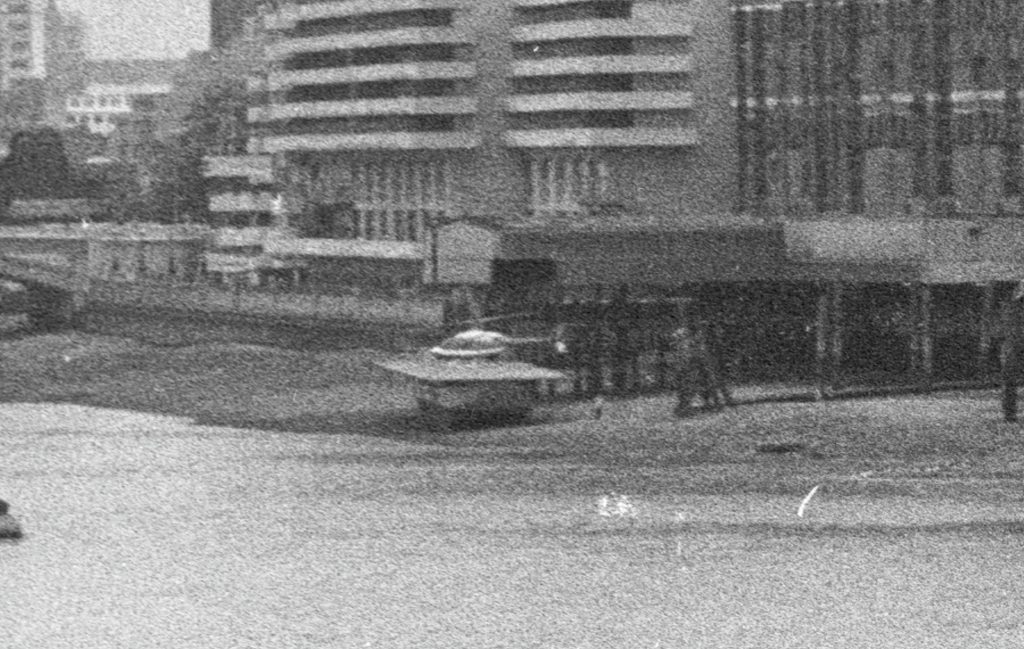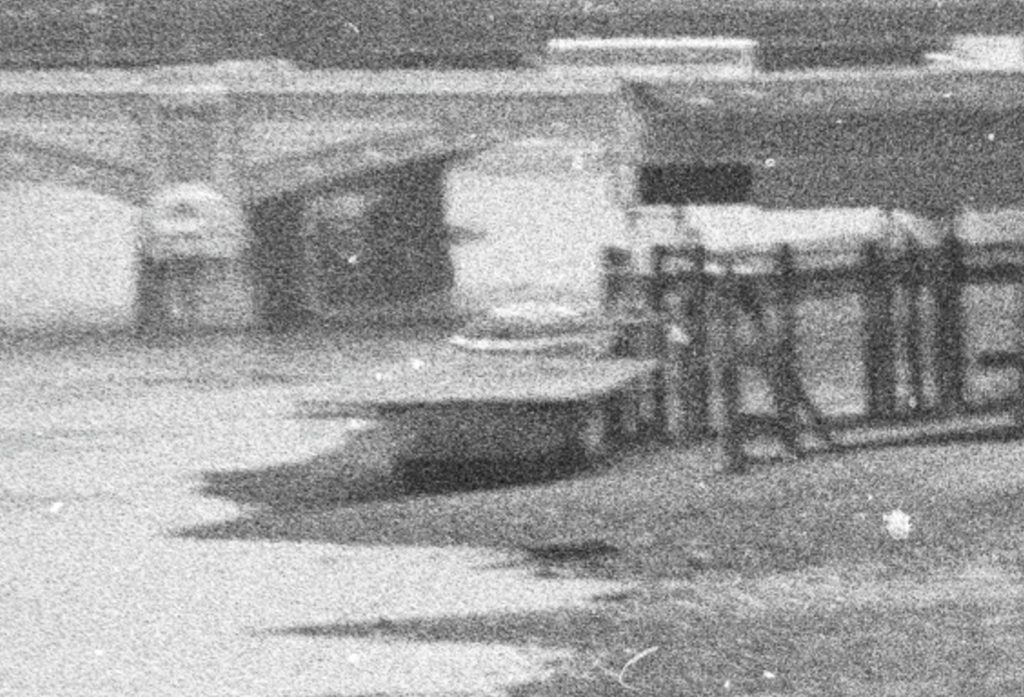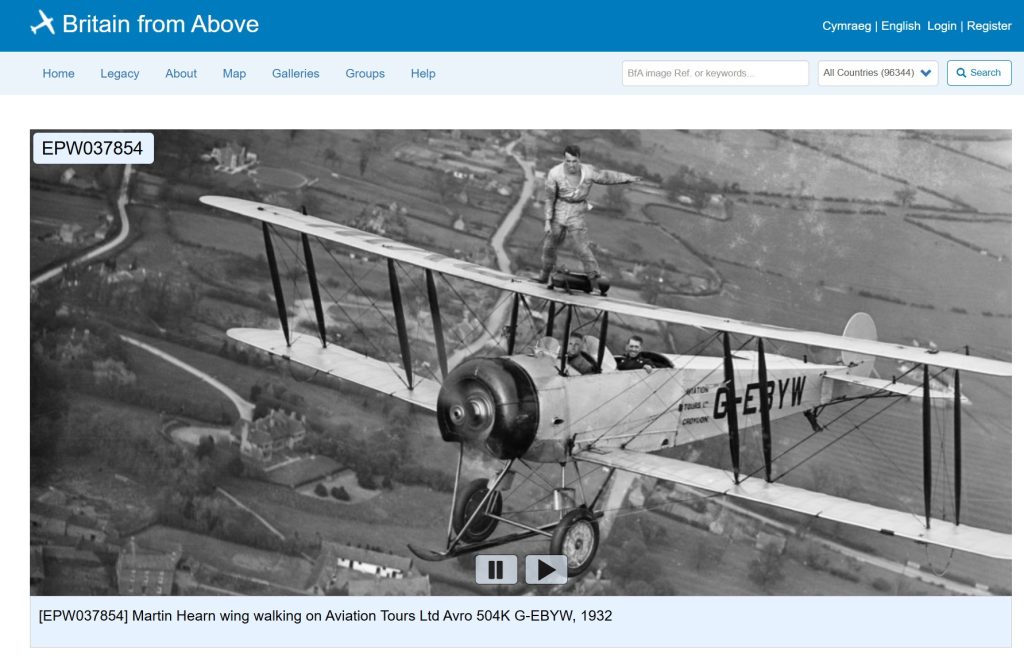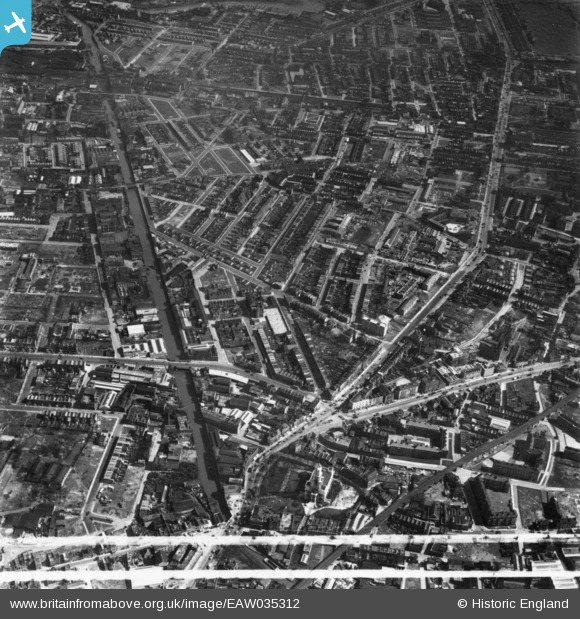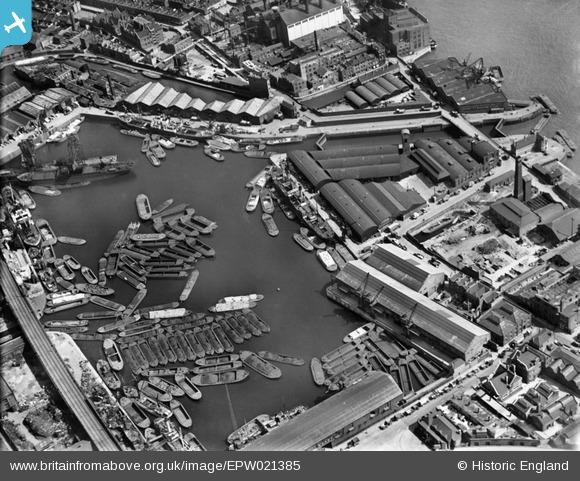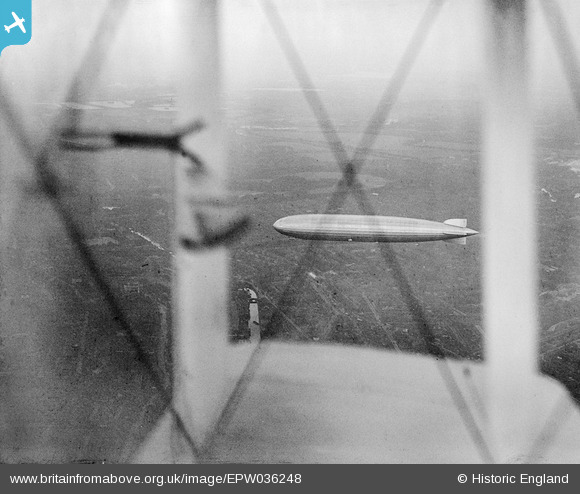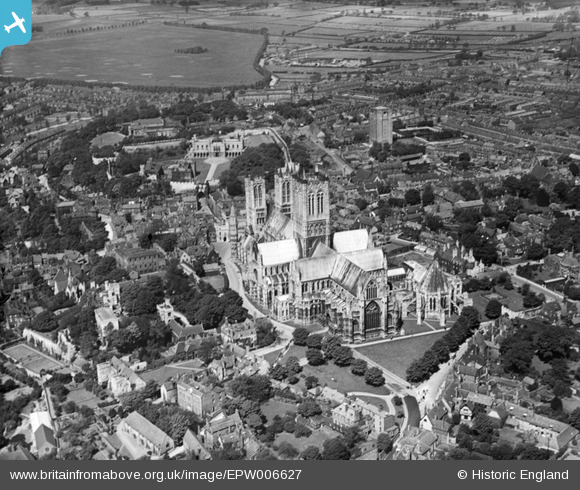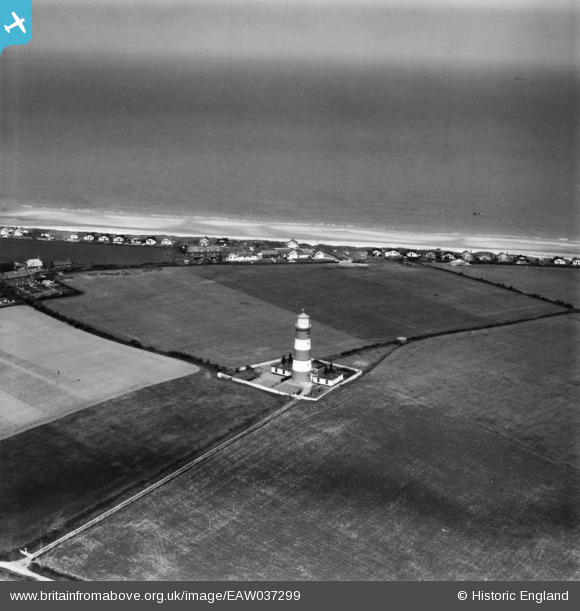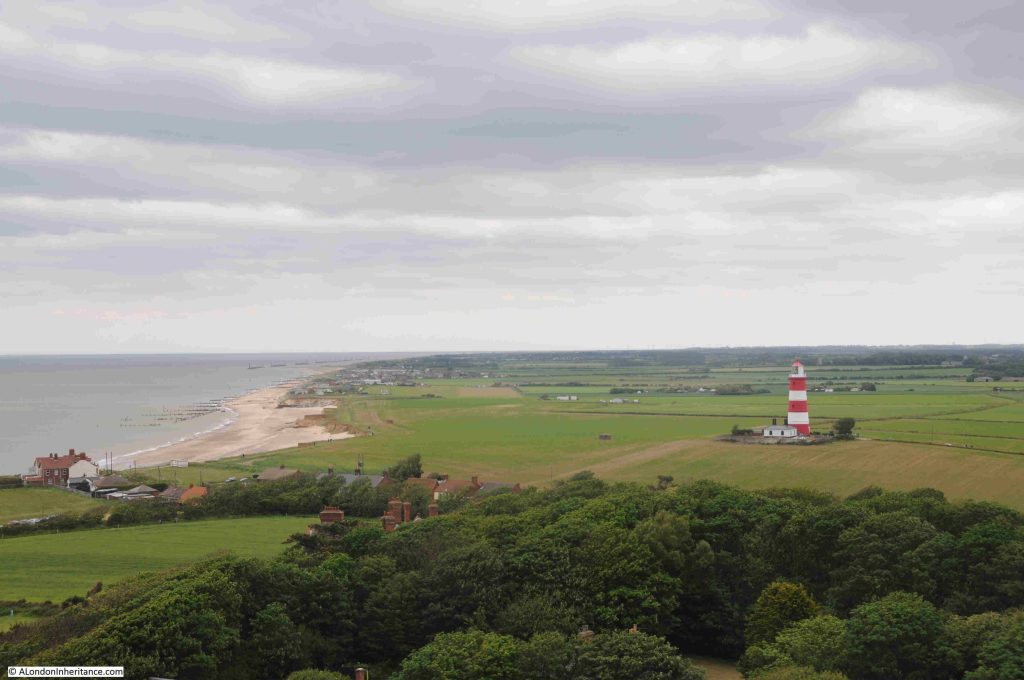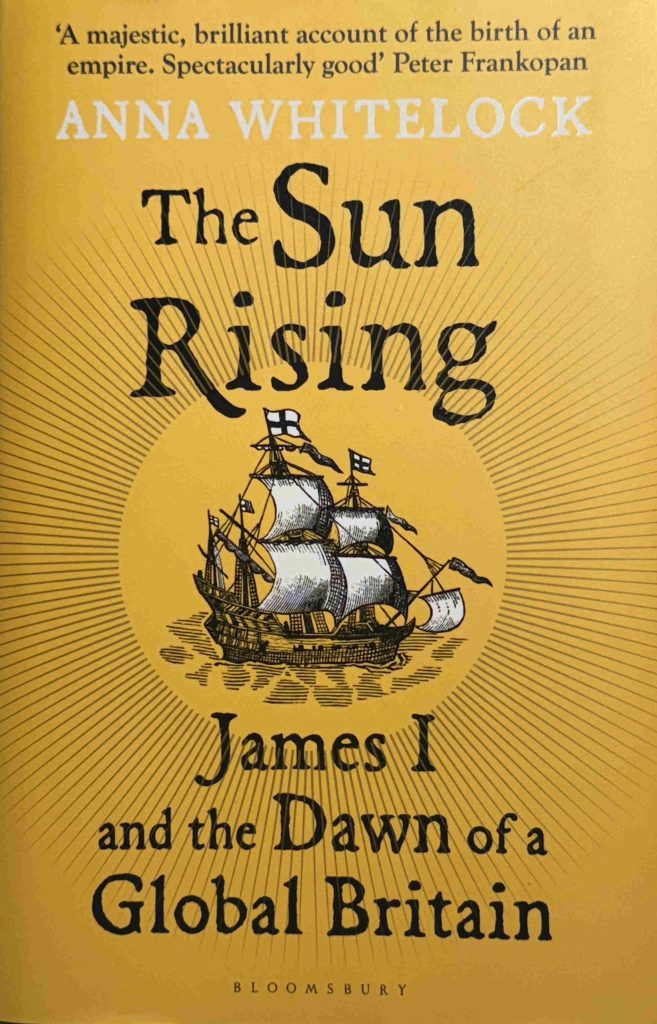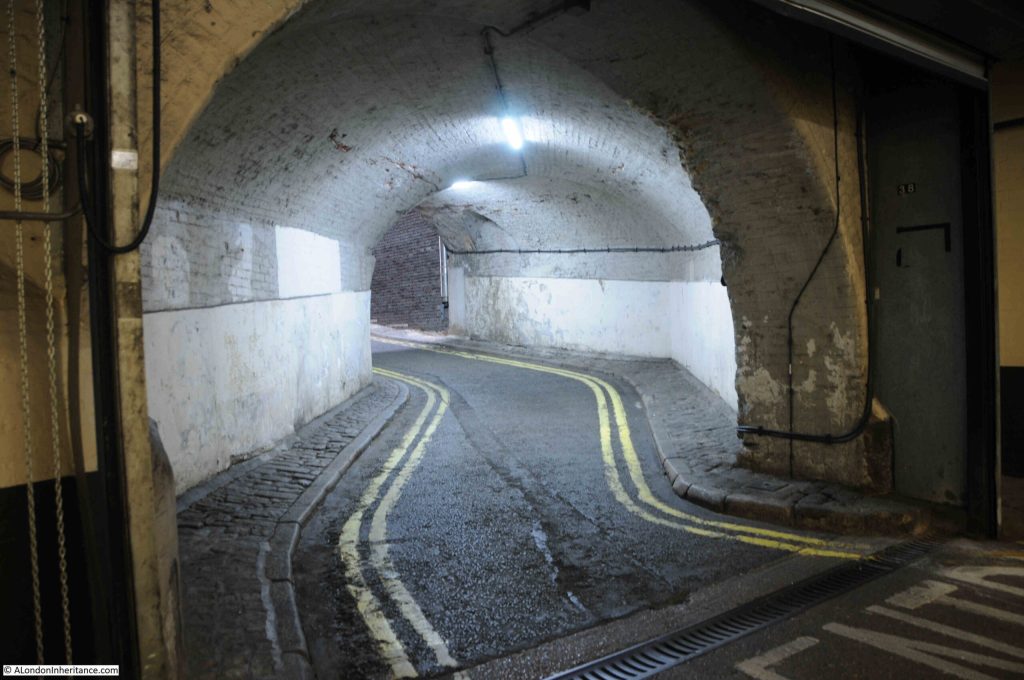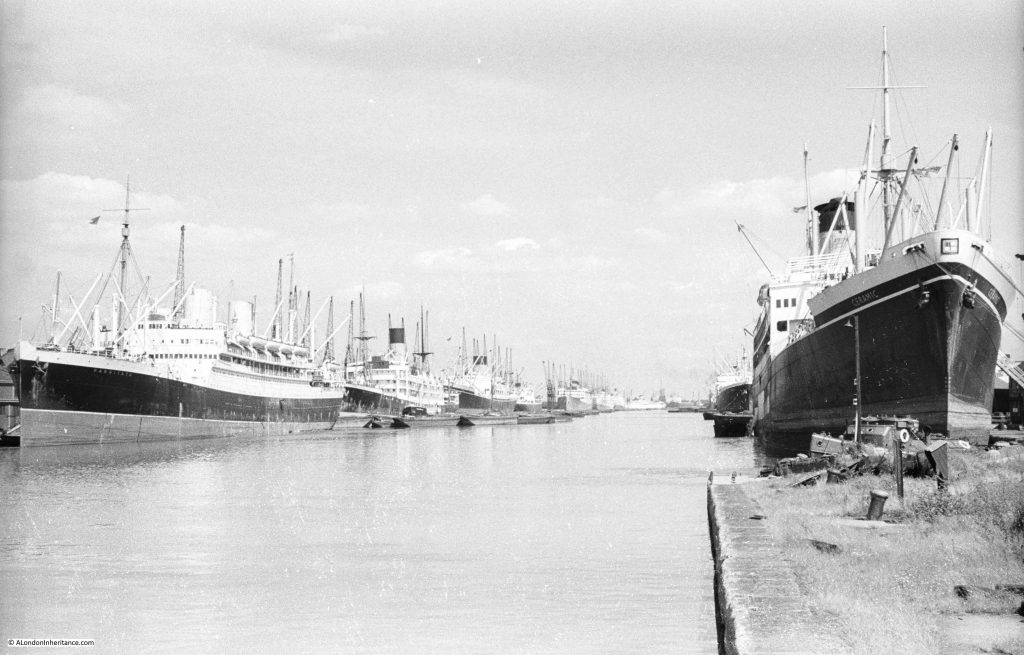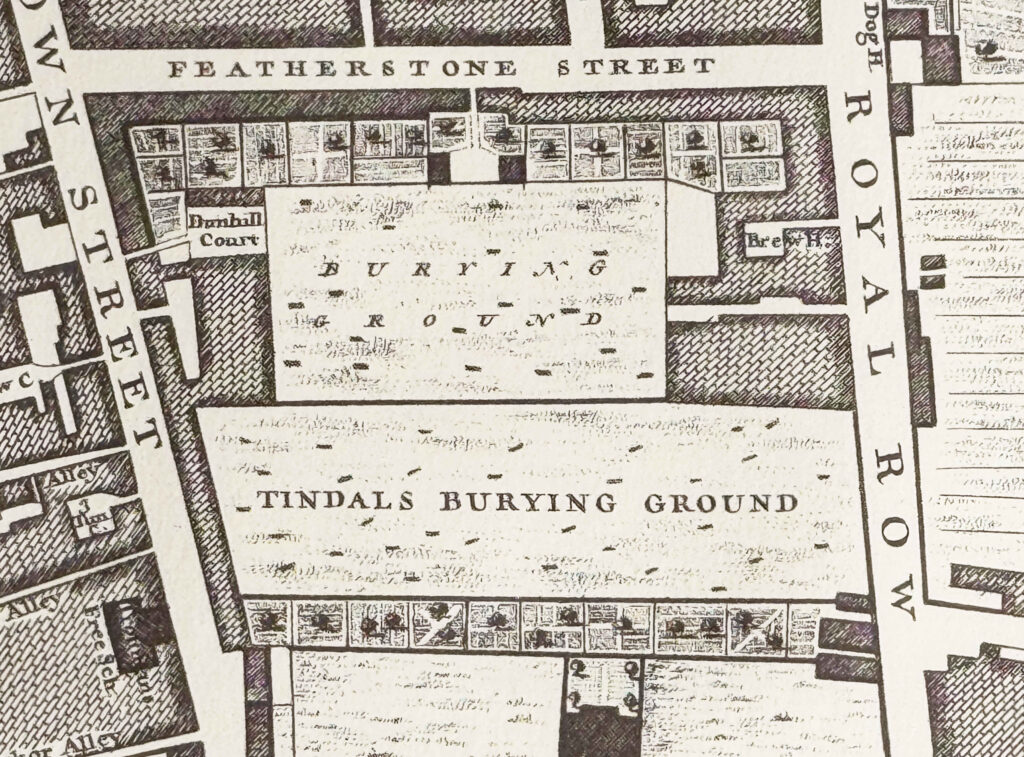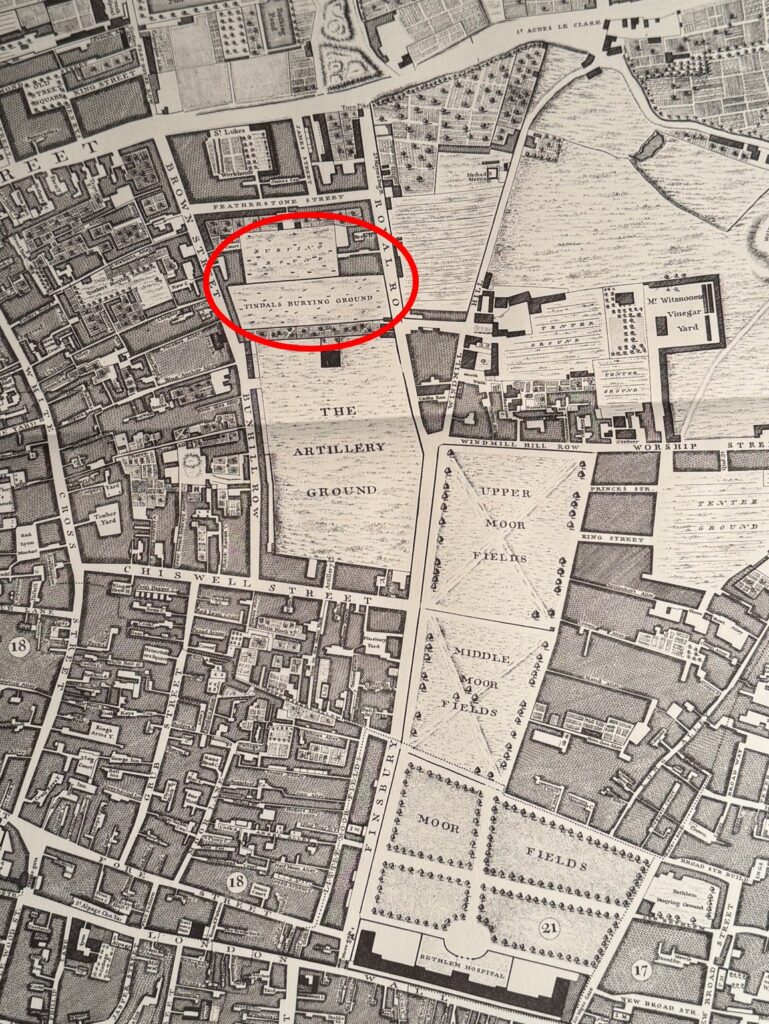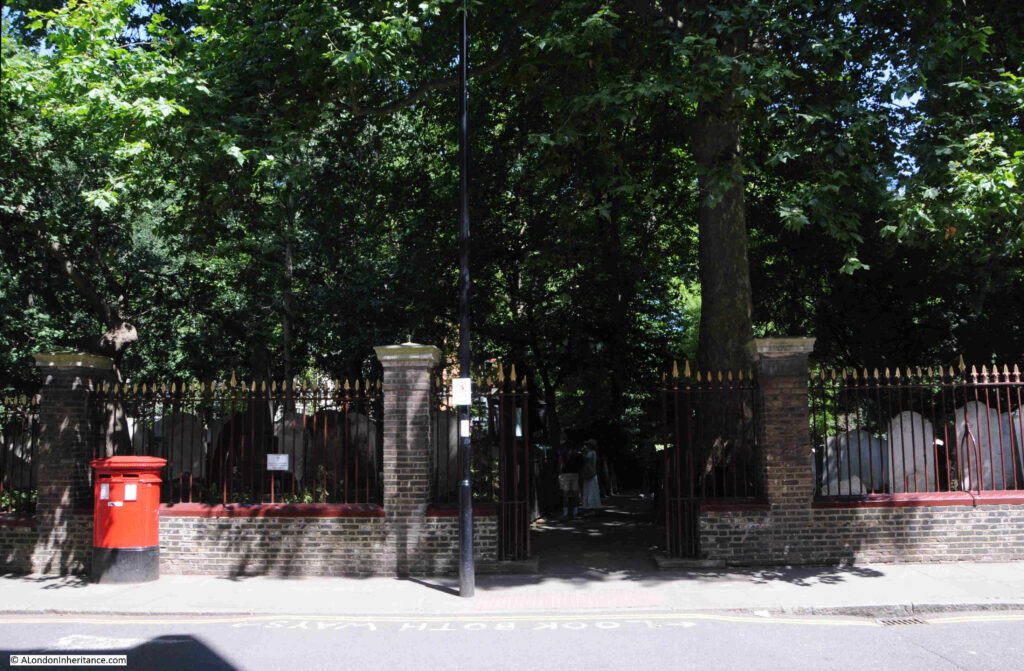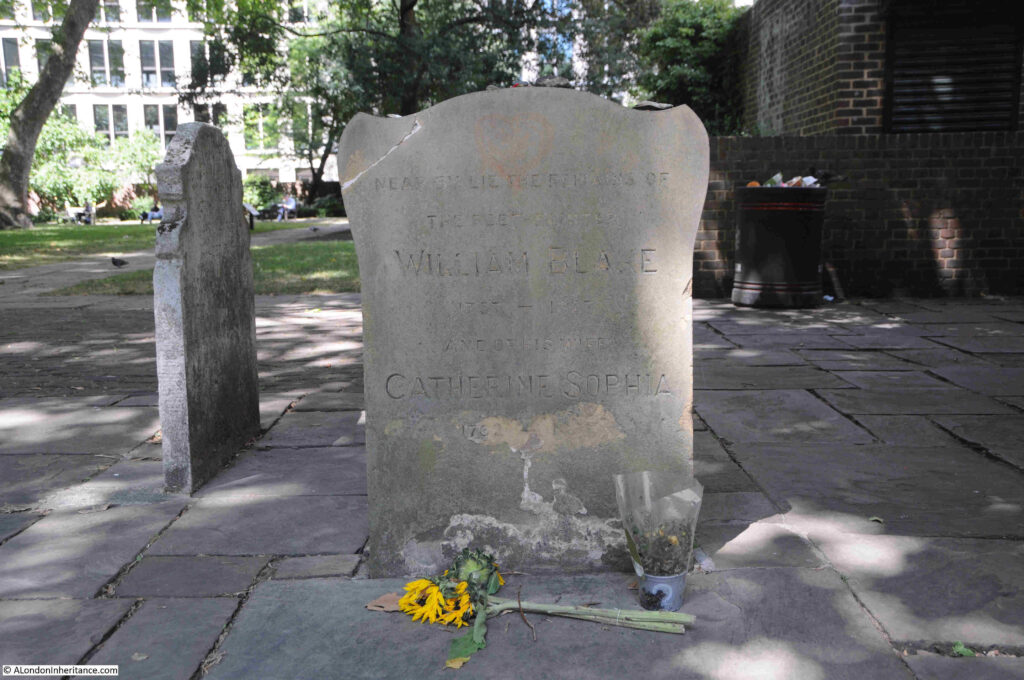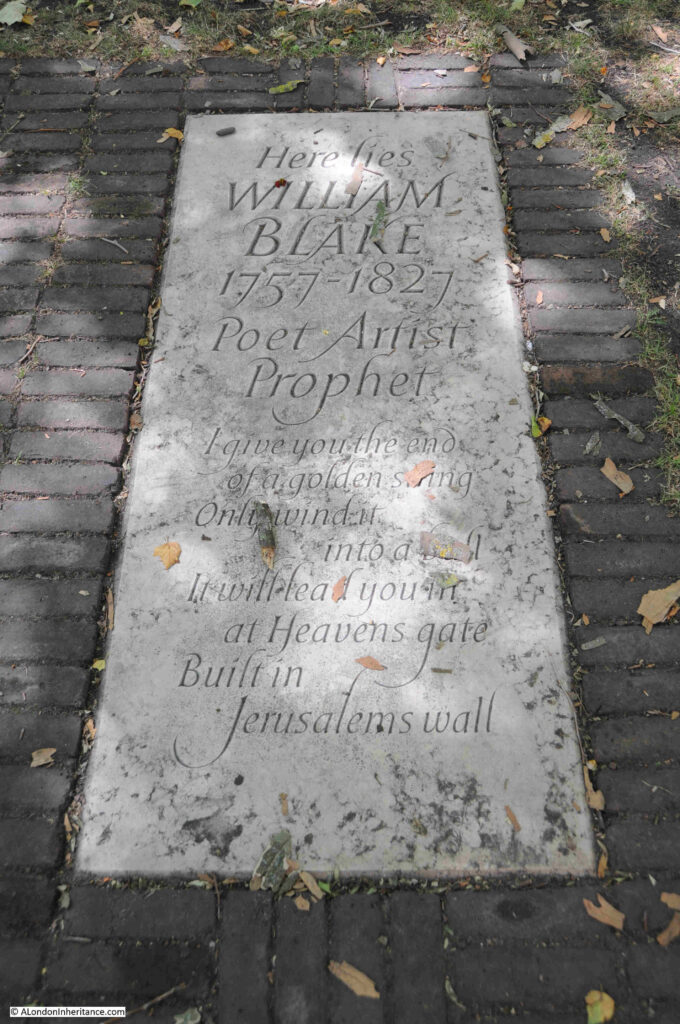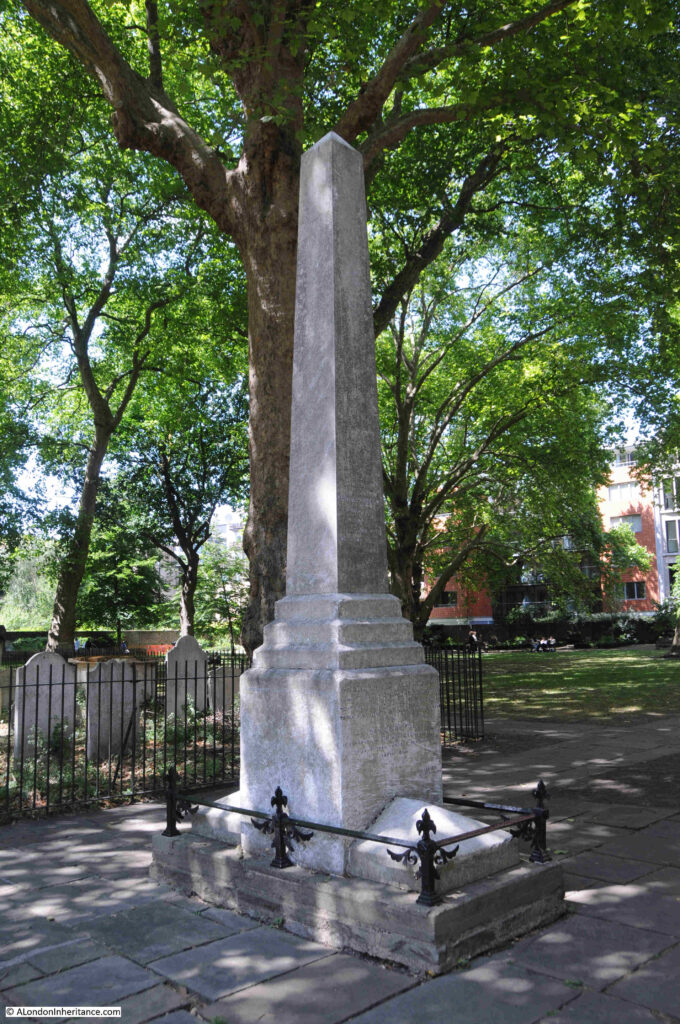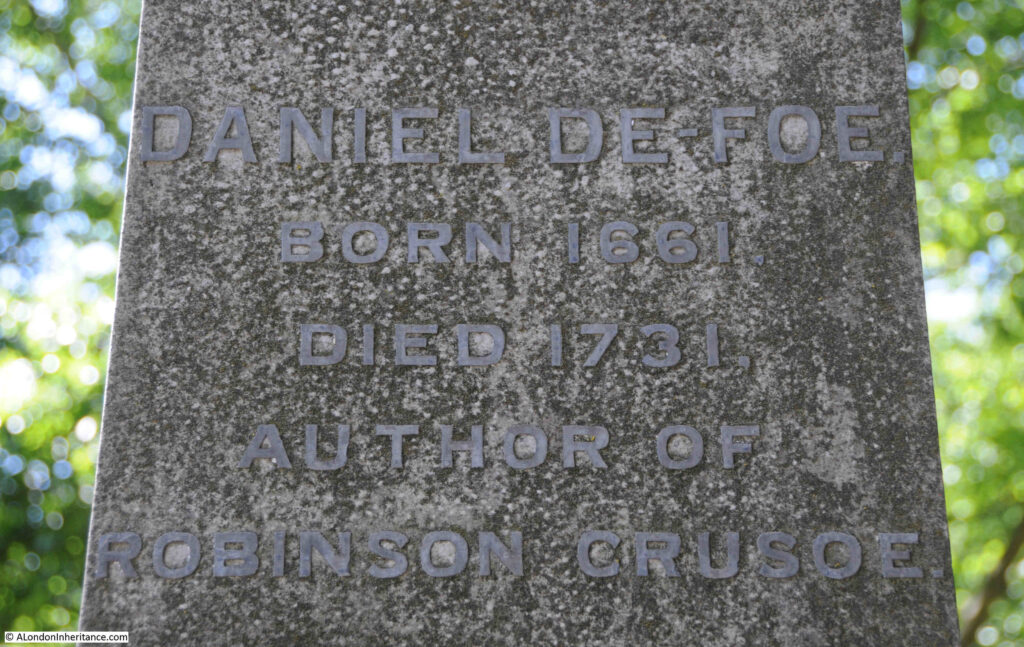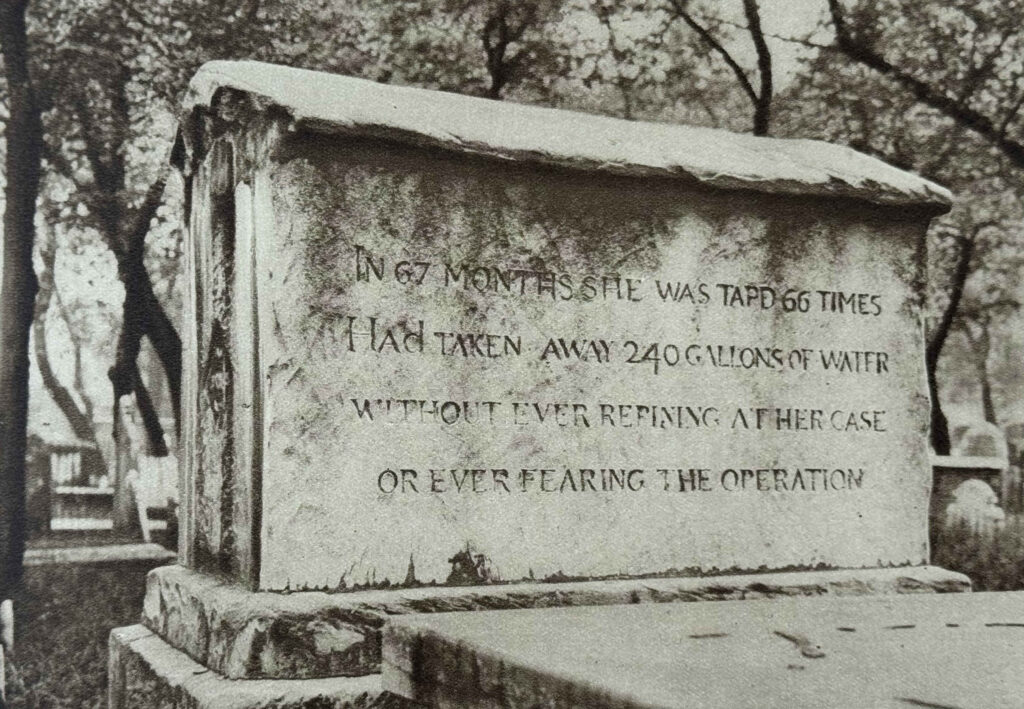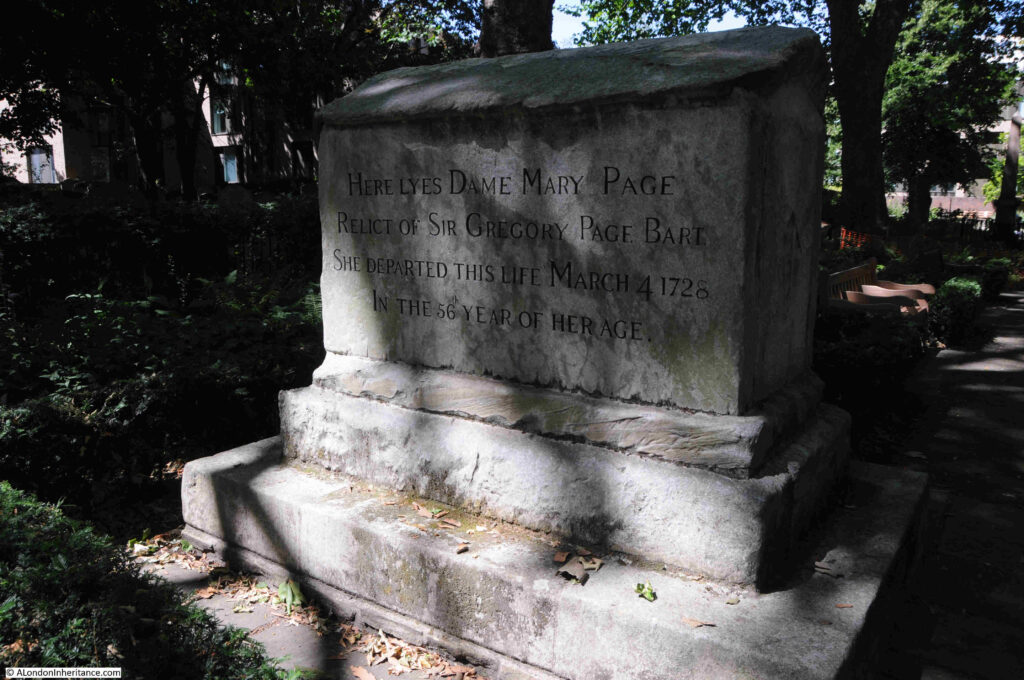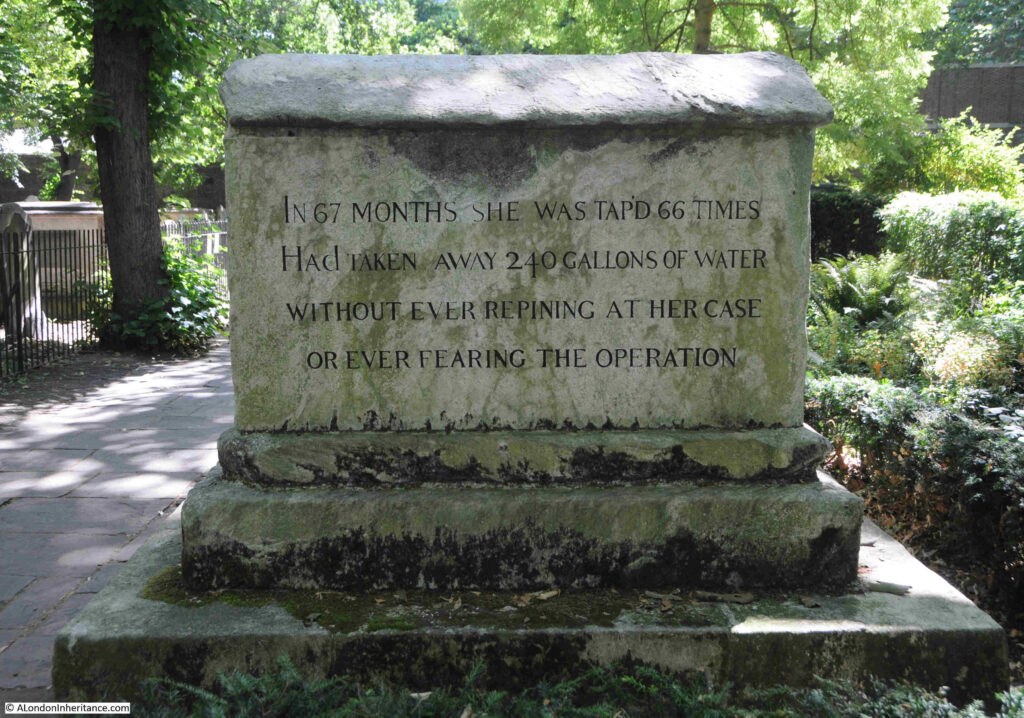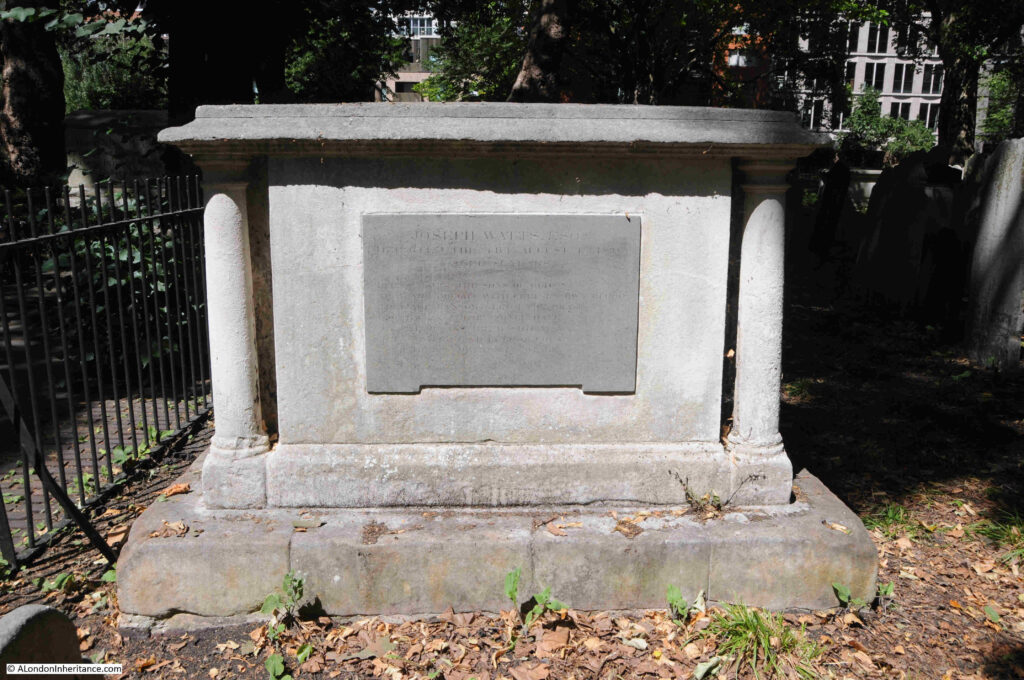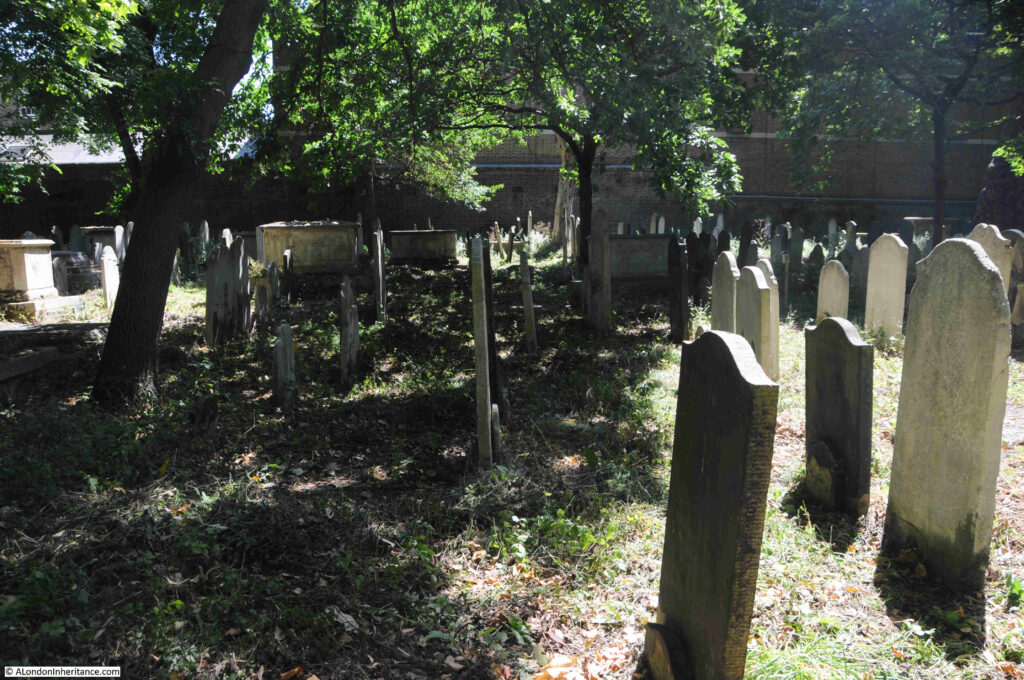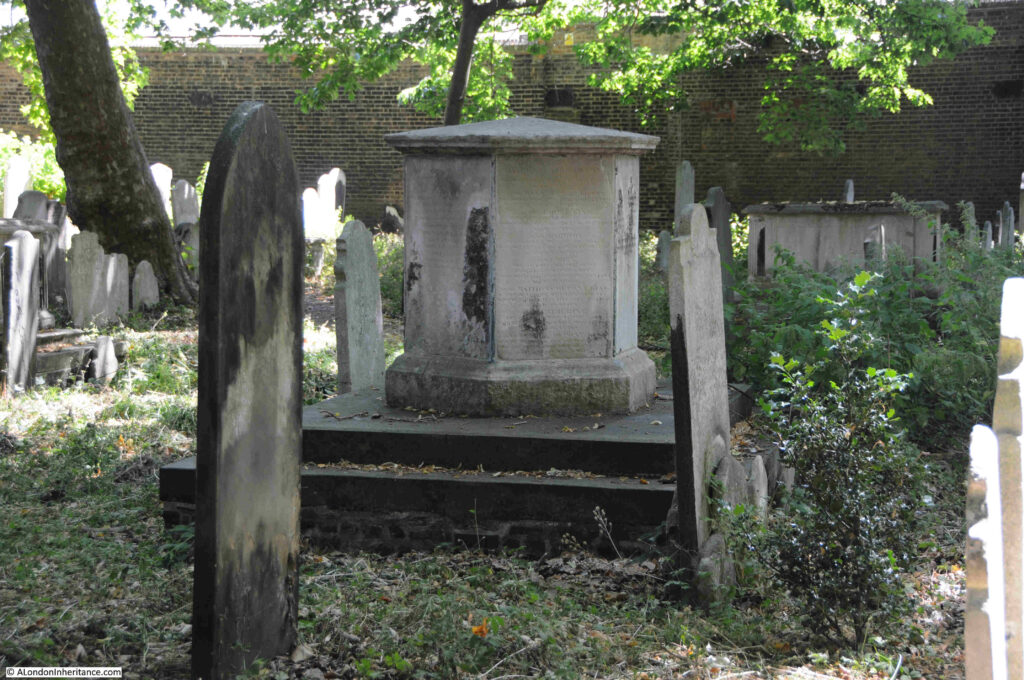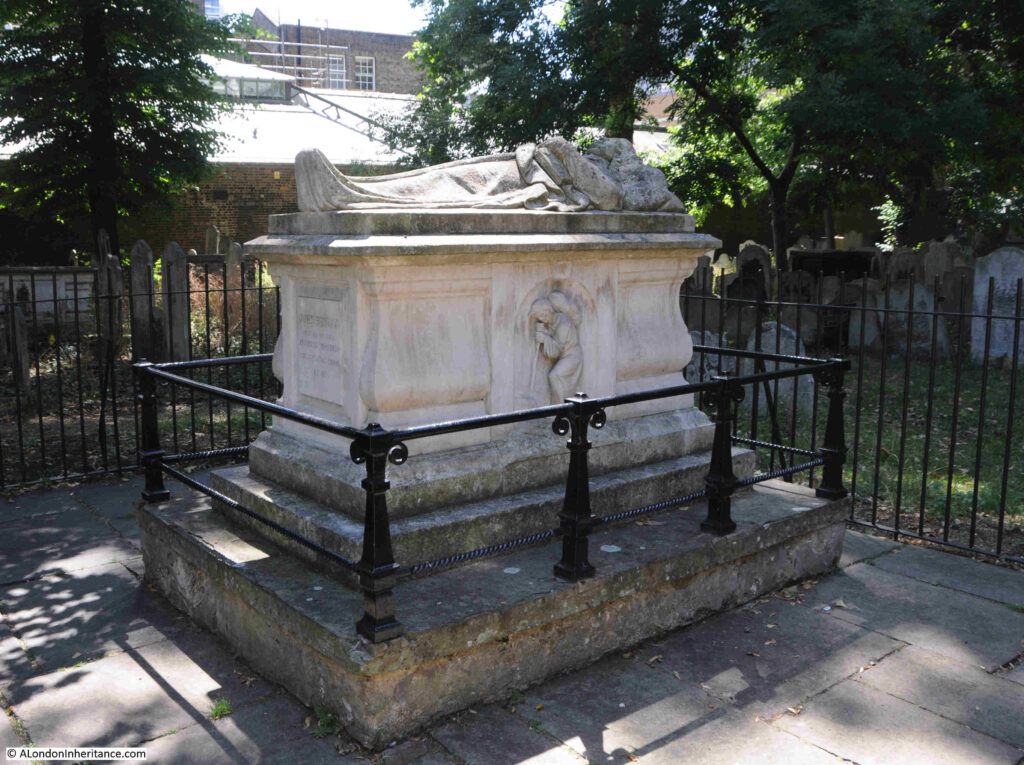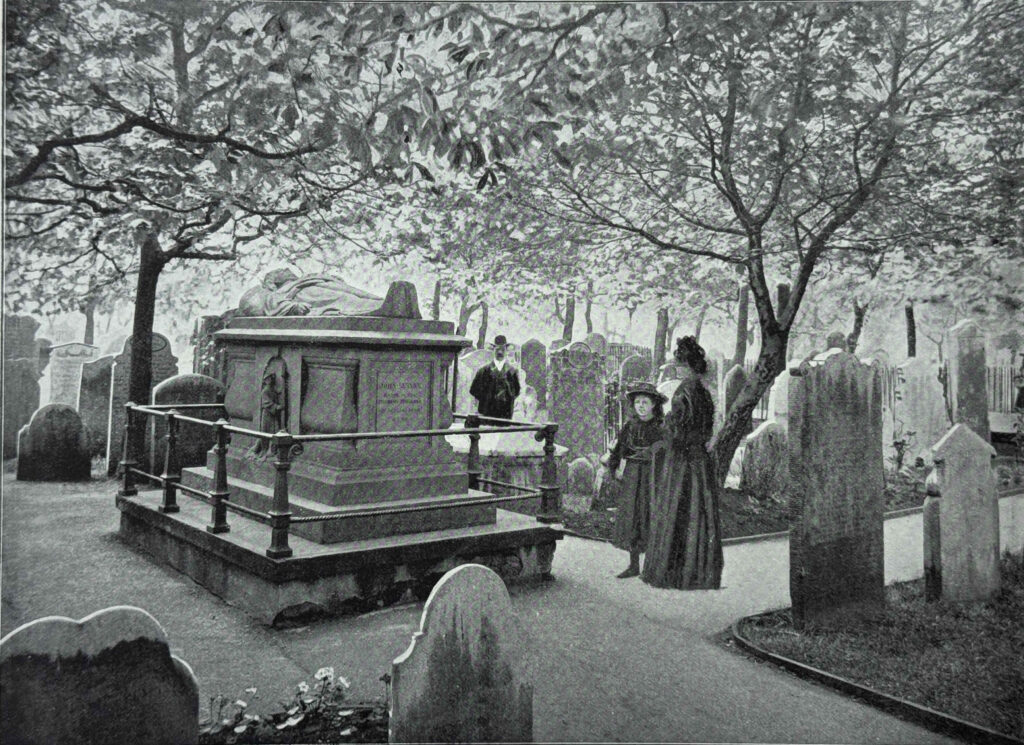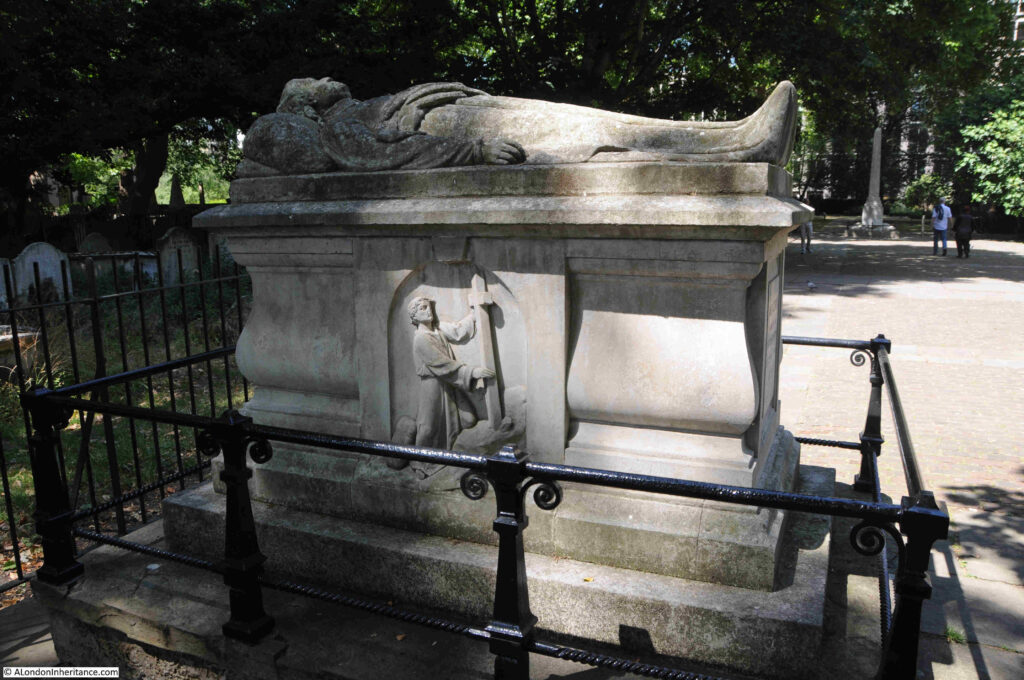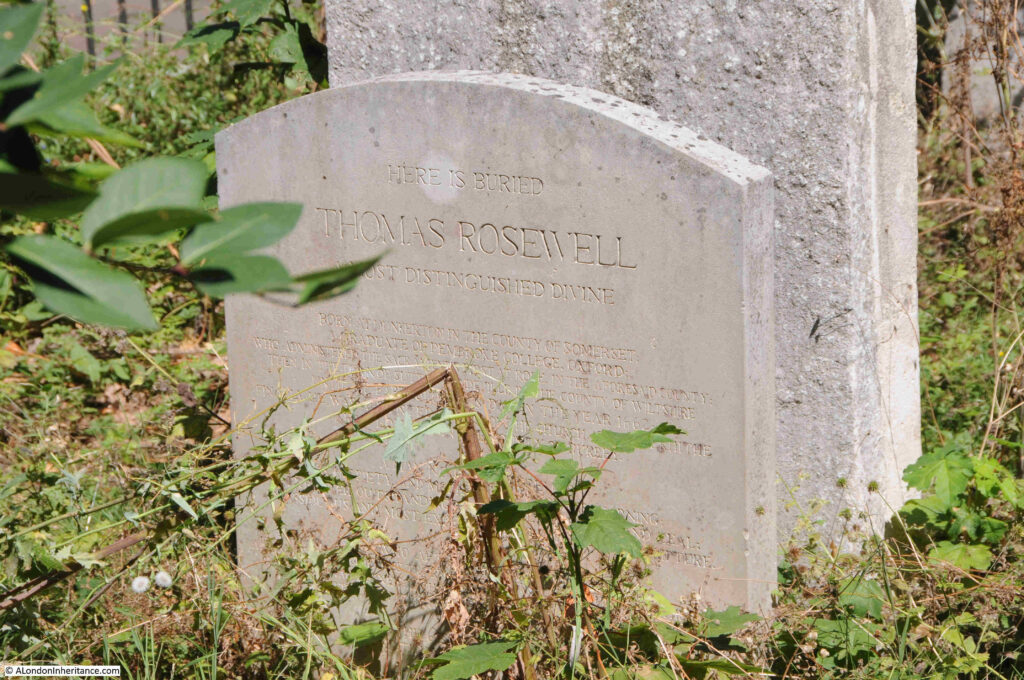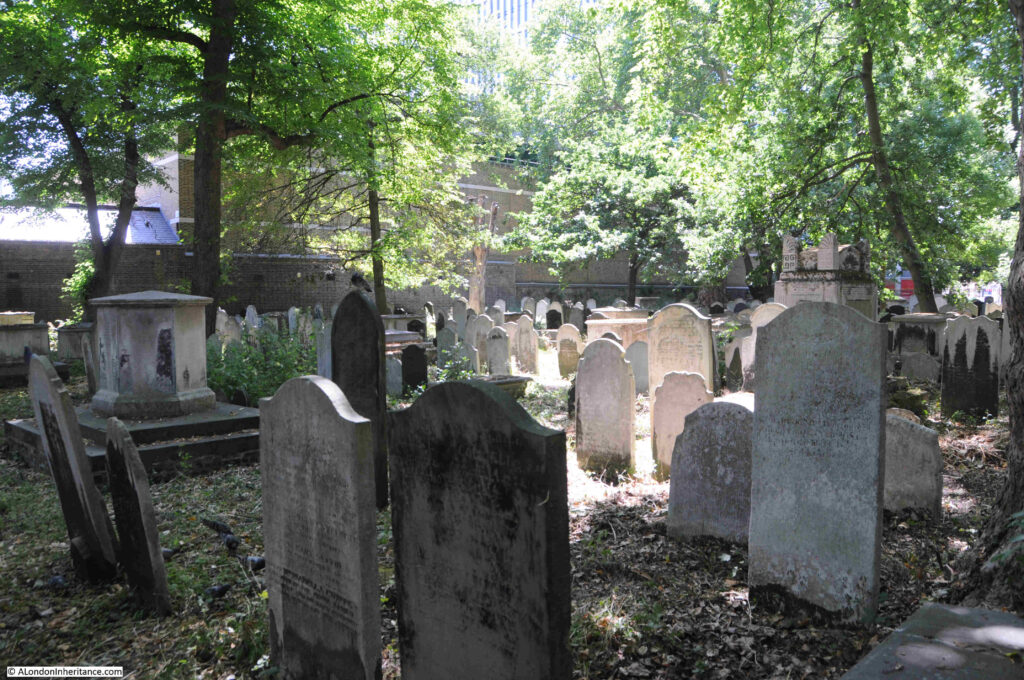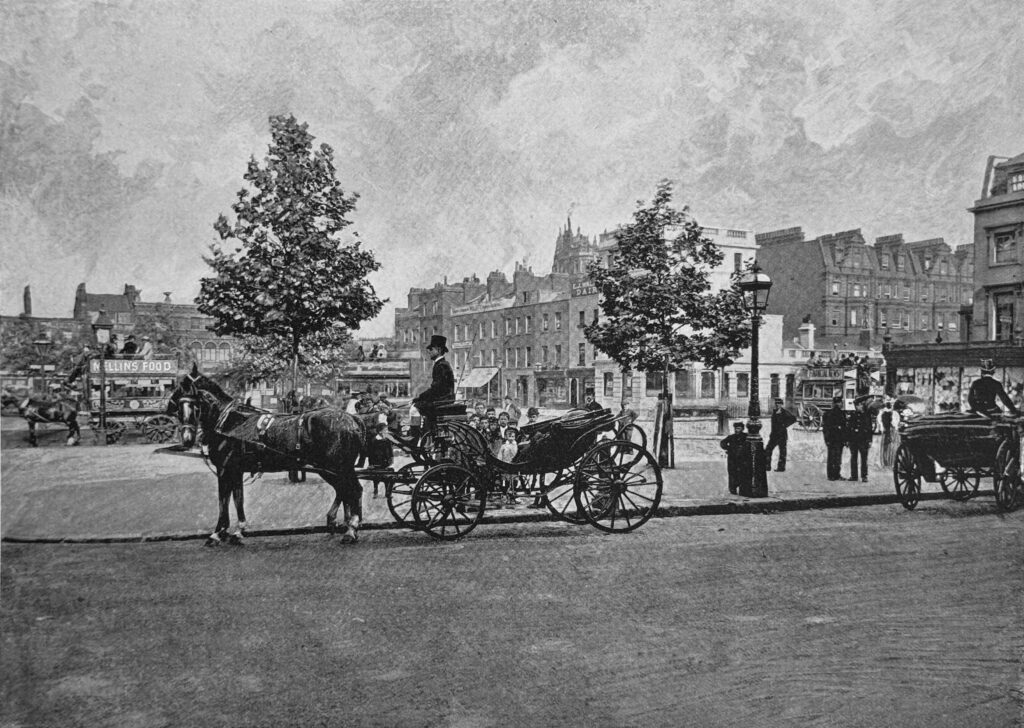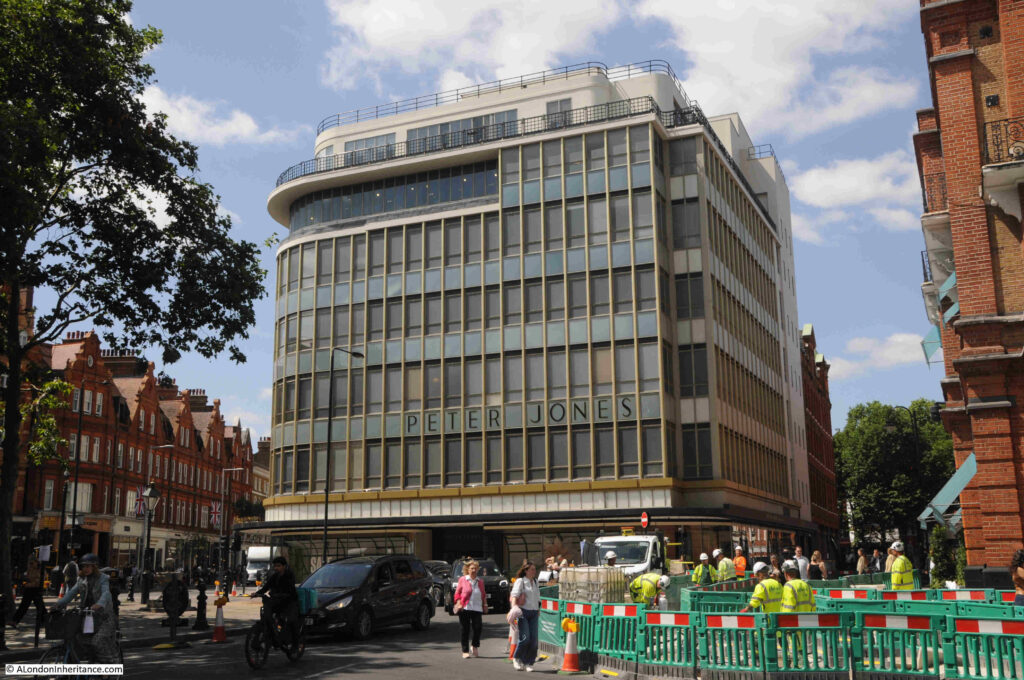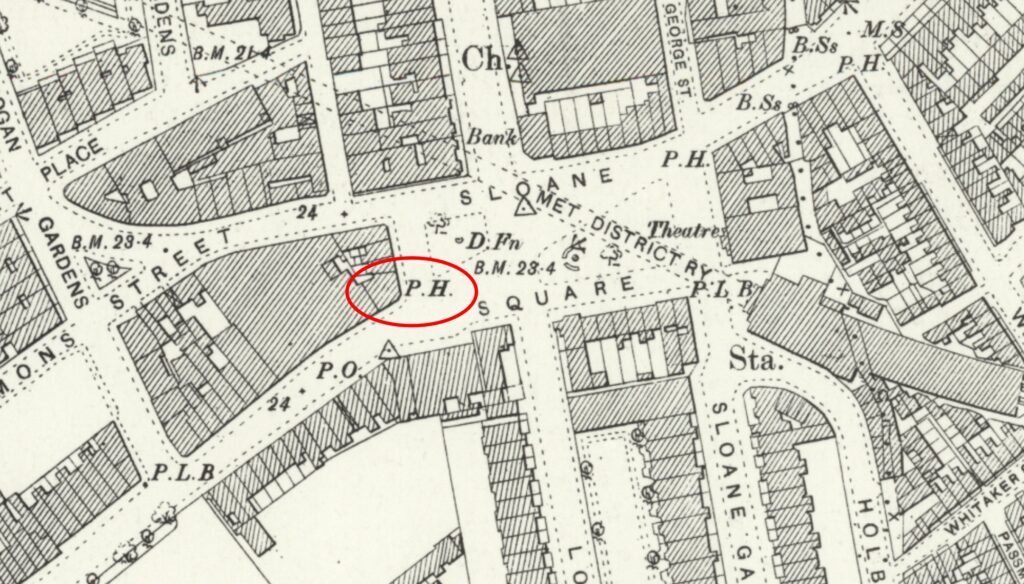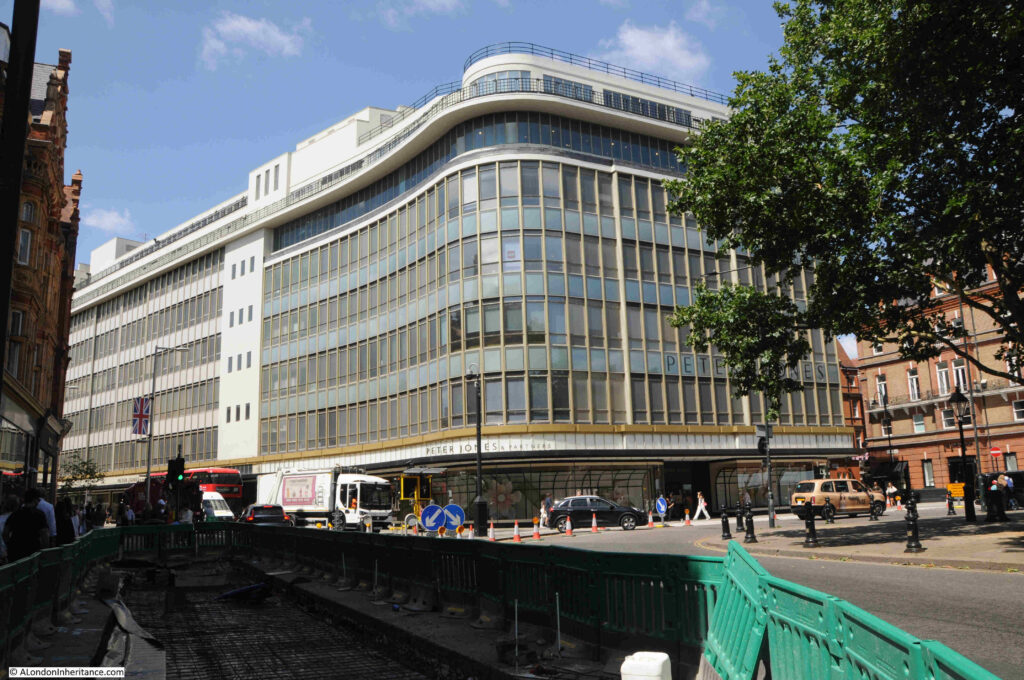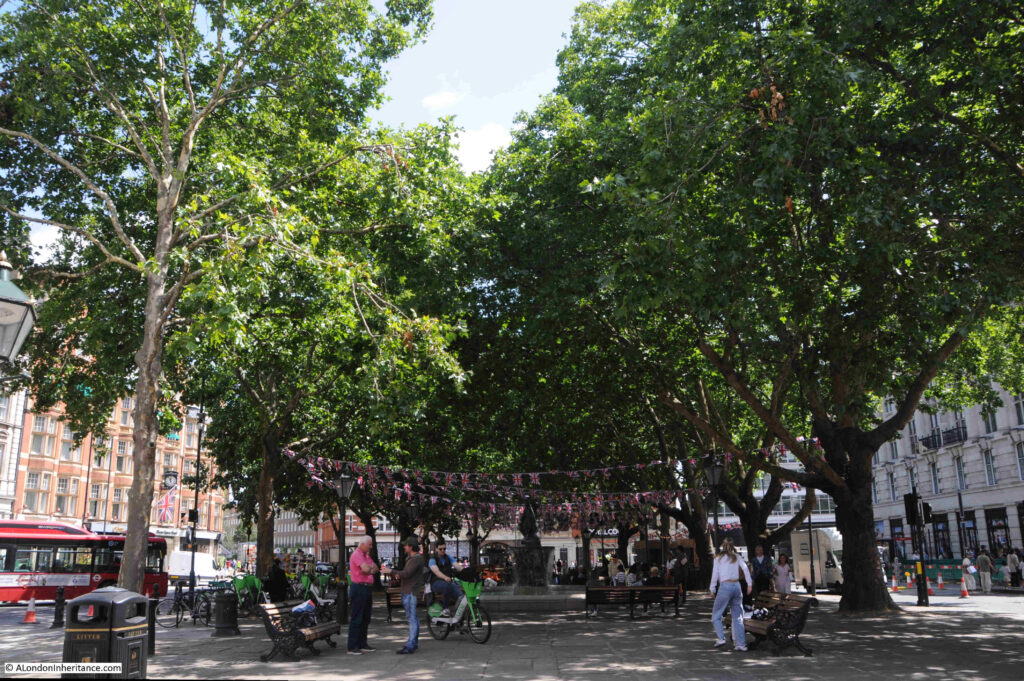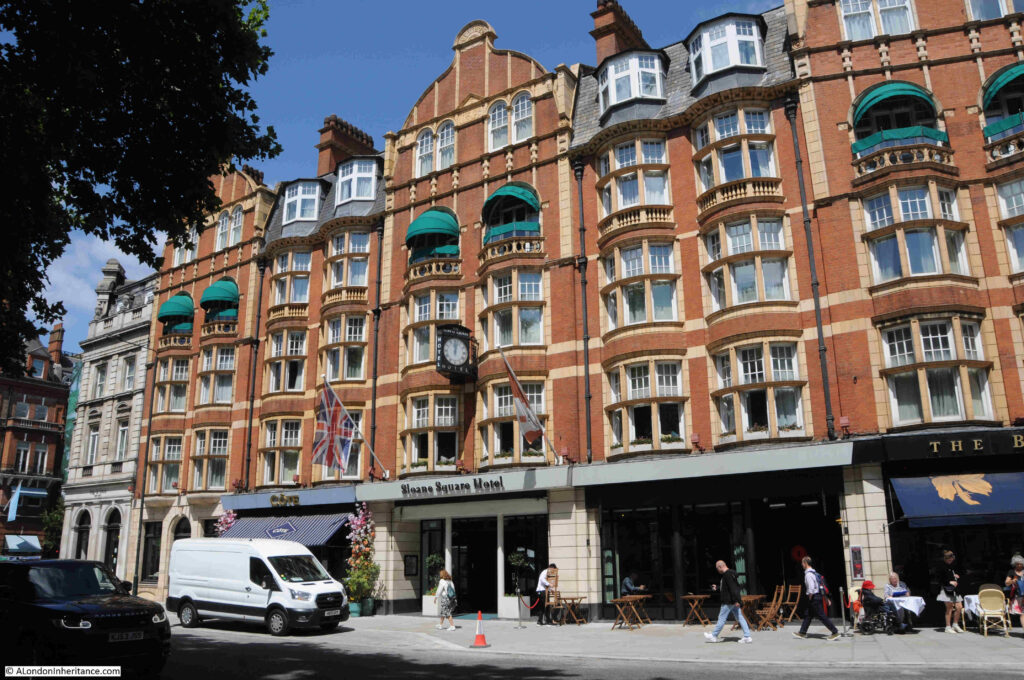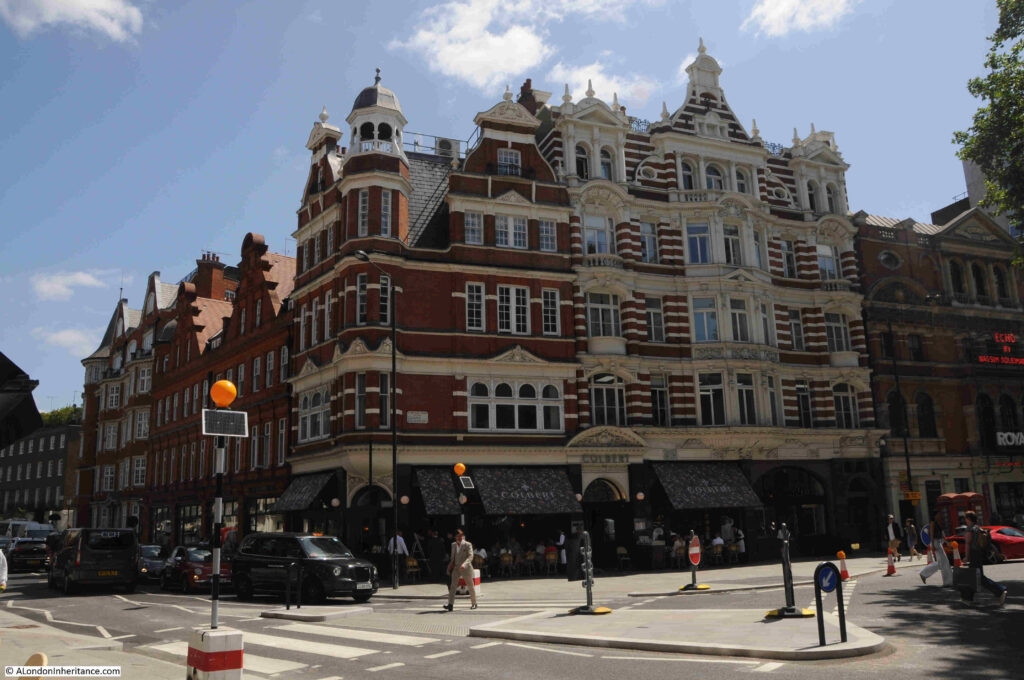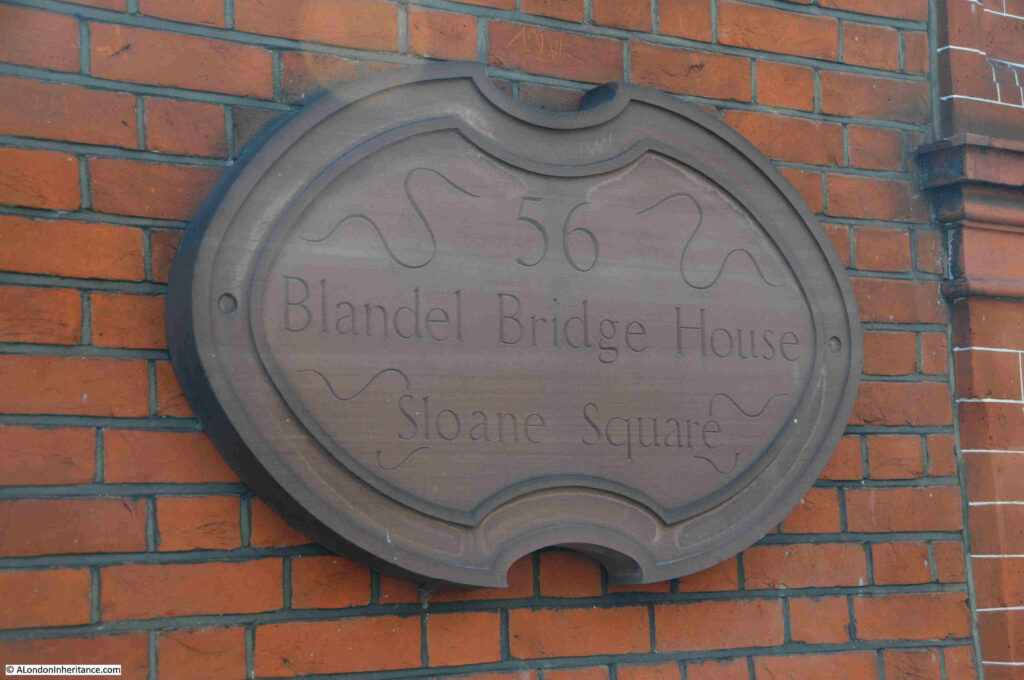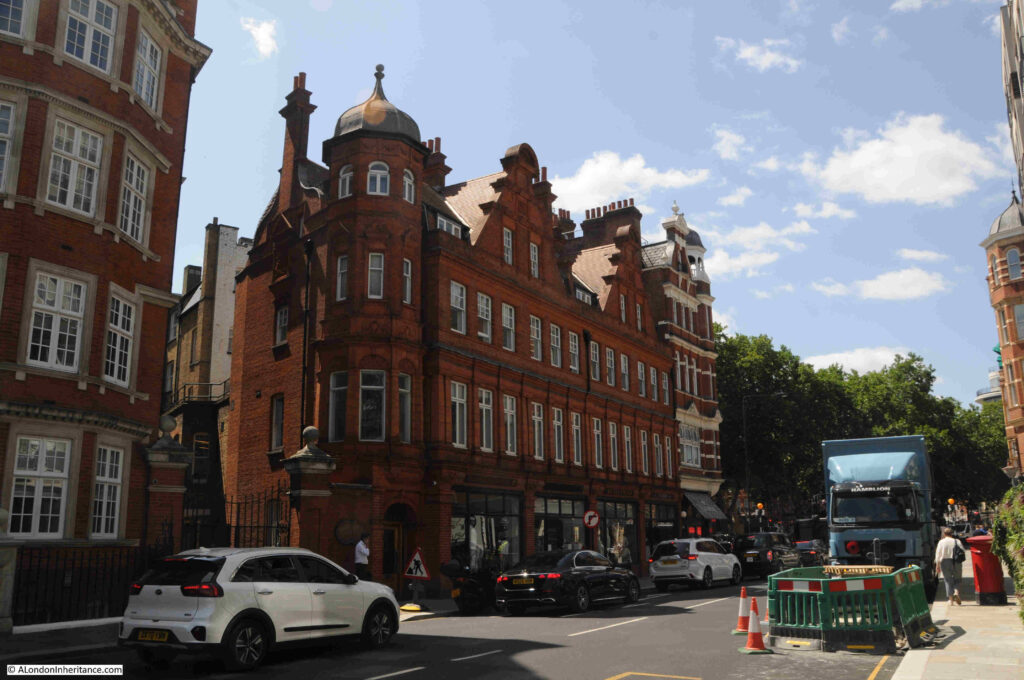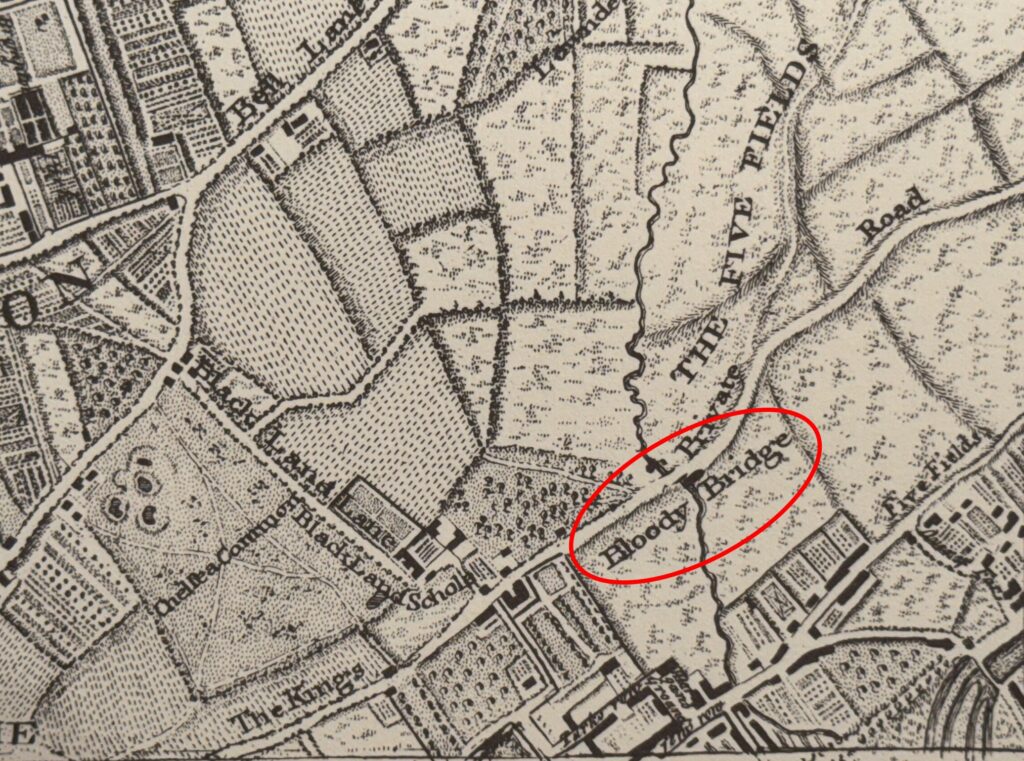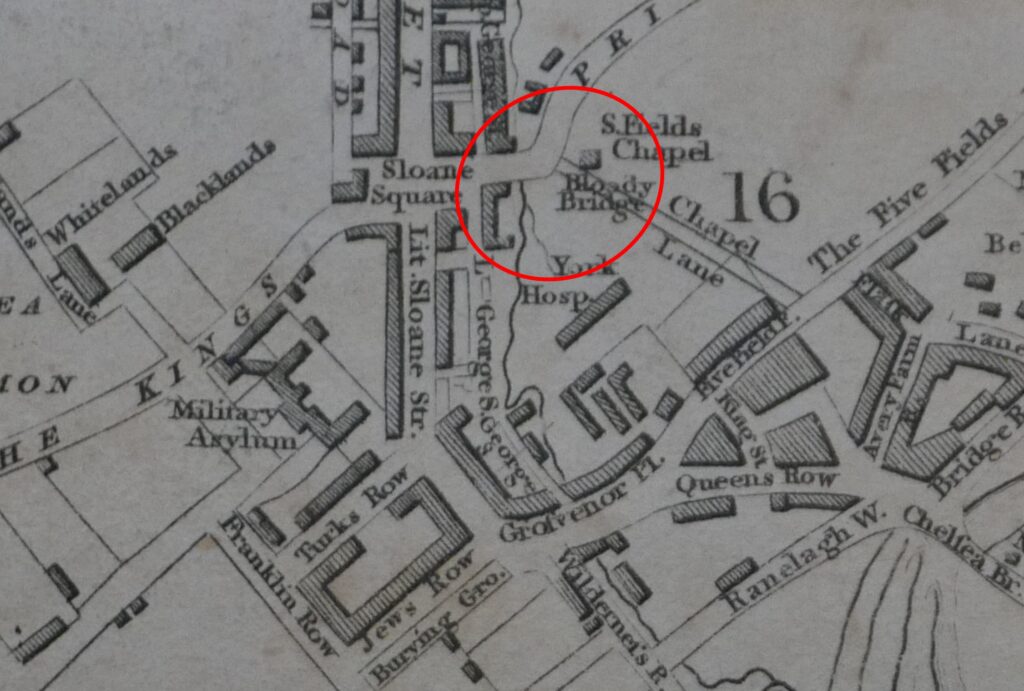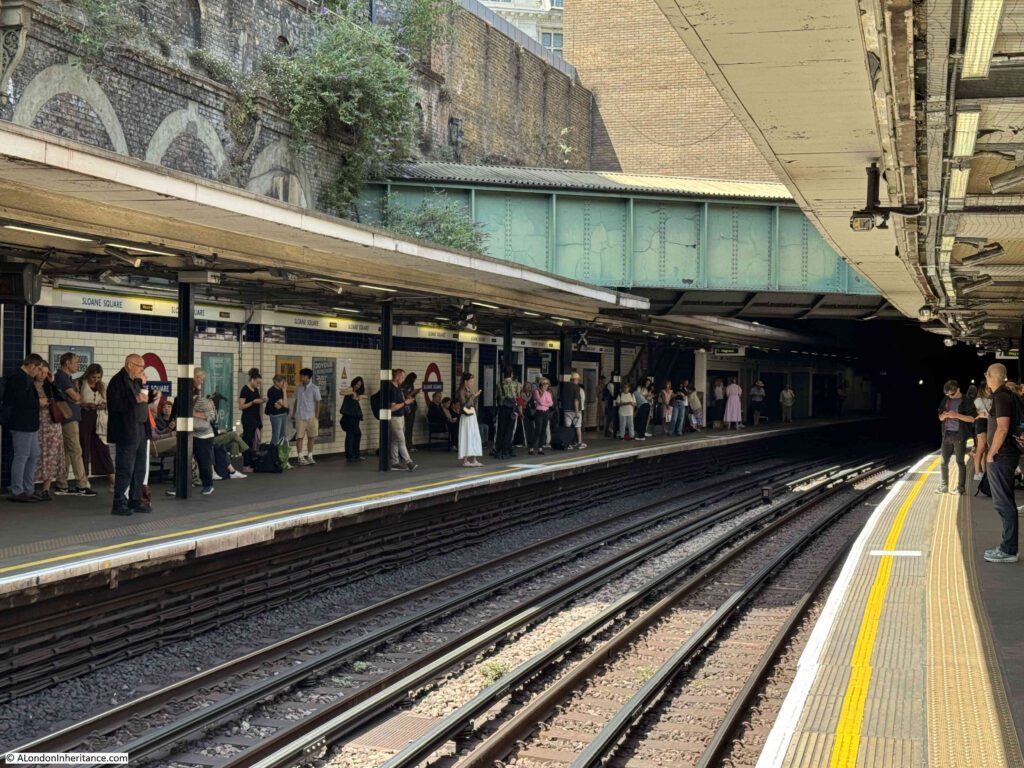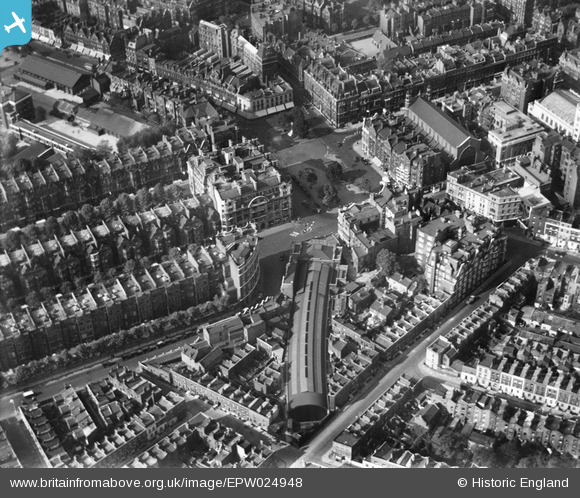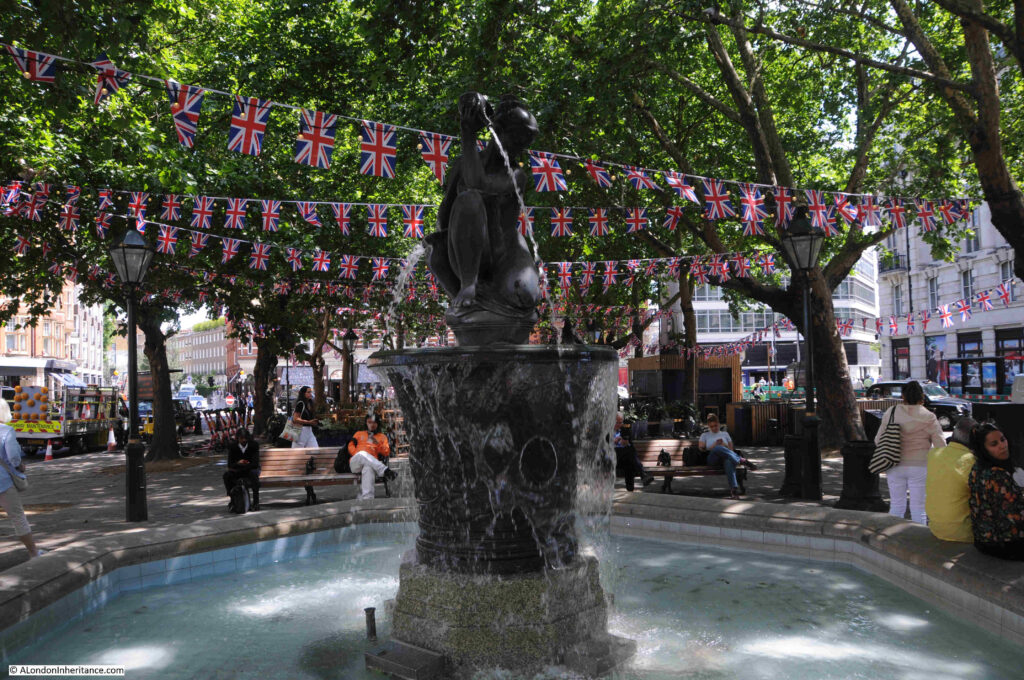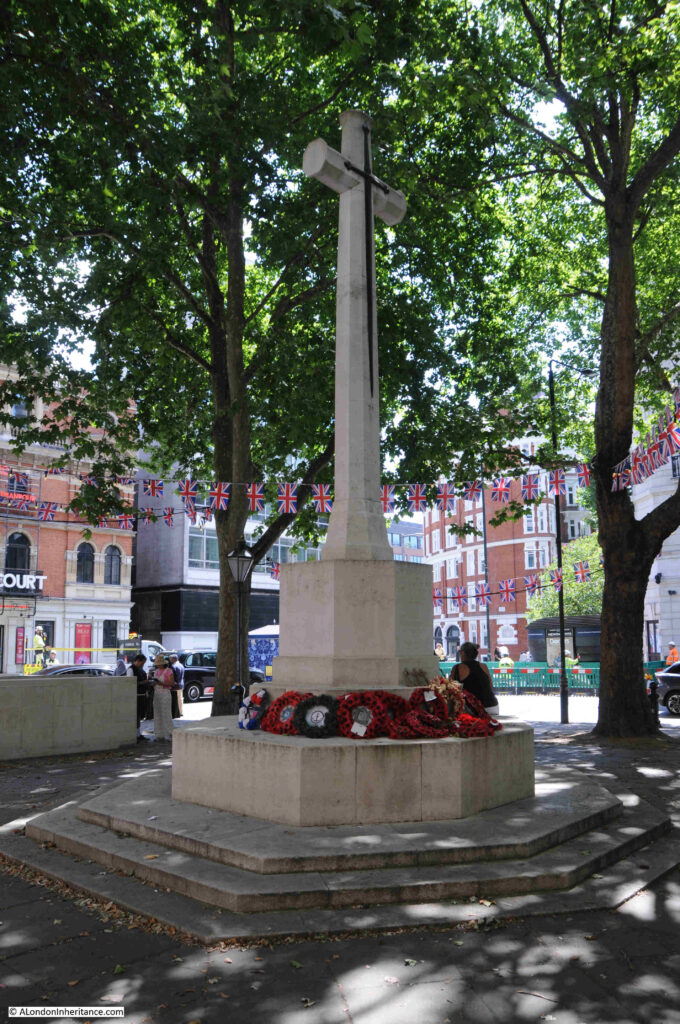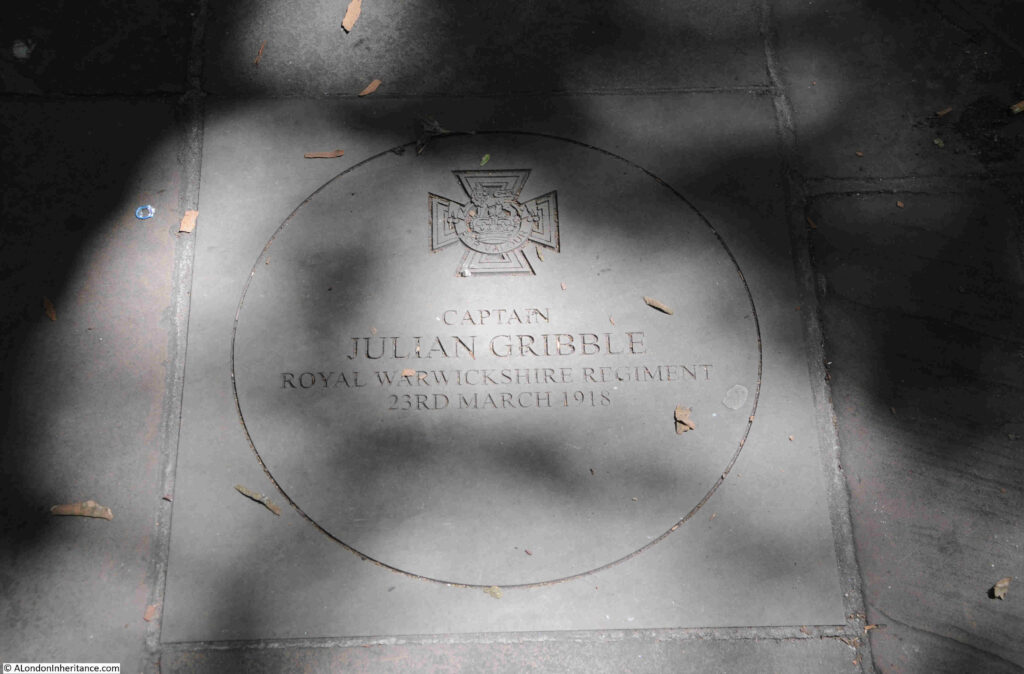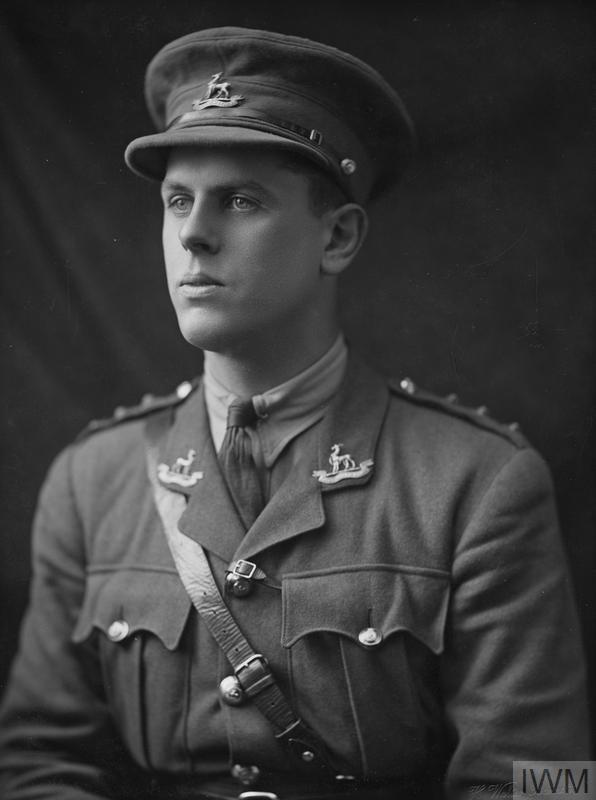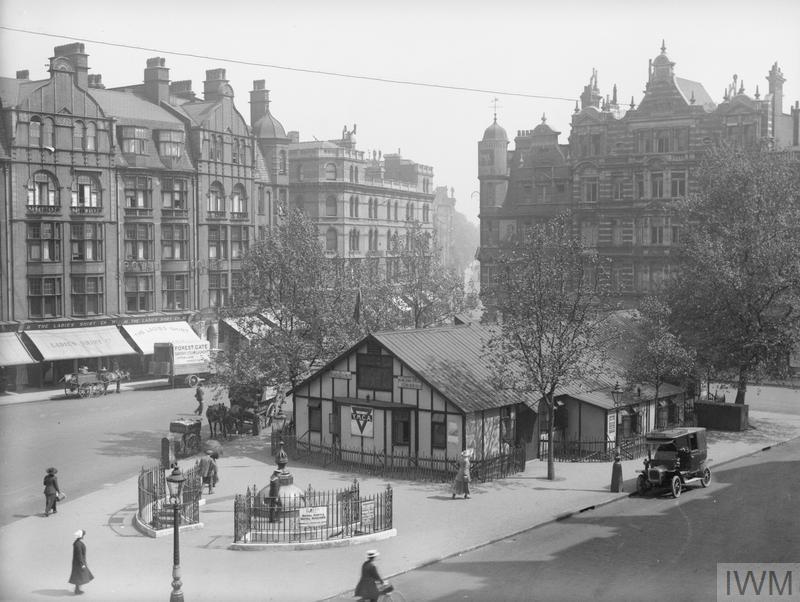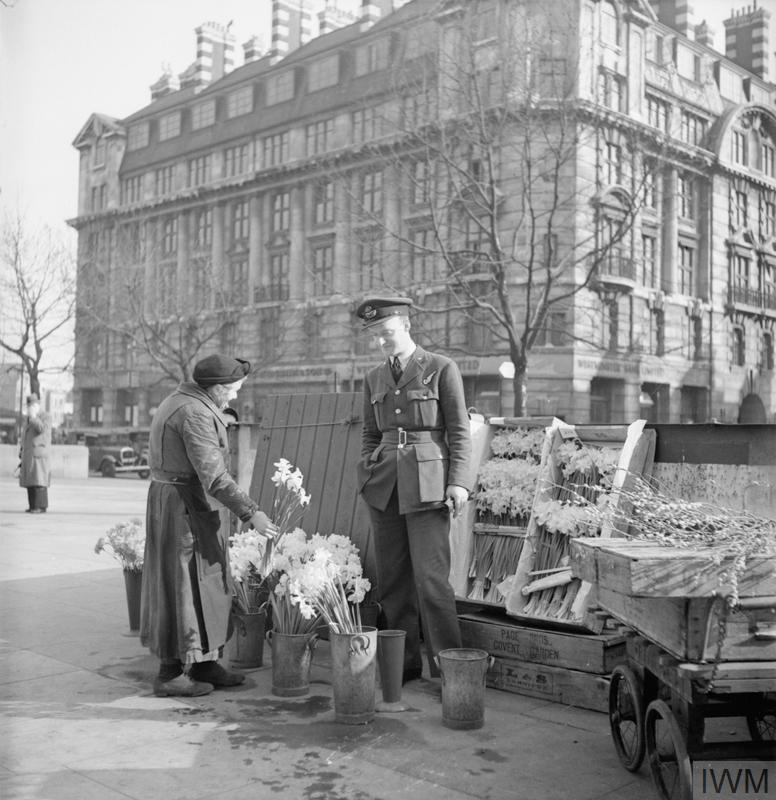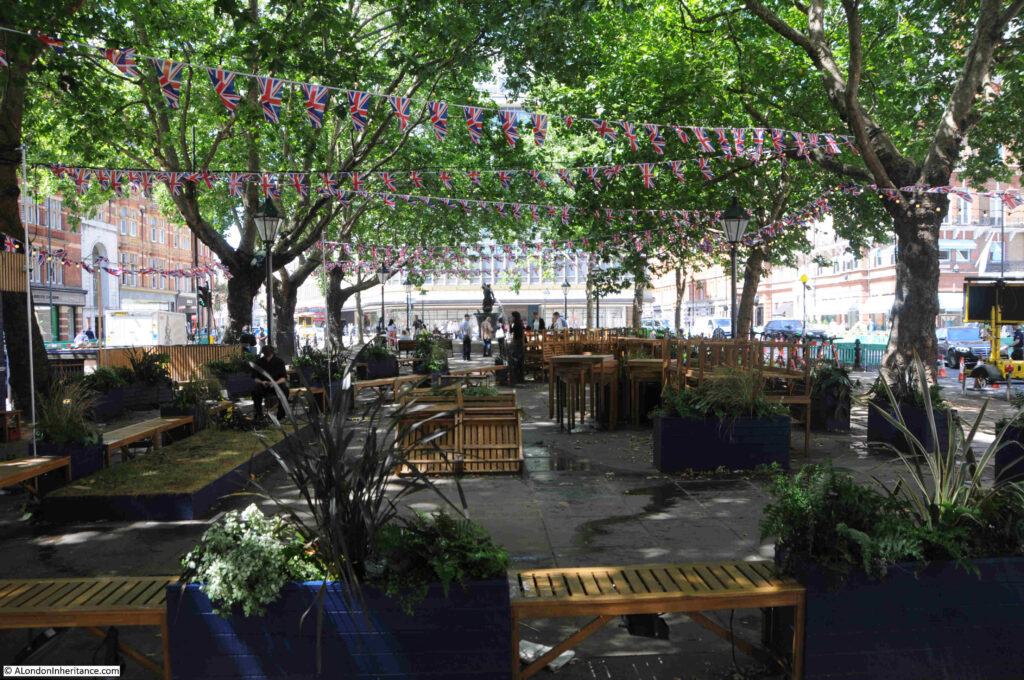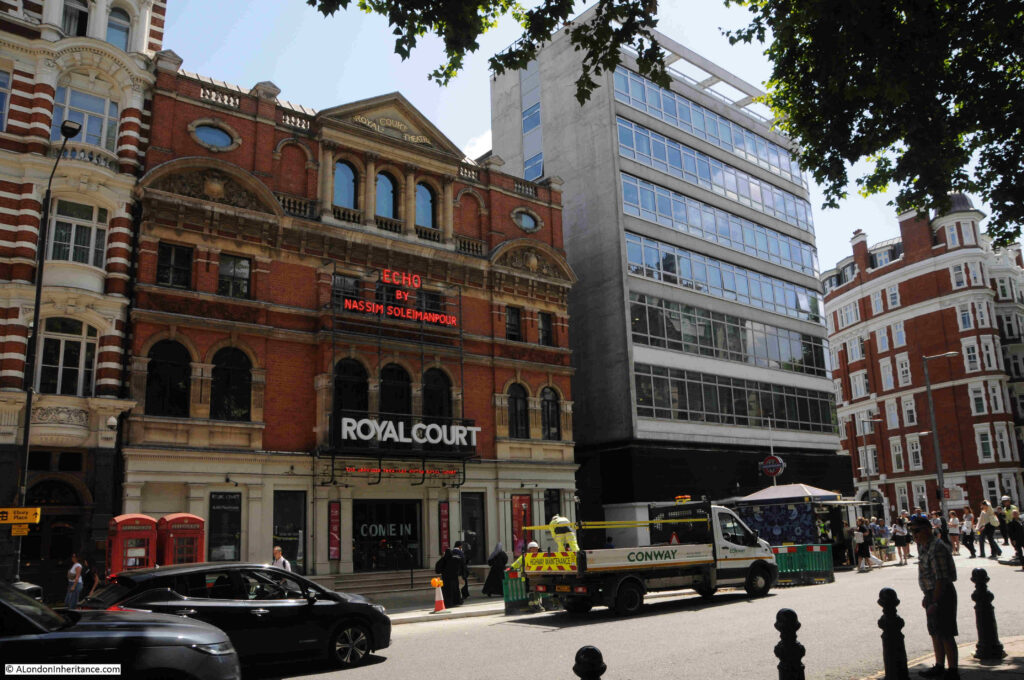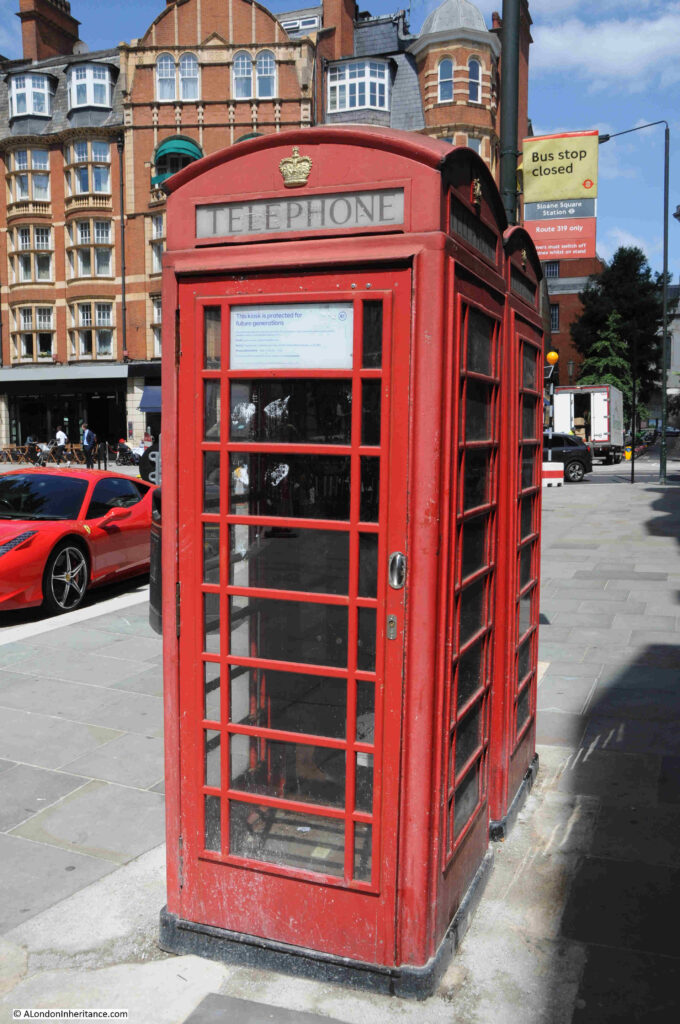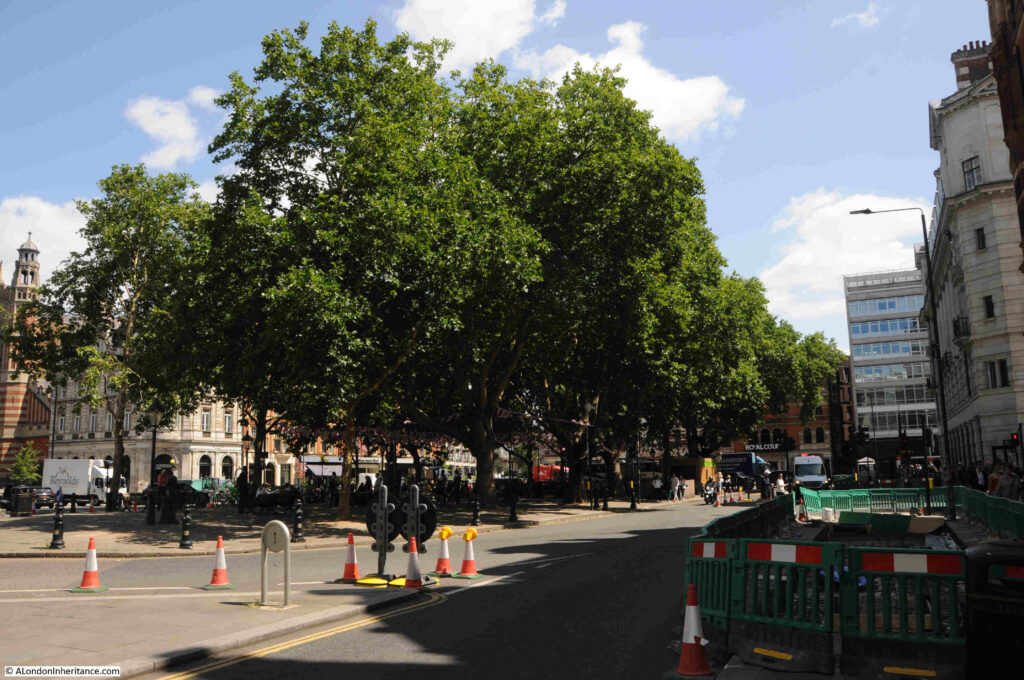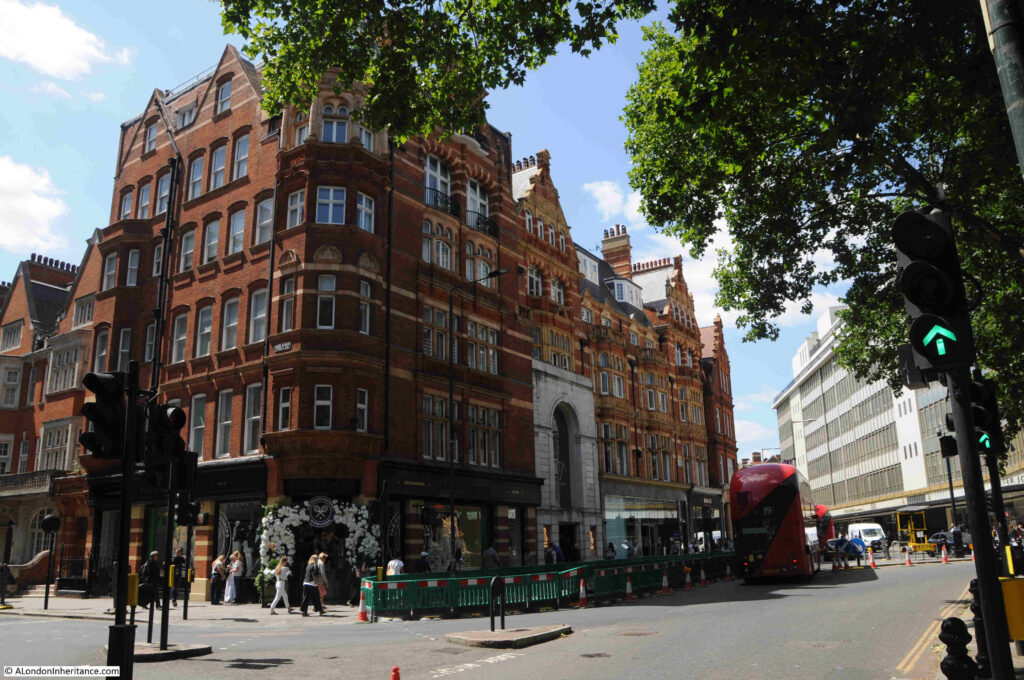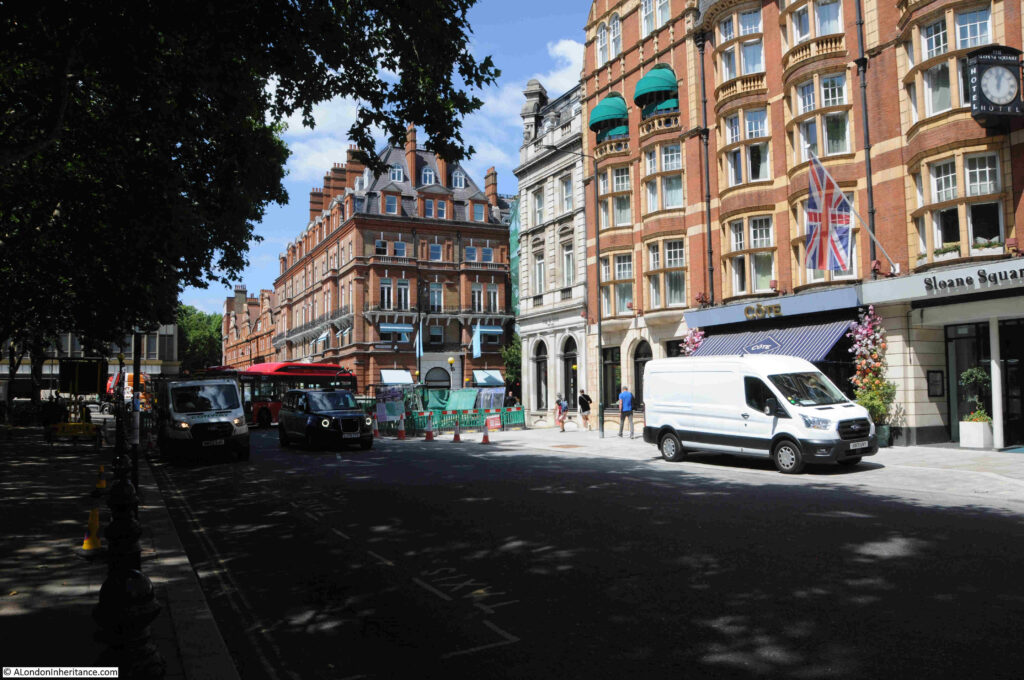Almost 12 years ago, the blog started as a means of recording then and now photos based on my father’s photos, but since 2014 it has also been a way for me to explore London and the city’s history (or rather take more interest in what I used to walk past, and I still have lots more of my father’s photos to post about).
As well as taking more notice whilst walking London, it is also fascinating to find connections between the city and the wider country, and one of these connections is the subject of this week’s post.
A couple of week’s ago, we were in the small town of Holt in north Norfolk (thanks to A & C for the suggestion and company). and at the western end of the Market Place, there was a building which had a very familiar symbol for the institution that occupies the building:
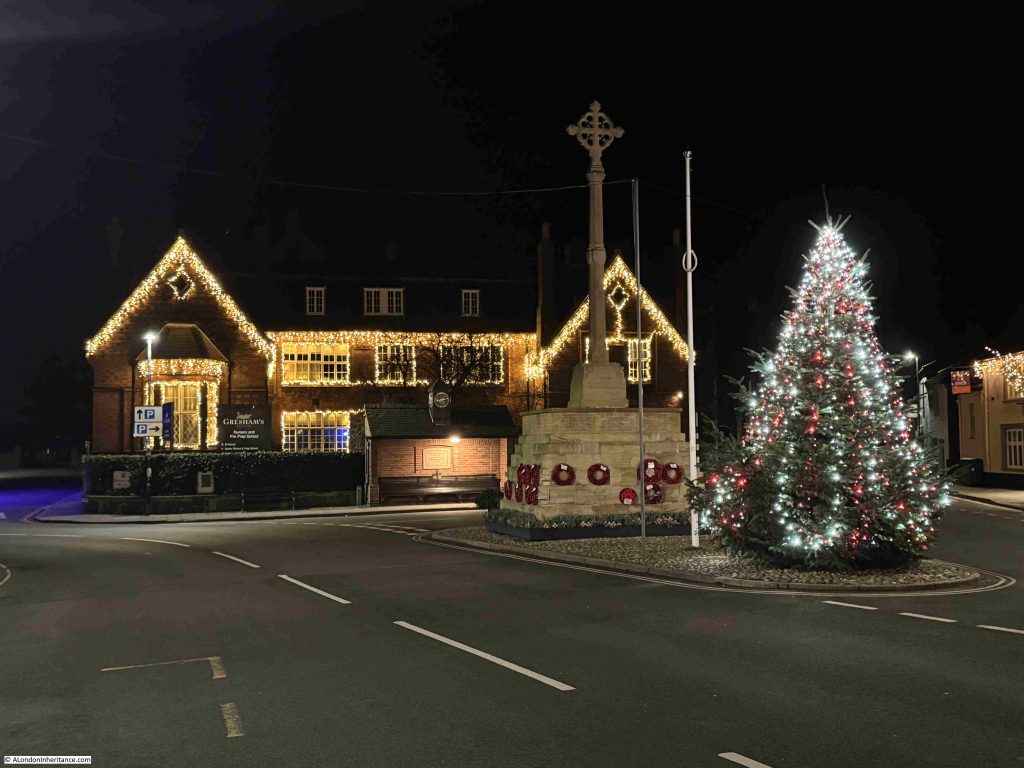
The building is the home of Gresham’s Nursery and Pre Prep School, and further west there is a much larger part of Gresham’s School, and what initially caught my attention was the image of the grasshopper, which is on the sign board and also on one of the school busses that went through the centre of the town:
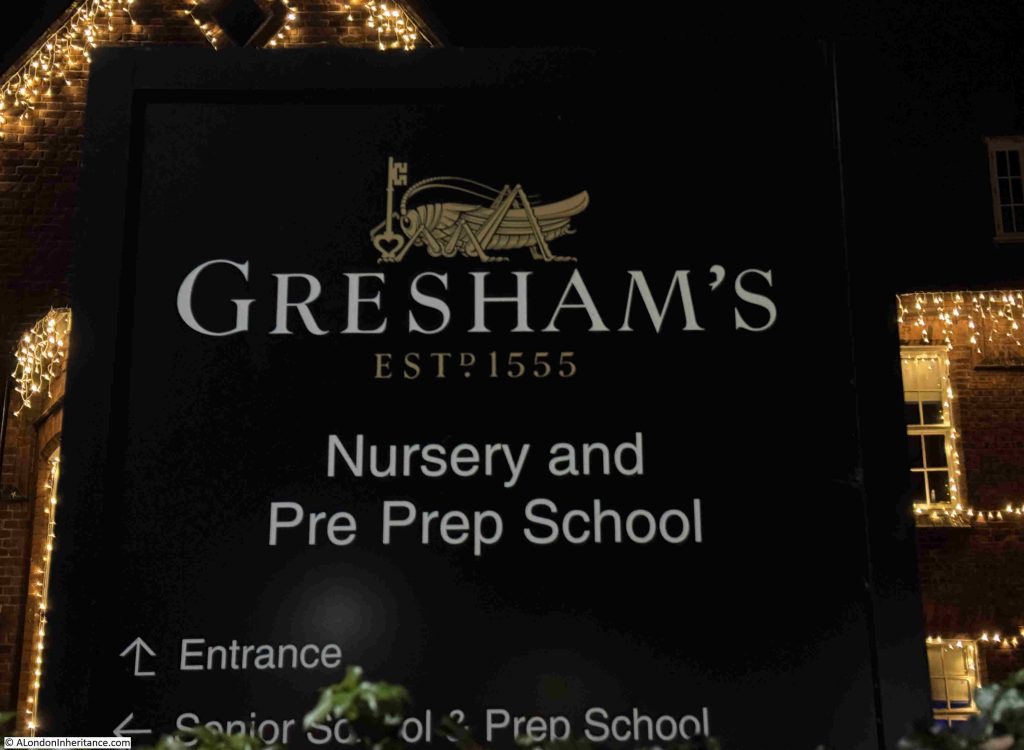
The name Gresham is a key part of London history, and the grasshopper is the crest above the Gresham family coast of arms.
The Gresham grasshopper can also be found in a central part of the City of London. The following photo is of the Bank junction with the Royal Exchange in the centre of the photo:
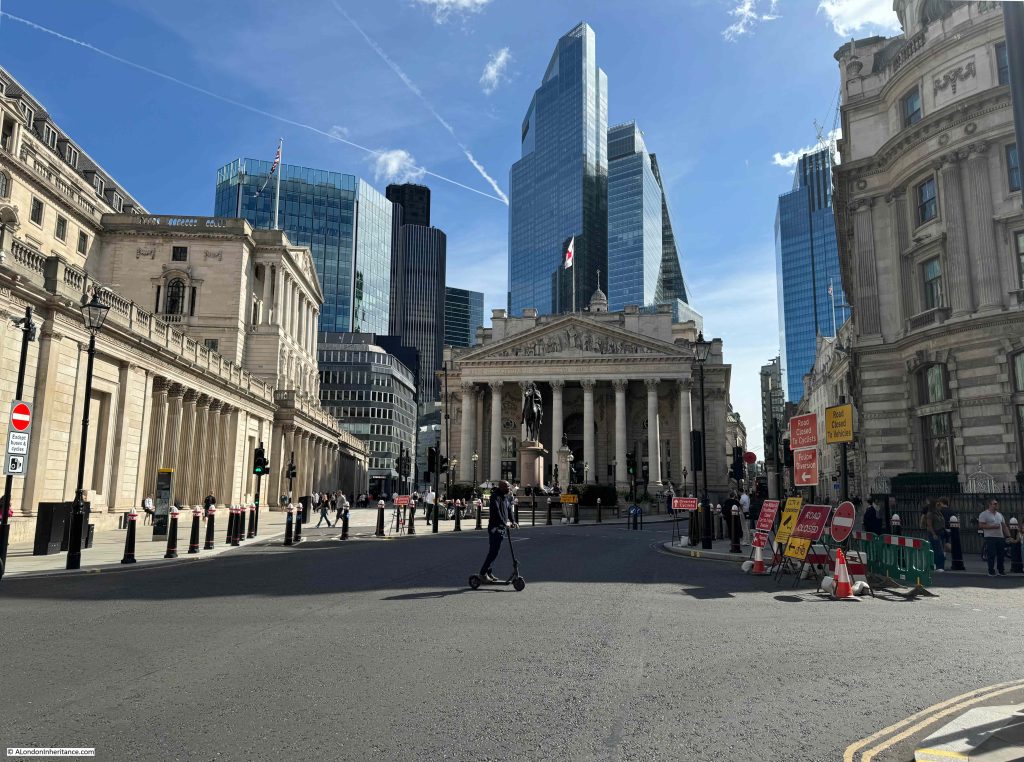
Not easily visible in the above photo, but on the weather vane of the small tower on the roof of the Royal Exchange is another Gresham grasshopper:
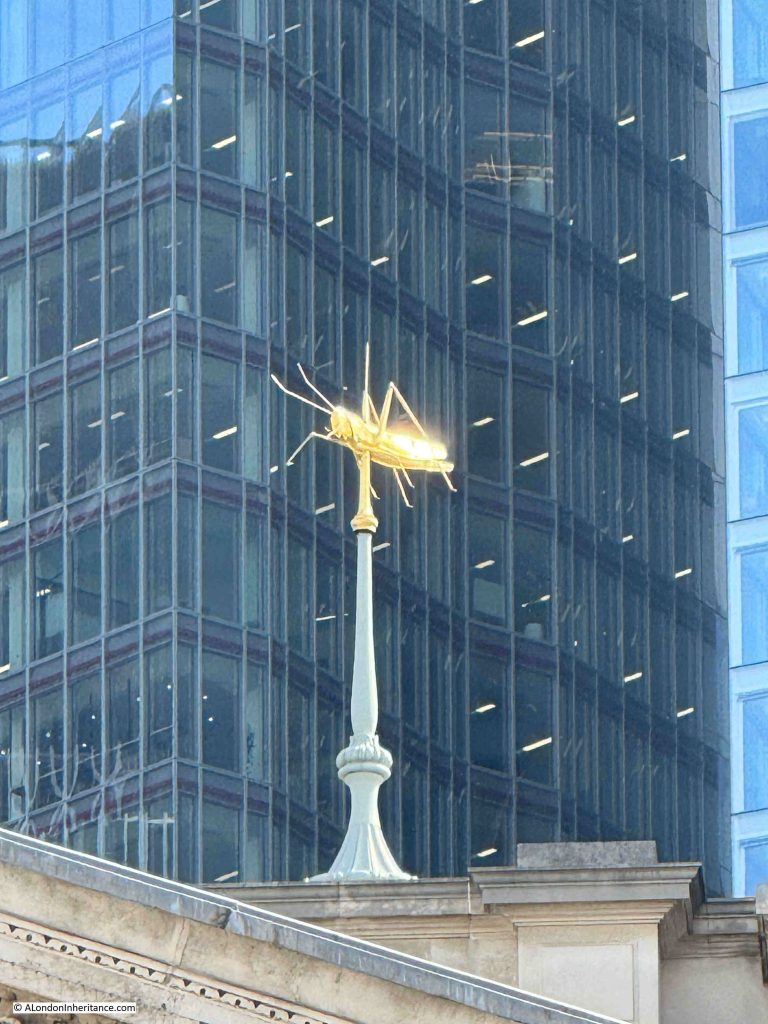
So why does the name Gresham, and the symbol of a grasshopper appear both in Holt and in the centre of the City of London?
Firstly, Holt is in the far north of the county of Norfolk, not far from the North Sea coast, and surrounded by agricultural land. The following map shows the location of the town of Holt (© OpenStreetMap contributors):
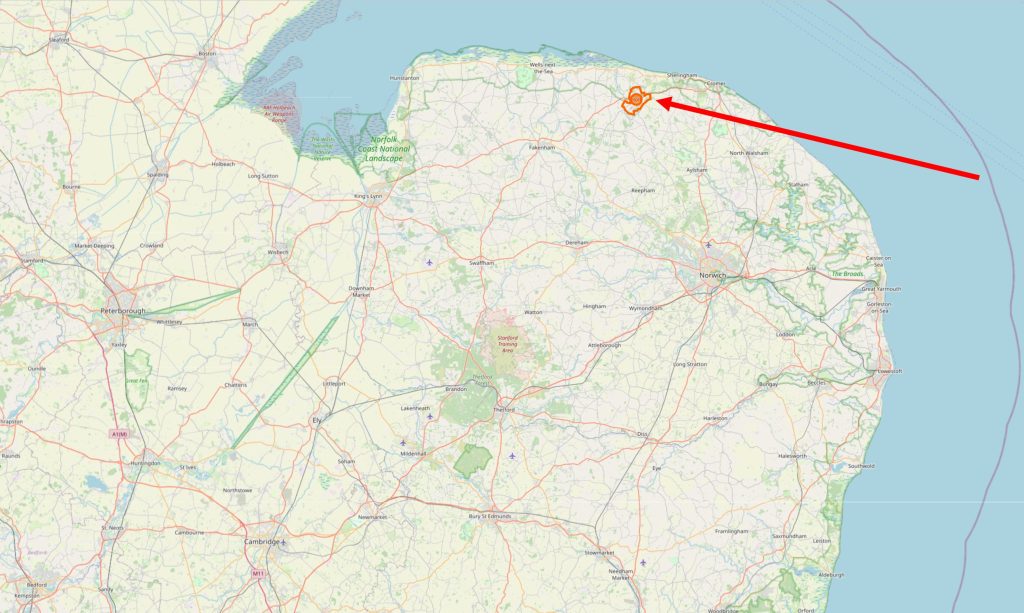
The Gresham family had long held land in this part of Norfolk, having descended from Ralph de Braunche who fought with, and came over during William the Conqueror’s invasion of England in 1066.
He was granted land in Norfolk (as part of a great transfer of land ownership from the earlier pre-conquest Saxon land owners, to those who had supported William during and after 1066), and at some point in the following years, the family took the Gresham surname from the village in north Norfolk where the family were land owners, and near where they had settled in the 14th century.
In the following map, I have ringed Holt in blue to the left, and the village of Gresham in red, to the right (© OpenStreetMap contributors):
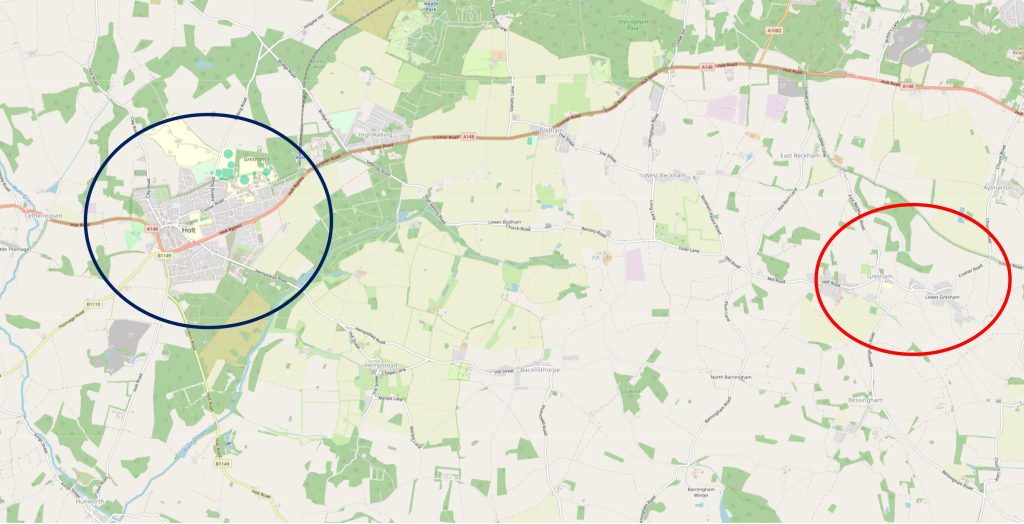
We did not get a chance to visit the village of Gresham, however Geograph has an image of the village name sign, which also has a Gresham grasshopper:
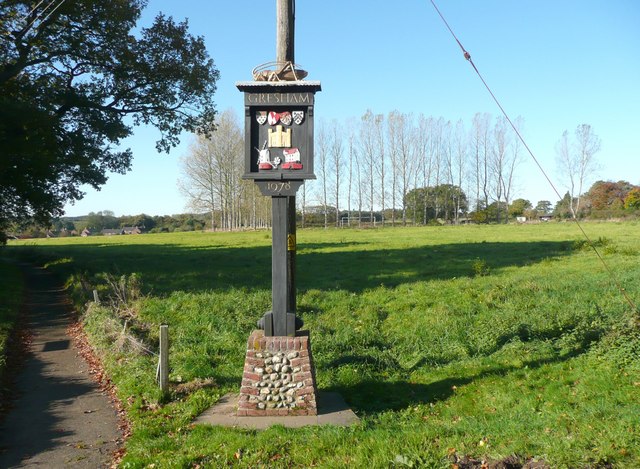
© Copyright Humphrey Bolton and licensed for reuse under this Creative Commons Licence. Image source: https://www.geograph.org.uk/photo/1051802
In the early 15th century, members of the family had settled in Holt, and had built a Manor House at the eastern end of Market Place, on the site of the current Pre Prep School shown in the photo at the start of the post, and it was in this Manor House that Sir John Gresham was born, at some point around the year 1496.
His father was also a John Gresham, and as well as Holt, he was also involved with business in London, an involvement which would grow considerably in the following years.
Sir John Gresham had been apprenticed to John Middleton, a textile dealer in the City of London when he was 14, and when he was 21, he became a member of the Worshipful Company of Mercers.
He became heavily involved with the Tudor Court of Henry VIII and helped Thomas Wolsey and Thomas Cromwell with trade, and his provision of finance, arms and men in support of Henry VIII’s military ambitions helped build his popularity with the King.
He was also Lord Mayor of the City of London in 1547.
Returning to Holt, it was Sir John Gresham that founded the school which still exists to this day, and the need for a school appears to have been due to a gap in local education left by the Dissolution of the Monasteries in 1539.
In the early 16th century, much formal education was provided by religious establishments, and Sir John Gresham had attended the school at Beeston Regis Priory. This school was closed in 1539 during the Dissolution of the Monasteries, and there was no other option to replace the Priory.
The first school was in the family manor house which had been extended specifically for the purpose, and Letters Patent from Queen Mary in 1555 provided royal approval for the school.
He would not though live to see the formal opening of the school as he died in his London home on the 23rd of October 1556, a short time before the school opened.
He was buried in St. Michael’s Bassishaw, a parish church in Basinghall Street, however the grave, monument and church were destroyed during the Great Fire of London in 1666.
Sir John Gresham, founder of the school in Holt, member of the Mercer’s Company, Lord Mayor of the City of London:
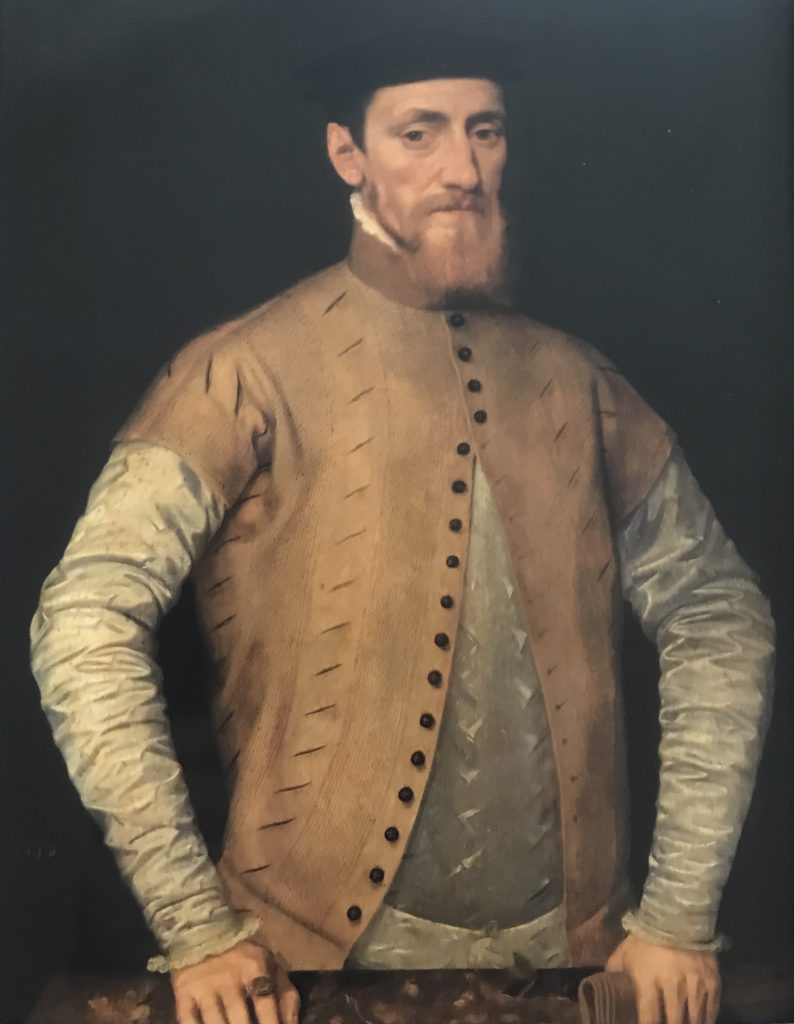
Attribution: Flemish school, artist unknown., Public domain, via Wikimedia Commons
Whilst Sir John Gresham is mainly remembered in the town of Holt as the founder of Gresham’s school, it is his nephew, Sir Thomas Gresham who left a mark on London that is still very much in evidence today.
Sir John Gresham’s brother was Sir Richard Gresham.
He seems to have followed a very similar career path to his brother John as he was a member of the Mercer’s Company, Lord Mayor of the City of London in 1537, involved in the Court of Henry VIII, and a significant trader in goods with the Low Countries, the area of Europe now mainly occupied by the Netherlands, Belgium and Luxembourg.
He also provided goods for the King, and Richard amassed a significant fortune as a result of his trading activities.
Richard had four children, one of whom was the future Sir Thomas Gresham, and is believed to have been born in 1519 in Richard’s house in Milk Street in the City of London.
Sir Thomas Gresham was also a Mercer and had been apprenticed to his uncle Sir John Gresham. He would go on to amass far more wealth than his father or uncle, engaged in trade throughout London and Europe, and in many ways he was one of the original driving forces in establishing the City of London as one of the major financial and trading centres in the world.
He would serve three different monarchs – Edward VI, Mary I and then Elizabeth I, and what is intriguing was the apparent ease of transition between different monarchs as he seamlessly went from the staunchly Catholic Mary I to the Protestant Elizabeth I.
As well as a house in the City of London, he also spent considerable periods of time over a period of around 30 years, living in the city of Antwerp, then the major trading hub of Europe, and a city which had a Bourse, a place where a trading and credit market would operate, and where traders in both goods and finance would meet to agree loans, make foreign exchange trades, trade goods etc. all the different types of trading activity that would soon make London the main trading hub of the world.
Gresham seems to have had a remarkable memory and ability to calculate trades, and would make money on the small differences between currencies, borrowing and lending rates etc. He also attempted to influence rates, for example by providing friendly merchants with amounts of money so that they could make a trade which would raise or lower the value of the currency being traded, just in advance of when Gresham had to make a trade.
The earlier trade changing the rate at which his later trade would take place in a way that was beneficial to Gresham, was indicative of how Gresham would try and manipulate markets to his own advantage.
He was apparently extremely self confident to the point of arrogance, and would do everything needed to get a good outcome from a trade, a loan or borrowings. An example of his approach to raising capital is through his marriage in 1544 to an apparently wealthy widow, Anne Ferneley, whose husband, a wealthy merchant had died at a young age.
Thomas Gresham:
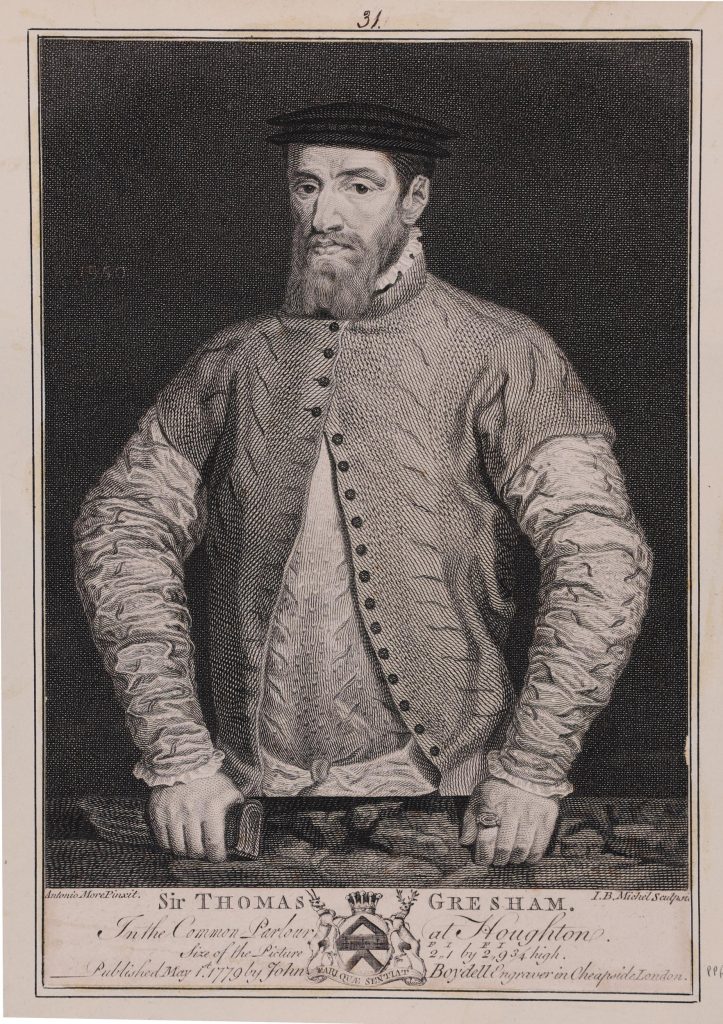
(© The Trustees of the British Museum. Shared under a Creative Commons Attribution-NonCommercial-ShareAlike 4.0 International (CC BY-NC-SA 4.0) licence.):
His time in Antwerp was not all about trade. He became fluent in multiple European languages, experienced the impact and benefits of the renaissance, and saw the benefits that a formal education had to commercial trade. He built up an extensive network of informants across Europe, and he also understood the importance that having a Bourse would be to the trading life of a city. All themes that would later influence his plans for the City of London.
Sir Thomas Gresham, painted by an Unknown Netherlandish artist, circa 1565:
Attribution: Attribution-NonCommercial-NoDerivs 3.0 Unported. Source National Portrait Gallery, London
Gresham was involved in so many financial innovations, from ways to improve personal accounting through to how the country’s finances were managed and initiatives to improve the global standing of England’s currency.
One example of the later, was with the strength of Sterling.
Today, the value of the UK’s currency is more dependent on measures such as interest rates, trade deficits, GDP etc. however in the 16th century, the value of the currency was linked to the metal in which the coin was minted, and much of England’s coinage was viewed as “debased” – meaning that the face value of the coin was more than the value of the metal in which it was minted.
A common cause of debasing a coin was through clipping, where small pieces of a coin around the edge, were clipped off. Doing this to a sufficient number of coins provided a large amount of valuable metal, however the value of the metal of the clipped coins was now less than their face value.
When using coins for trade, such as to purchase goods for import, continental traders were not happy to accept English coins without weighing and testing their metal content, to ensure they were getting the value of payment expected. This took time, and reduced the value of English coinage to foreign traders.
Initiatives had been tried to recall all the coinage in circulation with little success, and during Elizabeth I’s reign, Gresham was the brains behind the plans for Secretary of State William Cecil to recall and remint the currency in circulation, as a way of restoring the correct value to the country’s coinage.
The concept of debased coinage replacing coinage that aligned with face value was later framed as Gresham’s Law – “Bad money drives out good”, although the issue around debased coinage, and its impact on coinage as a method of trade, store of value etc. had been known for many years before Gresham.
Thomas Gresham was also a champion of double-entry book keeping and he appears to have been one of the first to have used and introduced the technique into England.
Double-entry is where separate entries are written using two accounts for credits and debits, and was a method that Gresham encountered during his time in Antwerp. The technique was used considerably by European merchants, and appears to have originated with Italian merchants.
Gresham’s double entry journal covering the period from the 26th of April 1546 to the 10th of July 1552 has survived and shows how meticulous Gresham was in using this accounting method for his own, personal finances.
The period covers part of his time as a trader in Antwerp, when he was bringing in goods from England to trade and sell, as well as goods he purchased in Antwerp to sell in England.
Gresham called the profit and loss account in his ledger his account of “damage and gain”, which is a rather good way of describing losses and profits.
Another print of Thomas Gresham, and what I like about this print is the ship to his right. Paintings, prints etc. would often include things that were important of representative of the person portrayed. The print may be symbolic of Gresham’s interest and influence in global trade and commerce. The print also records his founding of Gresham College:
(© The Trustees of the British Museum. Shared under a Creative Commons Attribution-NonCommercial-ShareAlike 4.0 International (CC BY-NC-SA 4.0) licence.):
It is impossible to overstate Gresham’s importance to the financial health of the country, the rapidly growing importance of the City of London as a financial and trading centre, free trade, trading and accounting techniques etc. But there were many other ways in which Thomas Gresham had a considerable impact on the future of the City of London. One of which is still very active and follows its founding principles, the second is still physically here, but no longer has the purpose that Gresham intended. This is:
The Royal Exchange
In the 16th century, trading in the City of London was carried out on the street, or in the small houses and shops that lined streets such as Cornhill and Lombard Street, and there had been calls for a dedicated place where people could meet to trade, agree prices, and generally conduct business of all types.
Sir Richard Gresham first became aware of the opening of a Bourse, or trading centre in Antwerp, one of the major trading centres of Europe. Sir Richard pushed for such a building to be constructed in the City of London, however despite the project receiving royal support, there was no suitable space available.
The proposal was taken up by his son, Sir Thomas Gresham, who was also very well aware of the Bourse from his many years in Antwerp, where he worked on behalf of the Crown, as well as trading on his own account.
Gresham put his own money into the project, along with significant funding generated through public subscriptions, and which supported the purchase of a block of land in Cornhill Street, a short distance from what is now the Bank junction, and occupying the same site as the current Royal Exchange.
The building was opened by Queen Elizabeth I in January 1570, and it was the first, large, Renaissance style building in the City. Gresham had intended that the new Exchange was named after him, however at the opening, Elizabeth I gave it the name Royal Exchange, and Gresham obviously had to retain the Queen’s favour, so the Exchange retained the name Royal.
Sir Thomas Gresham’s Royal Exchange:
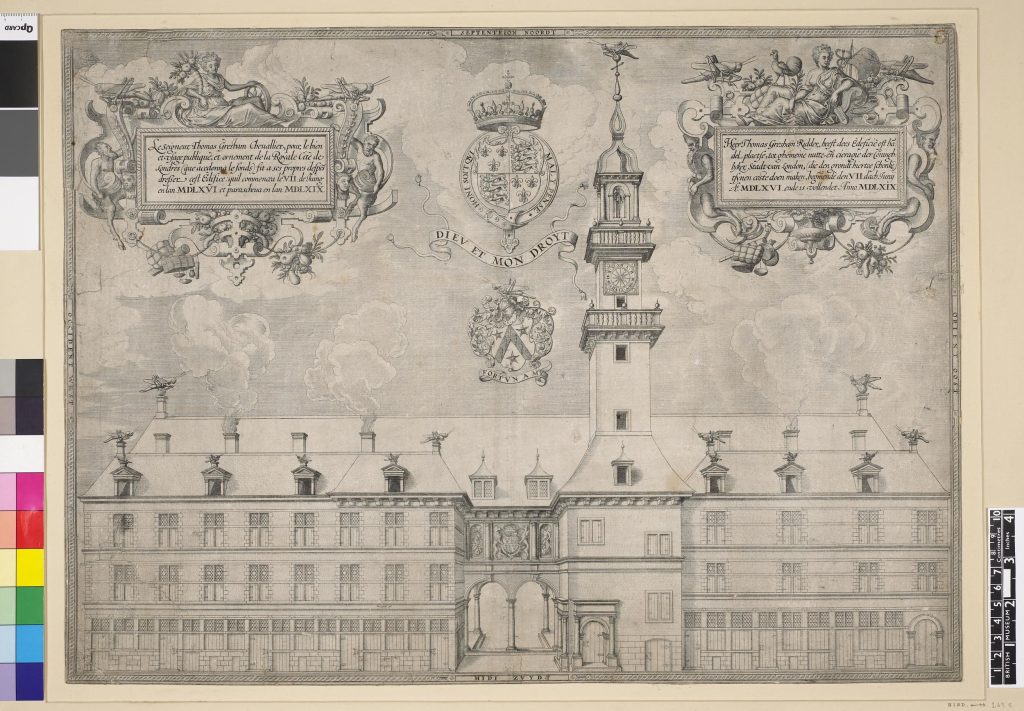
(© The Trustees of the British Museum. Shared under a Creative Commons Attribution-NonCommercial-ShareAlike 4.0 International (CC BY-NC-SA 4.0) licence.):
On top of the tower in the above print is a grasshopper, as still to be seen on the current Royal Exchange, and at Gresham’s School in Holt, Norfolk. The following is an enlargement of the grasshopper from the above print:
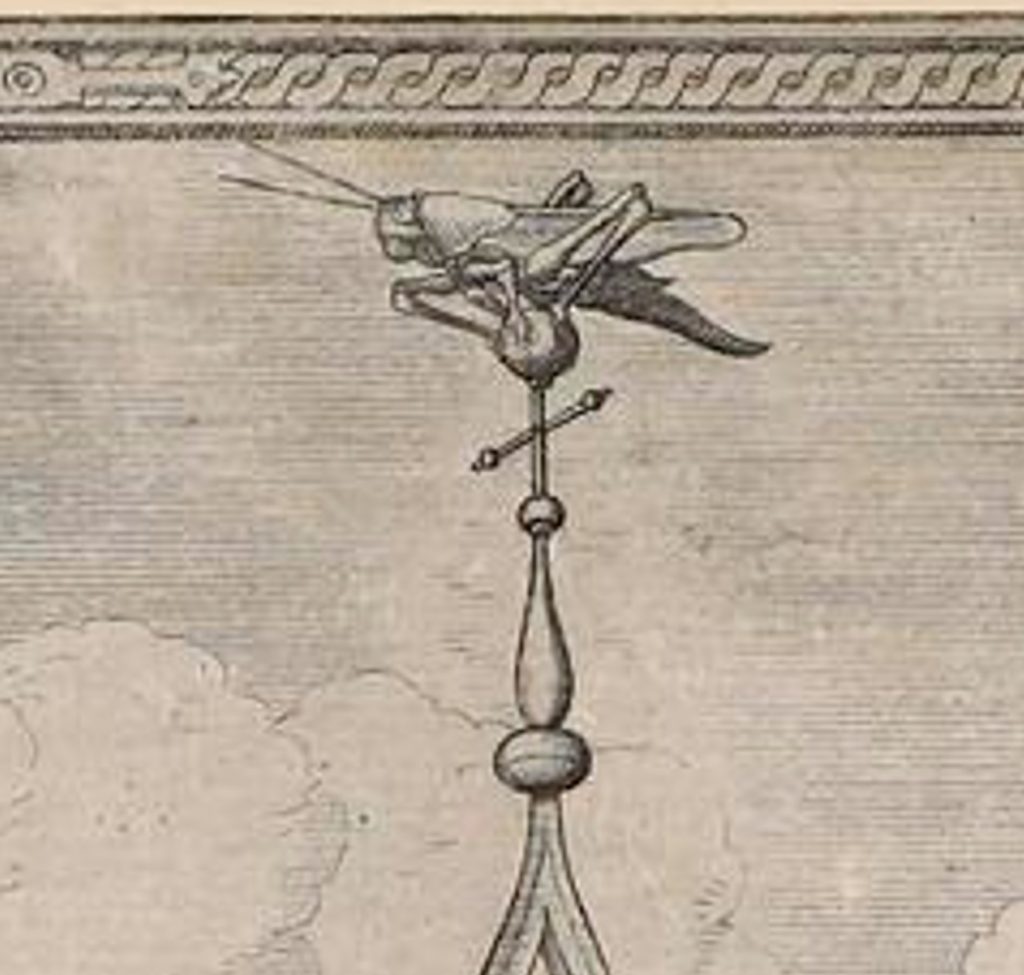
The purpose of the Royal Exchange was to provide a place where trades could be carried out, where people could meet, offices could be rented etc. and followed the approach Gresham had seen in the Antwerp Bourse.
Providing a central place for face to face trading was more efficient than being distributed across the city, and the opening of such an impressive Exchange greatly enhanced the City of London’s growing reputation for trade, commerce and finance.
This first Royal Exchange was destroyed during the 1666 Great Fire, and was soon rebuilt following a design by Edward Jarman.
The second Royal Exchange, from a print of the late 17th / early 18th centuries, again with a grasshopper on the top of the tower:
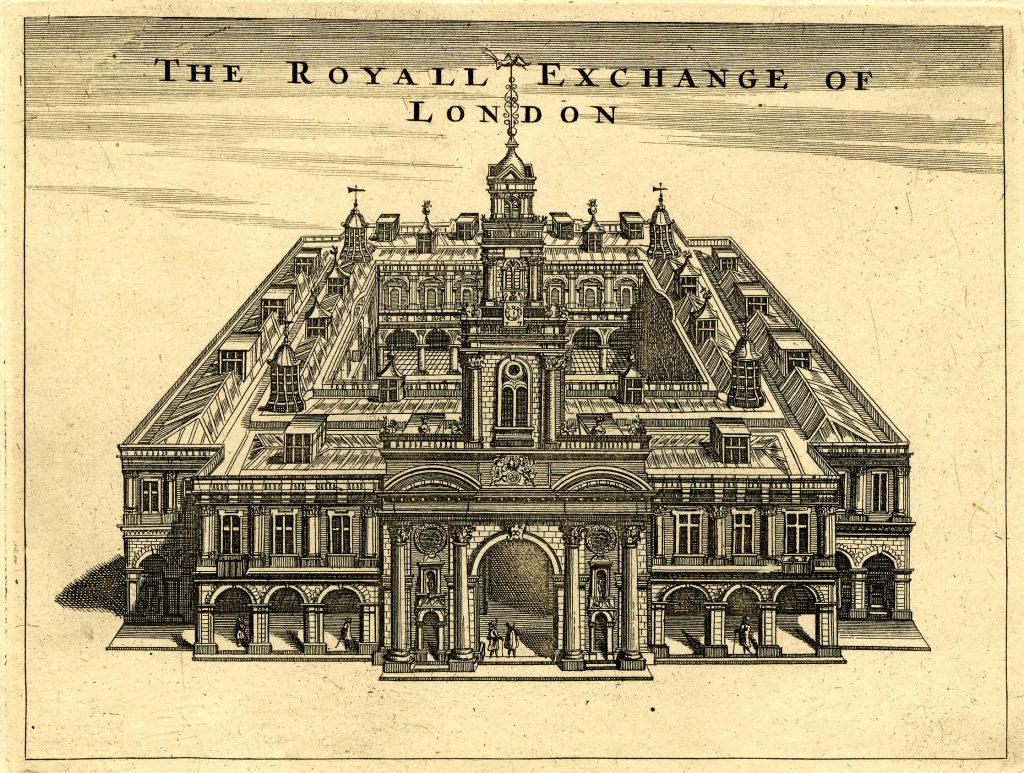
(© The Trustees of the British Museum. Shared under a Creative Commons Attribution-NonCommercial-ShareAlike 4.0 International (CC BY-NC-SA 4.0) licence.):
This second iteration of the Royal Exchange lasted until 1838, when, as with the first, it was also burnt down.
The Royal Exchange was soon rebuilt, following a competition to find a design. The competition was won by the architect William Tite, who seems to have also been one of the judges of the competition.
Tite’s design follows the layout of the original two Exchanges, with a central courtyard surrounded by four wings of offices and shops, however Tite’s design changed the main entrance from facing onto Cornhill, now to face onto the Bank junction.
The buildings that had once occupied the triangular space in front of the Exchange were demolished, and it was opened up so that the full Corinthian portico of the new building faced directly onto the Bank junction, and seems almost to mirror the Mansion House across the junction.
The new Royal Exchange was opened in 1844 by Queen Victoria, and this is the building that we still see today, and which retains the grasshopper shown in the photo earlier in the post.
The use of the Royal Exchange as a place for general, face to face trading and commerce faded in the late 19th century as specialist trading exchanges were set up to provide a place where trades could be made, meetings held, and news received in a specific and related set of commodities or services.
In 1939, the building became the offices of the Guardian Royal Exchange Assurance Company, and in the late 1980s, the company made substantial changes to the interior of the building, which included replacing the original roof, and an additional upper floor.
In 2001, the building was again refurbished, and reopened as a centre for luxury shops, restaurants and bars, and the Royal Exchange retains this function today.
Although Sir Thomas Gresham was instrumental in the founding and construction of the Royal Exchange. it never carried his name, just the Gresham family’s grasshopper symbol as a weathervane. His name though has been, and still is, recorded in a number of London places, including the 1845 Gresham Street, which was a rebuilding of earlier streets Lad Lane and Cateaton Street.
Gresham’s name is also still in use with a significant London educational institution, in which Gresham was again instrumental in founding. This is:
Gresham College
In Antwerp, Sir Thomas Gresham experienced the way that an education in trade, scientific and technical developments would benefit the commercial life of a country to such an extent that through his Will, in 1597, Gresham College was established, to be run and administered by the City of London Corporation and the Mercer’s Company.
Gresham College was an attempt by Gresham to provide an education to those of the City, traders, merchants and mariners, who had not had a formal education.
The college provided free lecturers that were delivered by Professors appointed by the City of London Corporation and the Mercer’s Company.
The Mercers appointed professors in Law, Physic and Rhetoric, whilst the City of London appointed professors in Divinity, Astronomy, Geometry and Music.
Until 1768, the College was based a Sir Thomas Gresham’s former home at Bishopsgate. When the site was redeveloped, it moved to the Royal Exchange, and then to a new, dedicated building on the corner of Gresham Street and Basinghall Street, the college later held lectures at a number of different locations, ending up at Mercers Hall, before finally moving to the current location of Barnard’s Inn Hall in 1991.
Remarkably, given that Gresham College is over 400 years old, the approach is basically the same as when the college first started.
Professors are appointed for a three year term and each professor, along with visiting professors, will provide free lectures during their term.
Lectures can be attended in person, or watched online. Many of the past lectures are also available to watch online.
Lectures cover an extremely varied range of subjects, ranging from “How It Ends: What We Know about the Fate of the Universe” by Professor Chris Lintott, who is Gresham Professor of Astronomy:
through to “Modern Pagan Witchcraft” by Professor Ronald Hutton, the Gresham Professor of Divinity:
A could be expected, there is also a very large archive of lectures on London’s history, as well as lectures on Sir Thomas Gresham.
The website of Gresham College can be found by clicking here.
The Watch Now option along the top of the page takes you to a page where a sample of lectures are listed, as well as a topic list along the top of the page.
There is also a search option, and as an example, entering the term “London” brings up a large list of London related lectures.
The last lecture of 2025 is this Wednesday, the 17th of December, and is on the subject of a Tudor Christmas. You can book to attend in person, or to watch the lecture live online.
If you have finished reading all the back issues of London Archaeology mentioned in last week’s post, then the lecture archive of Gresham College provides another wonderful source of learning on not just London, but so many other different aspects of the wider world.
It is a wonderful resource, all thanks to Sir Thomas Gresham.
Returning to Holt, and as you walk back west along Market Place from the site of Gresham’s old manor house, and at the end of High Street, there is a wonderful Grade II listed, mid-18th century milestone:
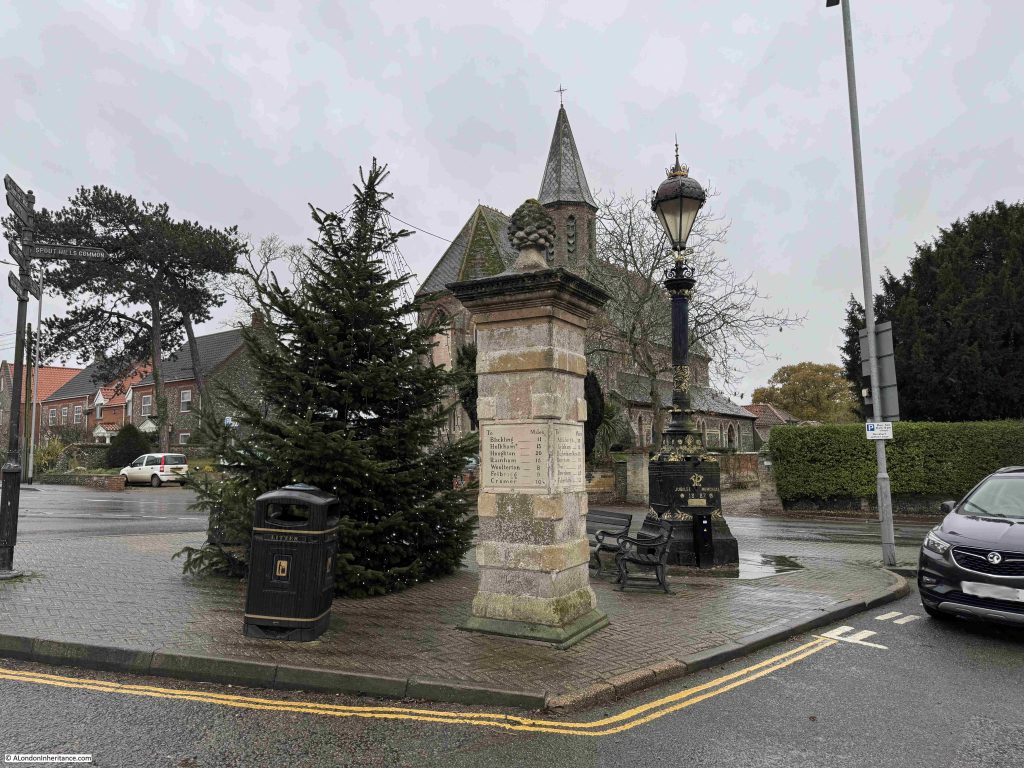
I wondered if London was listed on the milestone, however all the miles and destinations were to local towns and villages, with the furthest being 41 miles away:
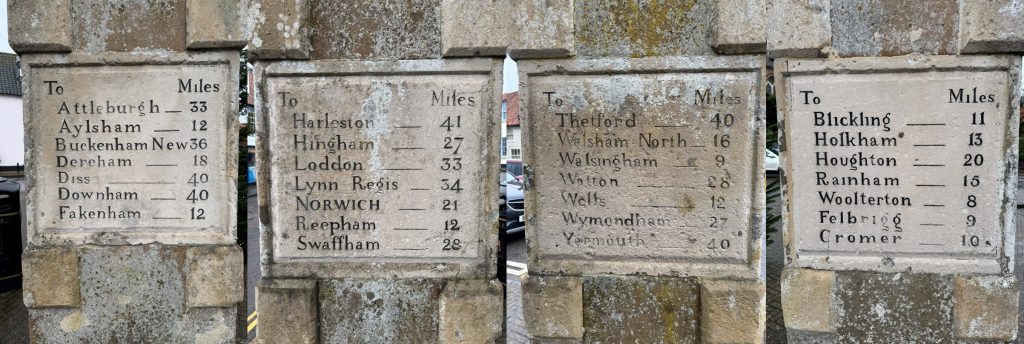
An indication of how relatively remote Holt was at the time, and a long way from any direct roads to London, with a trip to Norwich probably being required to pick up the main road to London.
The Gresham’s were a fascinating family. Whilst Sir John Gresham was active in London, and a Lord Mayor of the City of London, his lasting monument is Gresham School in Holt.
It was his nephew Sir Thomas Gresham who left a lasting reminder of his life in London, apparently one of the richest and most well connected men in England at the time.
If you would like to follow up on the story of Sir Thomas Gresham, there are some lectures on his life in the collection at Gresham College, and the book Gresham’s Law by John Guy (who also presents some of the lectures), is excellent:
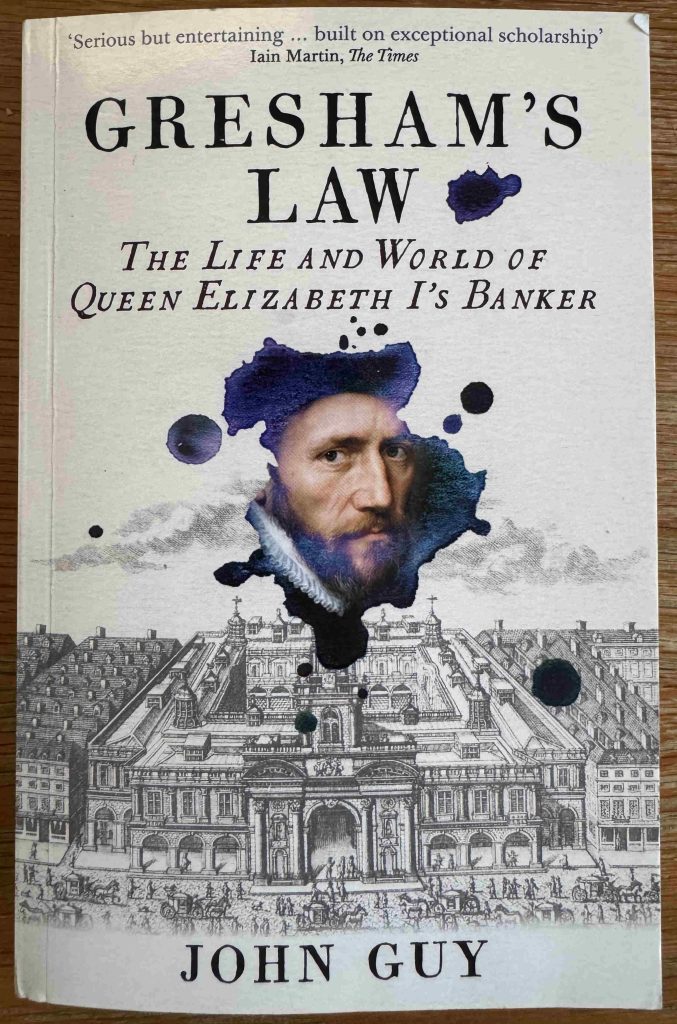
In the game of who from history you would invite to a dinner party, Gresham would be high up on my list, although by the end he would probably have left with a large profit after selling me some wool and providing a loan – all at rates beneficial to Gresham.

